

30+ Portugal Travel Tips for First Timers & Must Knows Before You Go
Last Updated: July 20, 2023
*FYI - this post may contain affiliate links, which means we earn a commission at no extra cost to you if you purchase from them. Also, as an Amazon Associate I earn from qualifying purchases. Check out our Privacy Policy and Disclosure. for more info.
Take a single glance at Portugal and you’ll soon leap to the same conclusion as its millions of doting visitors: this is one of those destinations that seems to have it all.
From verdant valleys and golden beaches to fairytale castles and buzzy cities, visitors are swimming in choice as much as they are in sweet, custardy pastries.
But it’s not all custard tarts and photo opps. The truth is, Portugal often catches first time visitors off guard with random culture shocks, unexpected tourist traps and (sadly) even pickpockets and scams.
Luckily, I’ve learned all these the hard way (over 3 week-long trips) so you don’t have to.
So, from tactical tips for itinerary planning to assorted mistakes to avoid, here are my top Portugal travel tips and must knows for first time visitors. I hope you find them helpful!

Save this list of Portugal Travel Tips for later!
You’ll be very glad you did.
1. Go beyond the most famous Portuguese destinations
We’ll start with the basics: when planning your trip to Portugal, remember that there’s a lot to see beyond the coastal hotspots of Lisbon, Porto, and the Algarve.
Portugal is a (satisfyingly rectangular) country composed of 18 districts and two autonomous regions, with a myriad of places to visit beyond the most frequented, from its many historic cities up North (e.g. Braga, Guimares, Lamego) and inland (e.g. Coimbra, Evora, Elvas), to its spectacular nature in Peneda-Gerês National Park and on their many islands.
SO, all that to say, if time permits, definitely expand your itinerary beyond the most famous sights, because this will allow you to experience a bit more of the country, while dodging some of the popular areas’ notorious crowds at the same time.

2. Public transport is fine for city to city travel, but you’ll need a car for more remote areas
I’ve never rented a car in Portugal, and have found the public transport system to be simple and easy for getting from city to city.
But, truthfully, the most flexible way to get around and potentially explore off the beaten path is renting a car. Doing so will give you the best opportunities to control your own schedule, and find more remote areas like quieter nature spots or beaches (especially in the Algarve).
I did find the lack of car to be quite limiting when we wanted to get out to less popular areas, so if exploring more offbeat spots is a priority to you, then a car rental is something to consider.
This Portugal tip comes with a big disclaimer however: beware that driving in Portugal involves many tolls and a lot of close encounters with the country’s most notorious danger….. Portuguese drivers.
For a potential ‘in-between’ option then, I’d suggest looking into taxis/hiring a driver. I’ve found these services to be quite affordable in Portugal, with Uber being an especially easy option.

3. Consider flying in/out of different airports
In terms of arriving in Portugal, there are 3 international airports: Lisbon (LIS), Faro (FAO) and Porto (OPO).
And after personal experience at each of these airports, I have the following planning tip to offer: if you are visiting multiple destinations, consider booking flights into one city and then out of another (provided the price difference isn’t eye-gougingly painful).
This is because Portugal is small, but many of its most popular destinations aren’t that close together, so getting around does still take time, hence why you’d ideally want to avoid having to double back.
In the past, I’ve flown into Porto for instance and then spent 10 days going from there down to Lisbon, then down to Lagos in the Algarve and then departing via Faro Airport.
This made for a much smoother journey than going all the way back up to Porto, which meant more time spent soaking in views like these:

4. On a budget? Look into Europe’s low cost airlines
If you’re travelling Europe on a budget, then here’s a big Portugal travel tip: Portuguese airports are very well serviced by budget airlines like RyanAir and easyjet .
SO, if you’re planning a big Europe trip involving other countries, it may be worth looking into whether you can find cheaper flights into other European destinations, then flying into Portugal through a budget airline. This could potentially save you hundreds of euros!
You might want to check out my cheap flights to Europe guide for more.

5. Use the TAP Portugal Stopover to Save Money
Another potential money saver is looking into a TAP Portugal Stopover.
TAP Portugal is an airline that offers a really great deal where you can organize a free stopover in either Lisbon or Porto for up to ten nights en route to another destination.
So, if you plan properly, you can essentially get two destinations for the price of one!
NOTE: While this tip could potentially save you money, beware that TAP Portugal doesn’t have the best reputation, and is notorious for delays/other issues. One of my friends living in Portugal even told me that people say TAP stands for ‘Take Another Plane’ so be sure to keep these potential drawbacks in mind before booking.

6. Avoid visiting Portugal in July and August
Now as for when to visit Portugal, a good rule of thumb is to avoid July and August. I say this in my general Europe tips post for pretty much every destination.
This is when the crowds and heat are at their worst, with hyper inflated prices to match.
The same applies for major school holidays like Easter because Portugal is a very popular family vacation spot among Europeans.
Instead, aim to visit between May – June or September – October. I’ve been to Portugal before in both March and April and found it to be quite rainy both times, so shoulder season would be more ideal for dodging both crowds and biblical downpours.
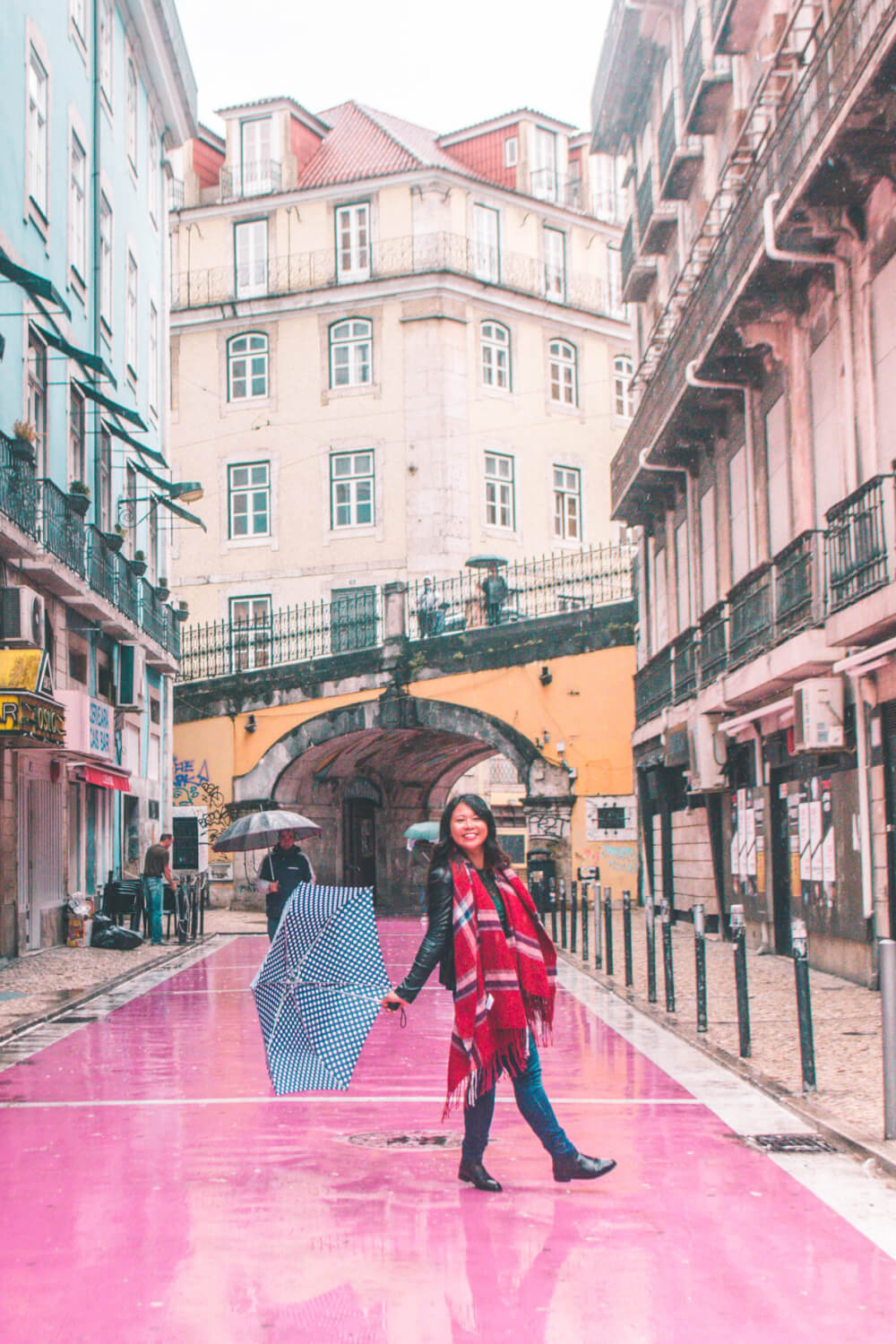
7. Beware that there will still be crowds in shoulder season
On that note though, I don’t want you to underestimate how crowded it can get in Portugal, even in shoulder season.
Portugal may still be seen as an up and coming destination among North American travellers, but it has been a go-to vacation spot among Europeans for YEARS and years and years…
So don’t be surprised when there’s a lot of people around. Even in March. or April. Sadly, there’s no true ‘off-season’ in Portugal these days!
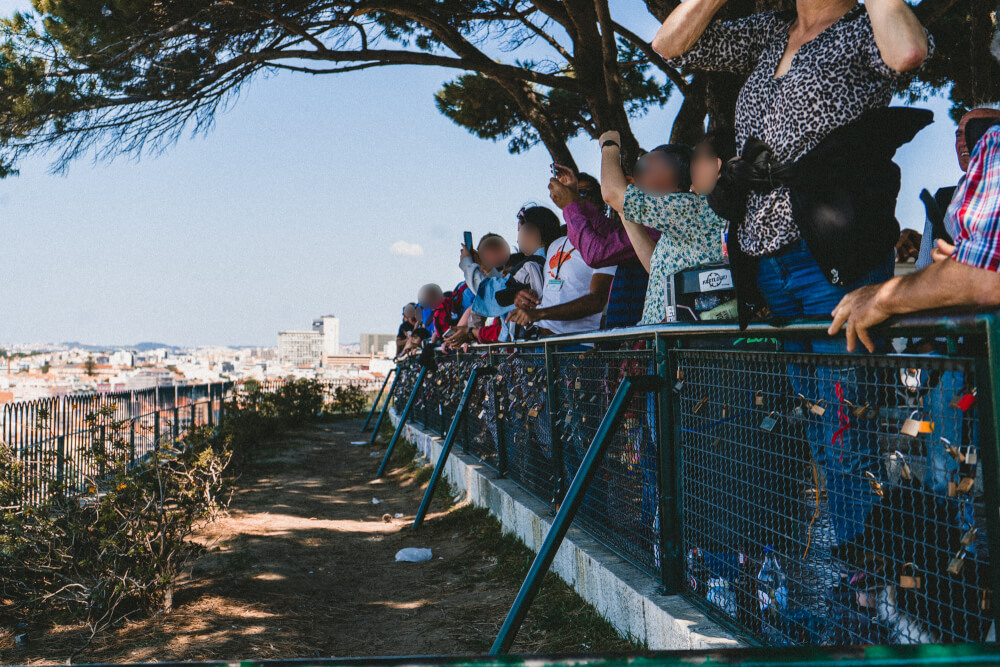
8. Book popular day trip destinations as overnight stays instead
Of course, in spite of the country’s frightening popularity, there are still ways to avoid crowds and outsmart your fellow tourists.
One of my top Portugal travel tips for this is booking popular day trip destinations as an overnight stay instead.
This will allow you to wake up really early to see the busiest sites before the day trip crowds arrive, and then enjoy them properly after they leave.
I did this for instance in Sintra, opting to stay for two nights instead of going as a day trip from Lisbon as most visitors do. The result? I was able to enjoy many of Sintra’s palaces without feeling like I was in a selfie stick mosh pit.
… So, I’d highly recommend doing popular day trips as overnight stays instead. Book early enough and sometimes accommodation in these areas is cheaper than in big cities!

9. Learn some Portuguese basics & have Google Translate handy
For first time visitors to Portugal, an immediate culture shock is often that English is not as widely spoken here as other tourist areas in Europe, especially among older residents.
And while getting with English is usually fine in larger cities, once you venture out into smaller towns, speaking no Portuguese can be a challenge… so I’d advise having Google Translate (one of my must-have Europe apps ) ready to go.
BUT more importantly: at the very least, you should learn how to say hello and thank you. So, memorize these! Tattoo them on your wrists:
- Hello is Olá, but it’s more common to greet according to the time of day so Bom Dia (Bong Dia) for good morning, Boa Tarde (Boa Tarht) for good afternoon and Boa Noite (Boa Noit) for good night
- Thank you in Portuguese is gendered, and the way you say it depends on if YOU are a man or woman. So men say Obrigado, women say Obrigada

10. Note that there’s differences between European and Brazilian Portuguese
Now, if you decide to go all-out and learn some Portuguese for your trip, it’s probably a good idea to make sure you’re learning European Portuguese pronunciation, as opposed to Brazilian Portuguese.
Like with most languages, Portuguese has various accents/dialects/variations, but I’ve heard the difference between European vs. Brazilian Portuguese can actually be quite stark, so to maximize your chances of being understood, try to make sure you’re learning European Portuguese.
One channel I came across that was great for this was Practice Portuguese, so give them a watch.
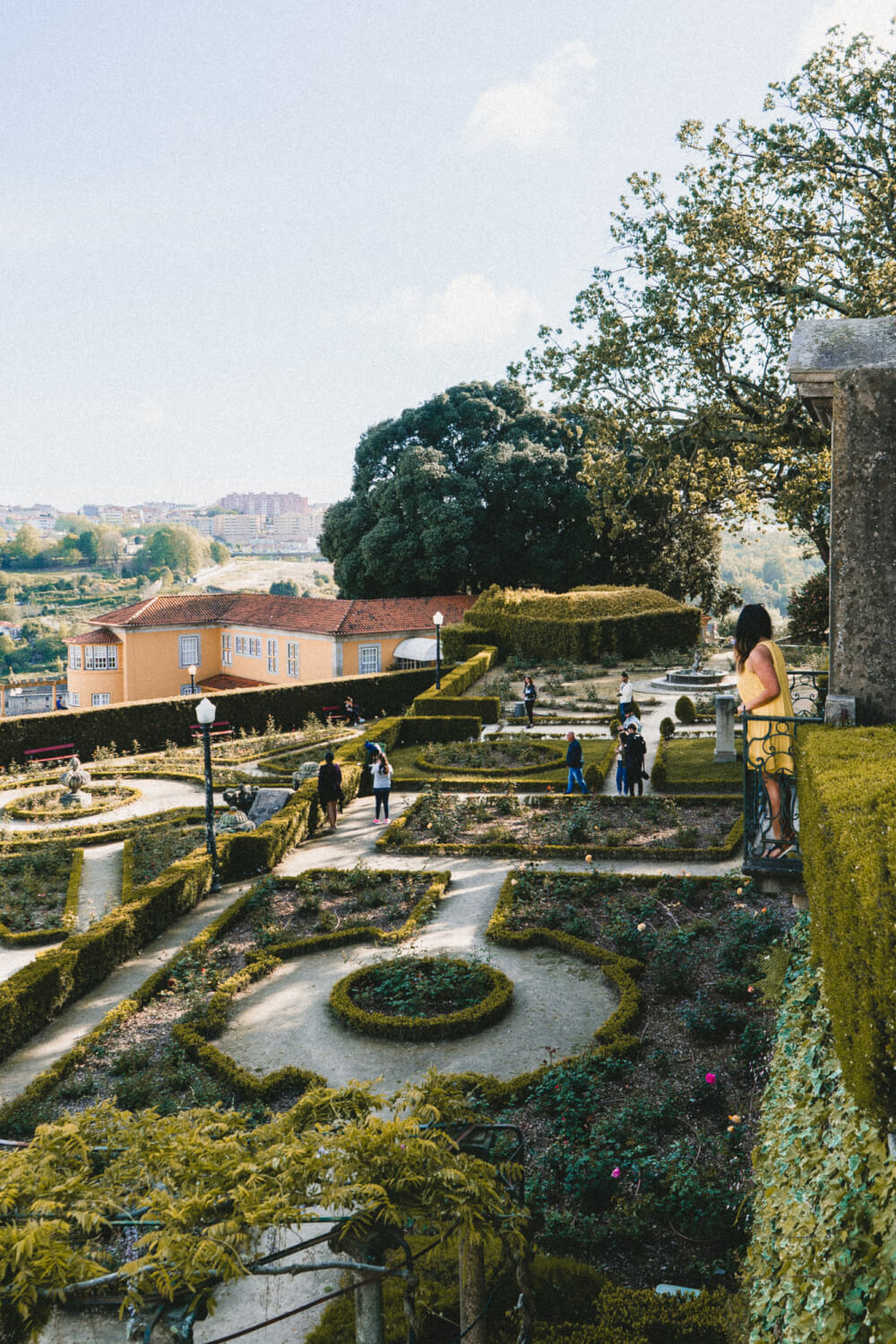
11. And… remember that Portuguese and Spanish aren’t the same
It feels silly that I have to say this, but I’ve anecdotally heard of many visitors busting out Spanish in Portugal, expecting to be understood.
Therefore let me clarify this most obvious Portugal travel tip: remember, in Portugal, they speak Portuguese, which may share some similarities with Spanish, but is an entirely different language of its own.
So keep in mind that while you may be somewhat understood, it’d be pretty rude to just randomly speak Spanish at people. So… let’s all just make a pact right now to not do that.

12. Learn to pronounce destination names in Portuguese
Apart from learning the basics in Portuguese, another important Portugal language tip is to learn how to properly pronounce your destinations in Portuguese.
This will save your life when it comes to asking for directions, because many places are pronounced differently to how they may be pronounced phonetically in English.
I found this video to be super helpful for this purpose.
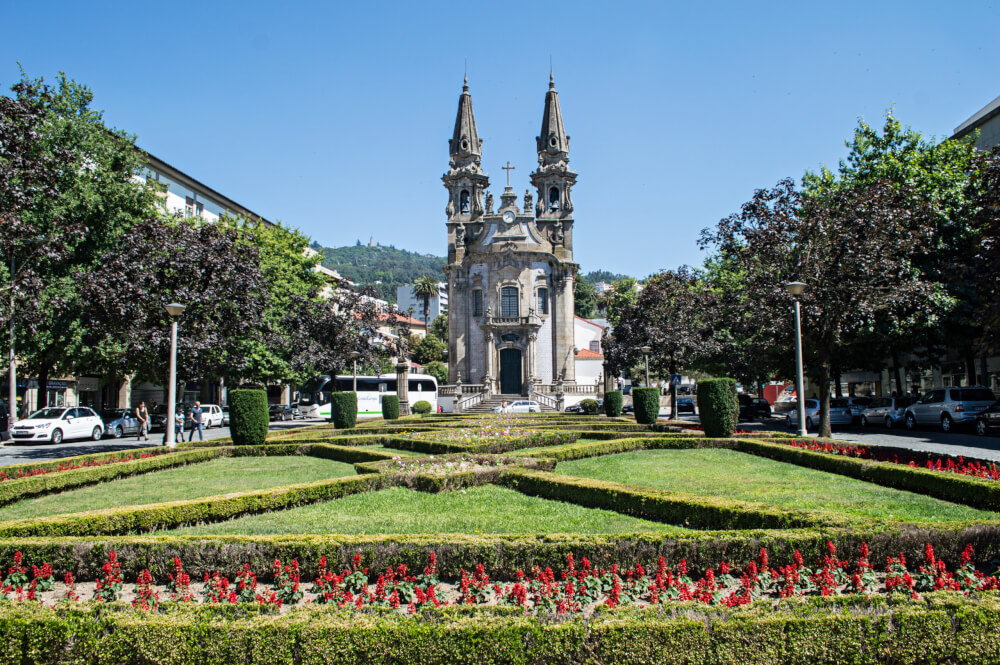
13. Beware of ‘Portuguese Time’
Another cultural difference is to beware of Portuguese time.
Unlike in some central European countries like Germany , Austria or Switzerland, punctuality isn’t really a huge priority in Portugal, and things tend to be more laidback in terms of time.
As a tourist, this probably won’t impact you that much unless you’re making plans with Portuguese friends, but just know that time is definitely a bit more flexible there, and so if you have tours that start a bit later than planned, just don’t be too surprised.
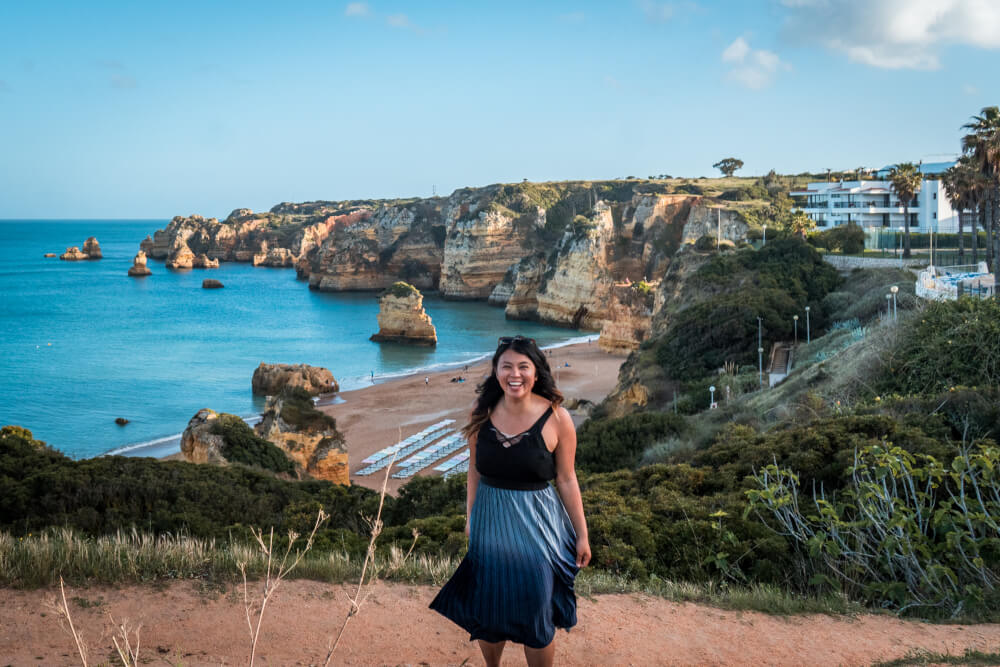
14. Be prepared to walk uphill a LOT
Now onto another Portugal travel tip that pretty photos fail to convey: prepare yourself for the leg workout of your LIFE.
Portugal is overall an incredibly hilly country, so you’ll be encountering plenty of ups and downs during your visit, especially if you visit Lisbon and Porto.
The cobblestones are also very slippery, especially when it rains so make sure you have good, solid footwear. Don’t say I didn’t warn you.
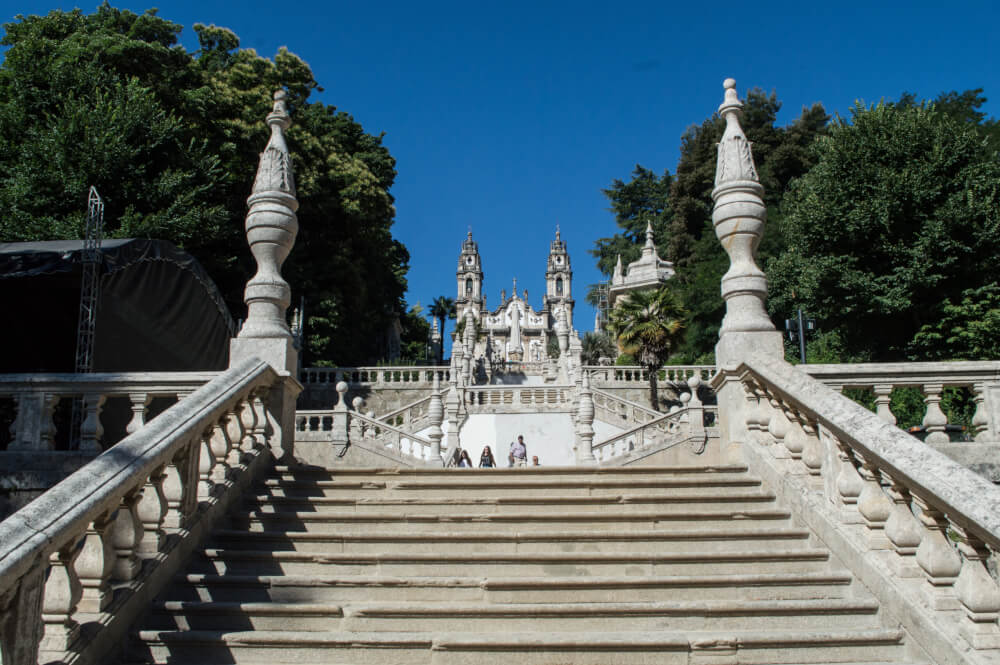
15. Consider attraction passes/cards to save money
If you plan to visit a lot of museums and paid attractions while you’re visiting Portugal, you should also look into attraction passes like the Lisbon Card and the Porto Card which offer you unlimited public transport and also admission to multiple attractions for one set price.
This can work out to a lot of savings, although to be honest, I’ve found many of the best things to do in these cities are free!
Especially if you’re not super into museums, this option may not be worth it, so just crunch the numbers and total up the price for your must-see attractions to see if the pass works out to be cheaper.
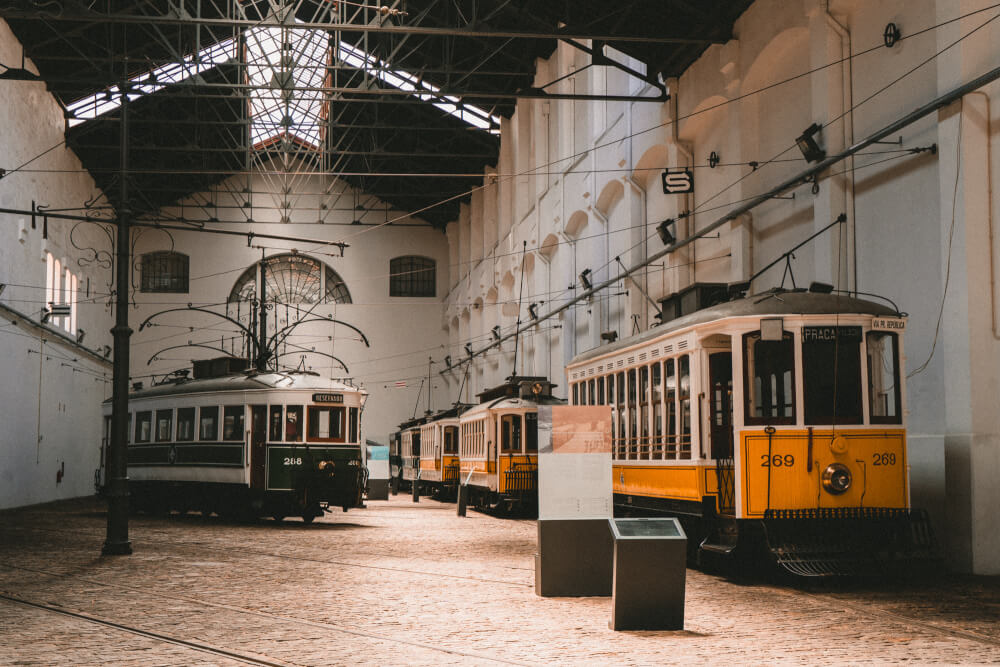
16. Beware of tourist traps
Okay, now it’s time for me to get a little controversial. I love Portugal as a destination, but I have to concede there are a lot of tourist traps (many of which are perpetuated by online guides/influencers) so I’m going to quickly share my opinion on some to be mindful of in the country’s most popular destinations:
Here are some tourist traps in Lisbon to keep in mind:
‘The Pink Street’: In real life, it’s just a street with restaurants and bars, and the pink isn’t nearly as perfect or vibrant as the photos make it look. It’s also usually crowded in the evenings… so don’t get your hopes up too much!
Tram 28: Super congested, super busy, lots of pickpockets, and you can enjoy the views much better if you just walk along the same route.
The Santa Justa Lift: Nice to look at, with great view from the top, but the lines are insanely long and you can easily walk up to the viewpoint for free and not have to wait in line. The best part of this attraction is really just seeing it and enjoying the view, so don’t think it’s a must do to actually ride it.
Here are some tourist traps in Porto to keep in mind:
Libreria Lello: Initially got famous because it was claimed that JK Rowling wrote Harry Potter there or was inspired by it (a claim she has now publicly denied). It is of course still a very pretty bookshop but unless you get there first thing in the morning or just before they close, it will not be magical at all because it is painfully crowded and almost impossible to get these nice photos without people in them because the shop is small. There’s also a 5 euro voucher you have to purchase to get inside, which gives you 5 euros off a purchase, but it’s not free to go in to take a look.
Private Property Viewpoints: Unfortunately, irresponsible Instagrammers have made a habit of taking photos from areas that are private property, so many of the most sought after views in the city aren’t actually open to the public. So, make sure you do your research before you set out!
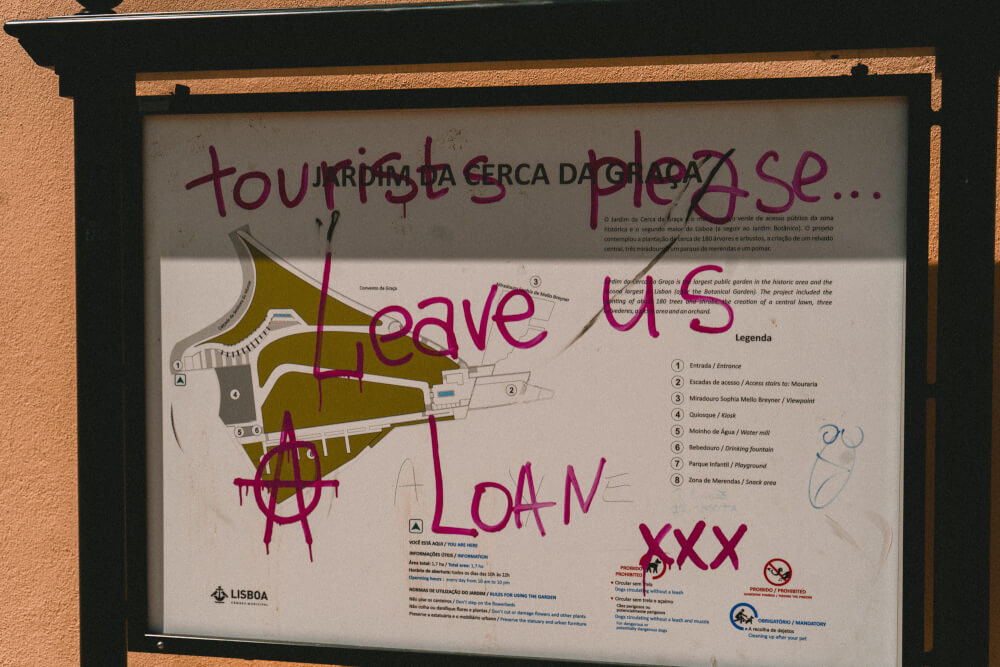
17. Look beyond social media to find unique hidden gems
So, on that note, it’s important to look beyond social media to find fun places to visit and cool activities in Portugal.
Most travel content about Portugal focuses on the same spots over and over, but the flip side of that is there are TONS of cool gems just everywhere that you can kind of discover along the way for yourself.
I would recommend doing research on Portuguese language blogs or check out local Portuguese bloggers to get an inside scoop on more offbeat places because there are so many, and I can’t wait to go back and see more for myself.
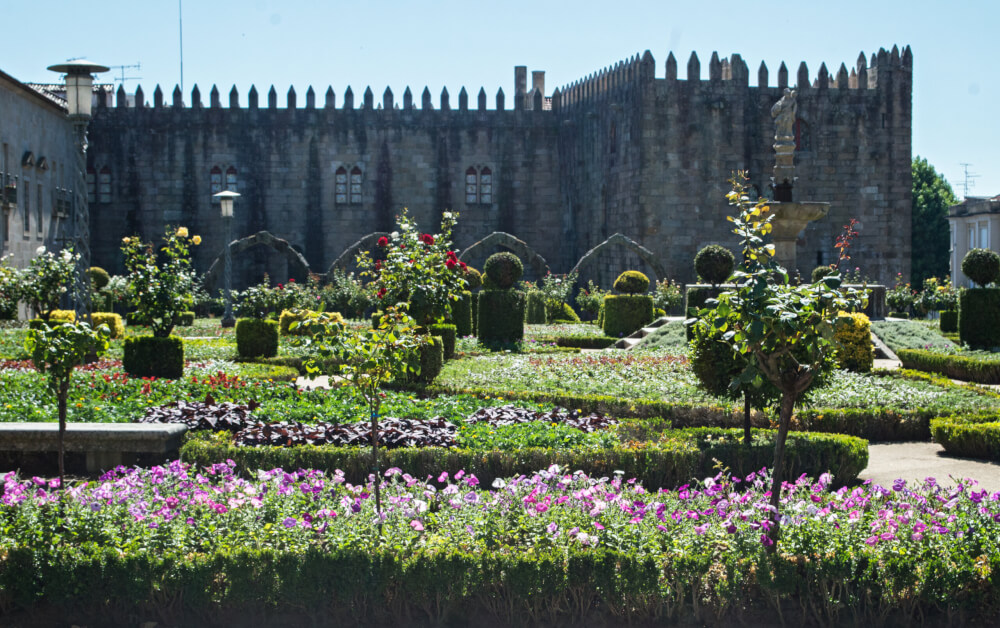
18. Seek out Miradouros everywhere you go
On that note, one really easy way to find beautiful places in Portugal is searching for Miradouros.
This is Portuguese for viewpoints and there are SO many of them especially in Lisbon.
So if you ever feel bored, just search Miradouro and go – guaranteed you’ll find a good view.
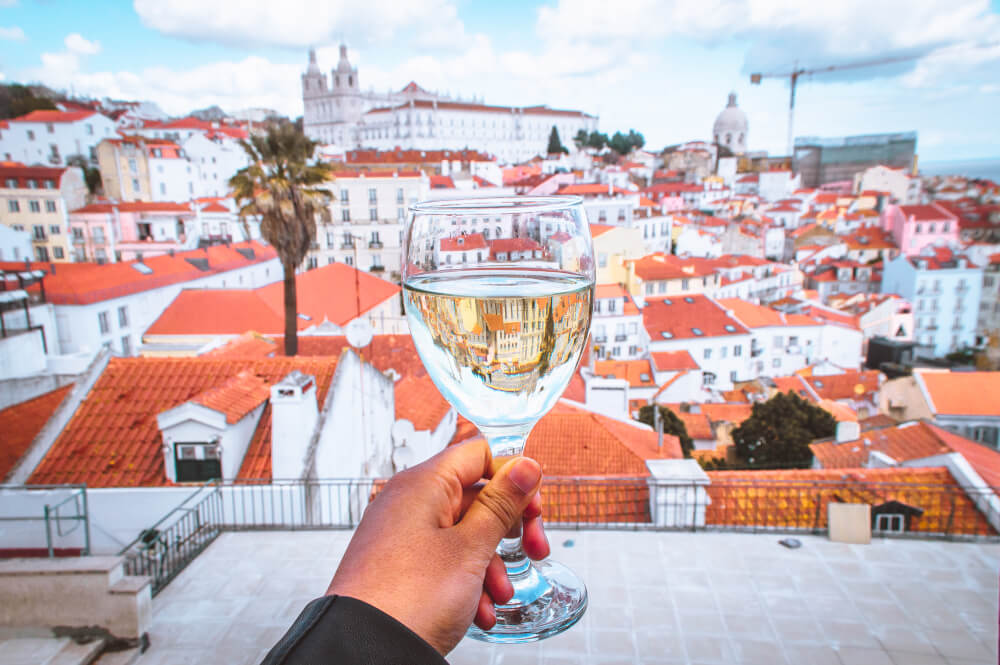
19. Beware that free museum days aren’t free for everyone
A lot of travel guides online have been perpetuating the Portugal travel tip that many museums are free on the first Sunday of each month in Portugal…
BUT it’s important to note that actually when you look at the fine print, many of these offers are only valid for residents of Portugal (e.g. here ) so keep that in mind and double check on official websites before you head out expecting your freebie.
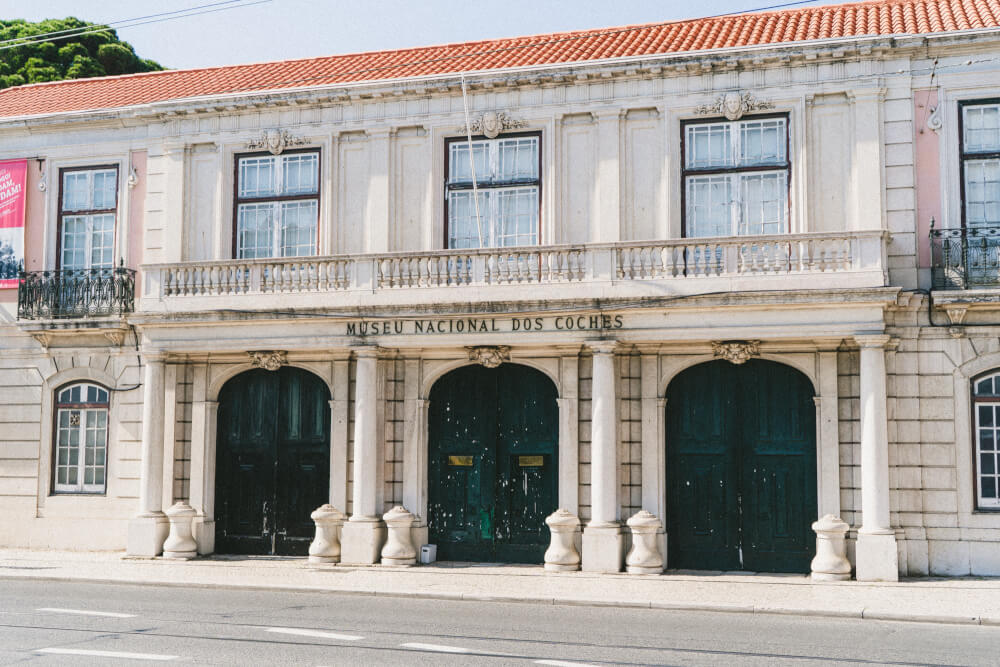
20. Make sure you try Vinho Verde
Moving onto Portugal tips for food and drink – AKA the most delicious and valuable section.
My first recommendation is to try Vinho Verde or green wine. I know it sounds weird, but the ‘green’ part of the wine has less to do with the wine’s colour, and more with its age.
In short, Vinho Verde is a young drinkable wine that’s not aged, and often a little fizzy, making it THE most delicious and refreshing accompaniment for a sunny terrace. I warn you though: this is some dangerously drinkable stuff, and you’ll be swallowing it by the gallon throughout your trip.

21. And avoid ordering Port wine with your meal
On the topic of wine, if you find yourself wanting to try the famous Portuguese Port wine, know that it’s a very sweet dessert wine that is usually enjoyed on its own after a meal (though sometimes before) and not one you sip during your meal.
… So avoid pairing your dinner with Port. That’s not the best way to enjoy it!

22. Research regional specialties before you go
Food-wise, Portuguese cuisine is super hearty and delicious, with many regional specialties depending on where you are in Portugal so be sure to Google the particular must-tries of your destination.
Of course, I can’t resist sharing a few quintessential recommendations.
First off, if you’re by the coast, fresh seafood is abundant and delicious, especially Bacalhau or Codfish which is available in literally hundreds of ways, including Pastéis de Bacalhau which are deep fried balls of potato and cod. So good!
In Porto, one very gluttonous must-try is the incomparable Francesinha – a thick sandwich stuffed with all kinds of meat and cheese then topped with more melted cheese, a dreamy sauce and often a fried egg.
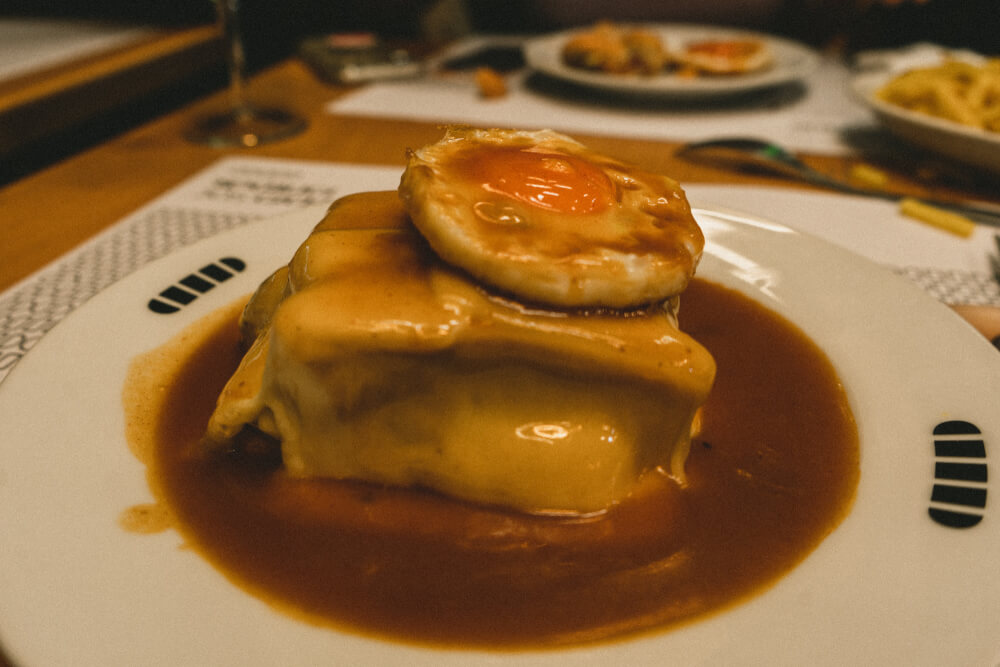
And, a specialty of Belem and Lisbon is the almighty Pastel de Nata. These are egg custard pastries that come in a crispy crust. They are absolutely incredible, and sure to be one of the highlights of your trip (and possibly life).

23. Consider ordering Petiscos to sample a variety of flavours
Not sure where to begin with Portugese cuisine? A great way to try a lot is by ordering Petiscos, which are small shareable bites similar to Tapas.
Of course, what is served as Petiscos can vary regionally as well, so be sure to do some research or ask for local recommendations, but overall, ordering a bunch can be a nice way to try a lot of different dishes and it can also be a more affordable alternative to getting full main dishes as well.
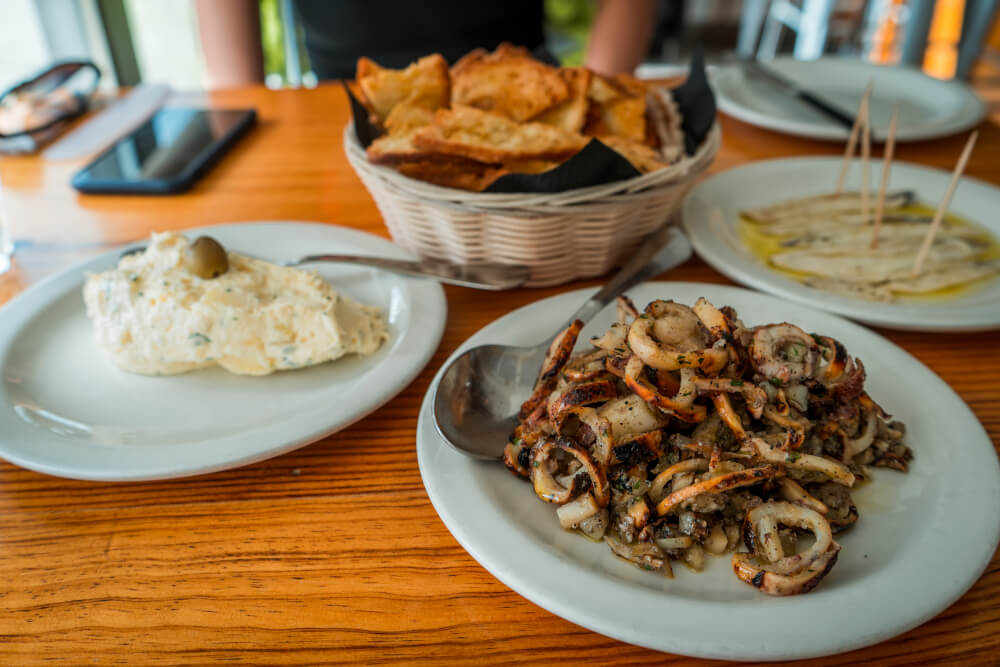
24. Prepare for late meal times
In terms of dining out, there are a few things you should know. First off – mealtimes in Portugal may be later than you’re used to.
It’s not uncommon for dinner time to be around 8 or 9pm or even later. Meals often last longer here too, taking several hours, so don’t feel any need to rush. Remember, Portuguese time is relaaaaaxed and fluid.
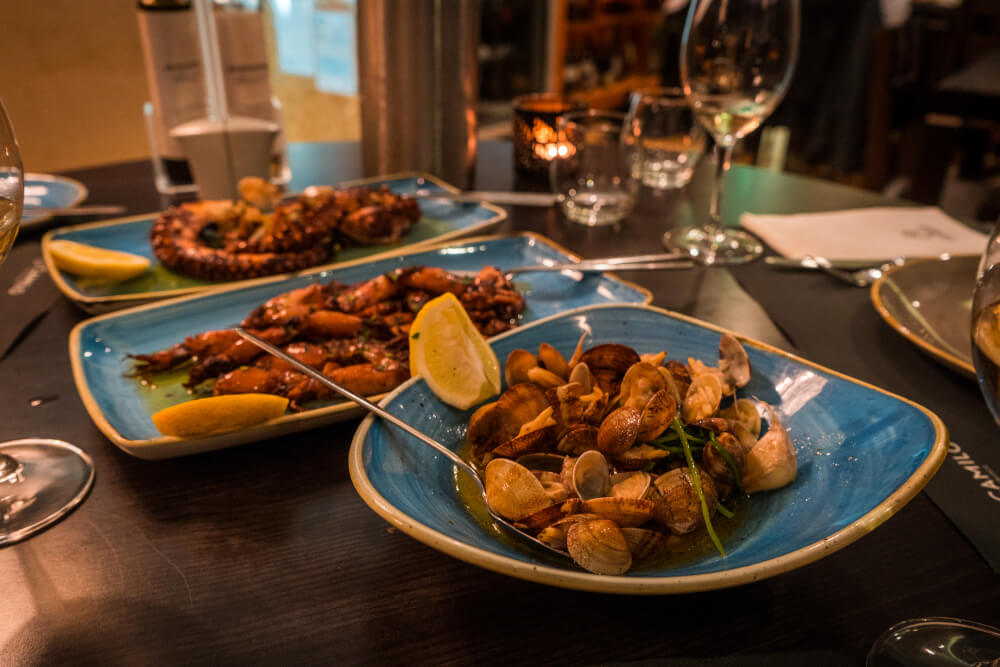
25. Do not expect continual service in restaurants
Another Portugal must-know is you should not expect continual service in restaurants here.
Often smaller local restaurants (or their kitchens) will be closed in the late afternoon to early evening, so from 2 or 3pm until 7pm, during which they only have some snack items or might not be open at all.
In larger cities, you’ll probably still find some places open but often these will be the ones that cater more to tourists.
So, keep these timings in mind so you can manage your hanger accordingly.

26. Learn how to spot tourist trap restaurants in Portugal
Speaking of restaurants that cater to tourists, there are a few easy ways to spot touristy restaurants in Portugal.
The first is if they’re in a particularly touristy area near a big attraction, you can probably expect prices to at least be a bit higher, and the value for money to be worse. A huge red flag is any place where there’s a host actively trying to get you to eat at their restaurant, as well as places with huge pictures or where the menu is a bunch of languages.
Often you can escape these by just walking a few blocks away from the main sights so be sure to look around a bit before committing.
Or if you want to enjoy the atmosphere because sometimes these touristy restaurants do have some great views and locations, just pop in for a drink, rather than a full meal.
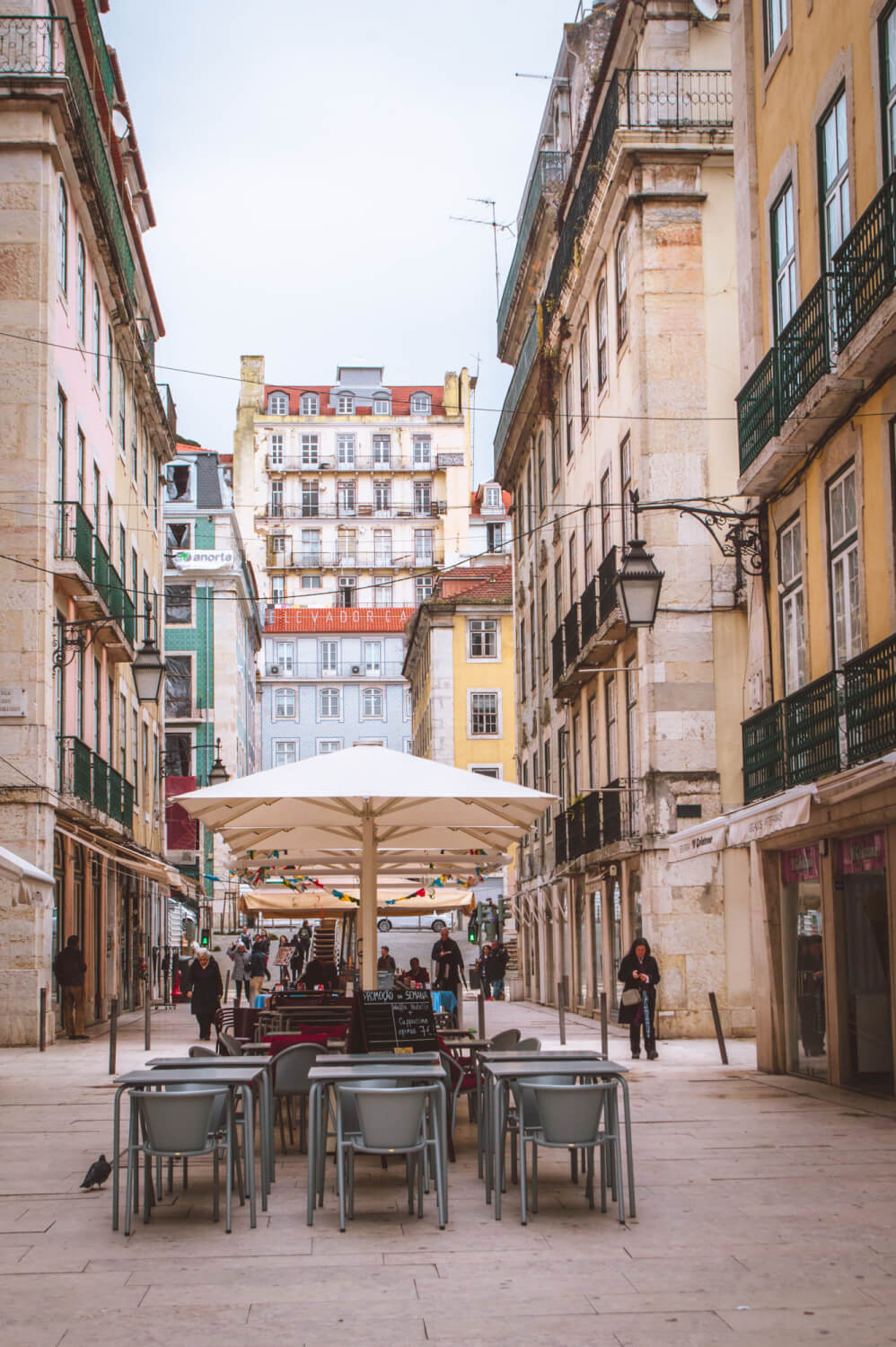
27. Know that your table snacks will probably cost extra
Another important Portugal must-know is that often when you arrive at a restaurant, there will be snacks like olives or bread put on the table.
To the surprise of many first time visitors, these aren’t actually included and come at an extra cost, known as “Couvert”, which is usually 1-2 euros per person.
Just know this isn’t a scam, it’s just a cultural difference in the way they charge for things so keep that in mind if you’re eating at a restaurant, and feel free to say ‘no thank you’ if you don’t want any, and you will not be charged for them. The price of the Couvert is also usually listed on the menu, so you can double check the cost before committing.
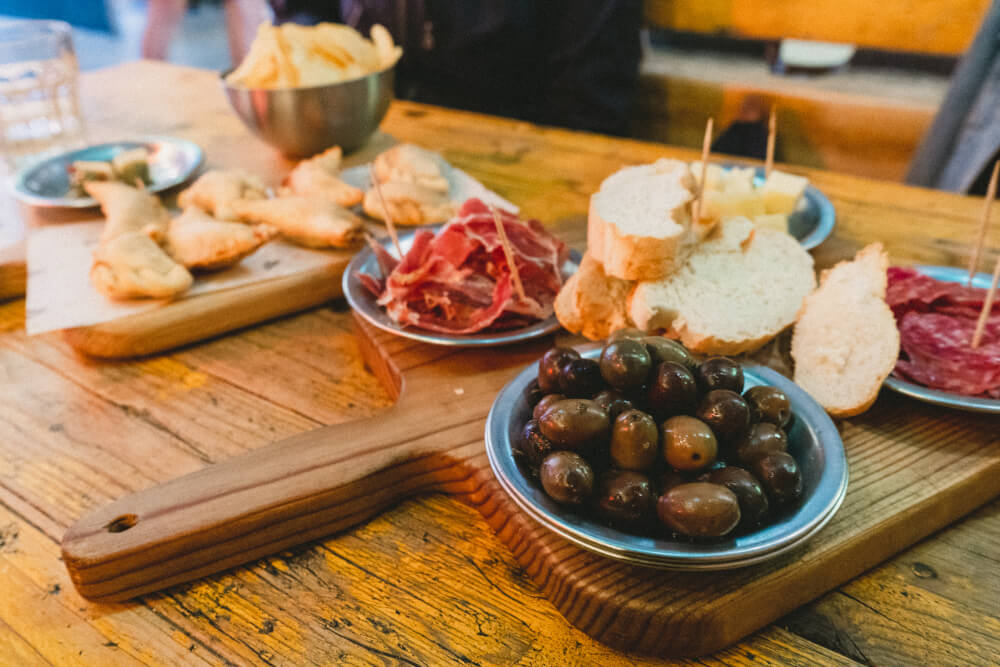
28. Learn Portuguese tipping etiquette
Tips aren’t expected in Portugal to the same extent as in North America, but if you want to, usually rounding up or doing 10 percent is fine.

29. Bring cash (in smaller denominations)
Another important Portugal must-know once you arrive is that you should make sure you have cash on you.
While many places are taking card now, paying with cash is still the norm in Portugal, especially with smaller bills. The smaller the denominations you can get the better, because I’ve found that smaller places like cafes don’t like to break large bills. Ideally, keep to ten euro bills or below.
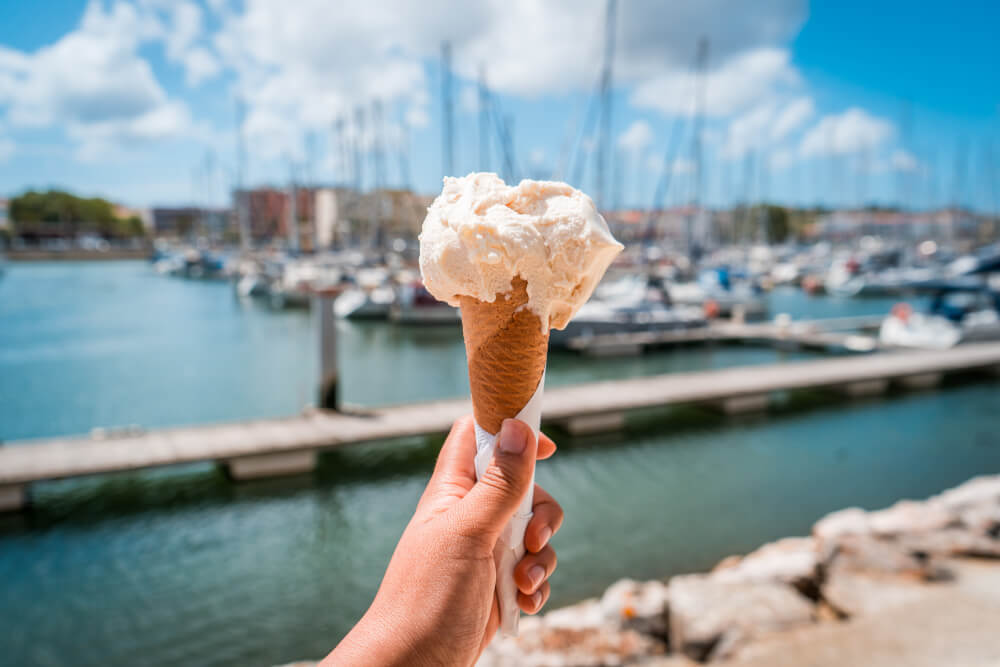
30. Don’t carry too much cash at once
That said, do not bring too much cash out with you at once, especially in touristy and busy areas in Lisbon, because pickpockets can be a an issue.
I’ve only been pickpocketed twice in my life and Lisbon was one of them so I’m still a bit sore about that.
So, go by my rule of thumb, which is to not carry more cash than you can stand to lose.
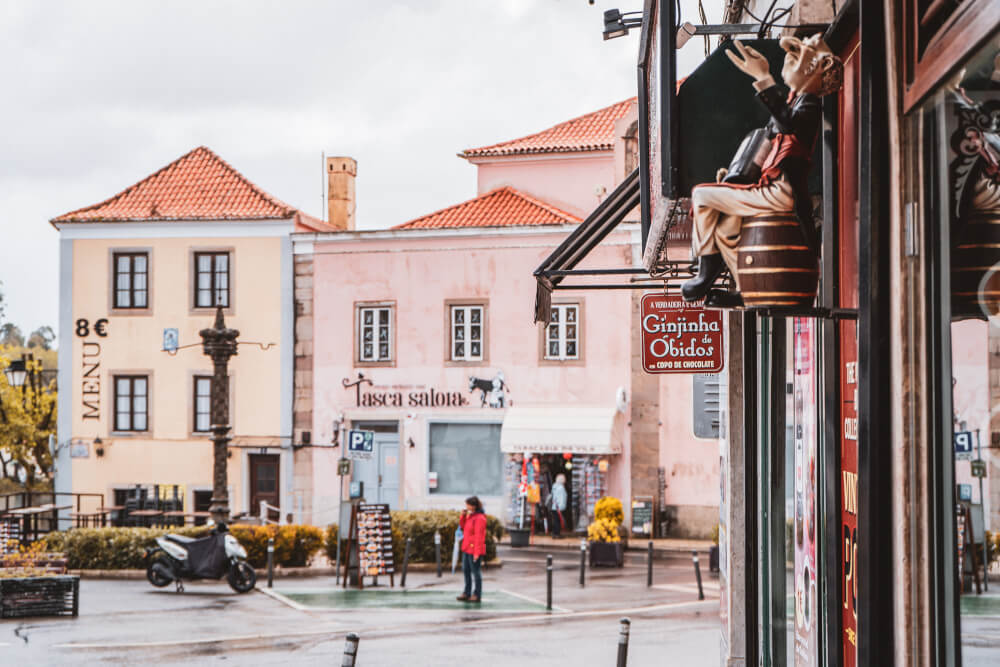
31. Beware of sketchy dealers
Another scam to look out for is dealers offering to sell you ‘illicit substances’ when you’re just out and about, minding your own business on the street.
This is of course mainly an issue in high-traffic tourist areas, as they always target silly tourists who don’t know better.
Here’s how it works: someone will come up to you and ask if you want something innocent like sunglasses, then they’ll follow up with whether or not you want said illicit substances. Apart from the fact that this already sounds sketchy, they’re also not selling real illicit substances, so no matter what, make sure the answer is no.

32. Be mindful of later opening times
Another thing to be mindful of when visiting Portugal is opening times.
(I’m talking of course about actual shops and restaurants, not those aforementioned dealers)
Overall, things run on a later schedule in Portugal relative to most of central Europe, so you can expect supermarkets to not open until 8am and close later as well, usually at 9 or 10pm.
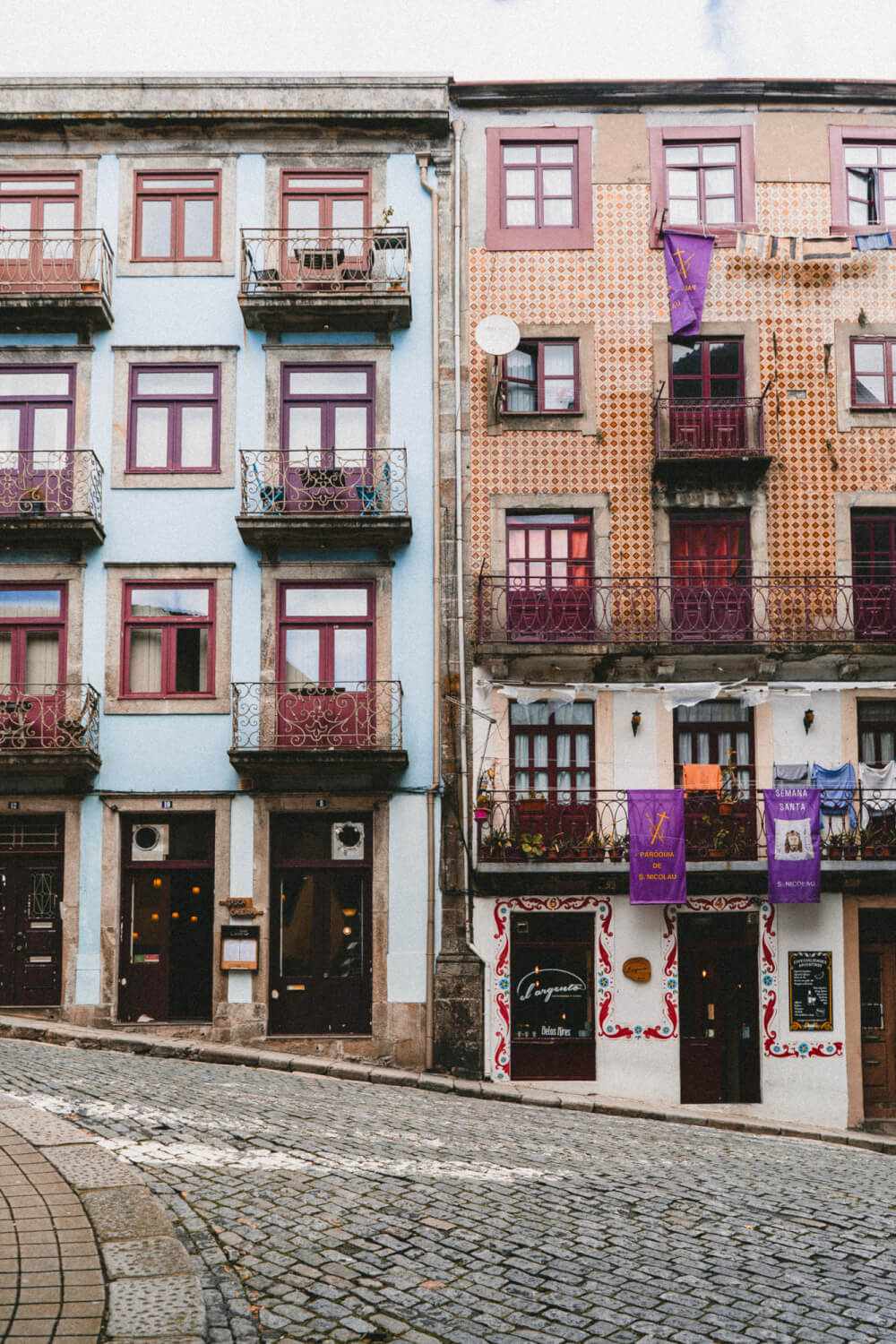
33. Pack warmer layers no matter when you visit
Okay final Portugal packing tip for you, be sure to pack some warmer layers, even if you’re going in the summer because the wind in Portugal (particularly along the coast) is vicious .
No – seriously. My trauma can attest! Portuguese wind can be really biting, especially when temperatures drop at night, so having at least one warm layer in your suitcase is a must.
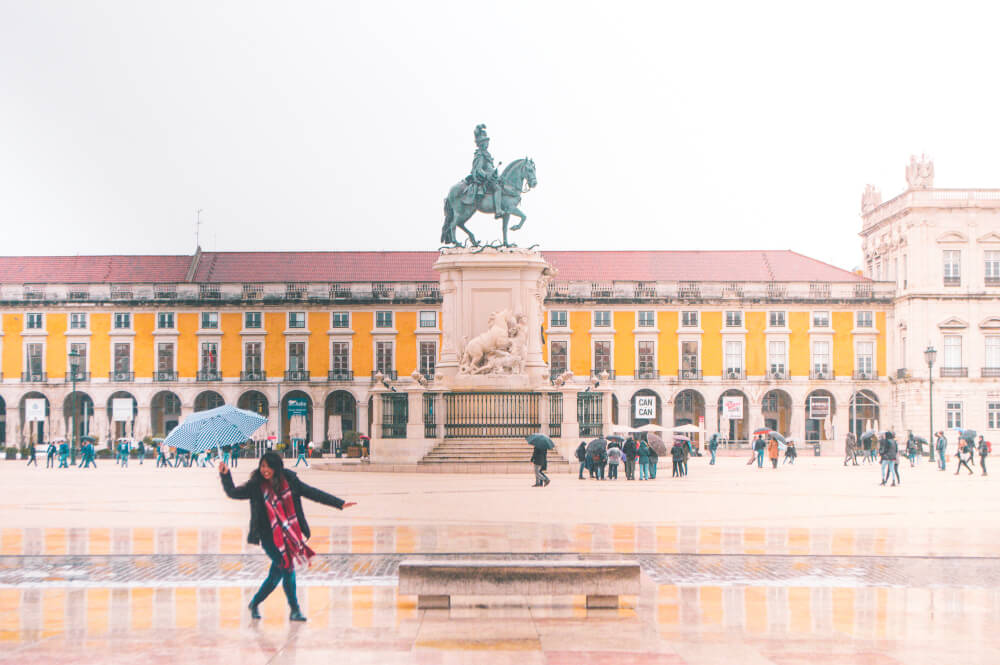
I hope this list of Portugal Travel Tips was helpful!
Congratulations on making it through the longest ever list of Portuguese travel tips. I admit this was already a VERY long list of tips for Portugal, but if you have any more questions, let me know in the comments.
My Go-To Travel Favourites:
🧳 Eagle Creek: My favourite packing cubes
💳 Wise: For FREE travel friendly credit cards
🍯 Airalo: My go-to eSIM
🏨 Booking.com: For searching hotels
📷 Sony A7IV: My (amazing) camera
✈️ Google Flights : For finding flight deals
🌎 WorldNomads: For travel insurance
🎉 GetYourGuide: For booking activities
1 thought on “30+ Portugal Travel Tips for First Timers & Must Knows Before You Go”
Thank you! I enjoyed the common sense approach. This was very helpful.
Leave a Comment Cancel reply
By using this form you agree with the storage and handling of your data by this website. *

Top 20 Portugal Travel Tips Every Visitor Should Know
Travelling to Portugal is exciting and intriguing because the culture and the language might not be what you are used to.
Here you will find the 20 most useful tips for planning your trip to Portugal.
I’ll give you tips on moving around the country or the city, what to do and what to eat, staying safe and what to do when you have to sadly leave the country.
Top 20 Portugal travel tips
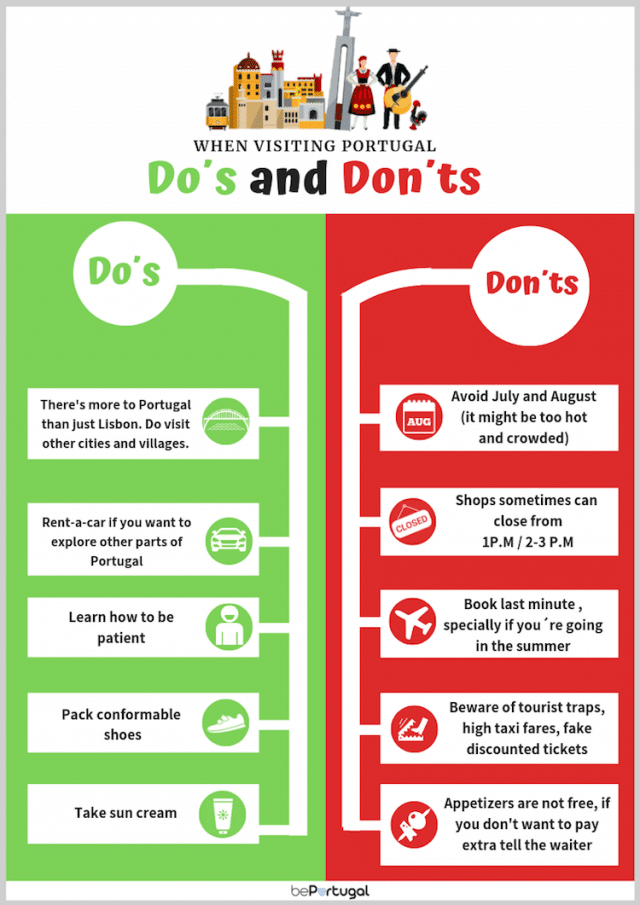
When and where to go
1. avoid july and august.
Due to Portugal’s mild climate and proximity to the ocean, the summer vacation season is by far the most popular among travellers. You can clearly witness this in July and August, especially in Lisbon and in the Algarve, as the city centres get packed to the point that it is almost impossible to pass through the narrow Portuguese sidewalks (“calçadas”).
A good time to travel to Portugal is around May, June, September and October, when the sun is not excessively hot, but the weather is warm enough to go to the beach or simply visit the historical sites without overheating.
Moreover, the amount of tourists will be significantly lower and you will be able to enjoy the sights without having to queue up for ages.
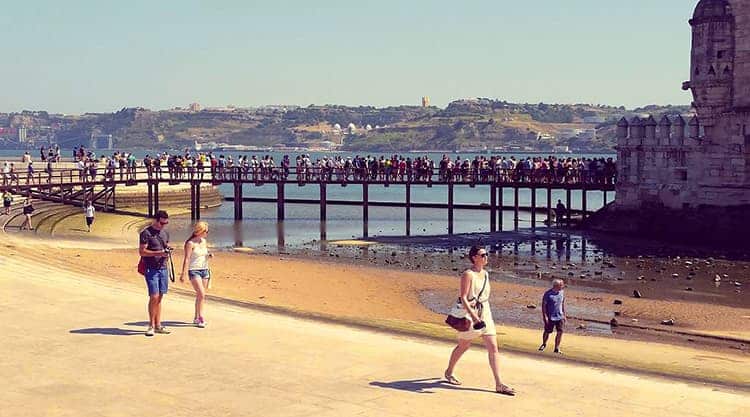
2. Book accommodation and flights in advance
Partially due to the previously discussed reasons, but also due to the size of the main attraction points, such as Lisbon, Porto and the Algarve, the number of accommodation options is rather limited compared to the amount of visitors, especially during the peak season.
Therefore, we highly recommend you to arrange a place as much in advance as possible. You will also save money by booking a rare and affordable find which is usually occupied throughout the year.
The same go for long-distance transport and international flights to Portugal .
Momondo , the travel comparison website, offers an insight tool that indicates the cheapest periods to travel to Lisbon (or any other worldwide destination), how many days in advance you should book and what’s the best day of the week to travel.
The website is available in several languages and from different destinations by changing the settings on the bottom right corner of the page.
3. Ask for a ventilator (fan) in the summer and a heater in the winter
While this might seem like an obvious add-on for any tourist accommodation, don’t take this for granted when visiting Portugal! Most of the houses were built to stay cool in the summer and keep the heat in the winter, therefore it’s not customary to have central heating or air-conditioning installed in most buildings.
Usually modern hotels will include this service, though if you’re staying in a rented apartment it is best to double-check with the landlords if air-conditioning or a ventilator are provided during the hot months and a heater is available during the winter months. This way you will avoid unpleasant stays in overly hot or cold apartments!
4. There is more to Portugal than Lisbon
We know, we know… Lisbon is highly spoken of on many media channels and strongly recommended by almost anyone who visits it. However, it is not the only great place that Portugal has to offer.
Other very worthwhile destinations in the north of Portugal are:
- Guimarães ;
- Vila Real ;
- Bragança ; and
For the south, you should try:
- Costa Vicentina; and
And of course not forgetting the stunning archipelagos of Madeira and the Azores in the Atlantic Ocean.
Since these alternatives are usually smaller cities compared to Lisbon, you could opt for organising a multi-city trip with one day stays, rather than spending an entire week in the same place.
Continental Portugal is well-connected with smooth highways as well as long-distance train and bus routes.
However, there are some hard to reach places such as Gerês and Costa Vicentina, for which we suggest renting a car or a van .
The same goes for the archipelagos, which do not have a well developed public transport system, though would require at least three days for visiting.
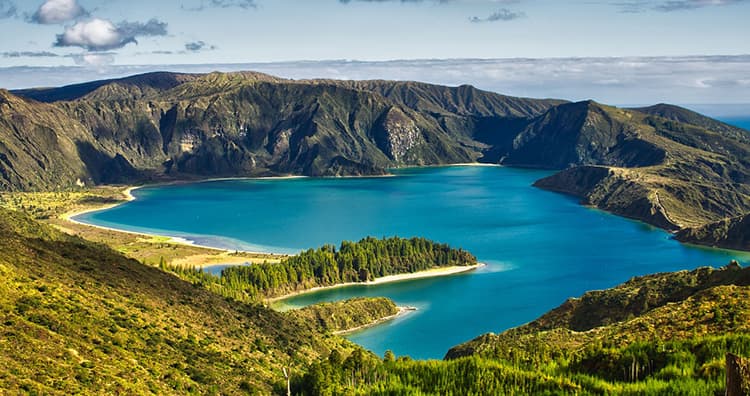
5. If you still decide to go to Lisbon…
…then be prepared for massive amounts of people in the city centre and the tourist attractions especially in the warmer months and peak season. Lisbon is definitely a must-visit place in Portugal and in recent years it has gone through a lot of changes due to increased tourism, which has also contributed greatly to the local economy.
However, the streets and houses weren’t built to host such large crowds, so you will very likely find yourself queuing just to cross the street.
How do you escape the tourist crowds?
Here are some not so well-known areas where you can enjoy the same cultural spirit of Lisbon.
Start from the area called Avenidas Novas with its wide avenues and neoclassical architecture style until you reach Fundação Calouste Gulbenkian , where you can enjoy a beautiful garden and fascinating art galleries; continue walking westbound until you reach the top of the vast Parque Eduardo VII, from where you can admire an endless viewpoint across the city, the river and Almada .
Then take the yellow (“amarela”) Metro line from Marquês de Pombal to Rato and walk up to Jardim da Estrela, a lovely oasis in the middle of old Lisbon, and then go to the nearby Basílica da Estrela, one of the most beautiful churches in Lisbon.
The next stop is the lookout (“miradouro”) at Panorâmico de Monsanto, a restaurant built in the 1960s on top of a large green hill, then abandoned due to bankruptcy and recently reopened to the public. We recommend taking a taxi up there, the view is really worth it.
When you head back down, finish off the day by visiting the Palácio Nacional da Ajuda , which stands at the foot of the hill and is the former residence of the Portuguese royal family.
Bonus tip for the tireless ones is the Museu Nacional do Azulejo , also known as the National Tile Museum. It is surprisingly one of the most interesting and beautiful museums in Lisbon, which tells the story of the traditional Portuguese tiles, their production and style over the centuries.
Getting around the country or the cities
6. rent a car if you’re planning a multi-city trip.
This tip is partially related to visiting more than just Lisbon, but it’s also valid if you want to want to organise a road trip across continental Portugal.
Those who live here will know that having a car can unlock many hidden gems that would otherwise be hard to reach with public transport.
Some of the suggested routes are:
A southbound journey along the coast from Lisbon all the way until the Algarve .
A city-hopping trip among the northern Portugal cities like the ones mentioned in tip number four.
A tour through one of the several natural parks, such as:
- Parque Nacional Peneda-Gerês ;
- Parque Natural do Douro Internacional;
- Parque Natural da Serra da Estrela ;
- Parque Natural da Serra de S. Mamede; and
- Parque Natural do Vale do Guadiana.
Visiting a vineyard for a day in the Setúbal, Alentejo or Douro region. You may need to find a designated driver for this trip if you plan to taste some of the sumptuous Portuguese wines .
You can easily rent a car directly from any Portuguese airport, however there are some restrictions which you can check in our article: Car Rentals in Portugal: Expert Advice to Save You Time and Money
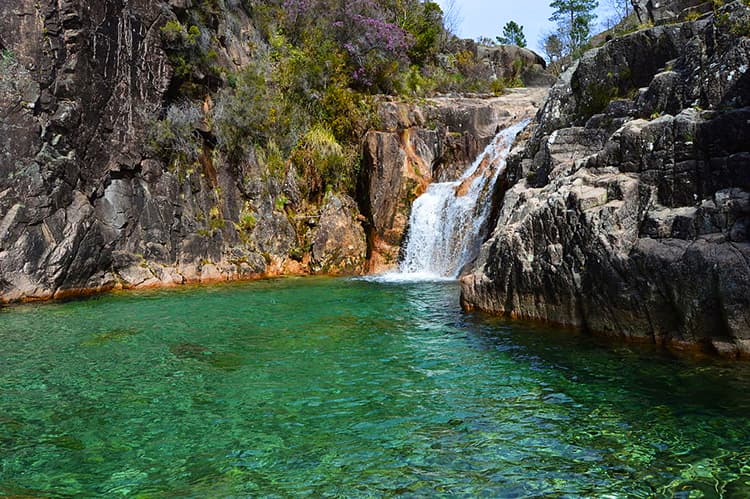
7. Get a rechargeable Metro card if in Lisbon or Porto
If you’re visiting Lisbon or Porto, which happen to be the only two cities in Portugal with a Metro system, we highly advise that you to use local public transport to move around the city rather than driving a car, as traffic can get pretty intense and finding parking may turn into an Odyssey.
The main advantage of the rechargeable Metro card is that you can use the same one on the Metro, local trains, buses, trams and even the ferry in Lisbon.
The disadvantage is that you can only charge it in specific authorised points, such as newspaper kiosks and Metro stations.
However, if you know someone in Portugal, they can charge your card at a Multibanco machine or for Lisbon’s Viva cards, they can charge it at home via the Viva website.
So make sure to top it up with some extra cash or simply pick the daily pass. Just keep in mind that you can use only one card per person and ticket controls are rather frequent.
In Lisbon, it is worth buying a 7 Colinas or a Viva Viagem card, which can be bought in any Metro station. The reusable 7 Colinas card can be purchased for one or five days. Both of these cards are valid for a whole year so hang on to it if you are planning on coming back to Lisbon. Each trip is about Є1.45 by using these cards and an average price per day would be about Є3.15.
8. Relax and learn how to be patient
This might sounds strange to some of you, but it actually is a very important tip: be patient and do not put other people in a rush. Portuguese people like to take things easy (especially in the countryside) and do not have an elaborate concept of doing things in a fast manner, which might be irritating for some people at first.
Instead try to embrace the slow pace of the Portuguese culture and use it as an excuse to unwind from the fast city life rhythm.
You’ll find yourself slowly strolling through the streets while embracing the magical light of Portugal, spending three hours at the restaurant finishing off a delicious meal with a glass of Port wine or a brandy (“aguardente”), or simply enjoying an espresso at a viewpoint while gazing into the horizon.
One thing is guaranteed: going back to work will be very, very hard upon your return.
9. Pack comfortable shoes
We previously mentioned the sidewalks in Portugal (“calçada portuguêsa”), so here’s a little tip related to it: it’s not the most friendly type of pavement, so pack your sneakers and leave your high heels at home.
Pavements in Portugal are usually made of small square cobblestones. The streets are covered in beautiful mosaic patterns symbolising the elements of nature and history of the country.
This type of construction has the purpose of being highly resistant to direct sunlight and heat, however, they get extremely slippery when wet or just on a steep hill.
We recommend you watch your step and wear your most comfortable pair of shoes while in Portugal.
10. Be careful of the strong sun
This tip is especially directed to the fair skinned traveller, like myself, who easily burn in the sun. Be prepared: the Portuguese sun can be very strong even in the winter!
So if you’re one of those who become red as lobsters after five minutes in direct sunlight, we suggest to stay in the shadows, use sunscreen with protection 50+ in the summer, and wear a hat and sunglasses especially if you’re spending the entire day out.
You can usually buy sunscreen at any pharmacy, supermarket or night shop, however a flask of 200 ml can cost more than €10, so it might be better to bring some from home in your checked in luggage.
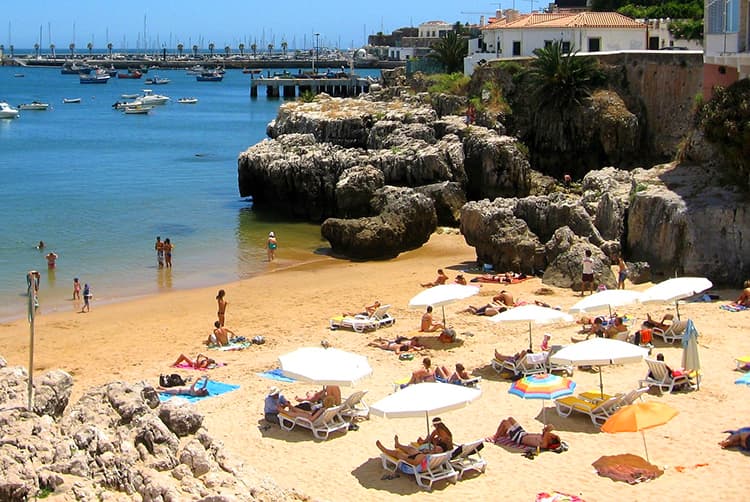
What to do and what to eat
11. museums are free on the first sunday of the month.
Many Portuguese cities have great museums with unique collections of art from ancient history to modern art. We recommend you to check their schedules beforehand as they’re often closed on Mondays and stop admitting visitors between 5 and 7pm.
What’s good to know is that many of them are free on the first Sunday of the month, though you should still check this information per museum as they do have exceptions.
For visitors to Lisbon, you might like: Top 15 Museums in Lisbon: For Lovers of History and Art
12. Avoid the tourist trap restaurants
This is particularly true for bigger tourist destinations, such as Lisbon, Porto and the Algarve, however with the increasing amount of visitors, you can notice the prices rising in many parts of Portugal.
How do you recognise a tourist trap restaurant?
They will usually have a very insistent host who will chase you down the street just to get you to eat at their restaurant, they will have a poorly translated menu with pictures of the food hanging at the door and completely inflated prices for drinks and side dishes or no prices displayed at all.
If you’re not sure whether the restaurant that you want to go is a tourist trap or not, always ask the price of anything that you order or is brought to your table and thoroughly check the bill at the end of the meal.
Tourists traps are easily spotted in the city centres and crowded streets and squares.
13. Couverts are not for free
As a continuation to the previous tip, you should know that the bread, cheese and olives waiting for you at the table at not for free. Ever!
If you decide to touch any of it, it counts as a consumption, so if you don’t want to pay for them, kindly ask the waiter to take them back. Some restaurants will count the couvert per person, so make sure to check the prices on the menu in case you can’t keep your hands away from these tasty little appetisers.
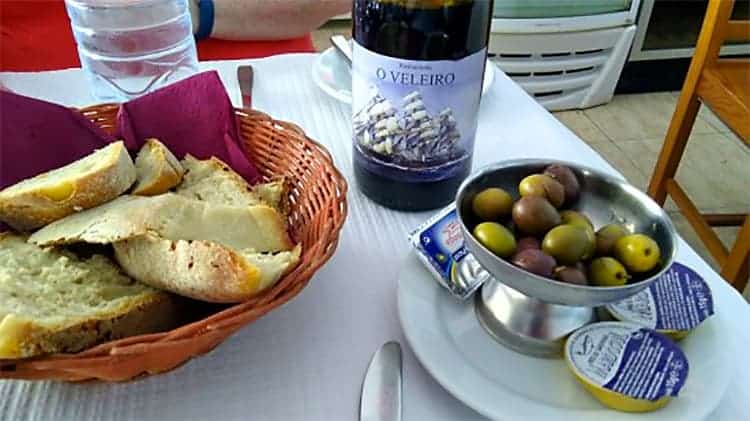
14. Tascas are a lifestyle
Tasca is a Portuguese word for “tavern” or “bar” which is very specific to our country due its distinguishing traits. For example, a Tasca is usually a small family run business with a grumpy, yet charming older lady as the cook and a seemingly rude but caring husband running the front bar.
The type of food you can expect is what a Portuguese person eats at their grandmother’s house in a small setting that resembles a living room.
Another recognisable element of a Tasca are the incredibly cheap prices. In Lisbon you can easily find a Tasca with a lunch menu for €7 including a main dish, a drink and a coffee!
While in Porto and other cities, the price can get as low as €5.
Disclaimer: if you’re not a meat or fish lover, then you’re probably going to have to settle with an omelette or a salad!
15. Vegetarians be careful!
As mentioned in the last point, unfortunately there aren’t that many options when it comes to vegetarian (not to mention vegan) food. While this type of cuisine is gradually evolving more and more in the bigger cities, don’t expect to find any vegetarian options in the countryside or small towns.
Moreover, be sure to ask for the ingredients of any dish that you order, because even vegetable soups are sometimes made with “chouriço”, a traditional Portuguese sausage used to give flavour.
Great vegetarian and vegan options can be found in the supermarket/cafeteria chain “Celeiro” in the main cities.
For more on vegan food, you might like: Being Vegan in Lisbon, Your Plant-based Food Guide for Portugal’s Capital
16. Enjoy the fresh fish and seafood
If you’re ok eating fish and seafood , don’t miss the chance to try them in Portugal! It’s the paradise for foodies thanks to the ample choice of products freshly delivered on the day even to the smallest Lisbon restaurants .
The most commonly known dish is “Bacalhau à Brás”, made from shredded salted cod, which is ironically imported from Norway yet considered to be the national Portuguese dish eaten throughout the year and especially on Christmas Eve.
Other options include:
- Creamy seafood risotto, usually made with the catch of the day such as shrimps and varieties of fish;
- Orata or bream, known in Portuguese as “dourada”; and
- Snook, called “robalo” by the locals.
If you happen to be in Lisbon around June, you must try grilled sardines, the symbol of the city and typically consumed on a piece of bread during the Popular Saints festivals (“Festas dos Santos Populares”).
Staying safe in Portugal
17. beware of pickpockets.
This is strongly notable in Lisbon, but can also happen elsewhere, that pickpockets are wherever the tourist goes. In order to avoid unpleasant situations, make sure you do not put any valuables in the pockets of your pants or jacket, avoid using open handbags, and keep an eye on your backpack.
Pickpockets in Portugal are not likely to be aggressive, but in case you catch one during the act, the best thing to do is not to fight them and simply call for help.
In the unfortunate event of losing a valuable belonging, immediately go to the local police. In some cases they might be able to retrieve a stolen wallet with your documents inside (though it will be cashless).
18. Parking helpers expect money
So you decided to rent a car in the city and now you’re on the Odyssey of finding a parking spot.
First of all, we wish you the best of luck!
Secondly, be careful of the people who volunteer to help you park. They are expecting money in return for their kind gesture. Unless you really can’t find any other place where to park, our personal advice is to give them some coins to avoid any bad reaction from their side, such as a scratched car or a broken window.
When you are leaving Portugal
19. avoid long queues at the airports.
It’s the end of your stay and you’re already starting to miss your vacation in Portugal. Oh, how much “saudade”!
Be prepared though, the airport controls are still ahead. Many flights connecting to the Lisbon , Porto and Faro airports are operated by low-fare airlines, which means they’re located in small and not so efficient terminals.
If you’re travelling during the high season, make sure to arrive at the airport at least three hours in advance as the queues for the security check in might be extremely long.
It often happens that visitors do miss their flight because of this and you definitely don’t want to be one of them (unless you’re subconsciously trying to remain in the county, in which case we totally get you).
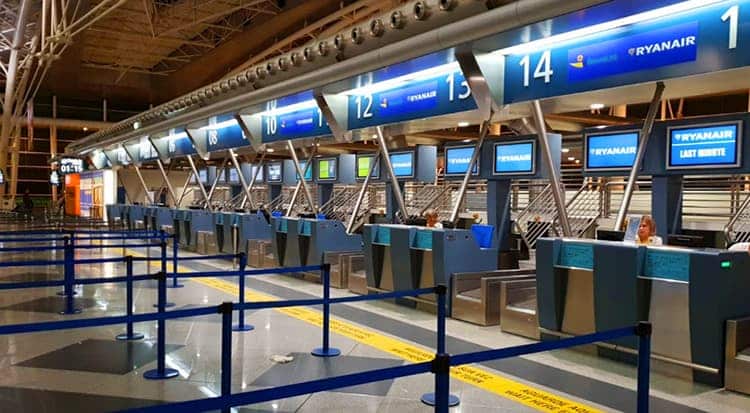
20. The best souvenirs are cheese, wine and olive oil
Forget about fridge magnets and bottle openers, the best souvenirs you can bring back home are food and drinks!
We strongly recommend you to spend a little extra on the checked-in luggage and go crazy on your food shopping in a local market, rather than buying the same products at the airport for double the price.
Make sure, though, that the cheese is vacuum packed as it can be confiscated at the security check. Portugal produces great creamy and curated cheeses. A must-try is Queijo da Serra and Queijo da Ilha, both commonly available in the supermarkets.
Bonus tip: Learn some survival Portuguese
You’ll be positively surprised at the level of English the younger generations of Portuguese people speak. In fact, TV shows in Portugal are not dubbed and therefore their English language education starts at an early age, so you’ll have no problem communicating with the locals.
However, they will really appreciate it if you could say at least a few words in their language as it shows an effort of understanding the Portuguese culture.
Here are some useful words and sentences for your stay in Portugal:
Hello = Olá Good morning = Bom dia Good afternoon = Boa tarde Good evening/night = Boa noite How are you? = Tudo bem? Goodbye = Adeus or Tchau! See you later = Até já Thank you = Obrigado if you are a man or Obrigada if you are a woman You’re welcome = De nada Help me = Ajuda-me Please = Por favor Sorry = Desculpe Excuse me/Pardon me (to ask to pass by someone) = Com licença I don’t speak Portuguese well = Eu não falo bem português I don’t understand = Eu não percebo Do you speak English? = Fala inglês? How much is it? = Quanto custa? Where is…? = Onde é…? Today = Hoje Tomorrow = Amanhã Yes = Sim No = Não One = Um for a masculine object and Uma for a feminine object Two= Dois for masculine objects and Duas for feminine objects Three = Três Breakfast = Pequeno-almoço Lunch = Almoço Dinner = Jantar The bill please = A conta por favor
If you would like to learn a few more Portuguese phrases, check out: Learning Essential Phrases in Portuguese for Your Visit to Portugal
Portugal is a top European destination
Portugal has become one of the most popular European destinations in the last years thanks to its favourable climate, affordable prices and timeless beauty. With over 23 million visitors in 2017, the main cities have quickly started to adapt for welcoming an increasing amounts of travellers.
That’s it for the 20 tips of travelling in Portugal! We truly hope that you will find them useful and enjoy your stay in this beautiful country.
Did this article help you plan for your trip to Portugal? Let us know in the comments below if you have any more tips for fellow readers.
Be sure to catch all the latest tips and advice from bePortugal for your visit to Portugal by subscribing to our FREE newsletter .
- Portugal travel tips
The European Summit in Cascais: The Best Event for Affiliates in Europe
Visit cascais: how to spend a perfect day by the sea.
14 things Portugal locals want you to know before you visit

Feb 25, 2024 • 7 min read
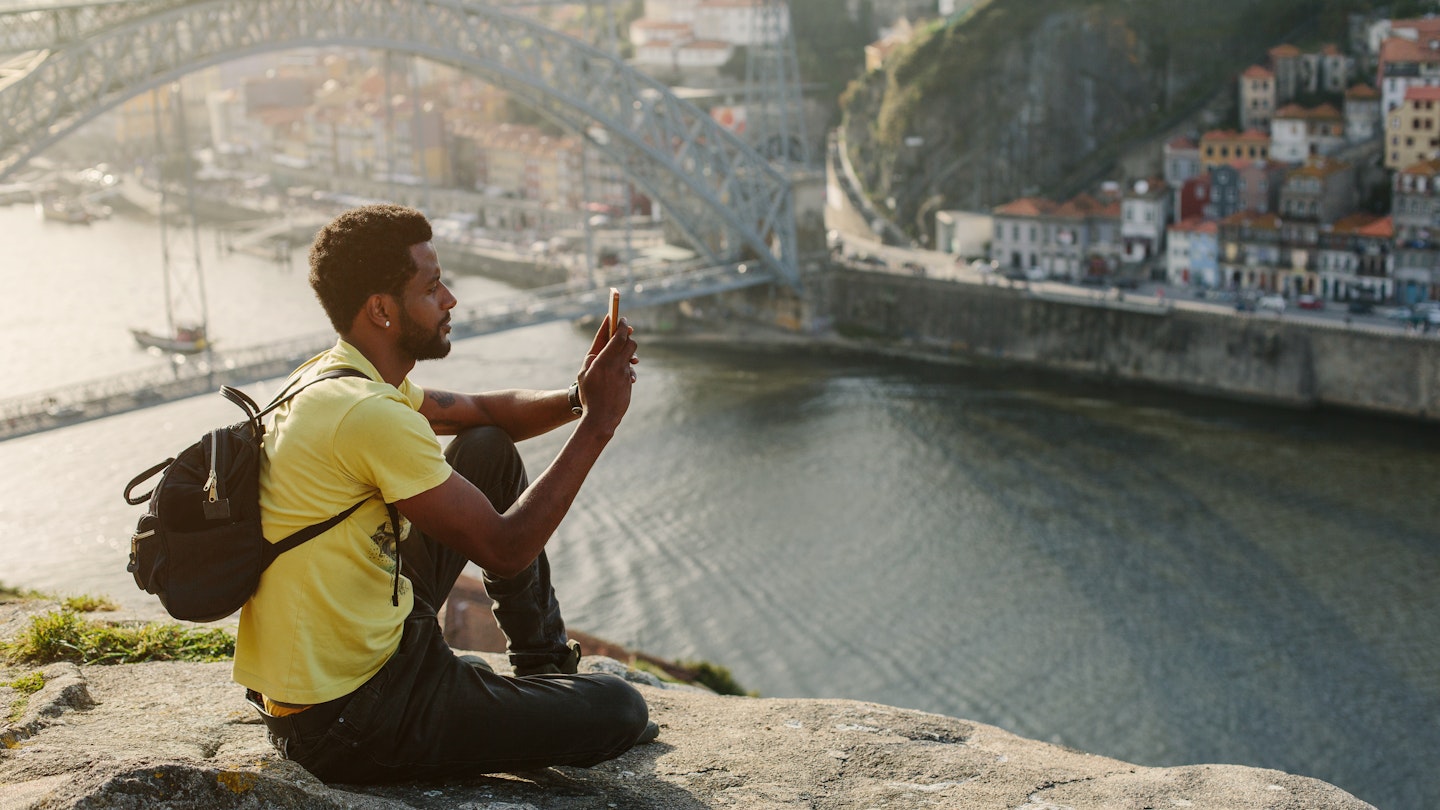
Learn how to act like a local in Portugal by following these key tips © AnnaTamila / Shutterstock
Many years ago, as a young backpacker, I made plenty of mistakes when traveling around Portugal – from trying to see everything on one trip to indulging in free appetizers that weren’t really free.
Since becoming both an honorary Lisboeta (Lisbon resident) and Tripeiro (Porto dweller), I have learned some essentials about the country. From the best methods for getting around to wardrobe essentials. Here are the key tips to help you make the most out of your trip to Portugal.
Don’t try to see it all in one trip
Portugal is a small country – roughly the size of the state of Indiana in North America and slightly larger than Scotland. But there’s a lot to see here , from hilltop villages in the Alentejo to remote UNESCO World Heritage sites , not to mention over 100 beaches in the Algarve. A rookie mistake is trying to see all of Portugal during one visit. Even if you have a few weeks to spare, you won’t be able to visit everything in this diverse country. Instead, pick one or two regions and focus your trip there, allowing yourself time to see both highlights as well as local markets, vineyards and other less-visited attractions.
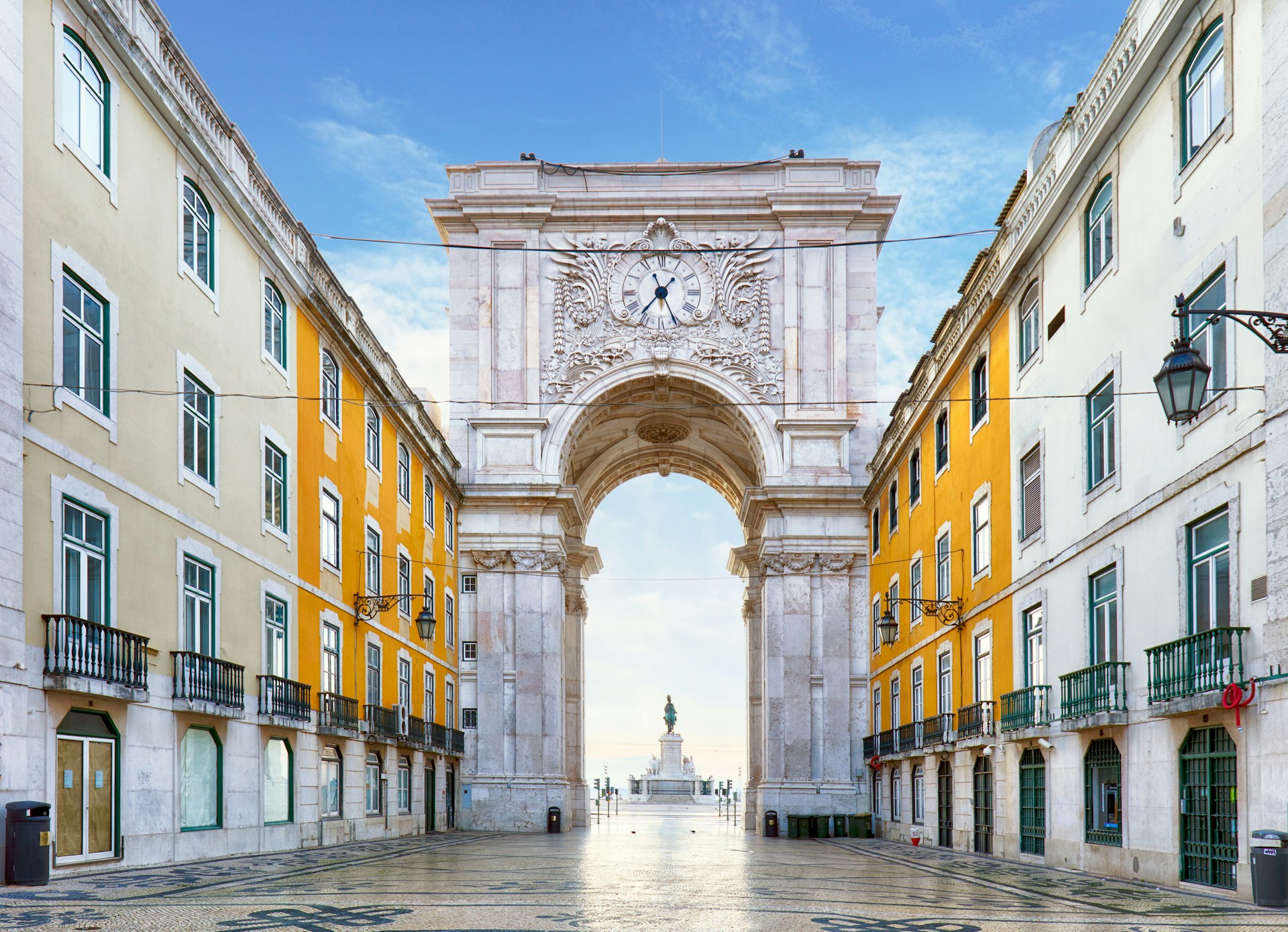
Decide where to go
The mountains, the seaside, cobblestone-lined city streets? Portugal has plenty of options when it comes to travel. With a week at your disposal, you can combine a bit of urban adventure with scenic getaways nearby. If you have Lisbon in mind, you can spend several days there, along with day trips to Cascais , Sintra and the beach-dotted Setúbal Peninsula , or spend a couple of days in Évora or on the lovely Alentejo coastline.
A great northern itinerary combines Porto with some vineyard visits along the picturesque Douro River . Beach lovers might skip city life altogether and spend their time in the Algarve , checking out cliff-backed beaches, hidden coves and quiet fishing villages. If you have something more active in mind, plan a hiking outing in the mountains of the Serra da Estrela , which you can pair with time spent exploring craggy villages like Manteigas and Linhares, as well as the university town of Coimbra .
Book your accommodation well in advance
Portugal’s growing popularity means some of the best places to stay get booked up months in advance. This is especially true if you’re traveling in the peak months of June through August . Once you have your itinerary organized, reserve your lodging. If you’re traveling off-season (November through March), you’ll have much more flexibility – so you can book your first few nights and plan your other nights on the go.
Lower your carbon footprint by traveling on trains and buses
You can go green by ditching the car and getting around by public transportation. Portugal has a decent train network that connects major cities like Lisbon, Porto, Coimbra and Faro. Buses help fill in the gaps to smaller towns across the country. Service has expanded in recent years, particularly in the south, where the new Vamus Algarve covers just about every part of the Algarve, from tiny beach villages on the central coast to the soaring sea cliffs near Sagres . Skipping the car rental also means you won't have to hassle with parking, toll roads and heavy traffic, among other things.
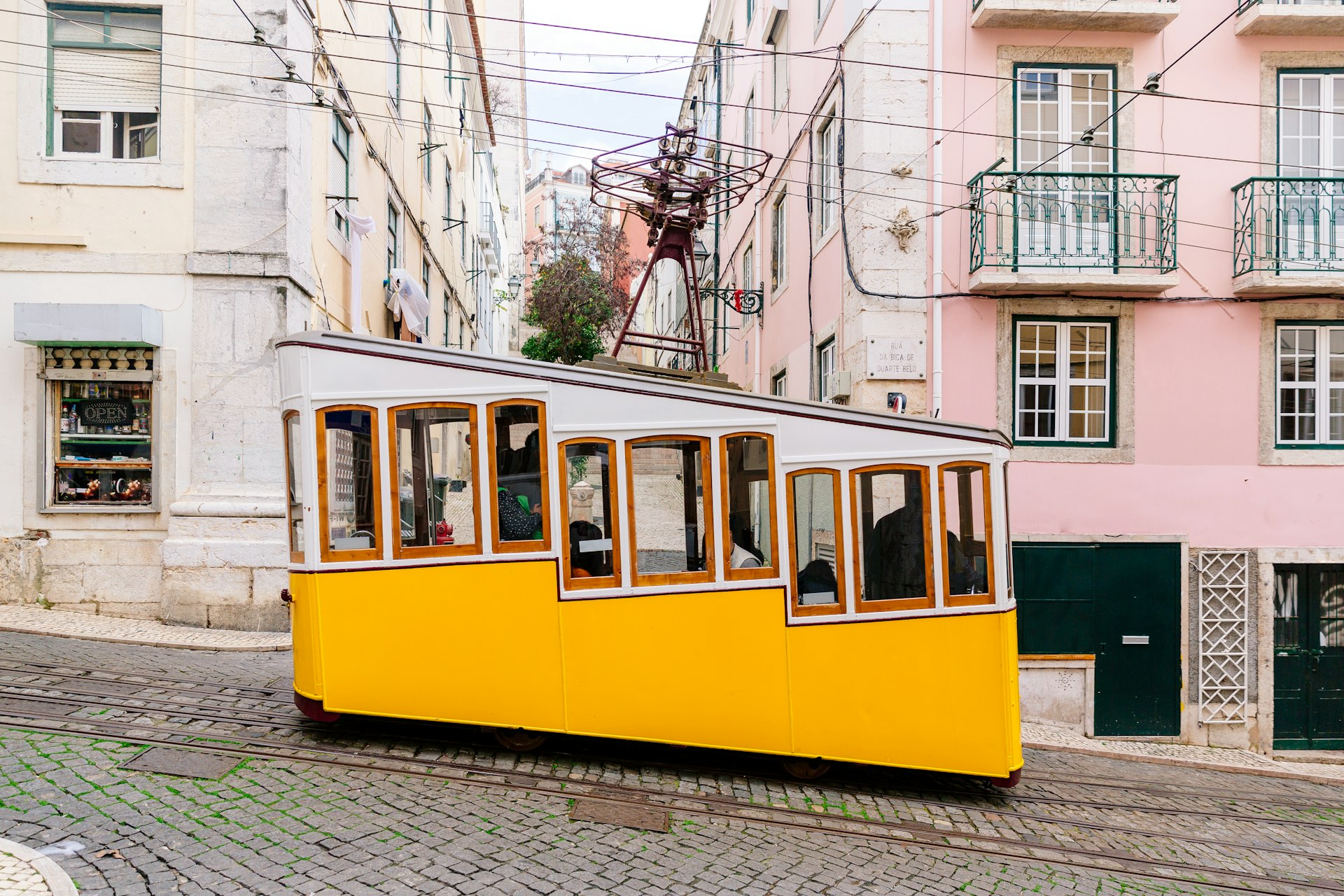
Don’t bother taking a taxi from the airport
Speaking of trains and buses, as soon as you arrive, you can save money and cut down on CO2 emissions by hopping on public transport from the airport. Portugal’s three international airports all have good options for whisking you into town. The Lisbon metro’s linha vermelha (red line) can get you into the center, as can the speedy Aerobus, while Porto’s metro (violet line E) runs from the airport to the heart of town. From Faro airport in the south, you can take the Vamus Algarve Aerobus, which shuttles into Faro and also to the key towns of Albufeira , Lagoa, Portimão and Lagos .
Remember the cardinal rule of dining in Portugal: nothing is free
Servers often bring bread, butter, olives and even cheese or other appetizers to diners before their meal. Keep in mind that these unordered items will always be added to your bill if you choose to partake. If you don’t want them, just send them away – a polite "no thank you" ( não obrigado/a ) will do the job. Prices for couvert range from €2 per person and upwards.
Bring a few smart-casual outfits
Shorts are fine on the beach, but if you wear them around the city, you’ll quickly brand yourself as a tourist. At nicer restaurants, bars and nightclubs, you’ll want to follow the local lead and dress things up a bit.
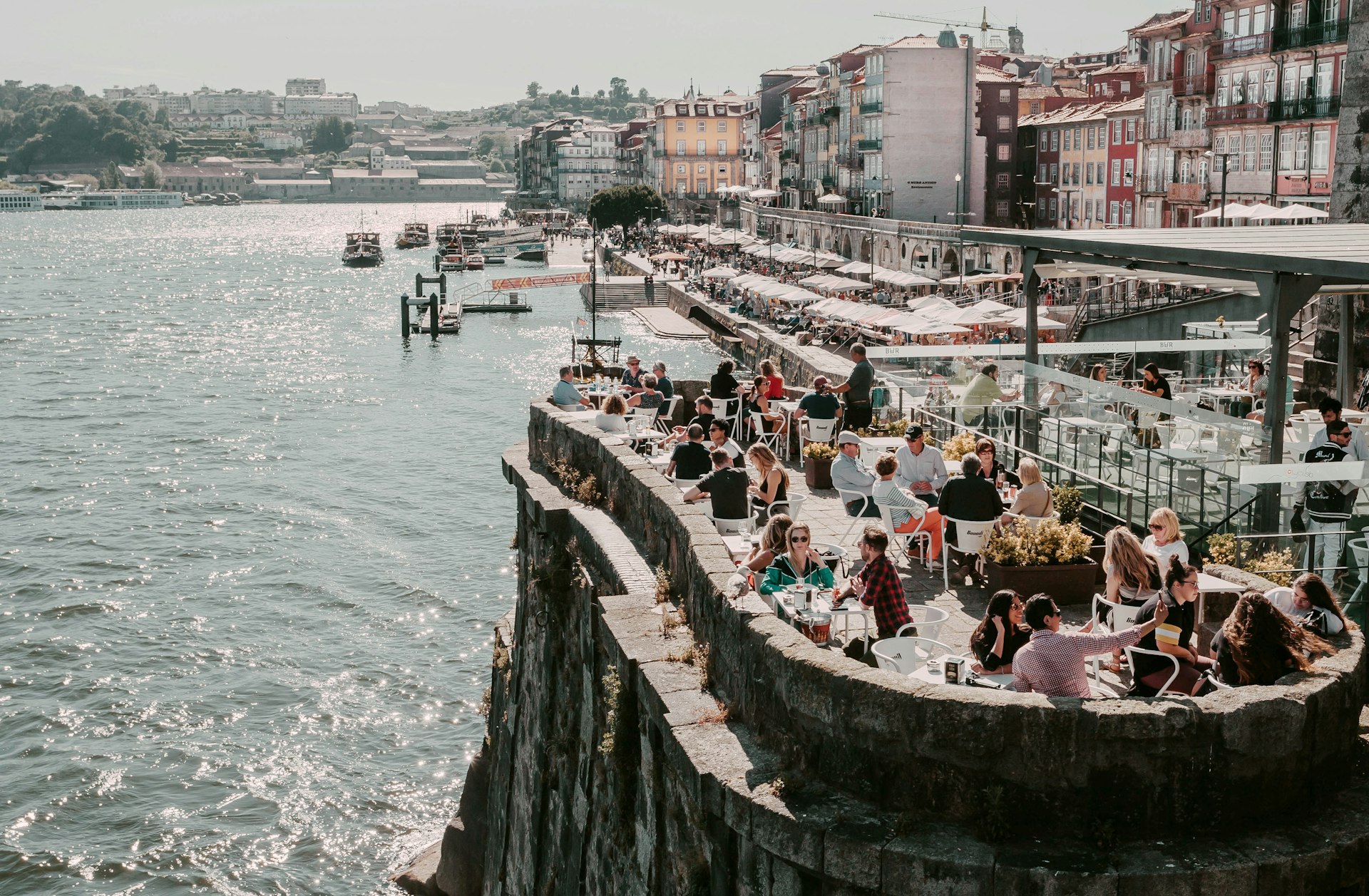
Become an expert on tipping etiquette
At restaurants in Portugal, many locals don’t tip at all or simply round up when paying for a meal. In more tourist-oriented establishments, a tip is more common – usually around 10% – and may even be added as a service charge. Tipping is not expected in cafes or bars. However, if you’re in a fancy high-end place, you should plan on tipping (along the lines of €1 for a specialty cocktail). Rounding up the fare is also common practice when taking a taxi or rideshare.
Bring your own bag to the market
Portugal has huge markets where you can see stalls of fresh fruits and vegetables as well as charcuterie, cheeses, olives, bakery items and other fare. Amid such culinary largesse, you can assemble a first-rate picnic, just be sure to bring your own bag to the market. You might want to throw in a corkscrew so you’re always prepared to pop open a bottle of vinho verde , an Alentejo red and other good-value Portuguese wines.
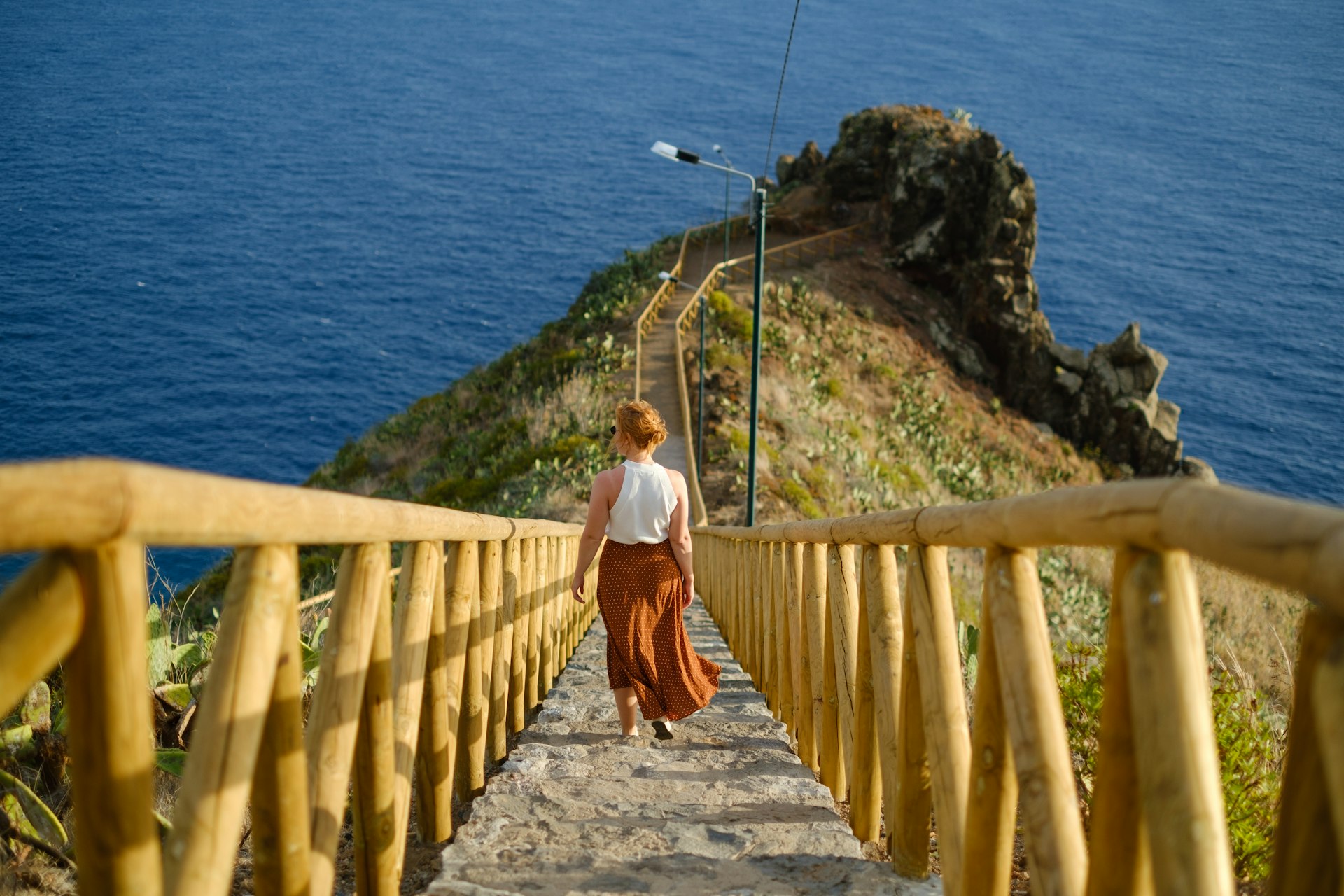
Pack sturdy shoes
Even if you limit your travels to the city, you’ll want to have good shoes. You’ll find steep streets, loose cobblestones and uneven sidewalks in Lisbon, Porto, Coimbra and many other towns. Save the heels and dress shoes for nicer restaurants and nightclubs. Good shoes will also come in handy when you want to take a walk beyond the town. Across the country, Portugal has some magnificent hikes , like the stunning clifftop trail of Percurso dos Sete Vales Suspensos – not difficult to do, but you need proper footwear.
Dress modestly when visiting churches
Save the shorts, short skirts and tank tops for the beach – keep things covered up when visiting the cathedrals ( Sés ) and monasteries of Portugal.
And don’t forget to throw in the swimsuit
No matter where you roam in Portugal, you’re never far from the beach or a sparkling inland lake or river. Porto and Lisbon both have lovely beaches within easy reach of the city center, while remote corners of Portugal – like Peneda-Gerês National Park have waterfalls and natural pools. It would be a mistake not to bring your swimsuit, even if you think you won’t need it.
Learn some Portuguese and use it
Outside of Lisbon, Porto and the Algarve, you might encounter people with limited English. For smooth sailing, it helps to learn some Portuguese. If nothing else, locals appreciate the effort to speak their language, however rudimentary your accent. When entering a room, it’s polite to say " bom dia " (good day) or " boa tarde " (good afternoon) to those around you.
Be mindful of petty crime
Portugal is generally a safe country to visit with a low overall crime rate – violent crime is extremely rare. Pickpocketing and bag-snatching are the main concerns to keep in mind, especially when traveling on the trams and metro in Lisbon or Porto. Avoid moving around during the crowded peak times, and don’t zone out on your phone. At night, be cautious walking around empty streets wherever you are: you’re better off taking a taxi.
Car break-ins can also happen, and rental vehicles are sometimes targeted. Don’t leave anything of value in your car, and it's best not to leave luggage or other items in the trunk/boot of your vehicle (yet another good reason to embrace public transportation).
This article was first published August 2022 and updated February 2024
Explore related stories

Tips & Advice
Apr 4, 2024 • 4 min read
Northern Portuguese classics and food that's hard to find in Lisbon.

Mar 25, 2024 • 6 min read

Mar 3, 2024 • 6 min read
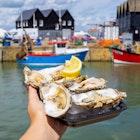
Mar 2, 2024 • 7 min read

Feb 28, 2024 • 9 min read

Feb 27, 2024 • 6 min read

Feb 27, 2024 • 3 min read

Feb 23, 2024 • 6 min read

Jan 27, 2024 • 15 min read

Jan 19, 2024 • 11 min read
HELPING YOU PLAN YOUR PERFECT TRIP TO PORTUGAL
25 essential tips for your first trip to portugal.
This post may contain affiliate links, which means I may receive a commission, at no extra cost to you, if you make a purchase through a link. Please see my full disclosure policy for further information.
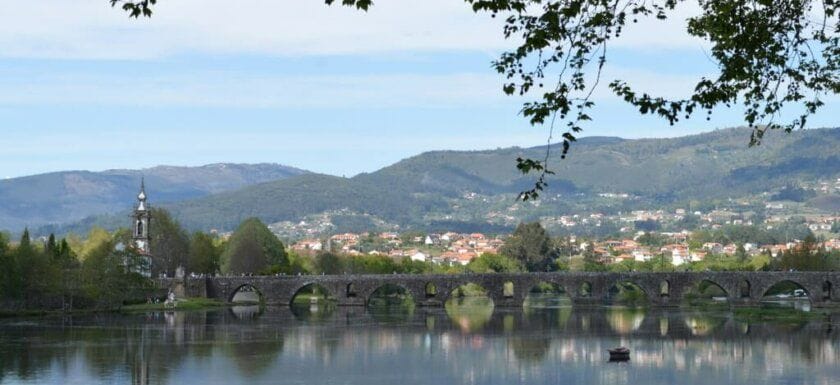
If you’ve never been to Portugal, you’re in for a treat. You might even fall a little bit in love, especially if you know what to expect. My insider Portugal travel tips can help you prepare and make your first trip go as smoothly as possible.
Knowing a little about local customs, especially in restaurants, will help you feel more confident and avoid that nasty suspicion that you’ve been ripped off.
If you’re still trying to decide if Portugal is the place you want to visit then read my Portugal: 15 Reasons To Make It Your Next Destination post.
Read on for my insider advice on planning a trip to Portugal including what to bring, what to expect when eating out and how you can save money on accommodation, transport, food, shopping and activities. This practical travel guide is based on my 16+ years of travelling around Portugal, and helping other people plan their ideal Portugal vacation.
👉ALL THESE TIPS AND MORE IN ONE HANDY EBOOK 👈
I’ve combined these 25 tips with a wealth of other insider insights and practical information to help you avoid costly mistakes and plan your ideal Portugal trip.

Before you book your first trip to Portugal
1 . Try to avoid the hottest, busiest and most expensive months of July and August if possible. You’ll find great deals, good weather (most of the time) and fewer crowds if you travel to Portugal off-season .
Weather-wise, May, June and September are usually hot but not unbearably so and although the risk of rain increases from October to April, and it does get cold at night, it’s possible to get lovely sunny days any time of year. If you’re travelling with young children, these slightly cooler months would make life a little easier – see my practical tips for family travel in Portugal .
Get the full low down on the best time to visit Portugal in this post .
2. Check travel times and distances between places if you’re considering visiting more than one region. It makes far more sense to take your time exploring one area properly and come back later to see another place than to spend half your holiday travelling between destinations.
If you feel you must cram as much as possible into one trip, you can save a few hours by flying between Faro and Porto. There are flights between Lisbon and Porto but when you factor in getting to and from the airport and security checks, I don’t think you save much time compared to train or road transport and it’s not great for the environment.
See my fully-managed Portugal itineraries if you don’t have the time or confidence to plan your own trip to Portugal.
3. If you’re making your own travel arrangements for touring Portugal, find out how to get from the airport to your accommodation before you book your flights. If you’re relying on public transport for transfers, especially between cities, you could get caught out if services finish earlier than you expected or don’t run at weekends.
You can pre-book an airport transfer if you’d rather keep things simple.
You may also want to get a SIM card on arrival so that you’re connected as soon as you arrive and can order an Uber/Bolt. You can buy data and normal SIM cards from the Vodafone shop at Lisbon and Porto airports or, if you intend to a lot of data-heavy work while travelling, an international SIM card may be a better option.
Read my post on why I believe it’s important to consult a travel expert when planning your trip .
Discounts on Portugal travel
4. More and more destinations in Portugal offer a tourist card, such as the Lisbon Card and Porto Card , which give free or discounted public transport and discounts on all manner of typical holiday expenditures.
That said, you need to make sure it’s actually going to save you money so find out which of the places you want to visit offer reduced entrance fees with the cards. If you are over 65, most museums give you 50% discount anyway.
Tip: Check the local tourist information website before you travel to see what’s available and start saving money from the moment you step off the plane.
My favourite sites for saving money on accommodation and car hire are here: Where To Find The Best Portugal Travel Deals .
See my Portugal accommodation guides to help you find a great place to stay
Note that major destinations in Portugal have introduced a tourist tax of €1-2 per person per night to cover the increased pressure on the local infrastructure. You pay this at your accommodation so budget accordingly.
Keep in mind that if you’re a non-EU resident you may be able to claim back the tax you’ve spent when shopping. For details check out my Tax free shopping in Portugal for Non-EU Residents post.
Documents to bring on your Portugal trip
5. Double check that your passport is in date – you may need it to be valid for at least 6 months beyond the date of travel if coming from outside the EU – and bring a couple of photocopies with you.
By law, you have to carry photo ID when in Portugal but won’t want to risk losing your precious passport so leave that in your hotel safe and keep a photocopy with you and carry some alternative form of photographic ID like a driving licence.
6. If you live in the EU, apply for and bring your European Health Insurance Card . It doesn’t substitute full travel insurance but will reduce the costs of emergency treatment. If you’re coming from elsewhere, you should make sure you have insurance to cover health emergencies as the costs can quickly soar. Get a quote from Yonder
7. The good news is that you don’t need any special vaccinations for visiting Portugal unless you’re coming from a Yellow Fever zone.
8. If you have an EU passport, you don’t need a visa to enter Portugal. Other passport holders should check Visit Portugal’s Entry Formalities although American, Canadian and Australian citizens can travel visa-free for 90 days (total) within the Schengen area.
9. If you plan on renting a car, don’t forget your driving licence – if you’re coming from certain countries, you may need an International Drivers’ Permit so check with the rental company and, if necessary, get one before your trip. Drivers with licenses issued in the UK, USA and Canada don’t need an IDP.
You need to have your licence with you when driving in Portugal plus the paperwork for the car and your ID.
See these essential tips for renting a car in Portugal

Money matters when visiting Portugal
10. I always like to have some local currency on me when I arrive in a foreign country but if you do land in Portugal without euros, there are ATMs (look for Multibanco signs) in all international airports and towns so you can withdraw euros directly from your bank account or top up your cash if you run out. Avoid Euronet machines as their charges can be extortionate.
11. Although credit cards are accepted in many places, smaller outlets, including some restaurants, only take cash. Note that if you pay by credit or debit card you will probably be charged for each transaction so check with your bank before deciding how you want to pay for purchases.
12. If you exchange money before travelling to Portugal, try to avoid bringing large bills, i.e. bigger than 50 euros. If your currency exchange provider has given you a stack of 100, 200 or worse, 500 euro notes, take them into a local bank when you arrive to get a stash of smaller notes.
Packing tips for a trip to Portugal
13. Clothes-wise, several thin layers are a good idea as they allow you to adapt to changeable temperatures. Loose, lightweight natural fibres will help you cope with the summer heat but you’ll need jeans/heavier trousers and sweaters in winter.
Bring comfy shoes or sandals, depending on the season, preferably with fairly thick non-slip soles. When you see the uneven cobbled pavements , you’ll understand why. Don’t wear spiky heels unless you want to ruin them or break your ankle.
For detailed advice about what to bring, read my guide to packing for Portugal .
If you’re coming to do a walking holiday, this article about what to pack for long distance hikes may be more relevant.
14. If you’re venturing deep into rural Portugal, you’ll need to be better equipped as local shops stock a more limited range of products. In the natural parks, shops of any description are few and far between.
15. It’s not standard practice for Portuguese accommodations to have tea-making facilities in guest rooms even if they do have a fridge. If you can’t live without your cuppa, pack a travel kettle and a few decent tea bags. Be warned that fresh milk is much harder to find than UHT in Portugal so you might prefer black or herbal teas.
16. Even if you’re travelling to Portugal in winter , you should bring sunglasses and use factor 30 sun cream as minimum if you have fair skin. Bring a fold-up umbrella too, just in case. You’ll need a hat in summer and insect repellent if, like me, you attract mosquitoes and other biting insects.
17. When visiting a major tourist destination like the Algarve, Porto or Lisbon, or basically any large town or city, don’t worry if you forget to pack something or are hampered by hand luggage restrictions. With the exception of obscure prescription medication, you can buy pretty much anything you’re likely to need in Portugal although some things, like sun cream and bug repellent, may be a little pricier.
Learn a little Portuguese
18. While it’s perfectly possible to get by in English in the major tourist areas, learning a few simple phrases in Portuguese will go a long way.
No one expects foreigners on holiday to be proficient in the language but just saying thank you in Portuguese is appreciated. It’s obrigado if you’re a man and obrigada if you’re a woman, by the way.
There are plenty of free and affordable resources to help you learn European Portuguese .
As for Portuguese phrasebooks , the best of the bunch is probably the Lonely Planet Portuguese Phrasebook & Dictionary , which has sections on eating and drinking as well as all the functional language you’d expect and help with pronunciation.

Eating out in Portugal – tips for travellers
The most common complaint I see on TripAdvisor is from people who think they’ve been ripped off by Portuguese restaurants. Most of the time, it’s simply a case of not knowing the local customs.
19. It’s standard practice for waiters to bring you little dishes of olives, bread, cheese and cold meats but they are not freebies unless they are part of a set menu.
If you don’t want them, just politely send them back untouched and you won’t be charged. Strictly speaking, you shouldn’t be charged for items you didn’t order but it avoids confrontation if you know how to deal with this in advance.
If you are tempted but worried about the creeping cost of your final bill, check the price before tucking in. The bread and olives are usually very cheap.
20. Super-fresh fish and seafood are among Portugal’s gastronomic highlights.
Seafood restaurants often have a selection of the catch of the day displayed on a bed of ice. You choose the fish and they grill it to perfection. In such cases, it’s hard to know how much it will end up costing as the fish is charged by weight. To get an idea of the price and avoid a nasty surprise at the end of a lovely meal, ask the waiter for an estimate during the selection phase.
Alternatively, order a Cataplana de Marisco (seafood casserole) or Arroz de Marisco (seafood rice) which are usually stuffed with ocean goodies for a fixed price.

21. Don’t be surprised if your main course seems lacking in vegetables. Many Portuguese people get their greens and other vegetables by starting a meal with a soup. Ask what the main dish is served with and order a side salad or vegetables if you feel the need.
22. Unlike in the UK where a waiter will usually take your drinks order while you’re contemplating the menu, food gets priority in Portugal. The waiter may bring some unsolicited (but not free – see above) appetisers to your table before taking your order but will often not ask about drinks until the food has been dealt with. If you’re parched and need a drink while deciding, you’ll need to initiate the drinks order when the waiter brings the menu.
23. A great way of economising on eating out is to do what the locals do and have a main meal at lunchtime with a menu do dia (set menu of 2-3 courses) or prato do dia (dish of the day). Check what is and isn’t included before saying yes to everything the waiter offers you but generally speaking, you can get a 3-course meal with wine for under 10 euros.
See this post about Portuguese food you should try
Read about wonderful Portuguese drinks, beyond wine.
More information in How To Order Like A Local At Restaurants, Cafés & Bars In Portugal
The first two of these books about Portuguese food have lots of practical information to help you be more adventurous when trying local dishes.
Festivals and sightseeing in Portugal
24. It’s well worth checking out some of the local events while you’re here. Every town, village and city has at least one food or saint-related festival at some point during the year, especially during the summer months.
My guide to Portuguese festivals and celebrations gives you a seasonal sense of what’s on.
The Visit Portugal website has details of major events including music festivals, sports championships and film festivals.
For smaller events, look out for somewhat garish posters on lamp posts and bus stops or check with the local tourist information office or regional tourism websites such as Visit Algarve to find out what’s on during your stay but don’t expect the information to be published more than a few weeks in advance.
25. If you intend to visit museums and monuments, there are two important things to consider. One is that some offer free admission on Sunday mornings or discounts with the local tourist card.
The other is that most are closed on Mondays so you’ll need to check and plan around this if you have your heart set on seeing something specific.
If you need help with your Portugal itinerary, I can get you on the right track with a range of trip planning services .
Bonus tip: Getting through customs in Lisbon airport
Sometimes there is a very long queue at customs when you arrive in Lisbon airport, often early in the morning when international flights arrive (don’t ask me why they haven’t organised staffing to deal with this!).
If you have an EU passport you can use the EU passport line to avoid the longer “All passports” queue.
If you don’t have that option, the Priority Passport Line, which is mainly for crew, is also an option for anyone who is disabled, pregnant, elderly or traveling with children under two.
If none of those apply, you could be in for a long wait so go to the bathroom before joining the queue.
When it’s time to leave Portugal, you may be able to claim tax back on shopping you’ve bought. To find out what you need to do check out my Tax free shopping in Portugal for Non-EU Residents post.
Looking for a Portugal travel guide book?
Click on the links below to see my top picks via Amazon
My first choice would be a DK Eyewitness Travel Guide to Portugal , partly because I’ve contributed to them in the past and partly because I like the pictures, maps and layout.
The Frommer’s Portugal Guide is written by two well-respected journalists who live in the Lisbon area, one Portuguese and the other British. Having met them both, I would certainly trust their recommendations.
I also like Rough Guides’ approach to travel guides and their Portugal travel guide is no exception.
You may also be interested in:
15 Fantastic day trips from Porto
How and when to explore the Douro Valley
25 things to do in Coimbra
Pin me for later!

First trip to Portugal? Here are 25 essential tips.
104 Comments
We are a family of 5 traveling in June to Lisbon to spend 4 days then 3 days in Porto, than back to Lisbon for 1 more day before we leave. Wondering if public transportation is the way to go to get around- WE are a family of 5 and not if that is the most cost efficient. Our kids are older teenagers’ and will want to indulge in food and wine and culture. Any recommendations would great be appreciated- Your site is great too
Thanks Ricardo, that means a lot to me.
Over to you. Please share your thoughts in a comment. Cancel reply
Content copyright © Julie Dawn Fox, 2010-2024 | Privacy Policy | Disclaimer & Disclosure | Advertising & Media | Terms & Conditions | Shipping, Refund & Returns Policy | Contact | Camino Português | Sustainability Policy
Nomadic Matt's Travel Site
Travel Better, Cheaper, Longer
Portugal Travel Tips
Last Updated: September 1, 2023
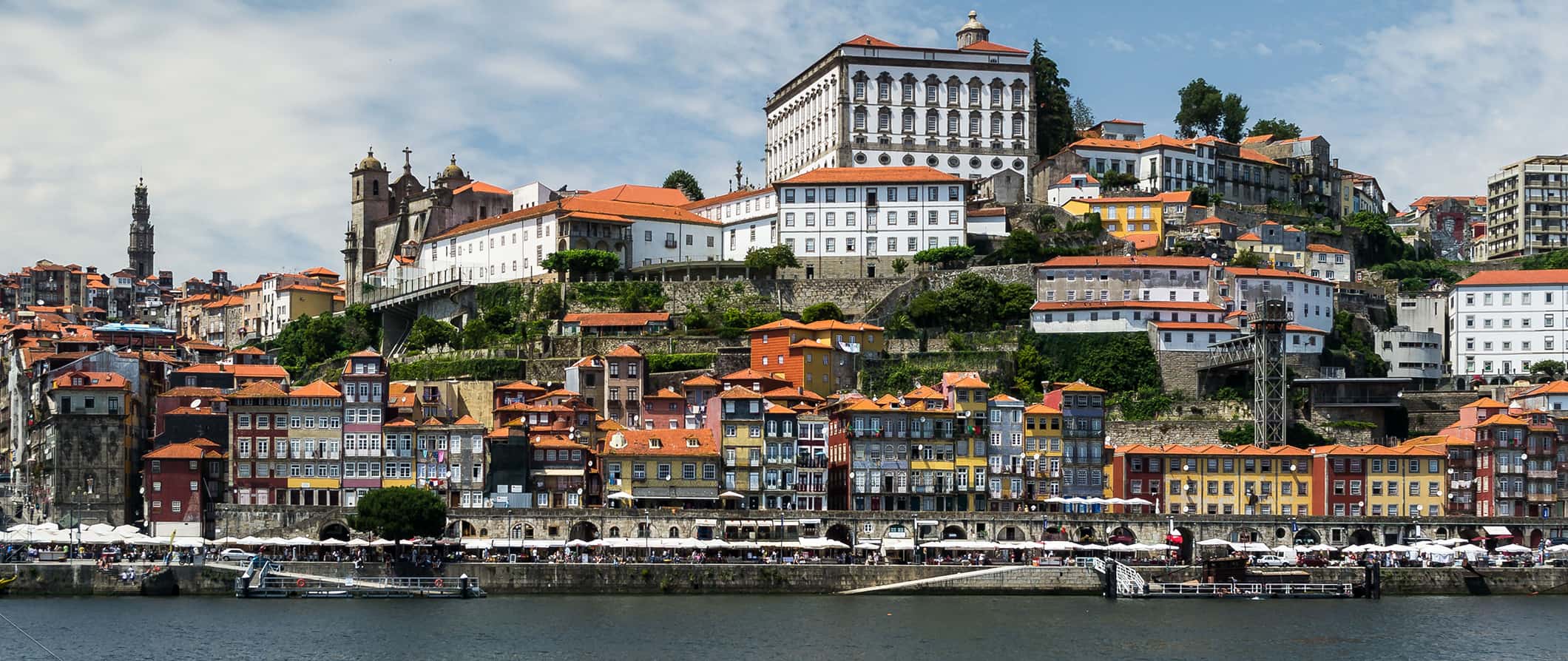
I’ve been to Portugal many times over the years and I never tire of it . It’s one of the most unappreciated countries in Europe and sees a fraction of the tourists that its neighbors do.
Sure, in recent years Lisbon has become a hub for digital nomads, expats, and retirees thanks to its low cost of living. But, in the rest of the country, not much has changed.
Best of all, fewer crowds mean a better, more local experience that won’t break the bank.
This Portugal travel guide can help you plan your trip, save money, and make the most of your time in this stunning and underrated European gem!
Table of Contents
- Things to See and Do
- Typical Costs
- Suggested Budget
- Money-Saving Tips
- Where to Stay
- How to Get Around
- How to Stay Safe
- Best Places to Book Your Trip
- Related Blogs on Portugal
Click Here for City Guides
Top 5 things to see and do in portugal.
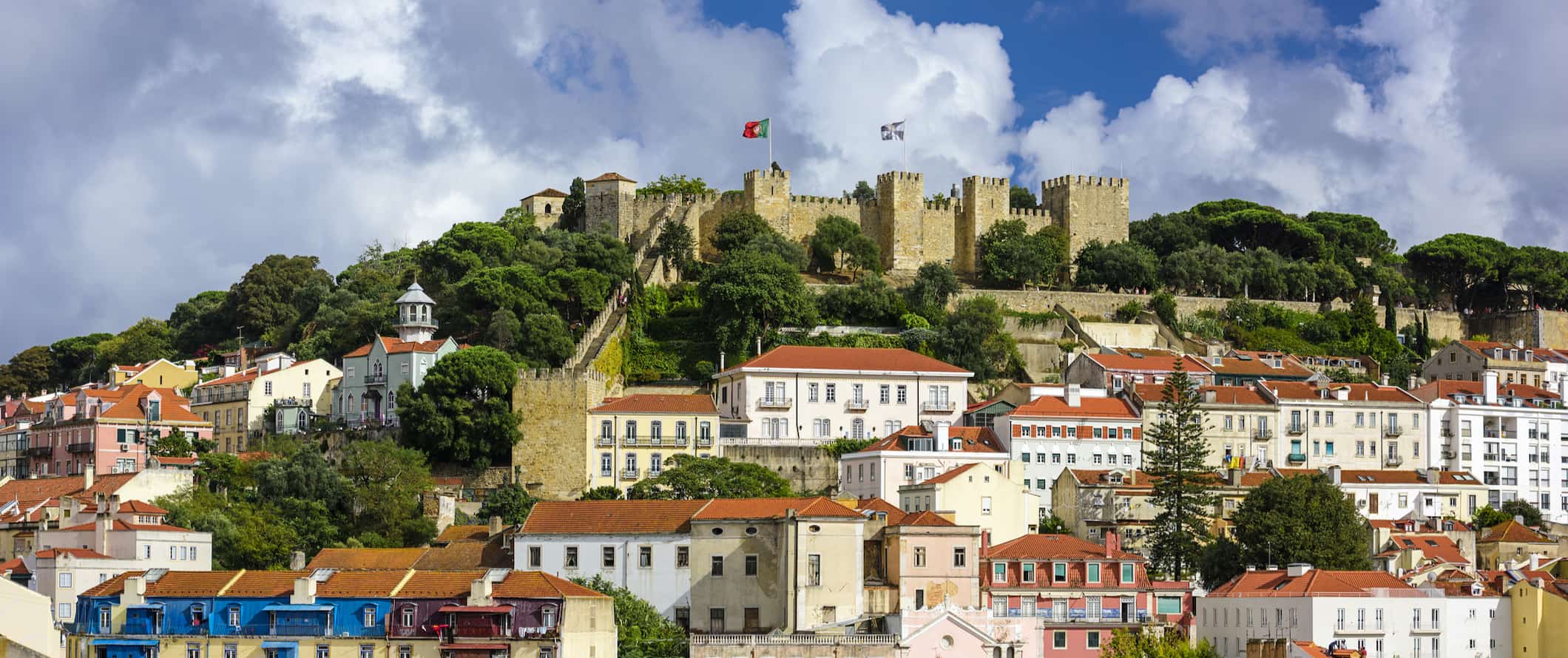
1. Admire Lisbon
Lisbon is gorgeous. I instantly fell in love with it. It has mystique, history, and great food. Take a trip to the Castle of St. George, see the 16th-century UNESCO Belem Tower, admire the churches (specifically the Sé de Lisboa Cathedral), listen to some traditional Fado music, and enjoy the delicious cuisine. It’s one of the most affordable and underrated capitals in Europe!
2. Visit Batalha Monastery
Batalha is a town located just 90 minutes by car from Lisbon. The town is home to Batalha Monastery, officially known as the Monastery of Saint Mary of the Victory. Built in 1388, it’s one of Europe’s greatest Gothic masterpieces and makes for a popular day trip from Lisbon. The monastery took 131 years to build and is now a UNESCO World Heritage Site. Walking through the gigantic gothic doorway and seeing the towering interior (which is lined with 16th-century stained-glass windows) is absolutely breathtaking. Admission is 6 EUR, but you can also purchase a combo ticket to see The Convent of Christ in Tomar and The Abbey of Santa Maria for 15 EUR.
3. Explore the Azores
These 9 islands lie 1,500 kilometers (930 miles) from Lisbon in the Atlantic Ocean. Each of the islands offers a slow-paced way of life, unique wildlife, and stunning beaches. These islands are very off the beaten track and a good “out of the way” place to go. São Miguel is great for hiking and road trips, Pico has great wine, and São Jorge has incredible nature, but you can’t go wrong with any of the islands here!
4. Party in Lagos
Lagos is the place people go to party in Portugal. It’s an excellent destination to soak up the sun. During the summer, this is one of Europe’s premier party destinations for young travelers. there are also incredible beaches, great surfing, and lots of historic churches here. The city is also home to Europe’s first slave market, a sobering sight that dates back to 1444.
5. Enjoy Porto
Porto is one of Portugal’s most colorful cities. Spend some time getting lost and meandering the narrow alleyways and steep staircases that lead to the scenic Douro River. Hop on a river cruise, visit the iconic Lello & Irmão bookstore, tour the museums, and visit the surrounding Duoro Valley and its many vineyards (this is the region where port wine comes from, hence the name). It’s also one of the main launching points for the famous Camino Portugues hike that leads to Santiago de Compostella in Spain (which takes 10-14 days, though you can definitely just do a day hike or a smaller section of the trail).
Other Things to See and Do in Portugal
1. journey to evora.
One of Portugal’s many UNESCO World Heritage Sites, Evora is a small town that offers an array of beautiful and historic buildings. Located 90 minutes east of Lisbon, Evora’s most famous landmark is the Temple of Diana, a Roman temple and UNESCO site from the 1st century. But there is also the Praça do Giraldo, the town’s main square, which is a charming spot to people-watch and embrace the local pace of life. This is small-town Portugal at its best.
2. See the Religious Monuments in Braga
Located one hour north of Porto, the beautiful city of Braga boasts numerous Baroque monuments, including one of the country’s best-known sights: the Bom Jesus Sanctuary (a Catholic shrine and pilgrimage site). The old and the new city are connected by the main square, Praça da Republica, which is a great place for a stroll. The city’s cathedral is also very much worth a visit, as it is the country’s oldest (construction started in 1509).
3. See the Abbey of Santa Maria
Located between Lisbon and Porto, the Abbey of Santa Maria is Europe’s largest Cistercian building (the Cistercians are a Catholic order of monks and nuns, founded in 1098). You can wander around the abbey at your leisure to learn more about its cloisters, dormitories, library, and more. The church is free to enter but the monastery costs 6 EUR. You can save money by purchasing a combo ticket to the Convent of Christ in Tomar and the Batalha Monastery for 15 EUR.
4. Head to Sintra
Lord Byron, an English poet writing in the 18th century, said that Sintra was “perhaps in every respect the most delightful [place] in Europe.” If you are visiting Lisbon, you should definitely make an effort to come here to see its palaces, wonderful views, and museum collections. It’s one of the most beautiful places in the entire country. The train takes about an hour from Lisbon and costs under 5 EUR.
5. Learn about the Knights Templar in Tomar
The big attraction in the town of Tomar is the Templar Castle and Convent of Christ. It was the headquarters for the Knights Templar in the 12th century (they were a Catholic military order founded in 1118 that fought in the Crusades). The castle, a UNESCO World Heritage Site, was an important defensive stronghold against the encroaching Moors (Muslims from North Africa who eventually conquered parts of Spain and Portugal). Admission is 6 EUR or 15 EUR with a combo ticket.
6. Hit the water
Aveiro, located 72 kilometers (45 miles) south of Porto, lies on what’s known as the Silver Coast. This small university town has a historic center built on canals, giving rise to its nickname “the Venice of Portugal.” The winds here create good opportunities for windsurfing and surfing too. You can rent surfboards for as little as 15 EUR per day, while kitesurfing and windsurfing rentals around 50 EUR. If you want lessons, most two-day courses cost around 130 EUR.
7. Get lost in Coimbra
Another university city, Coimbra is located between Lisbon and Portugal and is home to one of the world’s oldest universities (the university was founded in 1290 and moved to Coimbra in 1537). There is a famous and beautiful old library that you can tour, but the real thing to do in Coimbra is just wander through its many historic streets. There are plenty of churches and gardens to take in as you stroll around soaking up the history. It’s a postcard-perfect destination.
8. Attend a Fado performance
Fado is a local type of music that originated in Lisbon. It’s a rather haunting, mournful style often focused on the hardships of the poor or life at sea. The music first appeared in the 19th century and was popular with the working class (especially sailors). The word “fado” likely stems from the Latin word for fate, which is why many of the songs focus on the inevitability of misfortune and suffering. While melancholic, the music is also beautiful and poetic.
9. Check out Faro
Faro is a common starting point for tours of the Algarve region, a southern region brimming with great beaches, tasty seafood, and plenty of tourists. Faro itself isn’t a beach city, but has a lovely old town and is a great place to spend a day before you explore the coast. Don’t miss the cathedral and the municipal museum to learn more about the city.
10. Stand at the edge of Europe
Cape Sagres is the most southwestern point on the European continent. It was here that Henry the Navigator, one of Portugal’s most revered figures during its empire, had his famous navigation school. He was one of the central figures to kick start the Age of Discovery in the 15th century that put Portugal on the map (literally). His development of lighter caravel ships allowed explorations in West Africa, which also launched the slave trade.
11. Try a Pastéis de nata
This pastry is a Portuguese staple. You’ll find these delicious custard-filled tarts at every bakery. They’re a must for an authentic food experience and cost around 1 EUR.
12. Walk the Templar Stairs
Located in Sintra, Quinta da Regaleira is a UNESCO World Heritage Site composed of several historic buildings, including a huge palace and chapel. But the highlight is the Initiation Wells, two massive wells that stretch far underground. They were built by the Templars for their initiation rituals. Would-be knights would have to travel down a winding staircase into the massive wells blindfolded and navigate a labyrinth before coming back to the light. Today, you can tour the wells and explore them yourself. Admission is 10 EUR.
The Camino Portugues (The Portuguese Way) is a pilgrimage trail that stretches from Lisbon to Santiago de Compostela in Spain. It’s the second most popular Camino, after the main French Way, though it sees a fraction of pilgrims compared to the main route. Most hikers start in Porto, with the 280 kilometers (173 miles) journey taking around 10-14 days, though it’s also possible to start in Lisbon for a longer trek.
For more information on other destinations in Portugal, check out these guides:
- Lagos Travel Guide
- Lisbon Travel Guide
- Porto Travel Guide
Portugal Travel Costs
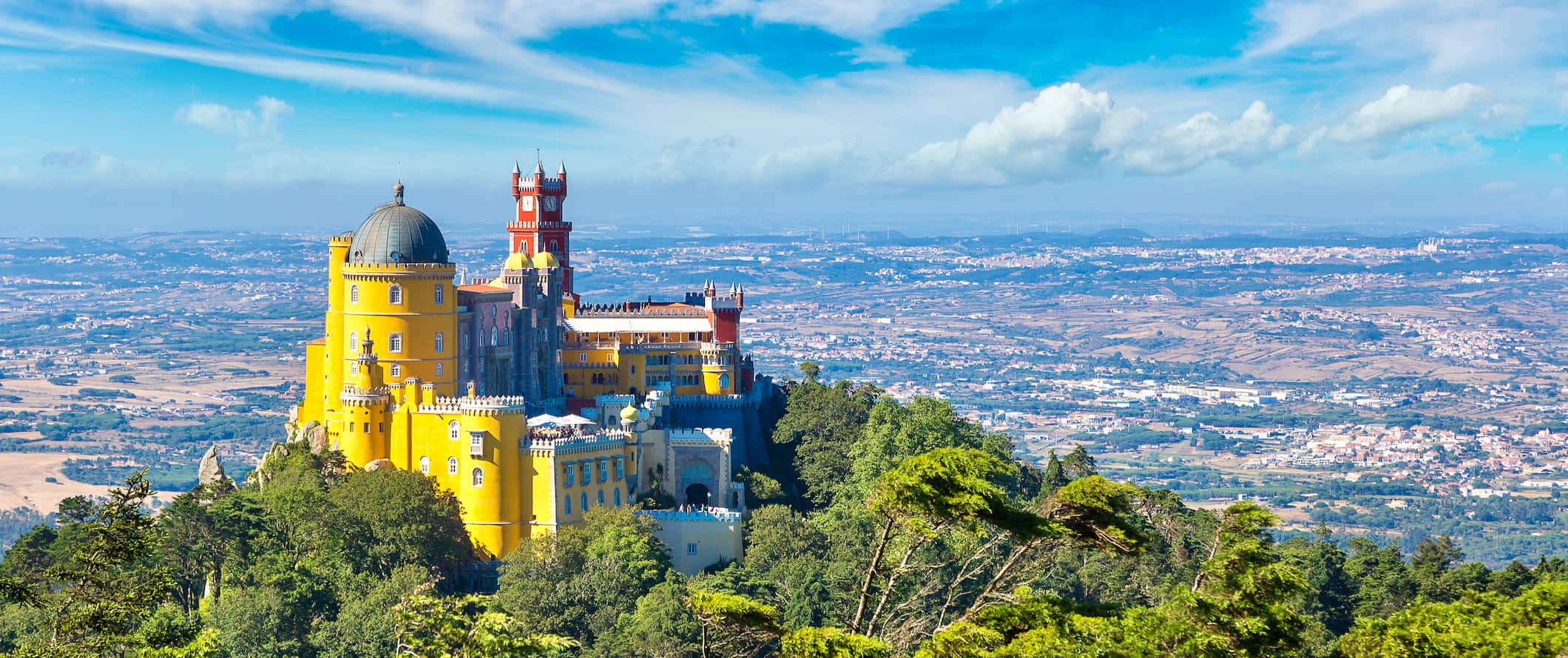
For those traveling with a tent, camping is available around the country for 10-20 EUR per night for a basic tent plot without electricity.
A room in a two-star budget hotel costs between 40-75 EUR per night. Expect basic amenities like free Wi-Fi and TV. Free breakfast is sometimes included as well.
On Airbnb, private rooms start at 30-50 EUR per night while entire homes/apartments average around 100 EUR.
Food – Fish and seafood form the backbone of Portuguese cuisine (Portugal eats the most seafood per capita in Europe). Cod, sardinhas assadas (grilled sardines), sea bass, and shellfish are some of the most common staples. Other popular dishes include cozido à portuguesa (boiled stew), peixinhos da horta (breaded and fried vegetables), and cured ham. Be sure to also try the prego (beef sandwich) or the bifana (pork sandwich). You can find them at local cafes for just 5 EUR.
You can find snacks in bakeries for 2 EUR or less, light meals and sandwiches for around 8-10 EUR, and fast food for around the same price.
If you want a three-course meal with drinks, you’re looking at spending closer to 20 EUR. After that, the sky is the limit!
For a casual restaurant meal, expect to pay around 10 EUR.
Beer is around 3 EUR while a latte/cappuccino costs around 2.50 EUR. Bottled water is less than 1 EUR.
If you’re cooking, groceries cost around 35-45 EUR for a week’s worth of food. This includes staples like pasta, rice, produce, and some meat or seafood.
Backpacking Portugal Suggested Budgets
On a backpacker budget, you can visit Lisbon for around 45 EUR per day. On this budget, you’ll be staying in a hostel dorm room, cooking all of your meals, limiting your drinking, using public transportation to get around, and sticking to free activities like free walking tours, enjoying the beaches, and exploring the Old Town. If you plan on drinking, add 5-15 EUR per day to your budget.
On a mid-range budget of 125 EUR per day, you can stay in a private Airbnb or private hostel room, eat at cheap local restaurants and cook some meals, use public transportation and take the occasional taxi, visit paid attractions like the botanic gardens and Belem Tower, and enjoy some drinks at the bar.
On a “luxury” budget of 235 EUR or more a day, you can stay in a hotel, eat out for every meal, drink what you want, rent a car to explore the region, and visit as many museums and attractions as you’d like. This is just the ground floor for luxury though — you can easily spend more if you really want to splash out!
You can use the chart below to get an idea of how much you need to budget daily. Keep in mind these are daily averages – some days you spend more, some days you spend less (you might spend less every day). We just want to give you a general idea of how to make your budget. Prices are in EUR.
Portugal Travel Guide: Money-Saving Tips
For the most part, Portugal is an incredibly affordable destination. Food, accommodation, wine – it’s all very cheap (especially when compared to other EU countries). As long as you’re not splurging on a ton of booze or eating at the overpriced tourist restaurants, you’ll find it easy to save big while still enjoying yourself. Here are a few more ways to save money in Portugal:
- Look for free museum visits – Some museums are free on Sundays. Check with the local tourism board or the museum’s website for more information on free/discounted hours.
- Skip the taxis – Taxis add up so if you’re on a budget, skip the taxis and use the metro or bus system to go where you need to.
- Say “no” to bread – When eating out, a selection of bread and olives may be brought to your table before your meal. These aren’t free, so just say no if you’re on a budget.
- Stay at a pensão – These family-run inns offer decent lodgings for very little money and are a great alternative to hotels.
- Get a tourist card – Certain cities, like Porto and Lisbon, offer tourist cards that provide unlimited access to public transportation (normally for one, two, or three days) and free or discounted access to museums and monuments. If you plan to see lots of sites, be sure to go to the local tourism office and pick up one of these cards!
- Stay with a local – If you plan ahead, you can usually find Couchsurfing hosts all throughout the country. This way, you not only have a free place to stay but you can connect with a local who can share their insider tips and advice. Just send your requests early in the summer.
- Cook your meals – Restaurants here are cheap, but eating out all the time adds up. Visit the local market to stock up on groceries and cook a few meals. You’ll save a ton!
- Bring a water bottle – The tap water here is safe to drink so bring a reusable water bottle to save money and reduce your plastic use. LifeStraw is my go-to brand as their bottles have built-in filters to ensure your water is always clean and safe.
Where to Stay in Portugal
Budget accommodation is plentiful in Portugal. Here are my suggested places to stay:
- Lookout! Lisbon Hostel (Lisbon)
- Lisboa Central Hostel (Lisbon)
- Yes! Lisbon Hostel (Lisbon)
- Rising Cock Party Hostel (Lagos)
- Gold Coast Calm Hostel (Lagos)
- Casa D’Alagao (Faro)
- HI Hostel Faro (Faro)
- Rivoli Cinema Hostel (Porto)
- Gallery Hostel (Porto)
- Pilot Design Hostel & Bar (Porto)
How to Get Around Portugal
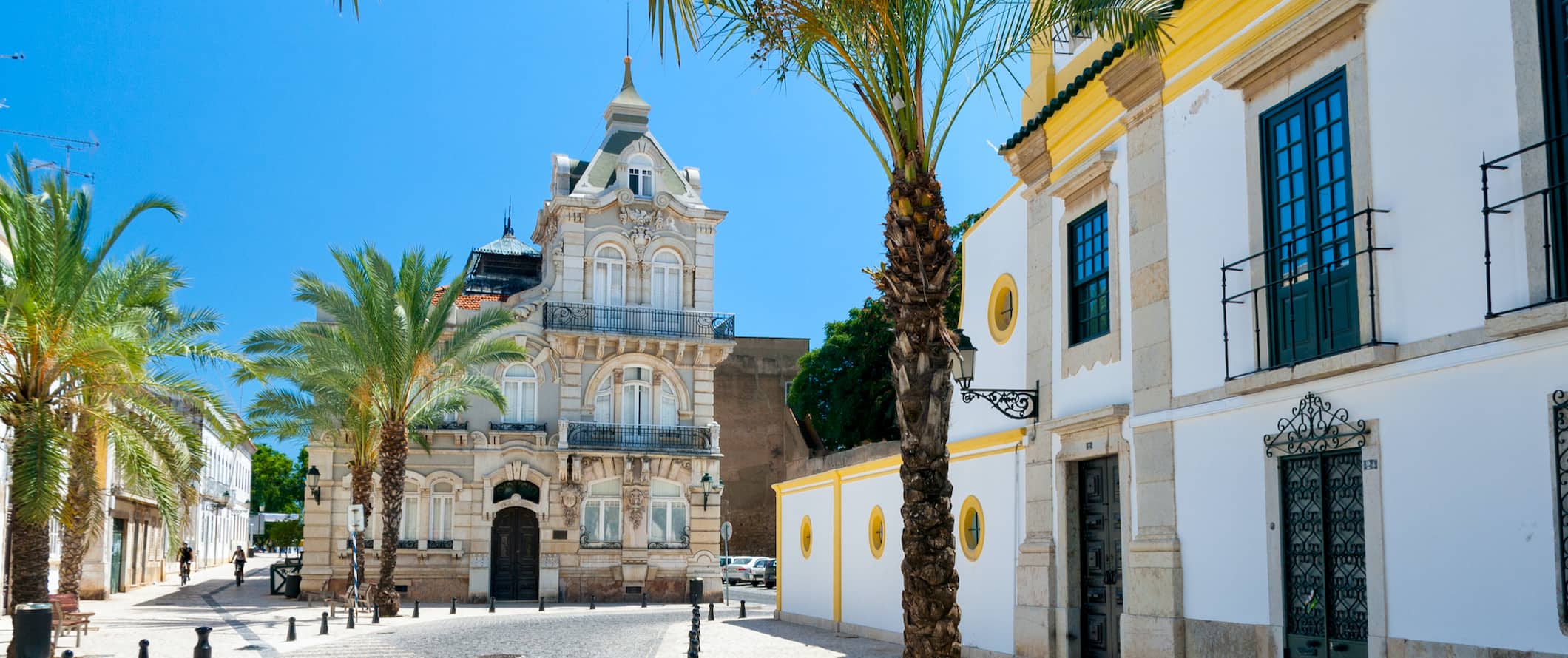
Train – Portugal has a great rail system. Tickets are affordable, with a ride from Porto to Lisbon costing around 25 EUR. Even the high-speed rail is affordable (unlike in many other European countries); it’s about the same price between Porto and Lisbon as the regular train. A train trip between Braga (in the far north) to Faro (at the southern tip) costs between 65-75 EUR.
Bus – Buses are the cheapest way to explore, and they’re also not super time-consuming since Portugal isn’t a huge country. A cross-country bus from Lisbon to Lagos costs between 15-20 EUR, while an eight-hour journey from Braga to Faro costs around 30 EUR.
Lisbon is the main hub for budget-friendly Flixbus routes around the country. It’s the cheapest way to get from Portugal and into the rest of Europe. A bus to Madrid, Spain costs around 30 EUR.
Flying – Flying is the best way to get to the Azores, though it’s likely not worth it for getting around the mainland. A flight from Lisbon to the Azores costs as little as 50 EUR, while Lisbon to Madeira starts at about 40 EUR. TAP Air is Portugal’s official airline.
Taxis – Taxis start at 3.50 EUR and go up by about .80 EUR per kilometer. Skip them if you can as they add up fast!
Ridesharing – Uber is available in Portugal’s larger cities but it’s not much cheaper than taxis. I’d still skip ridesharing altogether if you’re on a budget.
Bike rental – Locals like to get around by bike and bike rentals are available in all the major cities. You can rent a basic city bike for around 10-15 EUR per day.
Car rental – Car rentals cost as little as 25 EUR per day for a multi-day rental. It’s a super affordable way to explore if you have someone to split the cost with (especially in the Azores). Drivers need to be at least 18. For the best rental car deals, use Discover Cars
When to Go to Portugal
Peak season in Portugal is during the summer months of June-August. Temperatures hover around 23°C (74°F) and popular destinations like Porto and Lisbon experience an influx of visitors. Prices increase during this time as well. But the overall atmosphere and weather are great, so it’s still worth visiting during peak season.
Personally, I think the best time to visit Portugal is the shoulder season in the spring and fall (April-May and September-October). Temperatures range from 18-22°C (65-71°F) so it’s still warm enough to explore and enjoy the outdoors. There aren’t as many crowds and prices are cheaper, making it an ideal time for budget travelers.
Winter is from November to February. It gets cold and tourist crowds thin out considerably. Temperatures vary quite a bit from place to place, but overall, the temperature averages around 12°C (53°F). I’d avoid visiting in the winter if you can, however, if you’re on the continent already Portugal is one of the warmer places to spend the winter.
How to Stay Safe in Portugal
Portugal is very safe for backpacking and solo travel as violent attacks are uncommon. Pickpocketing is the most common crime and can occur in touristy areas and on public transportation. Be aware of your surroundings when you’re in markets, on busy streets, and when using the metro. Always keep your valuables secure and out of sight just to be safe.
Drugs here have been decriminalized, but it’s best to avoid them as selling drugs is still illegal. If approached and offered drugs, politely decline and continue on your way
You won’t find a lot of travel scams in the country but read this article on common travel scams to avoid just to be safe.
Solo female travelers should generally feel safe here, however, the standard precautions apply (never leave your drink unattended at the bar, don’t walk home alone at night if intoxicated, etc.).
If you experience an emergency, dial 112 for assistance.
Remember: always trust your gut instinct. If a taxi driver seems shady, stop the cab and get out. If your hotel is seedier than you thought, get out of there. You have every right to remove yourself from the situation. Make copies of your personal documents, including your passport and ID. Forward your itinerary along to loved ones so they’ll know where you are.
The most important piece of advice I can offer is to purchase good travel insurance. Travel insurance will protect you against illness, injury, theft, and cancellations. It’s comprehensive protection in case anything goes wrong. I never go on a trip without it as I’ve had to use it many times in the past. You can use the widget below to find the policy right for you:
Portugal Travel Guide: The Best Booking Resources
These are my favorite companies to use when I travel. They consistently have the best deals, offer world-class customer service and great value, and overall, are better than their competitors. They are the companies I use the most and are always the starting point in my search for travel deals.
- Skyscanner – Skyscanner is my favorite flight search engine. They search small websites and budget airlines that larger search sites tend to miss. They are hands down the number one place to start.
- Hostelworld – This is the best hostel accommodation site out there with the largest inventory, best search interface, and widest availability.
- Booking.com – The best all around booking site that constantly provides the cheapest and lowest rates. They have the widest selection of budget accommodation. In all my tests, they’ve always had the cheapest rates out of all the booking websites.
- HostelPass – This new card gives you up to 20% off hostels throughout Europe. It’s a great way to save money. They’re constantly adding new hostels too. I’ve always wanted something like this and glad it finallt exists.
- Get Your Guide – Get Your Guide is a huge online marketplace for tours and excursions. They have tons of tour options available in cities all around the world, including everything from cooking classes, walking tours, street art lessons, and more!
- The Man in Seat 61 – This website is the ultimate guide to train travel anywhere in the world. They have the most comprehensive information on routes, times, prices, and train conditions. If you are planning a long train journey or some epic train trip, consult this site.
- Rome2Rio – This website allows you to see how to get from point A to point B the best and cheapest way possible. It will give you all the bus, train, plane, or boat routes that can get you there as well as how much they cost.
- FlixBus – Flixbus has routes between 20 European countries with prices starting as low 5 EUR! Their buses include WiFi, electrical outlets, a free checked bag.
- SafetyWing – Safety Wing offers convenient and affordable plans tailored to digital nomads and long-term travelers. They have cheap monthly plans, great customer service, and an easy-to-use claims process that makes it perfect for those on the road.
- LifeStraw – My go-to company for reusable water bottles with built-in filters so you can ensure your drinking water is always clean and safe.
- Unbound Merino – They make lightweight, durable, easy-to-clean travel clothing.
- Top Travel Credit Cards – Points are the best way to cut down travel expenses. Here’s my favorite point earning credit cards so you can get free travel!
- BlaBlaCar – BlaBlaCar is a ridesharing website that lets you share rides with vetted local drivers by pitching in for gas. You simply request a seat, they approve, and off you go! It’s a cheaper and more interesting way to travel than by bus or train!
Portugal Travel Guide: Related Articles
Want more info? Check out all the articles I’ve written on Portugal travel and continue planning your trip:
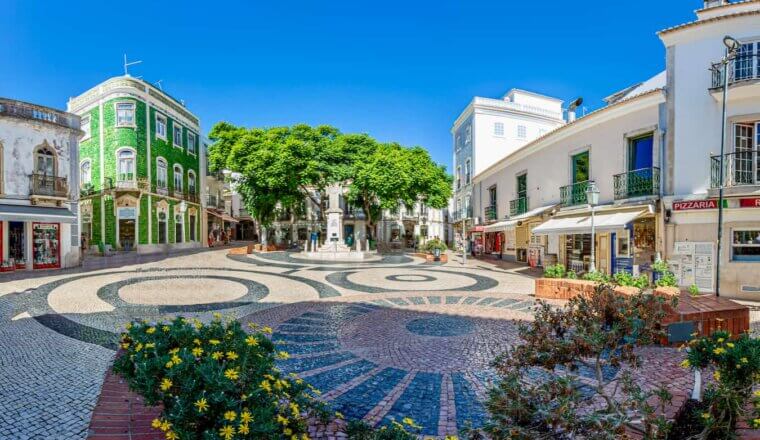
The 4 Best Hostels in Lagos, Portugal
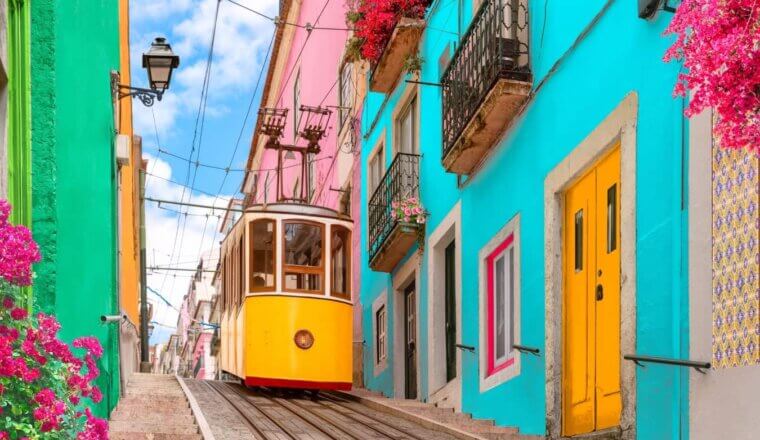
The Best Walking Tours in Lisbon
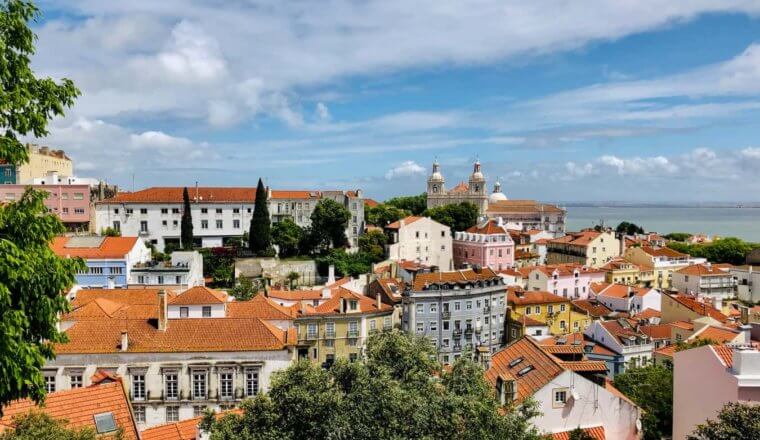
Where to Stay in Lisbon: The Best Neighborhoods for Your Visit
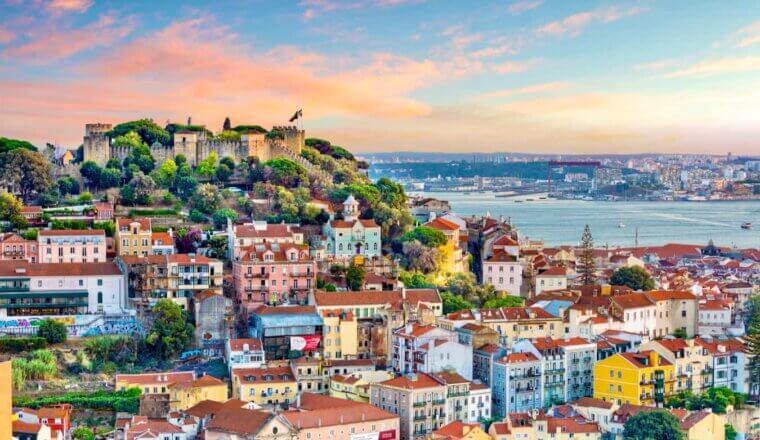
The 9 Best Hostels in Lisbon
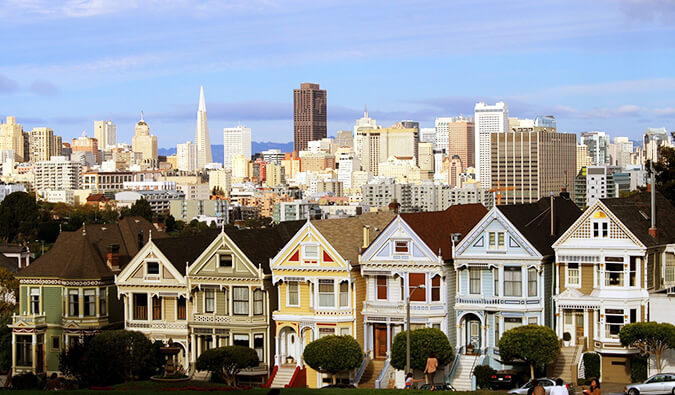
When Three Days Is Not Enough Time
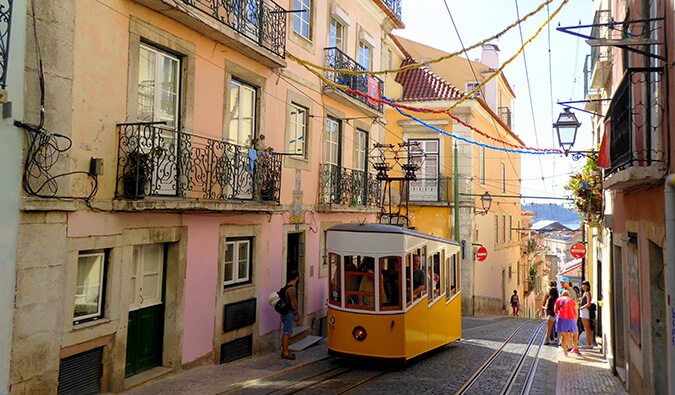
Lisbon: Even Better the Second Time
Get my best stuff sent straight to you, pin it on pinterest.
- Where To Stay
- Transportation
- Booking Resources
- Related Blogs
20 essential Portugal travel tips for year round trips
Book your individual trip , stress-free with local travel experts
- roughguides.com
- portugal-travel-tips
written by Rough Guides Editors
updated 22.07.2021
Anyone planning to travel to Portugal can use these Portugal travel tips. This is one of Europe’s oldest extant nations. It's an ancient kingdom defended by hilltop castles and dramatic walled towns. The coast covers 1793 kilometres. And the choice of beaches alone is vast. So take a look at our 20 top travel tips for Portugal. Avoid the crowds and get more for your euros. The information in this article is taken from The Rough Guide to Portugal , your travel guide for Portugal.
1. Think about visiting Portugal off-season
2. get off the beaten track in portugal, 3. portugal travel tips for eating and drinking like locals, 4. take a walk to find hidden portugal, 5. don’t assume the starters are free, 6. choose transport wisely in portugal, 7. portugal travel tips for vegetarians: beware soup, 8. budget travel tips for portugal, 9. get into local football, 10. bring your kids travelling in portugal, 11. you’ve heard of red, white and rosé wine, but green.
- 12. Watch out for Portugal's business hours
13. Take an epic trip by road, train, bicycle or on foot
14. pick up fantastic local products, 15. explore portugal’s first and only national park.
- 16. Browse the country's marvellous markets
17. Walk the halls of the oldest university in Portugal
18. experience what lisbon has to offer, 20. portugal travel tips for would be surfers, tailor-made travel itineraries for portugal, created by local experts.

7 days / from 3062 USD
Iberian Blend - Porto and Galicia
Neighbour countries - Portugal and Spain, different and similar at the same time, will surprise you with hospitality and loveliness. This itinerary includes the route of the Northwest part of Iberian Peninsula and offers you to meet beautiful Porto and stunning Vigo in Galicia/Spain.
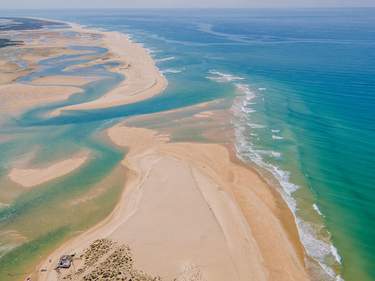
7 days / from 3019 USD
The Real Algarvian Experience
Experience and discover the real Algarve – taste local produce, drinks and traditional dishes, visit heritage sites and participate in culinary activities. If you are passionate about the people’s culture and gastronomy and want to learn more, this itinerary is for you.

11 days / from 1728 USD
A self drive to Portugal's North and Center
Starting in fascinating Lisbon, this trip allows you to discover Portugal both on your own as well as with guided tours. Driving further up north you'll explore Coimbra and Porto before heading to the Douro Valley and Alentejo.
Tailor-made trips for Portugal
Lisbon and the Algarve can be overcrowded and busy in high summer. Off-season they're surprisingly quiet.
- Visit the Algarve in autumn:
- Uncrowded beaches .
- October water temperatures average 21˚C.
- An average of seven hours of sun daily.
- Portuguese beach season is July and August.
Prefer to leave planning and booking to experts? Have a look at some sample itineraries. Both Complete Portugal or Portugal Itineraries offer inspiration. All Tailor Made Trips can be modified together with your local expert, then booked for a stress-free holiday. Click 'Modify this itinerary' to contact a local Portugal expert.

Visit Algarve off season is top of the Portugal travel tips © Shutterstock
Get off the tourist trail in Portugal.
- Head inland to the border region in spring.
- Discover fortified towns like Marvão and Estremoz.
- Go north to Douro vineyards in autumn.
- Experience the grape harvest at Douro estates.
- For quieter summer beaches head to Alentejo and Centro district.
- Visit undiscovered west coast Algarve in summer.
Want to explore off the beaten track Portugal? Book a private trip round Evora and Estremov with local guides.
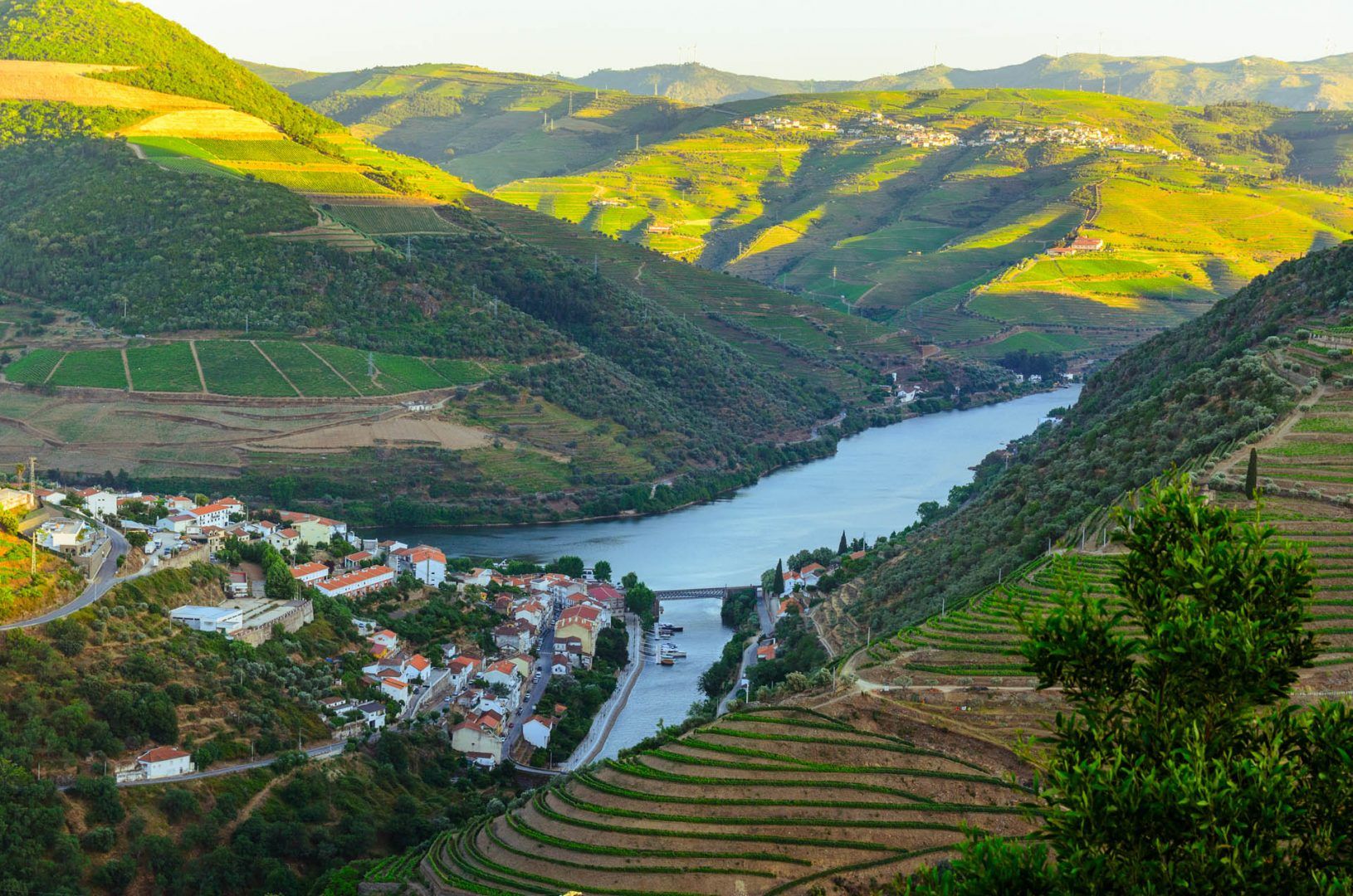
Douro valley © Shutterstock
Local food and drink is high quality in Portugal . It's also inexpensive. So stick to ordering local produce. You’ll find fresh fish and seafood everywhere. And Portugal's pork and cheese is excellent.
House wine will usually be good. And local beers and spirits are great value.
Like some food-specific Portugal travel tips? Try a traditional food tasting experience in Lisbon.

© Shutterstock
The Portuguese like their cars. So take a walk is one of our best Portugal travel tips.
Wander up a quiet track. Step away from the car park. Head down a country lane. Good chance you'll find a quieter beach or beauty spot.

Turquoise waters at Machico bay, Madeira © Balate Dorin/Shutterstock
Related articles from the blog

Most Portuguese restaurants bring you starters as you read their menu. These range from a simple bowl of olives up to a selection of seafood. They are not free. Anything you eat is added to your bill.
Some menus show a cover charge per person which usually includes bread. Others charge for individual items, even bread.
Don’t get too hung up. Most starters are cheap. Just remember fish and seafood can be expensive. Don't hesitate to check starter prices. And say 'no thanks' if you don't want something.

Portugal has one of Europe’s worst road safety records. Many of the country's roads are in poor condition. Conversely, toll-paying autoroutes are well-maintained and often quiet.
Be aware some toll roads use number plate recognition systems. Check the best way to pay these with your car hire company.
Trains in Portugal tend to be cheap. They can also be slow. Inter-city trains are speedier and more expensive. Or catch one of the fast coaches which which serve most main towns.

Caldo verde is Portugal's traditional vegetable soup. You'll find it on most restaurant menus. Just know it is not vegetarian. It almost always has sausage in it.
The Rough Guides to Portugal and related travel guides
In-depth, easy-to-use travel guides filled with expert advice.

Vegetarian choices in Portuguese restaurants can be limited. Expect to eat lots of salads or omelettes.

Caldo verde popular soup in Portuguese cuisine © Fanfo/Shutterstock
There are a few ways to save in Portugal try;
- Eating your main meal at lunchtime.
- Look for midday set meals with wine and coffee.
- It's cheapest to drink at the counter in bars.
- Most museums are free on one day a month, or week.
On a budget. Swap hotels for hostels to save. Try Sant Jordi Hostels in Lisbon.

Eat your main meal at midday to save money in Portugal © Shutterstock
Live football is fun and family friendly. Match tickets are cheap and easy to get. Many Portuguese football stars started out at clubs like Porto or Sporting Lisbon. And they still discover major players. Expect live football on TV everywhere.
Missed a match? Take a tour of FC Porto Stadium and Museum instead.

© WineDonuts/Shutterstock
Got kids? You'll love Portugal. Travelling with children is a great way to connect with locals. Expect instant conversation with pretty much everyone.
But don’t be surprised to get parenting advice. Old ladies are shocked to see kids coatless and hatless, even on hot days.
Want to simplify sightseeing for kids? Try hop on hop off bus tickets for families in Lisbon.
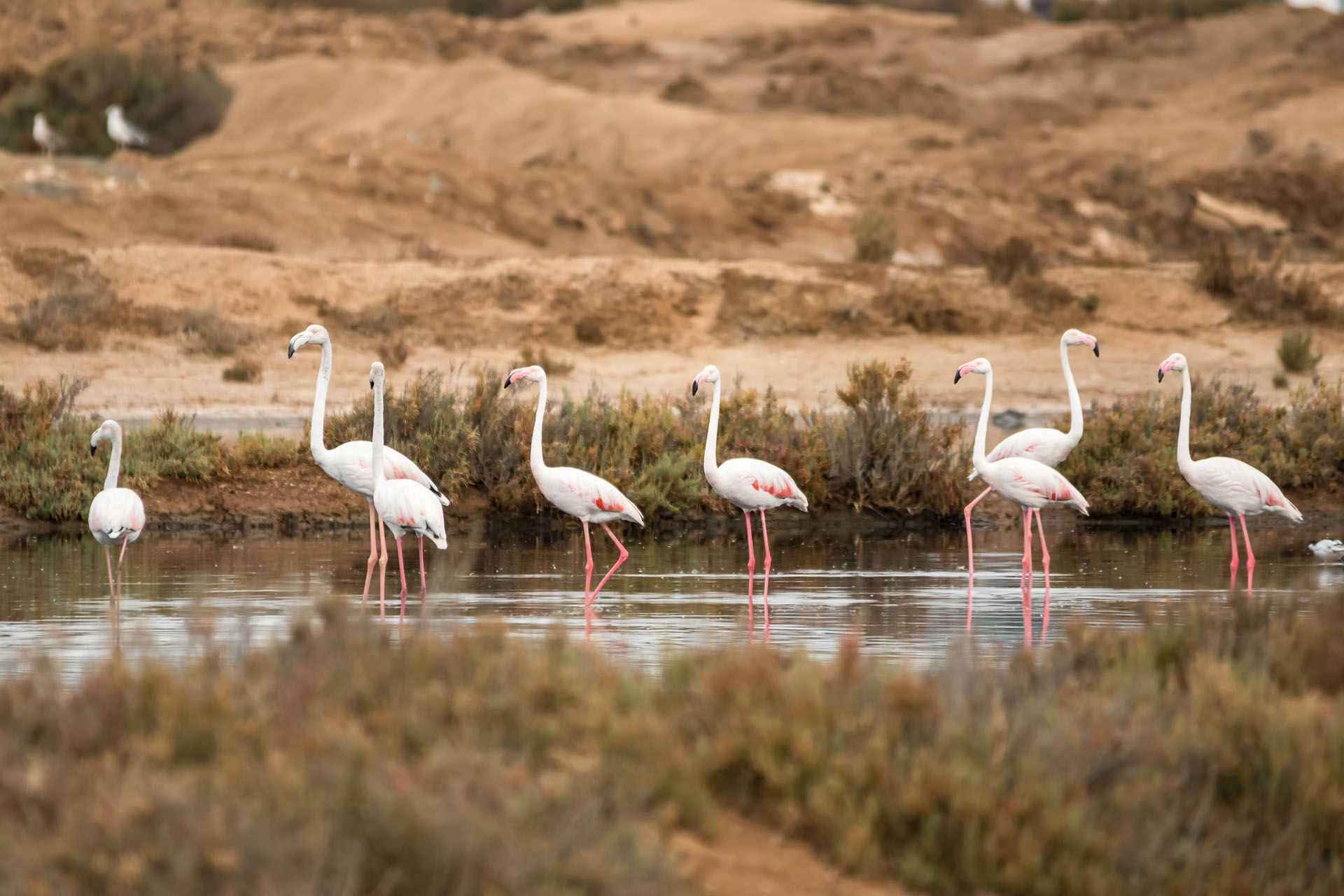
A group of flamingos in Ria Formosa © Taniaaraujo/Shutterstock
Portugal's famous for Port. But the country has a growing reputation for wines in general.
You might notice the word verde on wine lists here. It's not green coloured wine. Verde means young, acidic and slightly sparkling.
For more familiar wines, stick to maduro (“mature”).
Get to know Portugal's wines like a local. Take a full day Douro wine tour with lunch and a river cruise.

12. Watch out for Portugal's business hours
Businesses outside main towns can keep irregular hours.
Many shops, cafés, restaurants, museums and tourist offices open late or close early.
Bad weather can dictate opening hours. And some businesses will close if it's too quiet.
Factor all this into your travel plans.

Portugal's landscapes are very accessible try:
- A drive through Parque Natural de Arrábida on the N379-1.
- A train ride along the Douro from Porto to Pocinho.
- Mountain biking on the rugged Algarve coast.
- Hiking Rota Vicentina through Portugal's southwest.
Prefer to sail for a little? Book a kayak tour in Parque Natural de Arrábida with local guides.
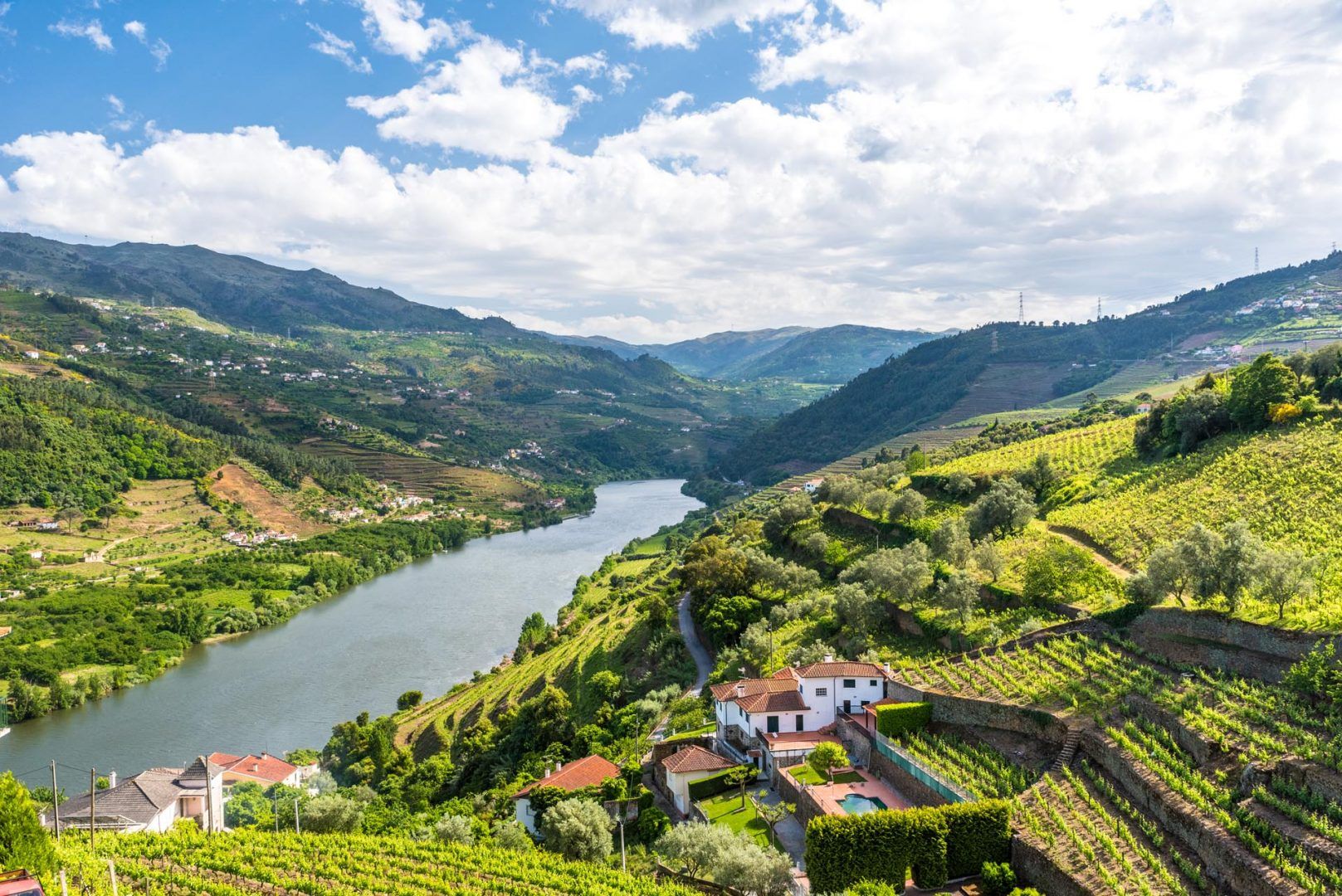
Explore accessible Portugal by road, train, bike or on foot © Shutterstock
Best place to buy traditional ceramics? Caldas da Rainha in Estremadura .
Want hand-stitched Arraiolos carpets? Head to Arraiolos in Alentejo . The world famous carpets are expensive. But nobody stops you 'just looking'.
Hunting down designer bargains? Pick up brand-name seconds at Portugal's weekly markets. For quality designer clothes? Head to Lisbon and Porto's malls and shopping districts.
Take a private tour of Evora and Arraiolos and factor in some shopping.

Famous handmade carpets of Arraiolos in Portugal © Melissa Schalke/Shutterstock
Discover Parque Nacional da Peneda-Gerês.
- Portugal's only national park.
- First opened in 1971.
- Covers 700 square kilometres.
- Protects natural habitats and traditional lifestyles.
- Contains 18 plant species found nowhere else on earth.
- Only natural habitat of the Serra do Gerês iris.

Cavado river and Peneda-Geres National Park in northern Portugal © Sergey Peterman/Shutterstock
16. Browse the country's marvellous markets
You'll find markets all over Portugal.
- Olhão market is best for fish and seafood.
- Estremoz market sells fine Alentejan crafts.
- Barcelos in the Minho is Portugal's most traditional market.
Searching for more local culture in Estremoz? Stay at historic Pousada Castelo de Estremoz for the night.

Coimbra is famed for its historic hilltop university.
- Velha Universidade dates back to 1290.
- Its Baroque Biblioteca Joanina contains 250,000 books.
- The oldest library books date back to the 1100s.
- University grounds and botanical garden are free to visit.
- Tickets and time slots for university buildings and library.
Book Hotel Botanico de Coimbra . It's good value and a short walk from the university.
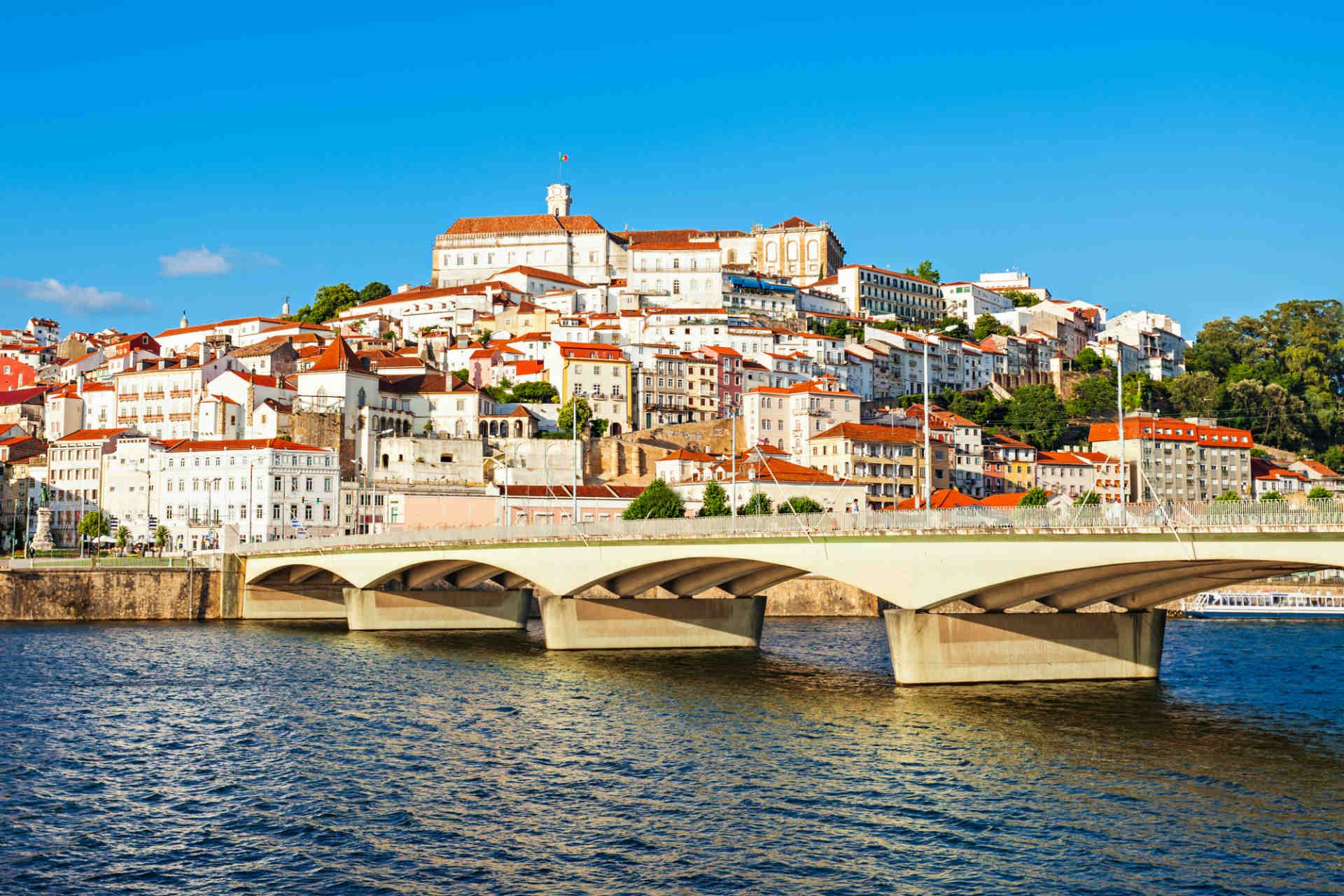
Coimbra, Portugal © Shutterstock
Lisbon has never been easier to explore.
- Direct flights from UK and US available to Lisbon.
- Discover atmospheric Alfama on foot.
- Dance until dawn at clubs in Bairro Alto.
- Eat traditional custard tarts from historic Pastéis de Belém .
- Visit World Heritage Sintra from Lisbon.
Try our best Lisbon budget stay. Lisbon Lounge Hostel in the city centre.

Fairy tale Sintra makes an easy day trip from Lisbon © Shutterstock
Portugal's known for its vast Atlantic waves. But beginners should ignore the breaks at Nazaré. Instead head to Sagres in western Algarve . The seas here are perfect for beginners. And more experienced won't be bored either.
Discover the wild western Algarve coast. Take a full day mini-van tour with local guides.

Nazare, Portugal © Shutterstock
Ready for a trip to Portugal? Read more about the best time to go to Portugal , the best places to visit and best things to do in Portugal . For inspiration use the Portugal Itineraries from The Rough Guide to Portugal and created by our local travel a gents in Portugal . A bit more hands on, check out the map of Portugal and learn about getting there , getting around the country and where to stay in Portugal once you are there. And don't forget to buy travel insurance before you go.
We may earn commission when you click on links in this article, but this does not influence our editorial standards - we only recommend services that we genuinely believe will enhance your travel experiences.
- Travel Tips
Planning your own trip? Prepare for your trip
Use Rough Guides' trusted partners for great rates
Travel advice for Portugal
From travel safety to visa requirements, discover the best tips for traveling to Portugal
- Eating and drinking in Portugal
- How to get to Portugal
- Getting around Portugal: Transportation Tips
- Shopping tips for Portugal
- Travel Tips Portugal for planning and on the go
- Best time to visit Portugal
Find even more inspiration for 74 here
Ready to travel and discover portugal, get support from our local experts for stress-free planning & worry-free travels.
- Where to stay
- Itineraries
- Travel advice
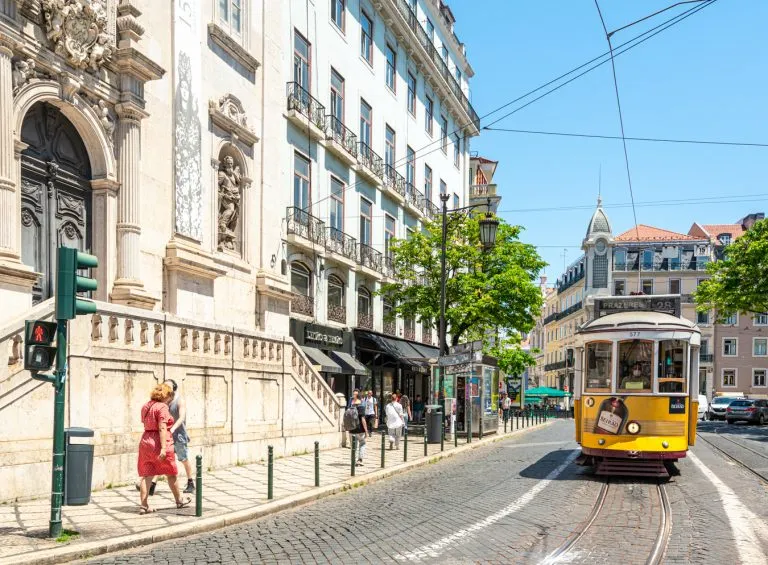
Planning a Trip to Portugal: Your Easy 11-Step Checklist
Traveling to Portugal for the first time and want to make sure that you’re planning the perfect trip?
After living in Lisbon as American ex-pats, we have lots of tips (spread across dozens of blog posts and counting) for planning a trip to Portugal!
We’ve compiled this simple checklist for planning your first trip to Portugal with the hope that it will help you fall in love with traveling the country as much as we have–and with any luck, you’ll have the chance to return again and again.
Here’s what to know about planning a trip to Portugal, organized with an easy-to-use checklist that will help you book your Portuguese vacation in no time!
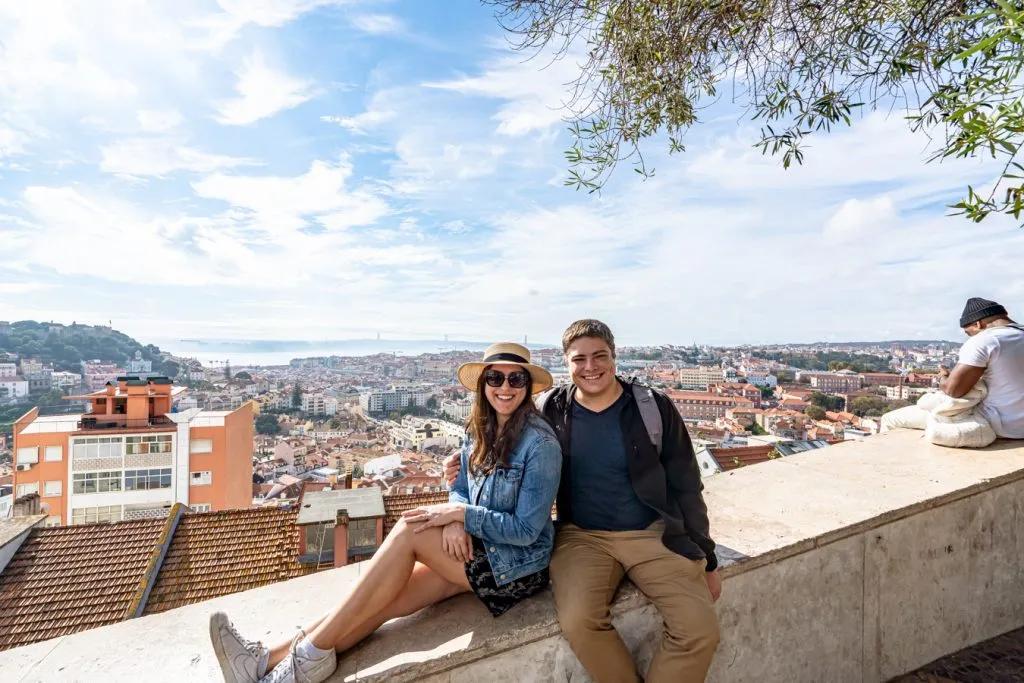
Some links in this post may be affiliate links. If you make a purchase through one of these links, we may earn a small commission at no extra cost to you. Please see our disclosure policy for more detail.
Your 11-Step Checklist for Planning a Trip to Portugal
Step 1: check visa requirements for visiting portugal..
Based on the geographic readership of Our Escape Clause, the odds are that the vast majority of you will not need a visa to visit Portugal for up to 90 days for tourism purposes.
This includes citizens of the USA, Canada, the UK, Australia, and of course, anyone from an EU member state.
Portugal is part of the Schengen Zone, and therefore, anyone who needs a Schengen Visa to visit the area will need one to visit Portugal.
In the future, the ETIAS system –essentially an e-visa procured by filling out paperwork online before traveling–will come into effect for the Schengen Area.
After multiple delays, is currently slated to begin sometime in 2025.
It’s best to always confirm visa requirements through official sources before traveling!
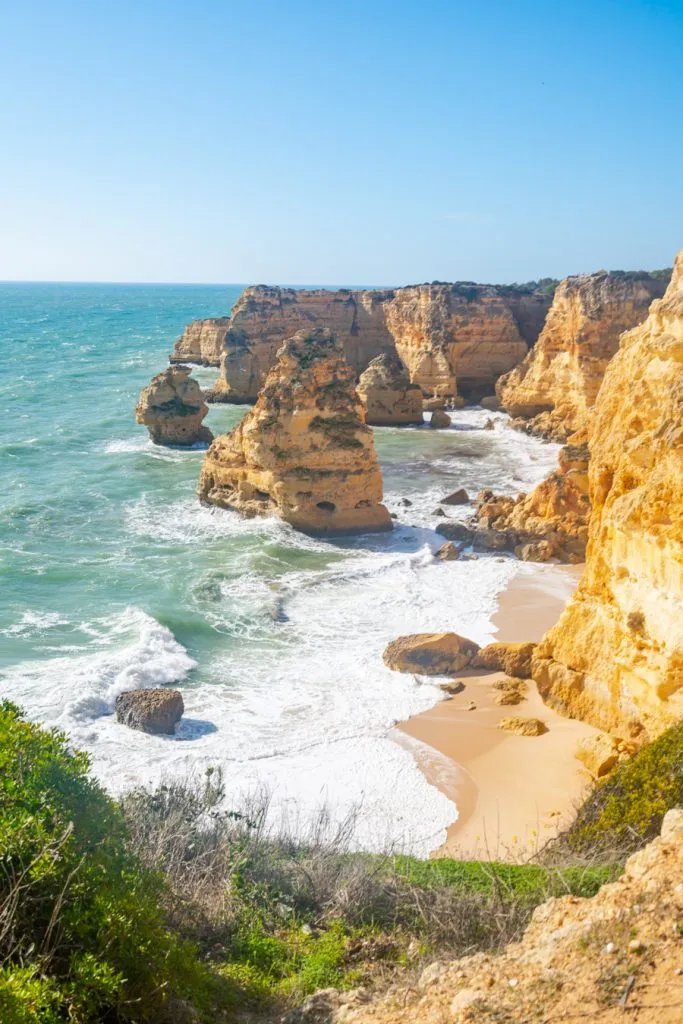
Step 2: Book your flights to Portugal!
When shopping for flights to Portugal, you’ll no doubt notice that Lisbon has–by far–the biggest international airport in the country.
Technically called the Humberto Delgado Airport (LIS), though I’ve never heard anyone refer to it that way outside of official signs, it’s the most likely first stop in Portugal for travelers coming from outside of Europe.
The Porto Airport (OPO, or Francisco Sá Carneiro Airport) also services a fair number of flights from outside the continent, and the number of international flights has been increasing over the years.
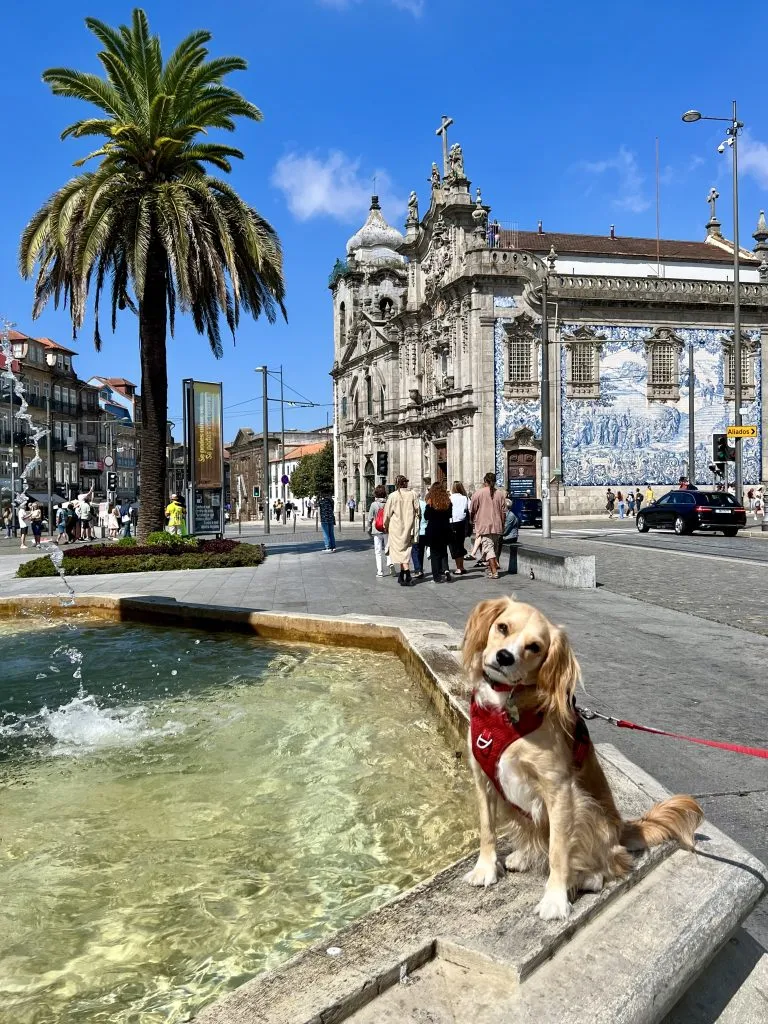
If you’re visiting Portugal as part of a multi-country Europe trip and are arriving from within the continent, the Faro Airport (FAO, or Gago Coutinho Airport) may also be worth checking out–especially if you’re looking at budget carriers.
Planning to visit another destination before or after Portugal?
Be sure to check if the TAP Air Portugal Stopover program , which allows you to build a 1-10 day Portugal “layover” into a flight to a different destination, is right for you!
We actually took advantage of the program on our own first trip to Portugal several years ago and used it to add 4 days in Lisbon to our originally planned trip from the USA to Paris .
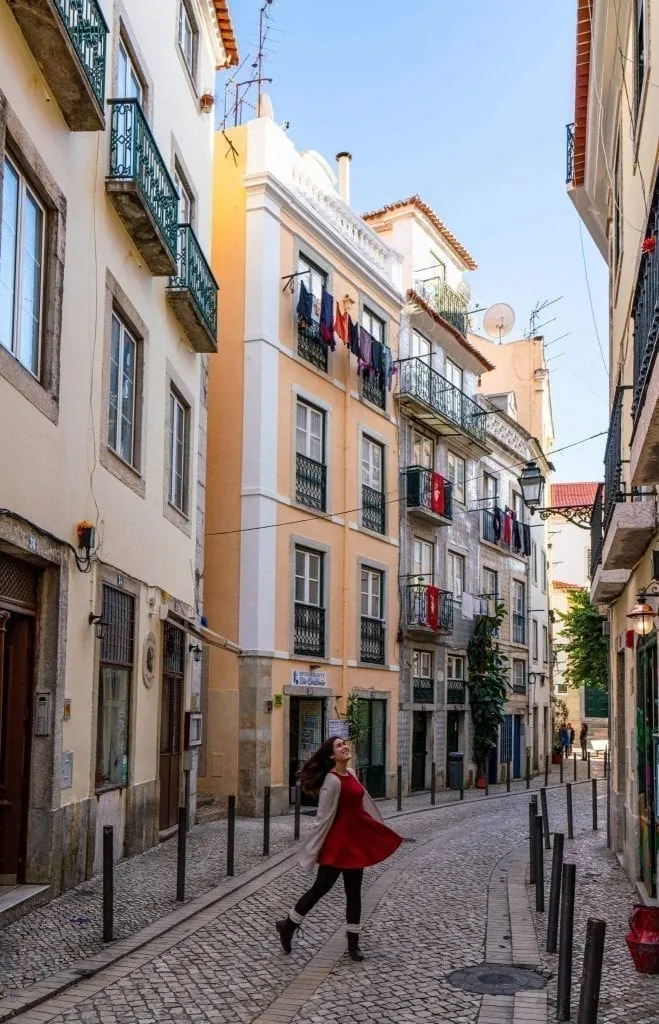
Step 3: Narrow down your Portugal itinerary.
This might be both the most fun and most stressful part of planning a trip to Portugal: finalizing where exactly you’re going to go!
Our recommended 10-day Portugal itinerary systematically covers the top places to visit in Portugal (Lisbon, Sintra, Porto, the Douro Valley, and the Algarve), but ultimately, the sky’s the limit!
And, while you can easily extend that itinerary by simply adding more days to each destination (they all deserve it), there are also dozens of other options that might call your attention!
For less-crowded beach towns, head to the eastern edge of the Algarve (Tavira has lots to offer), or check out towns on the Silver Coast between Lisbon and Porto like Peniche (don’t miss the Berlengas Islands!), Averio, Ericeira, and Nazaré.
If wine, ossuaries, and underrated cities are your vibe, consider checking out Évora .

Love city-hopping? Portugal’s third city, Coimbra, is an ancient university town with lots to uncover.
Are monasteries your thing? If so, don’t miss the UNESCO-recognized monasteries of Alcobaça, Batalha, and Tomar (if you head this way, the walled town of Óbidos is another must-see in the area).
Want to get far off the beaten path? Consider a visit to Peneda-Gerês National Park or to Monsanto , which is not only historic, beautiful, and uncrowded, but served as a House of the Dragon filming location.
… And of course, not only do these options barely scratch the surface, but they’re all located on mainland Portugal.
With enough time, you can stretch your itinerary even further afield with visits to Madiera and/or the Azores Islands, though each of them offers enough to do that they can also be standalone trips in their own right.
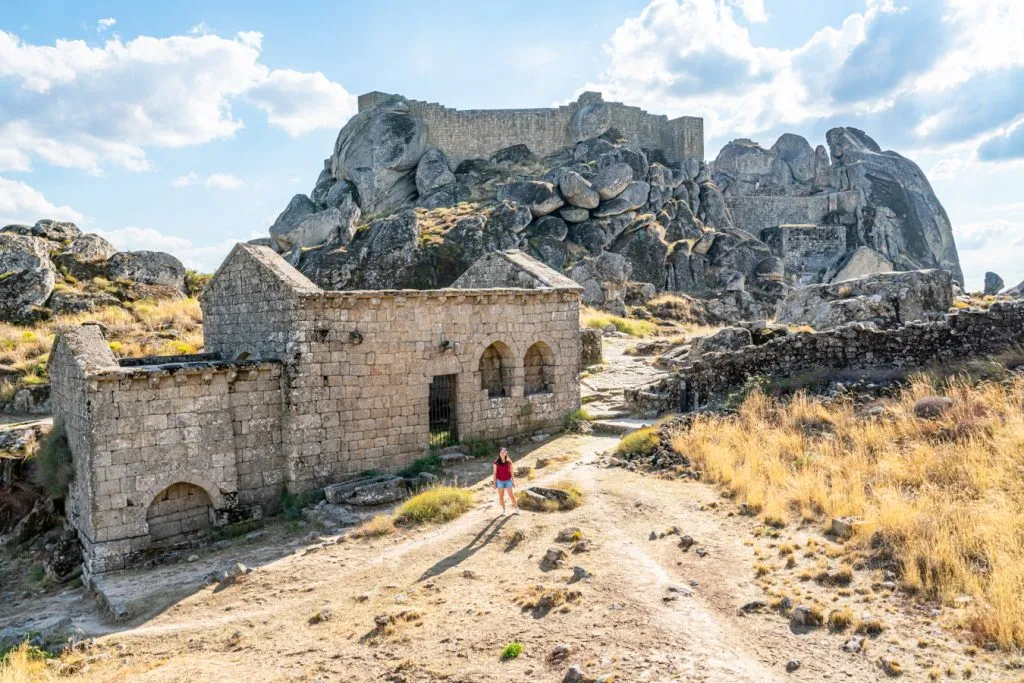
Step 4: Finalize your Portugal travel budget.
Now that you know exactly when your Portugal vacation is happening, how much your airfare was, and the kinds of things you want to do there, it’s time to finalize your Portugal travel budget!
We recommend taking the total amount you hope to spend during your first time in Portugal, subtracting any splurges or major expenses you know are coming (a pricey tour, some souvenir shopping , etc), and then dividing the remaining amount by the number of days you’ll be exploring the country.
Just like that, you have your daily budget for traveling in Portugal, or the amount of money you should try to stay under each day when you add up what you spend on food, activities, and intra-city transportation.
We detail this strategy more thoroughly in our travel budgeting guide , and we’ve been using the same simple method for more than a decade!
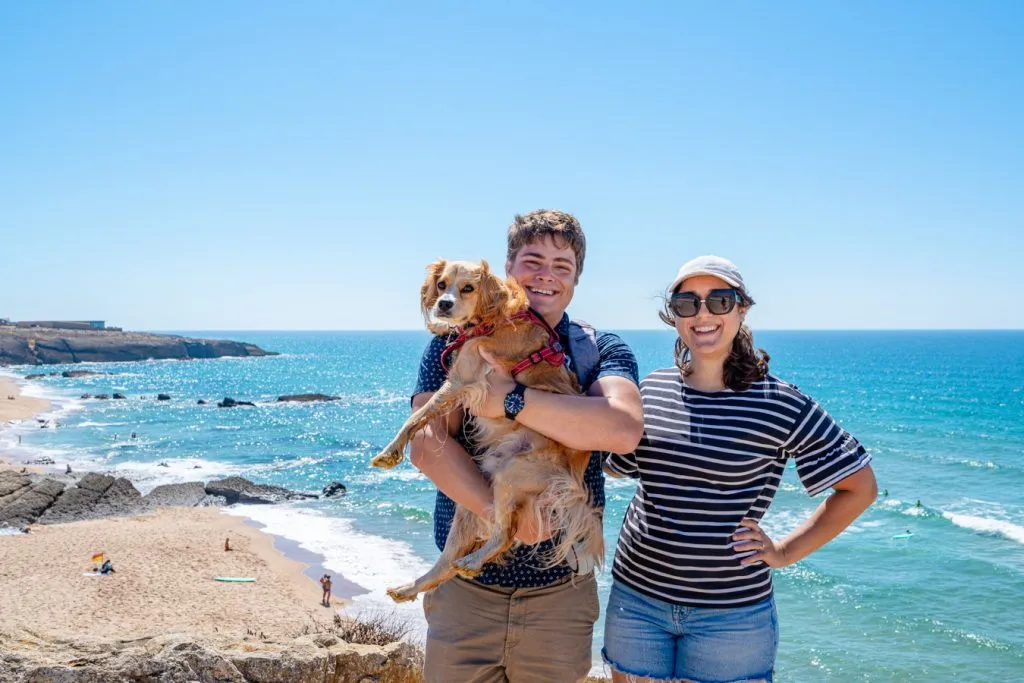
Step 5: Book some activities in advance.
Hoping to enjoy some incredibly memorable tours and experiences in Portugal?
If so, be sure to book them in advance–and the more popular they are, the earlier you’ll want to book (especially if you’re traveling during the summer).
This is especially true for day trips like Sintra ( this Sintra day trip is one of the most popular day tours in the country), as well as attractions like the Jerónimos Monastery .
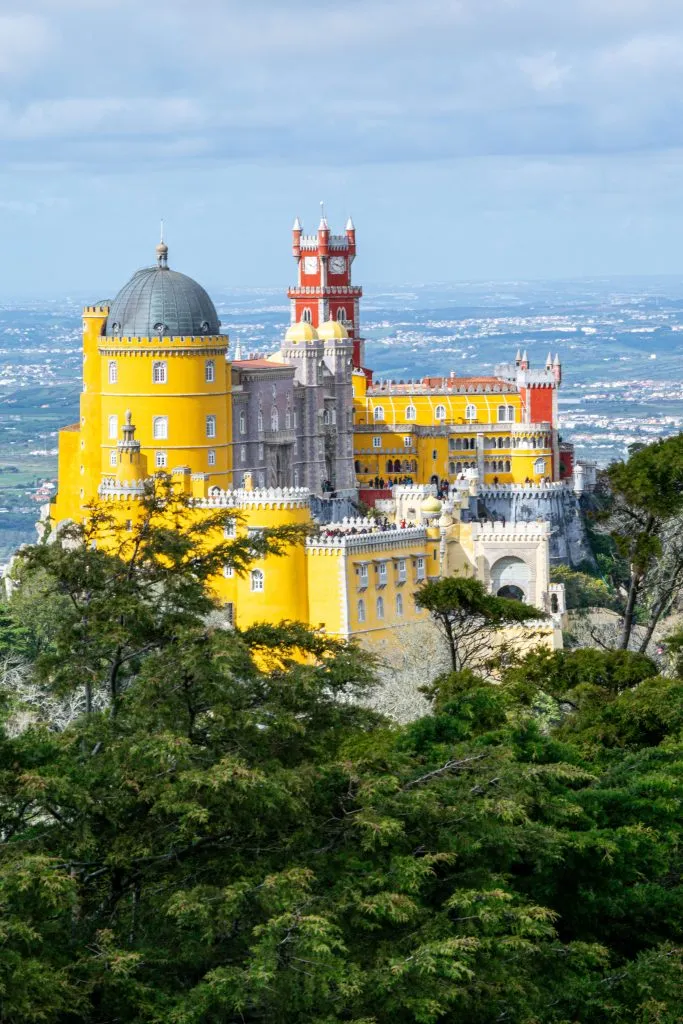
Sintra is, without a doubt, one of the most important places in Portugal to plan ahead for, whether you hope to visit on a guided day trip or simply by pre-booking tickets to places like Pena Palace and Quinta da Regaleira in advance.
( Our detailed guide to visiting Sintra can help you plan that experience in detail.)
Some other experiences we have loved in Portugal include this delicious food tour (perfect for learning about Portuguese cuisine at the beginning of your trip), as well as a sunset cruise on the Tagus .
If you’d like to visit the Douro Valley but don’t want to drive there (too much port to enjoy!), pre-booking a day trip from Porto is also an excellent idea.
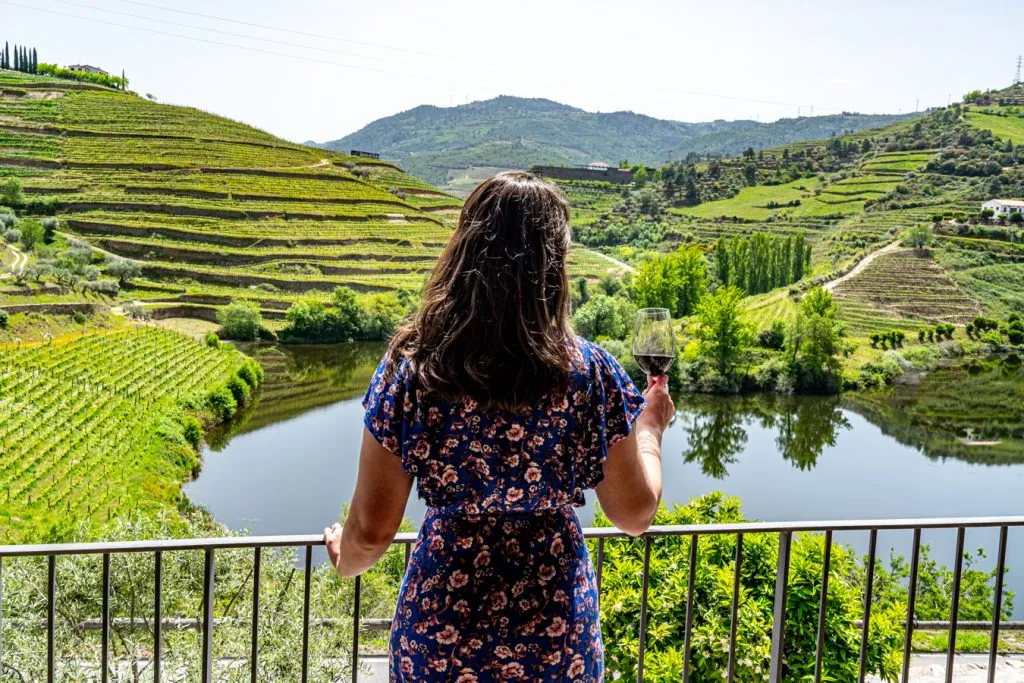
Step 6: Decide where to stay in Portugal and book your accommodation.
Now that you have the backbone of your vacation sketched out, it’s time to decide where to stay in Portugal!
We have specific recommendations for where to stay in posts about each destination we’ve written about (like this blog post about Lisbon and this one about Porto ), but overall, our general recommendation is to search for well-reviewed and centrally located properties within walking distance of some attractions.
These days, we book virtually all of our hotels and apartments in Portugal (and beyond) through Booking.com .
We typically aim for staying somewhere with an 8.0 rating or better, though that can vary a bit depending on the season, availability, how many hotels are in the area, etc.
A couple of hotels that we have particularly enjoyed throughout our travels in Portugal include Tivoli Lagos in the Algarve and NH Porto Hotel Batalha .
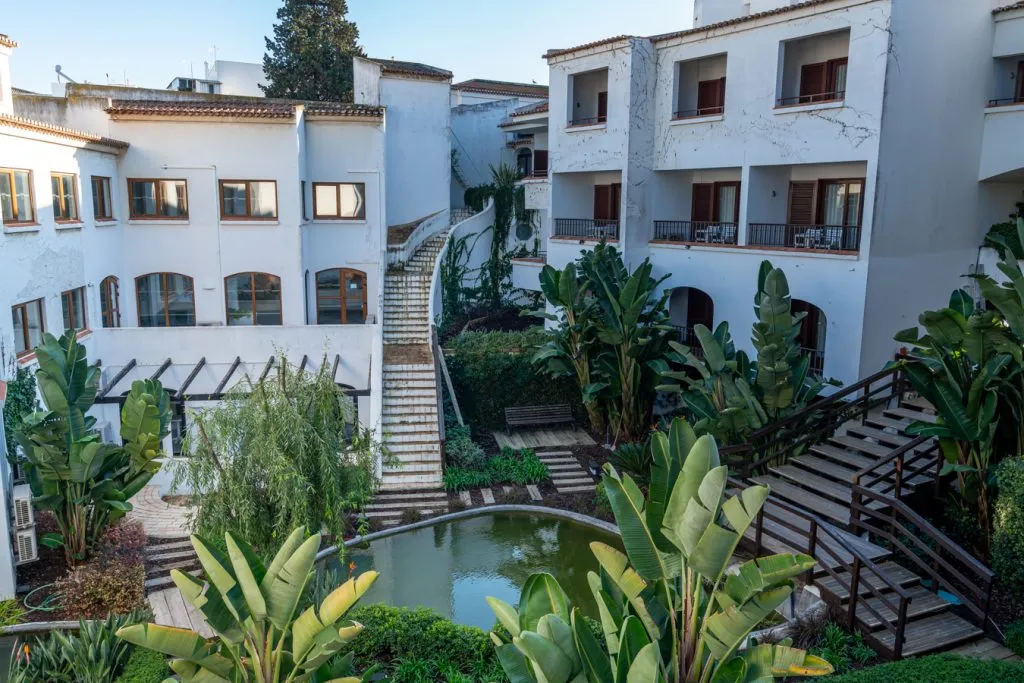
Step 7: Learn a little bit of (European) Portuguese.
As you’re planning your trip to Portugal, be sure to take the time to learn a little bit of Portuguese before you go!
Is it entirely necessary?
No, but it will be very appreciated!
(And whatever you do, definitely don’t speak to a Portuguese person in Spanish because it’s “the same” unless you want them to potentially tell you all about how it is very much not the same!).
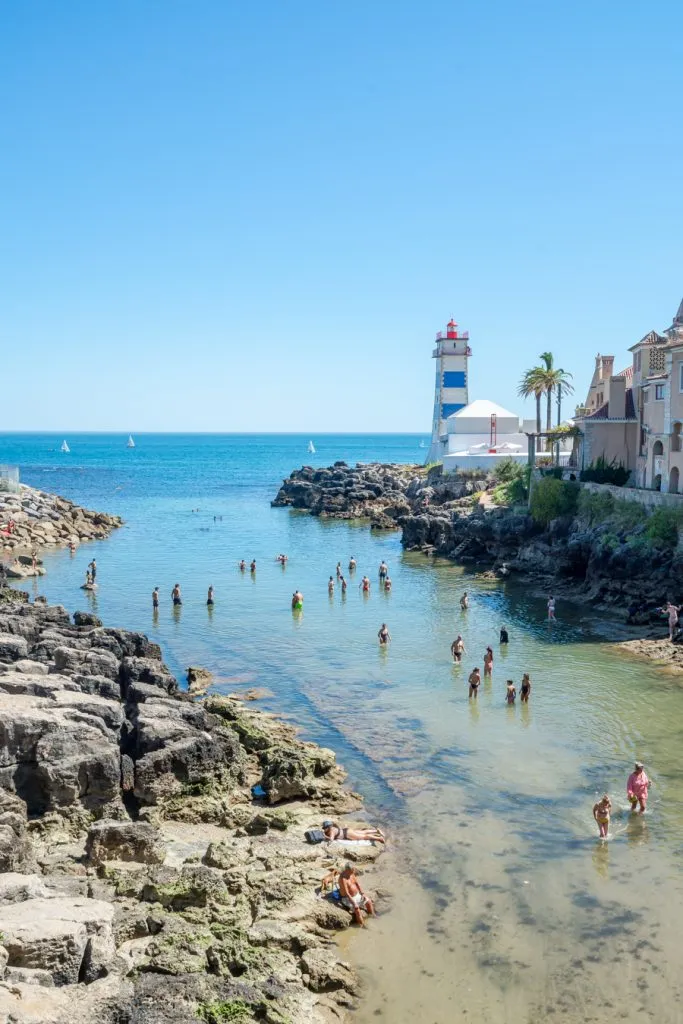
For English speakers, Portuguese spelling and pronunciation don’t necessarily always match up in an intuitive way, but preparing a few phrases in advance (and maybe bringing along a phrasebook like this ) can help.
Keep in mind that many online resources teach Brazilian Portuguese pronunciation, which is a bit different from European Portuguese.
For a few phrases on a short trip, it’ll do in a pinch, but seek out specifically European resources if you can.
Here are a few phrases to add to your arsenal:

Basic Portuguese Phrases to Learn When Planning a Trip to Portugal
Bom dia. — Good day.
Boa noite. — Good evening.
Adeus or Tchau (Pronounced like “ciao”.) . — Goodbye.
Por favor. — Please.
Obrigado (if a male is speaking) or Obrigada (if a female is speaking). — Thank you.
De nada. — You’re welcome.
Fala inglês? — Do you speak English?
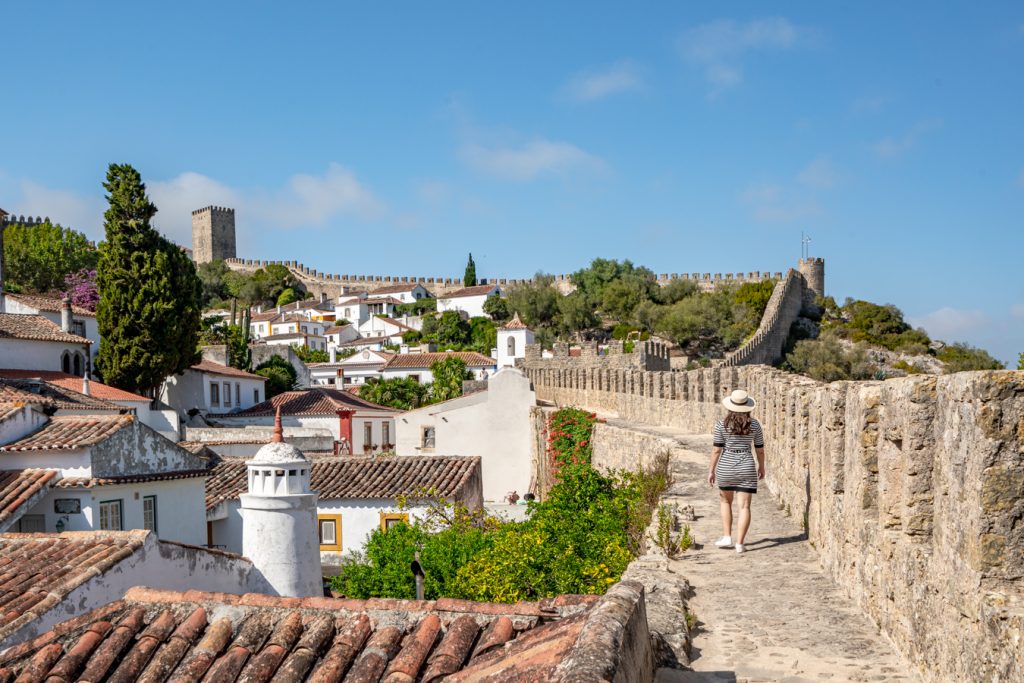
Step 8: Make a packing list for Portugal (and shop!).
Generally speaking, packing for Portugal is fairly simple: a standard Europe packing list will cover most of what you need (here are our suggestions for spring , summer , fall , and winter ).
However, you’ll definitely want to pay close attention to your footwear.
Not only does a typical Portugal vacation involve climbing lots of hills (both Lisbon and Porto are full of them!), but it’s also a bit hard on your feet in other ways.
The distinctive Portuguese pavement (or calçada portuguesa ) that you’ll see throughout the country offers its challenges: these walkways are both beautiful and a bit of a hazard in the rain.
They’re incredibly slippery when wet, especially if they happen to have fallen leaves sitting on them.
Watch your step, especially on hills, and opt for shoes with some grip on them!
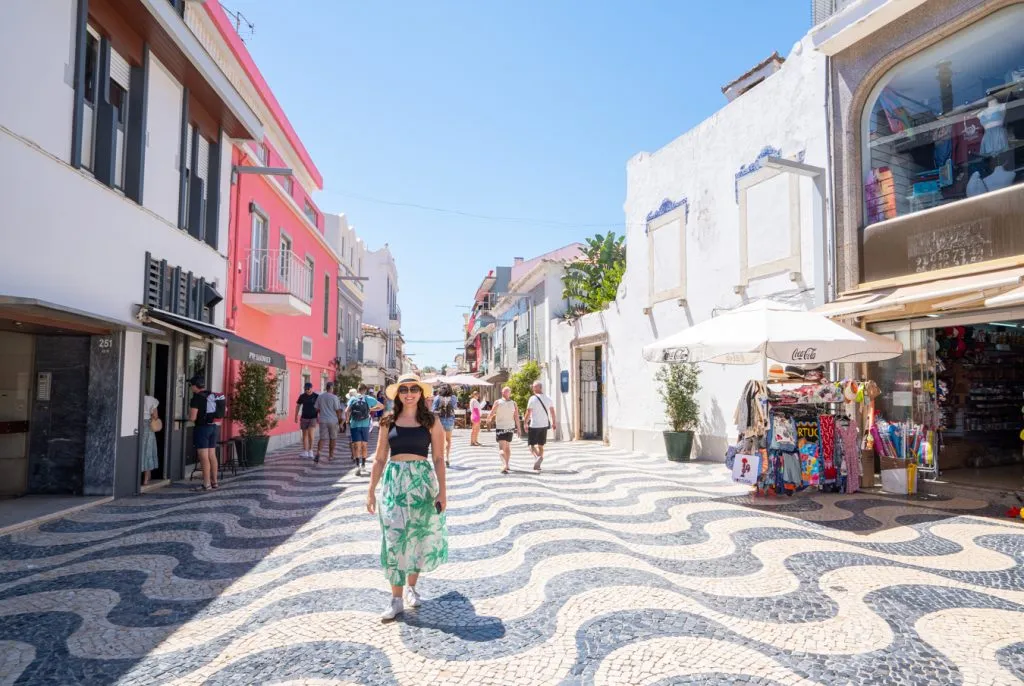
Here are a few other useful odds and ends to add to your Portugal packing list:
Travel Adaptors for France — If you’re coming from outside of Europe, you’ll definitely need adaptors for your electronics–don’t forget to add buying these to your to-do list for planning your trip to Portugal!
Comfortable Day Bag — We currently use Pacsafe’s sleek anti-theft backpack and love it, but if you don’t want to shell out the cash for this trip, that’s totally understandable.
Just aim for something comfortable to wear, not flashy, and medium-sized–we used a Northface Jester backpack for years and loved it as well.

Reusable Water Bottle — Save both money and plastic during your trip to Portugal and add a reusable water bottle to your packing list!
I love this metal one , and you’ll be glad to have it on you after snacking on the pastéis de nata that you’ll undoubtedly pick up on the go!
Sea Bands & Non-Drowsy Dramamine — If you’re planning to hit the water during your trip to Portugal and are prone to motion sickness like me, I strongly recommend adding Sea Bands to your packing list.
I use them on all boats and the occasional bus, and if things get really bad, take some Non-Drowsy Dramamine as well.
You don’t want to miss out on the joys of boating around the coast or rivers due to seasickness!
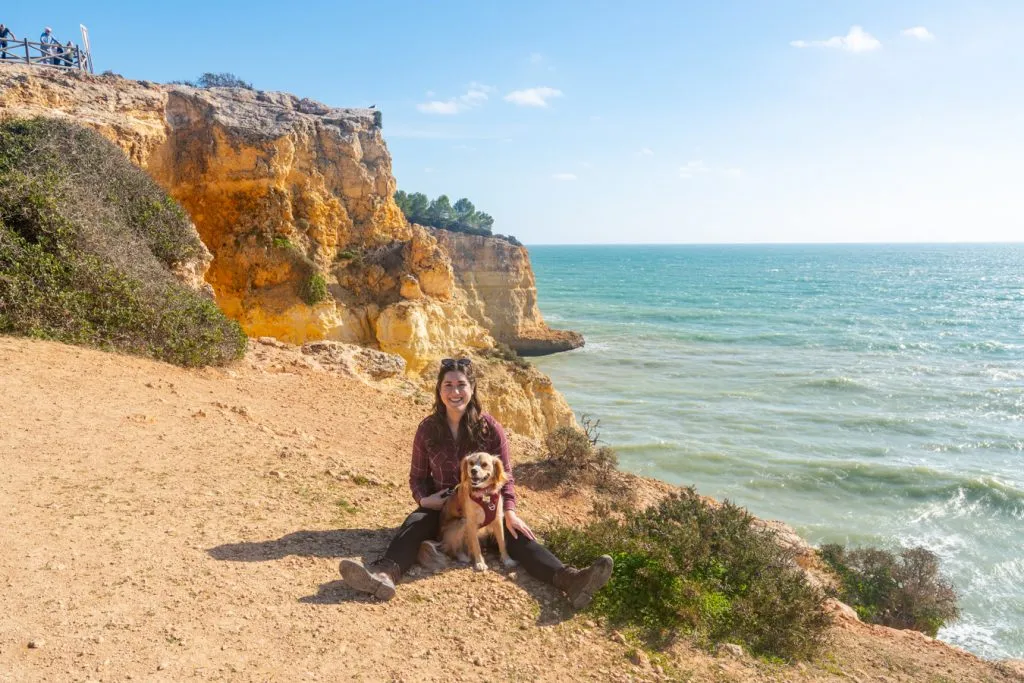
Step 9: Purchase travel insurance for your Portugal vacation.
Don’t forget to purchase travel insurance before jetting off to Portugal! While Portugal is generally a perfectly safe place to visit, traveling, in general, opens you up to vulnerabilities that you simply don’t have at home.
If you miss a plane or train, have your luggage get lost, get pickpocketed, or worse, get injured, you’ll be glad that you have insurance.
Given how inexpensive travel insurance is when purchased in advance (especially as compared to the price of plane tickets to Portugal!), it’s well worth the investment.
Check travel insurance policy inclusions and prices for your trip here.
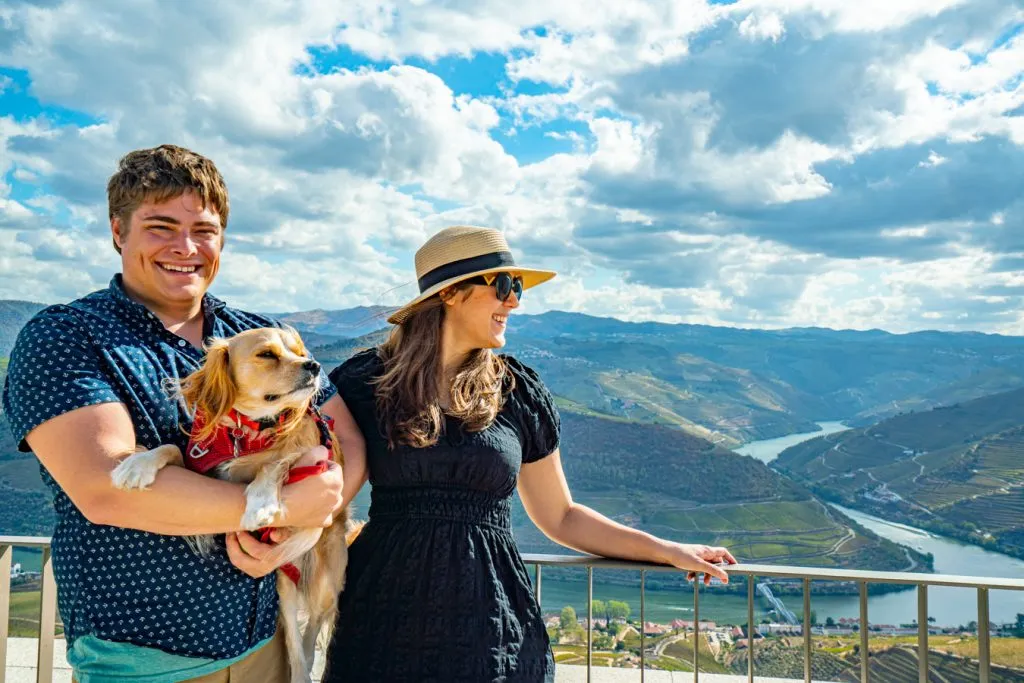
Step 10: Make an arrival plan.
This part of planning a trip to Portugal is as simple as it is important: make an arrival plan.
When you arrive in (most likely) Lisbon or Porto, you’re undoubtedly going to be exhausted, overwhelmed, and probably a bit jetlagged, too!
No matter how many times we arrive in a new place, it never stops being a tiny bit stressful, simply because there are a lot of variables at play in the first few hours of arriving somewhere new.
Make life easier on yourself by thinking ahead: when working on your plan for traveling to Portugal for the first time, figure out what your exact steps will be after the plane lands.
That means exactly how far away your hotel is, how you’ll get there from the airport (metro, taxi, airport transfer?), and if you’ll be traveling by taxi, what a reasonable price is.
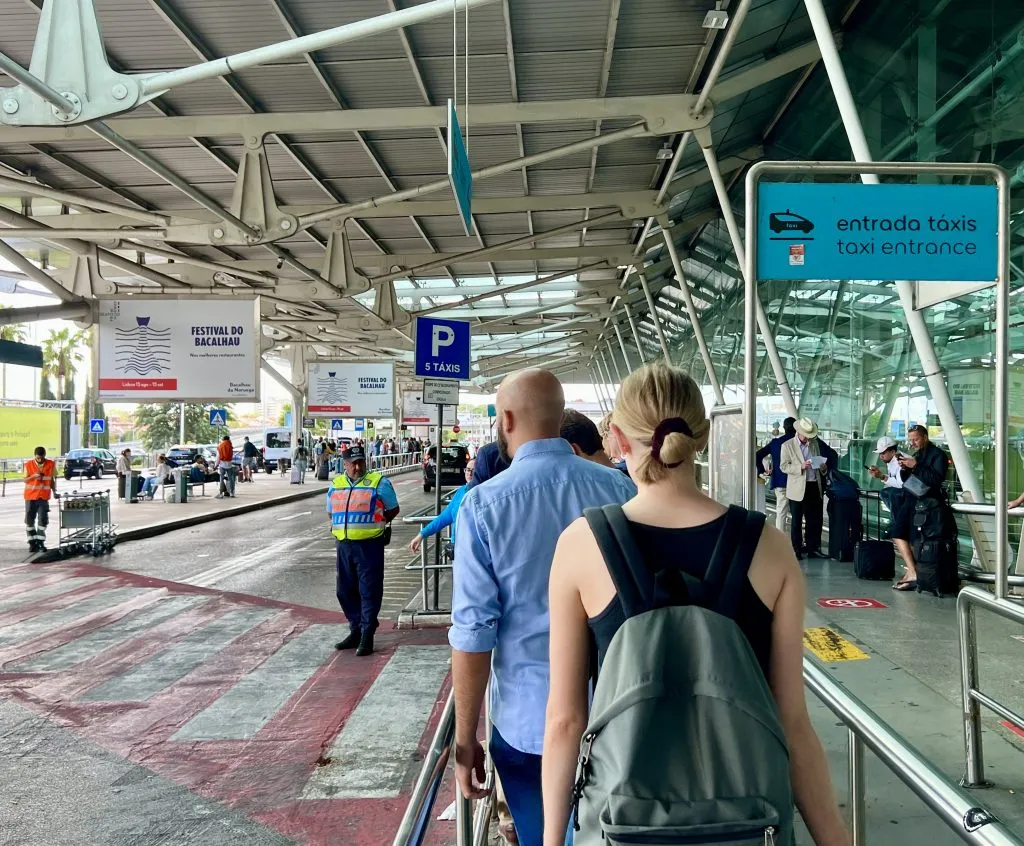
Unlike some European cities, neither Lisbon nor Porto have regulated flat taxi fares from the airport, so you’ll likely need to negotiate (15 Euro or so is generally a solid rate in Lisbon).
Technically, taxis are expected to always use the meter–but traveling from the airport to the city center is often an exception to that rule when on the ground.
Though it’s not strictly necessary or the most budget-friendly option, if you’d like to make arriving in Portugal very easy for yourself, consider treating yourself to a private airport transfer when you arrive!
Here are well-reviewed airport transfer services for Lisbon , Porto , and Faro .
Book your airport transfer in Portugal today!
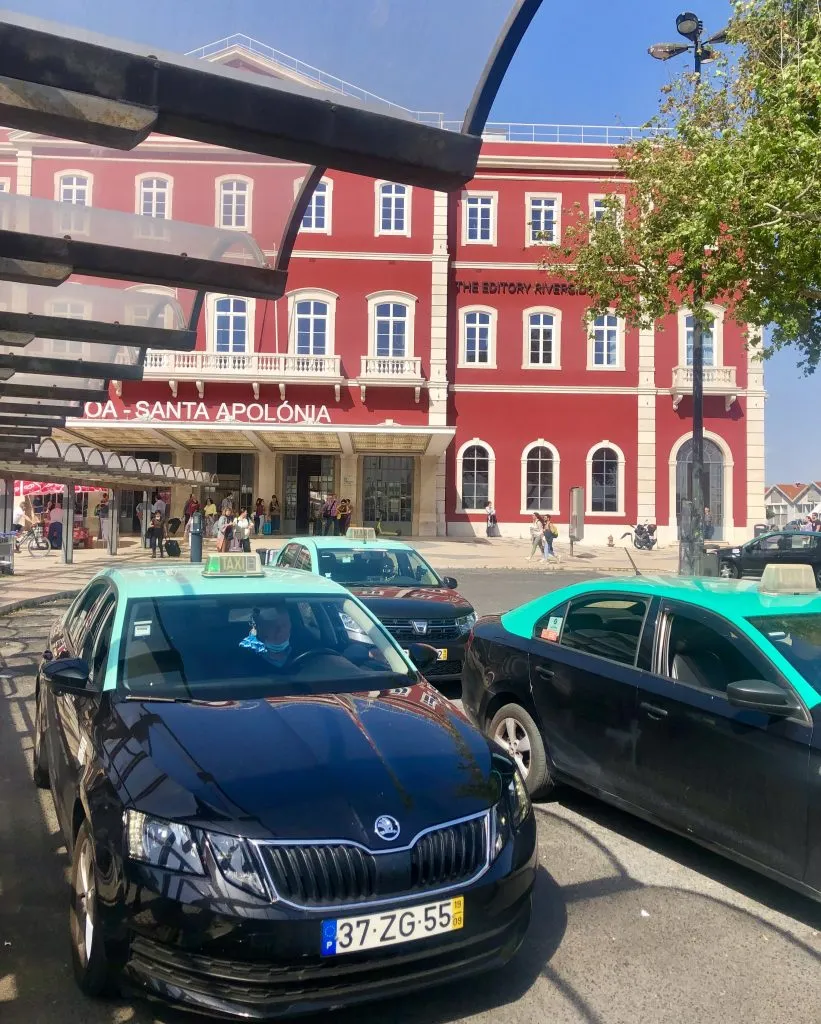
Step 11: Enjoy an amazing trip to Portugal!
Once you’ve done the planning… it’s time for the fun part!
Enjoy every step of your first trip to Portugal, from the confusing parts to the magical ones–and yes, both will probably end up with a prominent place in your memories.
I vividly remember arriving in Portugal for the first time, jet-lagged, exhausted, and fresh into Lisbon off of a red-eye from New York City.
We were bleary-eyed and uncertain when getting a taxi from the airport and dropping off our luggage… but shortly thereafter grabbed a coffee at Fabrica da Nata (a place that would become a regular stop of ours in later years) before enjoying a Campo de Ourique food tour on our first morning in the country.
The thrill of enjoying a sunset cruise on the Tagus , taking a day trip to Sintra for the first of many times, tasting our first pastel de nata, and meandering the streets of Alfama left quite an impression on us: only a few years after our very first trip to Portugal, we moved to Lisbon for a beautiful, sun-soaked year.
I can’t guarantee that every first trip to Portugal will be quite as life-changing–but I can’t guarantee that it won’t, either.
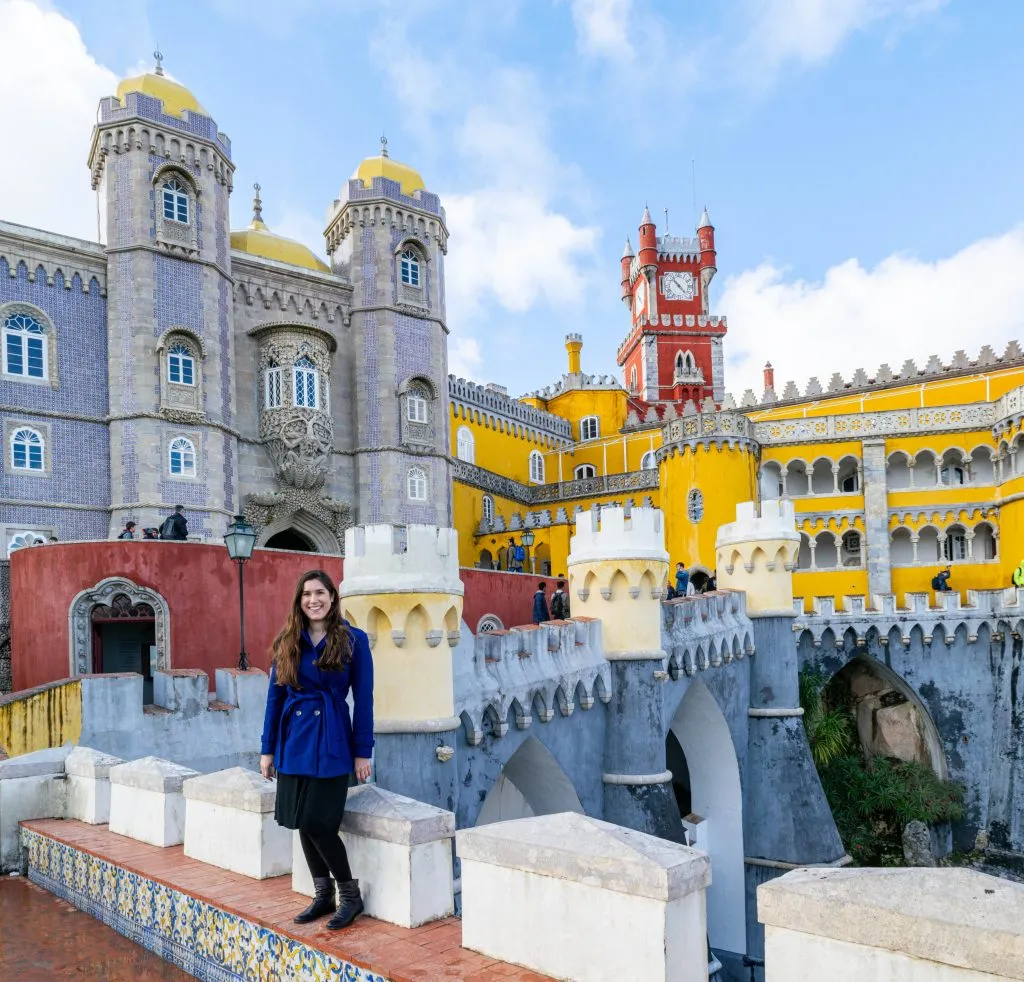
Read More About Visiting Portugal
Excited to be planning your first trip to Portugal and want to keep reading?
We’d be thrilled to help!
You can browse our dozens of Portugal blog posts here , or check out these guides:
- 33+ Important Tips for Visiting Lisbon for the First Time
- Portugal in Winter: Best Things to Do + Tips (What You Need to Know!)
- 15 Best Things to Do in Belém, Lisbon (+ Itinerary)
- 10 Exciting Portugal Road Trip Itinerary Ideas (+ Tips!)
- Adorable Amarante, Portugal: Things to Do + Travel Guide

About Kate Storm

In May 2016, I left my suburban life in the USA and became a full-time traveler. Since then, I have visited 50+ countries on 5 continents and lived in Portugal, developing a special love of traveling in Europe (especially Italy) along the way. Today, along with my husband Jeremy and dog Ranger, I’m working toward my eventual goal of splitting my life between Europe and the USA.
Leave a Comment Cancel reply

Portugal Travel Tips: 16+ Things You Need to Know Before Travelling to Portugal
Planning a trip to Portugal and wondering what to expect? This comprehensive guide has got you covered, including all the Portugal travel tips and tidbits you need to know before you go.
If you’ve been following my travels for some time now, you probably know how much I love visiting Portugal .
I remember my first trip to Portugal (many moons ago). And I also remember asking questions like when should I visit? What do I need to get ready before I go?
Well, guess what? That’s why I wrote this handy article about the dos and don’ts in Portugal.
You’re welcome. Read on to discover the things to know before visiting Portugal.
Top 5 Portugal Travel Tips
Convert your cash to euro and carry some with you.

One thing I like to plan well ahead of any vacay is the logistics of paying for my travels. And while many places in Portugal accept credit cards, carrying cash is always a good idea.
The currency in Portugal is the Euro, so if you’re visiting from the USA or other countries around the world, you’ll want to keep this in mind.
One of the best things to know when travelling to Portugal is that you should always have cash in case a restaurant, cafe, or tour doesn’t accept credit cards. This is especially true if you’re eating at tiny, local spots – which you definitely should.
You can find a cash machine in all major cities and most small towns, but do yourself a favour and monitor your cash inventory daily, so you’re never left without enough.
Portugal Doesn’t Require Visa Entry for Many Travellers
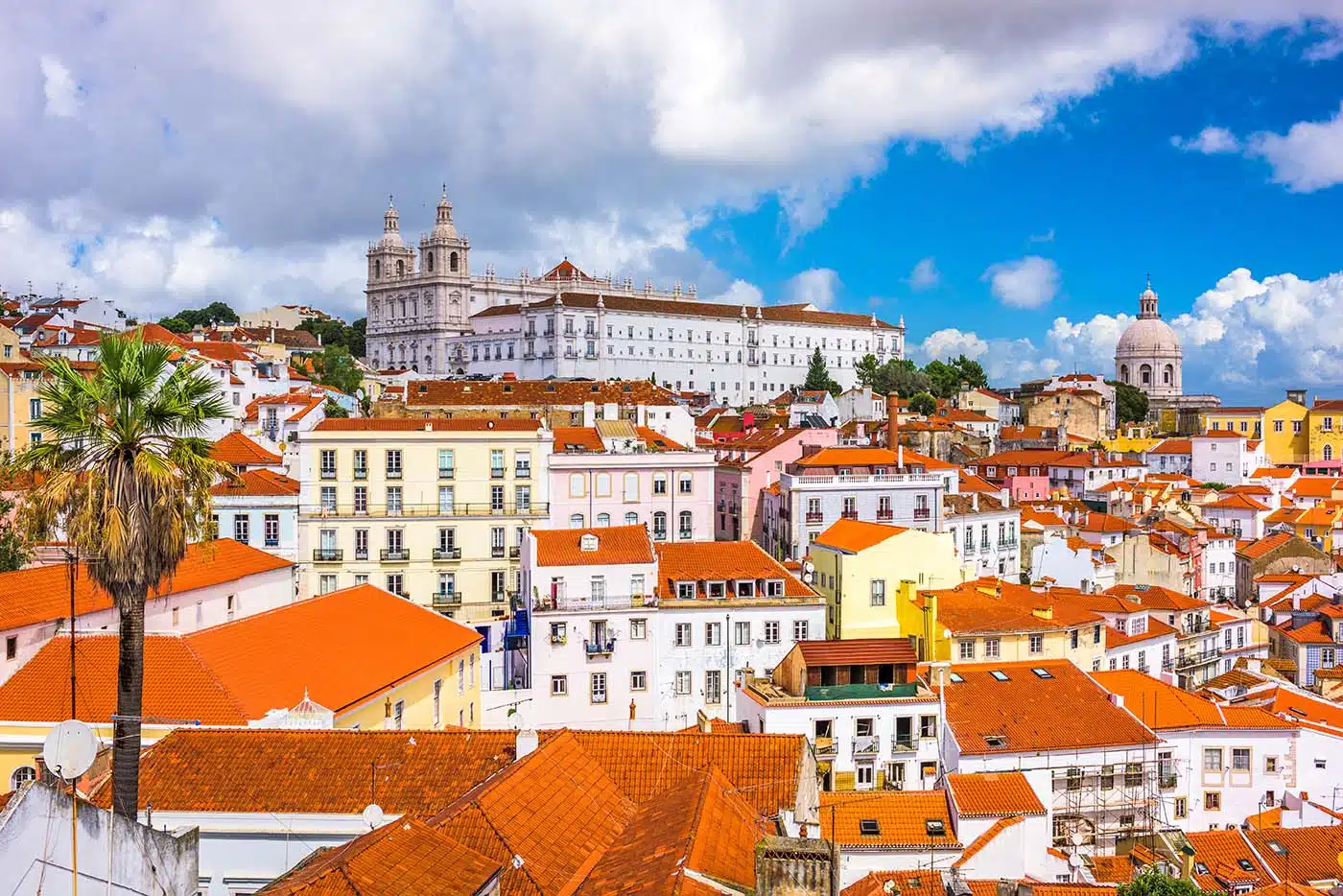
One thing I love about Portugal (OK, there are many things I love about Portugal) is just how easy a Portugal trip is to plan.
If you live in the United States or a country that’s a member of the European Union (along with a few other destinations ), you won’t need to worry about a visa if you’re planning a Portugal holiday, as long as it’s under 90 days (in a 180-day timeframe).
Brush Up on Your Portuguese
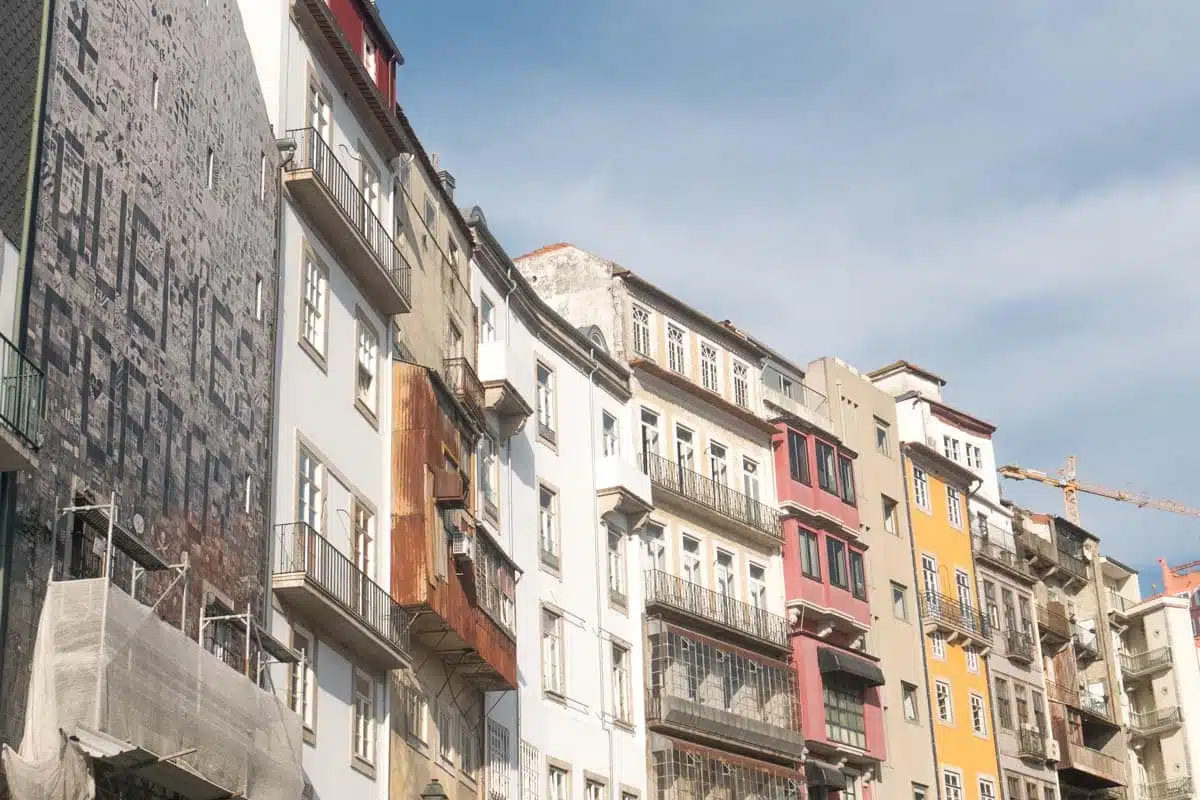
Some people speak English in Portugal; however, the official language is Portuguese. So do yourself a favour and learn the basics before you go. You know, things like “hello,” “please,” and “thank you.”
Consult a guidebook or good old Google Translate, especially while visiting secret spots in Alentejo and other regions that are less touristy and more rooted in local cultures, traditions, and language.
I found this helpful when visiting smaller villages and ordering food in one of my favourite winter sun destinations , Madeira.
It’s one of my travel tips for Portugal that I can’t emphasise enough, as even knowing a little of a country’s language can come in handy. And, if you’re lucky, you may learn some new favourite destinations from locals you meet along the way.
Best Time to Visit

Looking for helpful tips for Portugal travel? Time your holiday around the activities you want to do.
When is the best time to visit Portugal ? Some of the most valuable advice I can give you is to take a long look at exactly what you want to do while you’re visiting Portugal and decide what time of year you want to go based on the activities you plan to do.
For example, if you plan to go hiking in Portugal, you’ll want to do your best to figure out if that region experiences scorching summers or harsh winter weather.
Or, if you want to see the top landmarks in Portugal , you’ll want to plan many of them during shoulder season when it’s not as busy to avoid long queues and higher prices at hotels.
Is Portugal Safe to Visit?
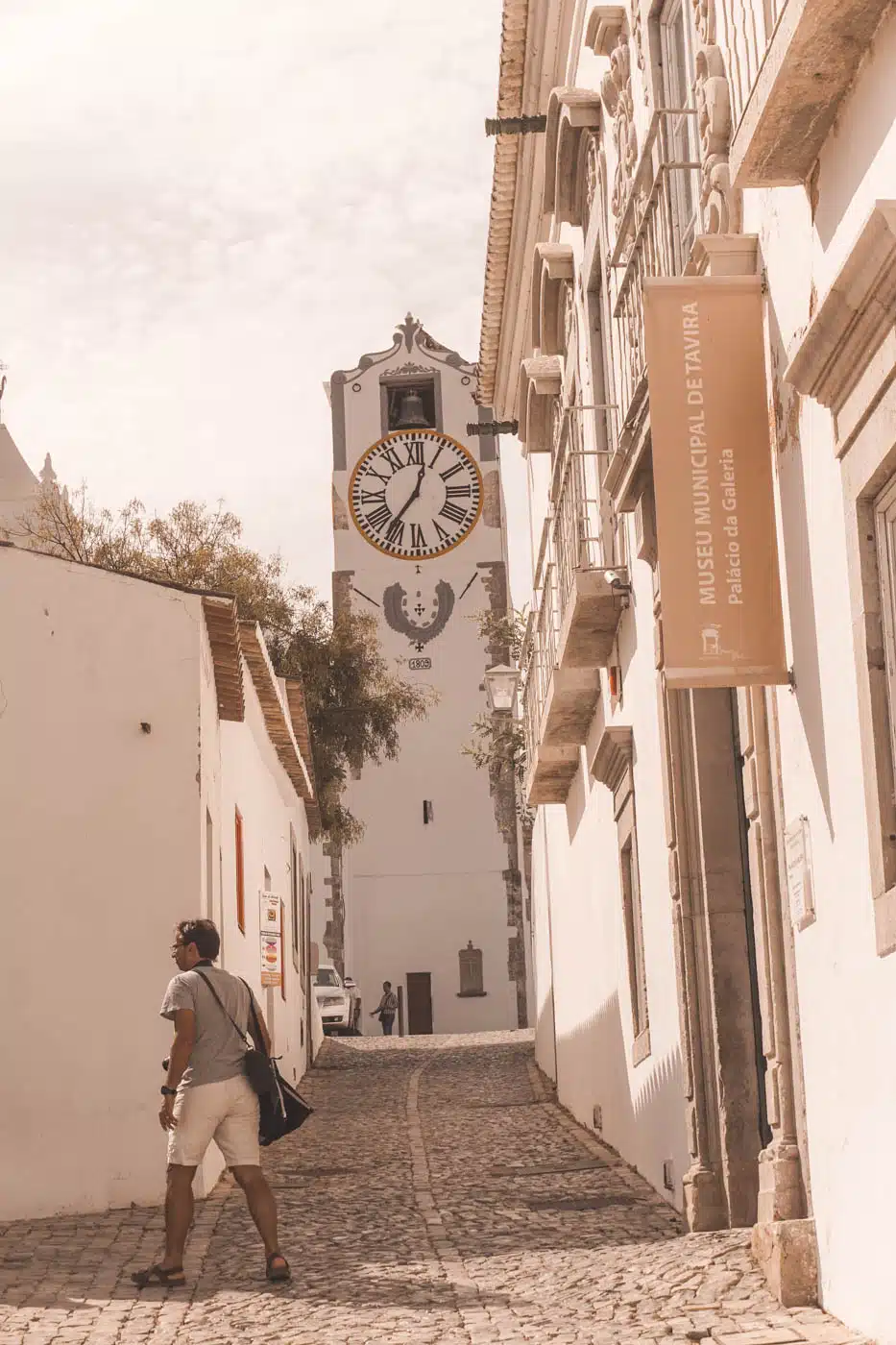
Anytime I plan a holiday to somewhere I haven’t been, I like to get a good idea of potential safety issues. So if you’re wondering how to travel safely in Portugal, we think alike.
Luckily, Portugal is a very safe place to visit. Aside from some basic precautions you’d likely take in any destination, there isn’t much to add for security measures when visiting Portugal.
If you’re visiting bustling areas, keep your purse or wallet close, as pickpocketing may happen from time to time. Similarly, don’t store your valuables inside when renting a car if you want to remain on the safe side.
You don’t need me to tell you to use common sense, I know.
Travelling to Portugal: Tips You Need to Know Before You Go
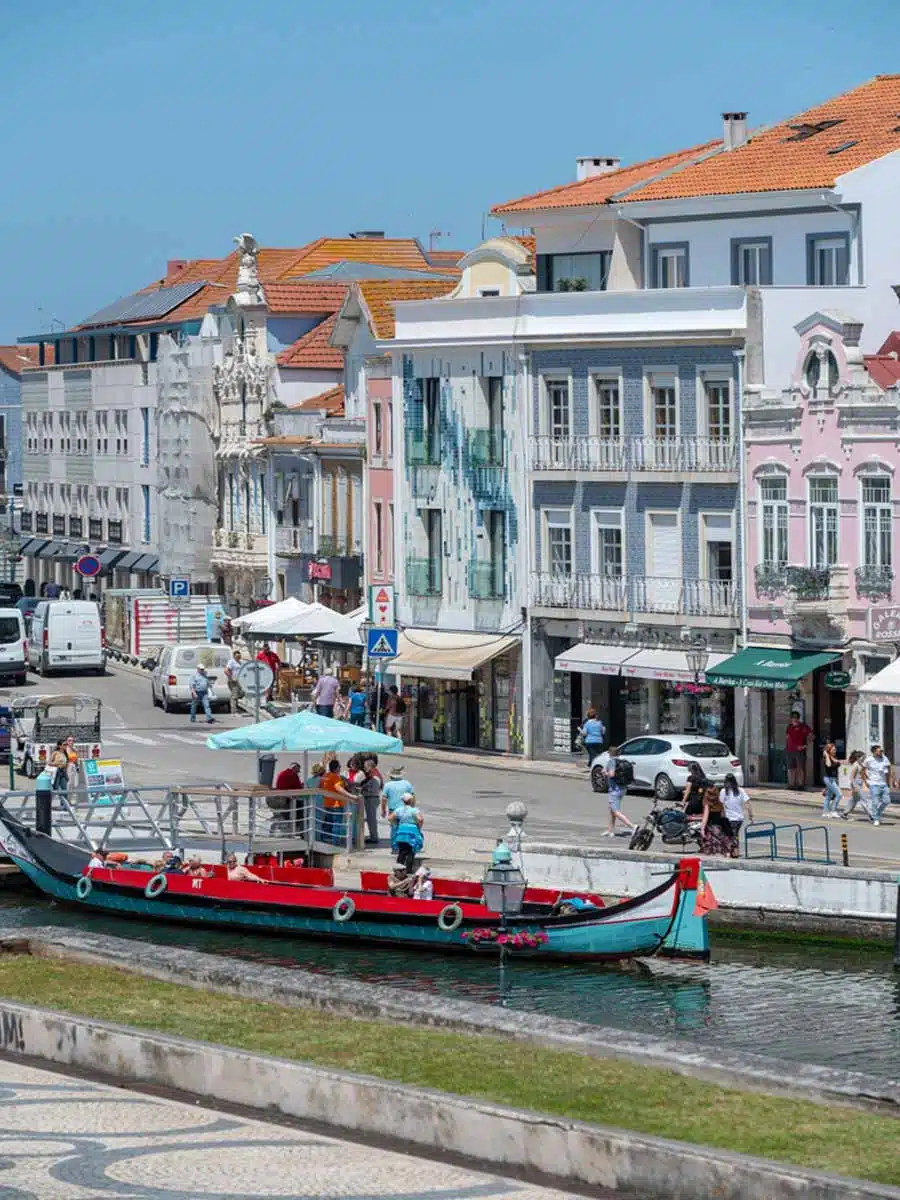
Visiting Portugal is a lot more fun when you prepare ahead of time. Reading a few Portugal travel blog articles like this is a great start (good for you). So let’s consider a few necessary things before planning your Portugal holiday.
How to Get to Your Hotel
When you arrive on your Portugal trip by aeroplane, train, or cruise, you may be wondering the best way to safely get to your hotel, especially if you’re travelling alone.
Portugal is generally a safe country to visit and travel around via taxi, private transfer, and rideshare.
While taxis are perfectly fine and generally safe, I prefer using rideshare in Portugal since there are a few options to choose from; it’s reliable and safe.
When to Book Your Room
You can book your resort or hotel room for your Portugal trip about six months ahead of time and get some great rates while knowing you have a place to stay. But if you want to get the best deal, I’ve found some surprisingly great deals in Portugal by booking at the last minute, but this strategy isn’t for the faint of heart.
Check Hotel Rates and Book Accommodation on Booking.com
Buy a SIM Card Before You Travel
While you can use your cellphone provider through roaming charges, those fees can add up quickly. I like setting up my SIM card ahead of time, and MEO has some great choices at reasonable prices.
If you decide to wait until you arrive, no worries. You can purchase a SIM card around town, often starting at around €10 for 5GB. There’s even a kiosk at the Lisbon airport if you want to take care of it upon arrival, but you’ll pay a higher rate.
What to See in Portugal
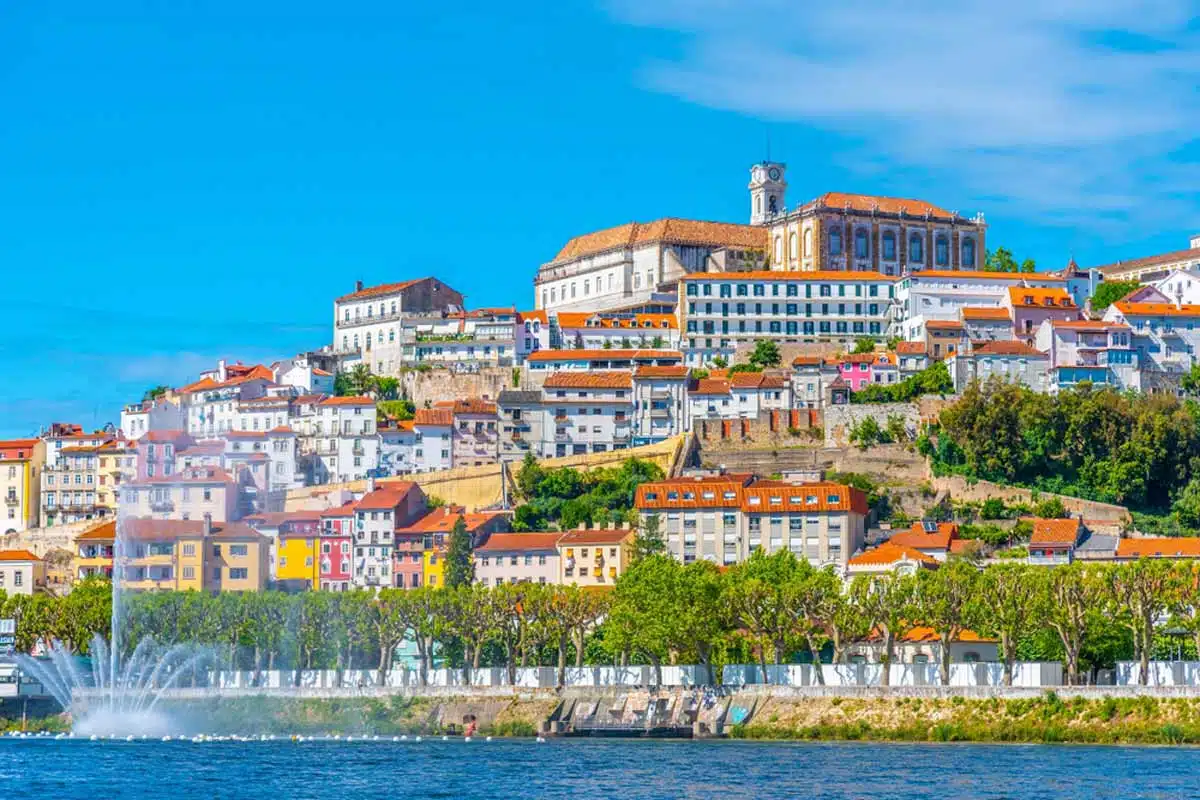
If you’re travelling to Portugal for the first time, choosing your exact destinations and activities might feel a bit challenging.
Not to worry, there are loads of cool things to do in Portugal .
The best advice I can give about what to see when you visit Portugal is to research ahead. Then you can choose which city you’re going to travel to and plan which landmarks, hikes, and events you plan to see in Portugal around your home base.
Where to Stay on Your Portugal Trip
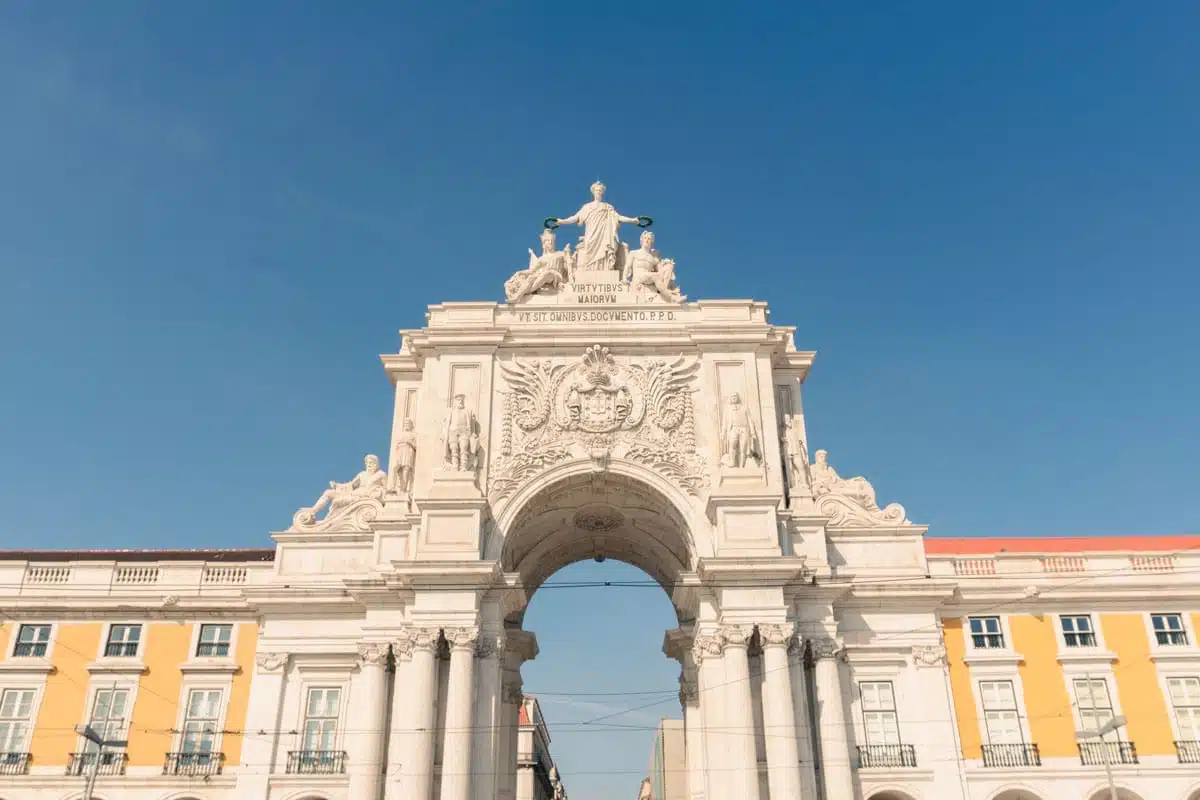
Honestly, there are so many brilliant locations to choose from that it’s hard to go wrong when deciding which destinations to add to your Portugal itinerary .
Determining where to stay in Portugal depends on what you want to see while you’re here. So let’s look at a few of my favourite locations to start your Portugal trip.
Most international travellers will likely begin their journey in Lisbon (which, by the way, is one of my favourite cities and the perfect place to begin your Portugal holiday).
It’s a location where you can find some of Portugal’s best music, food, museums, and hotels – so clear your schedule and add some time in Lisbon to your Portugal holiday.
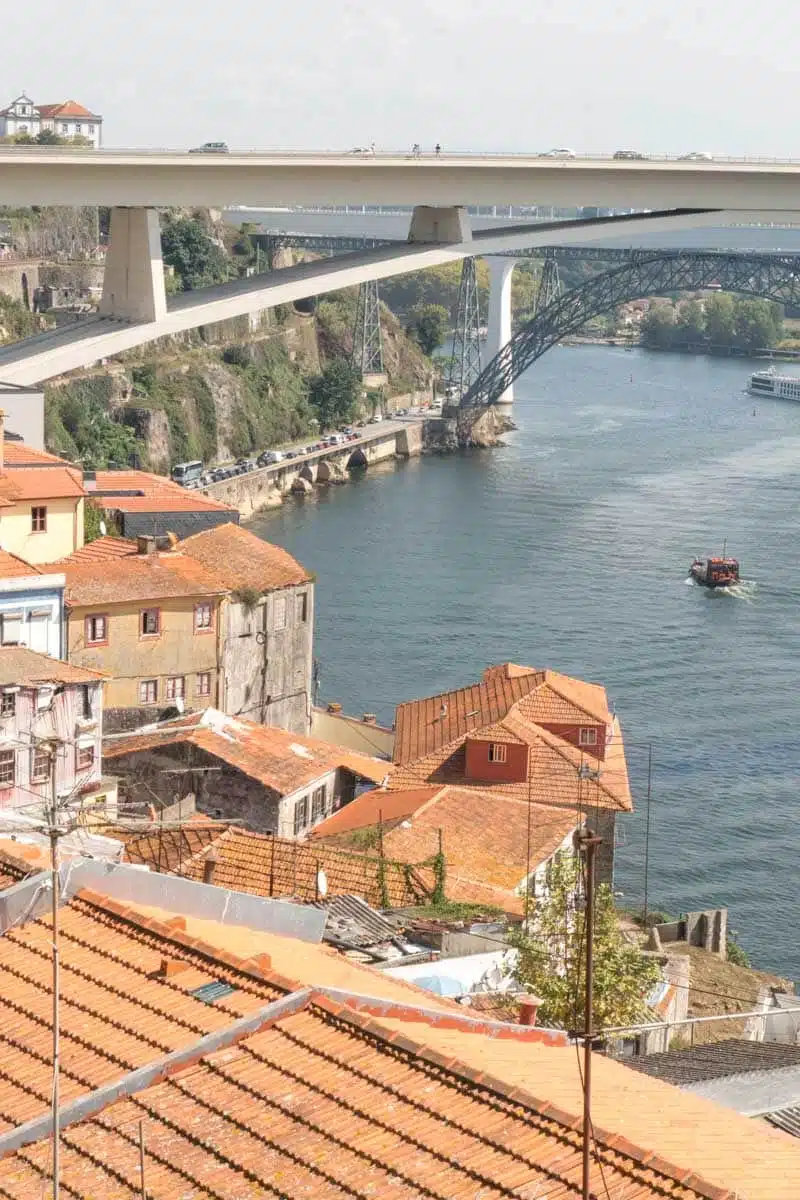
Porto is home to incredible culture, cuisine, and architecture, which makes it no surprise it’s on my list of where to travel in 2023 .
It’s also near dozens of brilliant day trips you can reach via car, private transfer, and guided tours, making Porto a perfect home base when visiting Portugal.
The Algarve
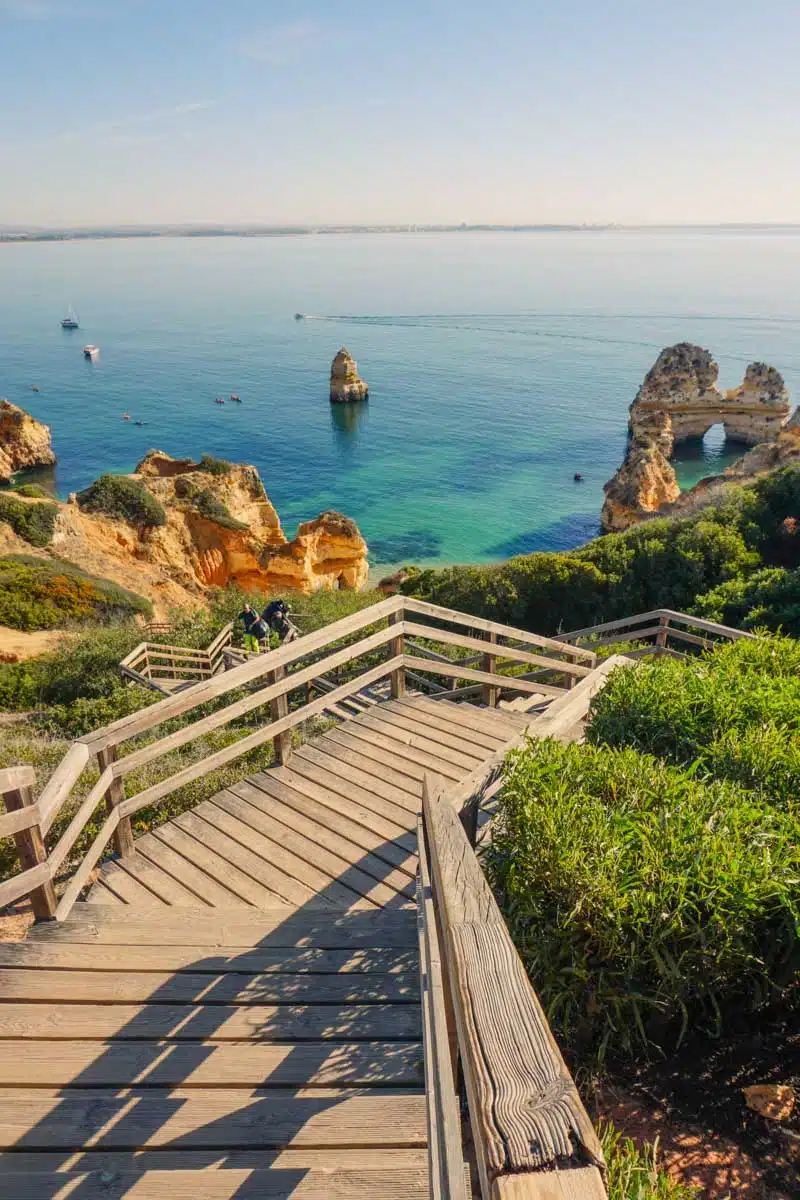
Travelling in Portugal is loaded with unique destinations, but the Algarve is easily one of my top choices for a Portugal holiday.
The Algarve is a great choice to experience local food, nightlife, hiking, and beaches in Portugal.
Plan to Have Some Time With No Plans
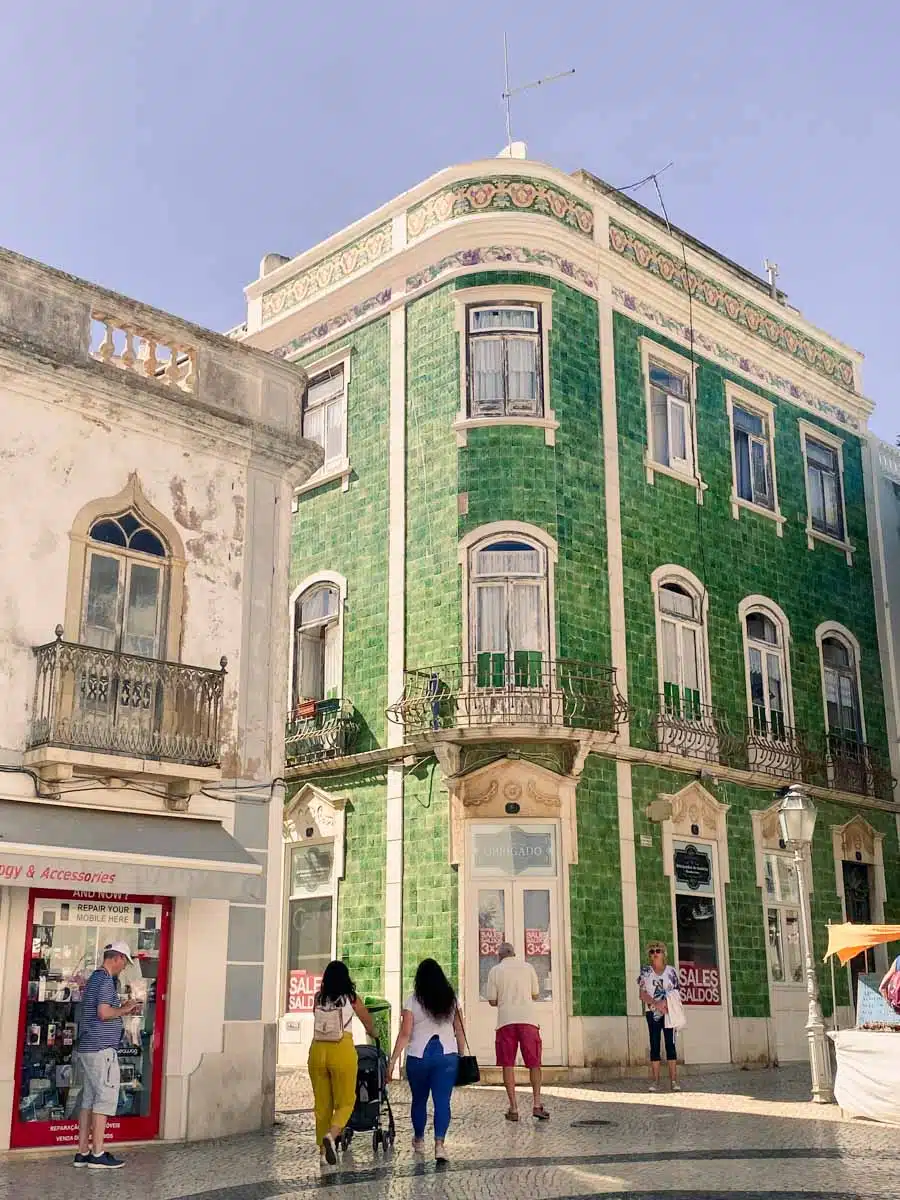
One thing I love to do, especially when visiting Portugal, is to have some free time to explore locations on foot and see what surprises I can discover on my own
I’ve found some of the most exciting restaurants , live entertainment, and open-air markets by walking around Portugal with no agenda other than to learn about whichever area I’m visiting. I can’t recommend enough that you do the same when travelling in Portugal.
Bring a Plug Adaptor
If you’re travelling from the USA, you’ll need a voltage and wall plug adaptor.
I love this adapter as it’s compact and works nearly anywhere I go. But any Plug C or F adaptor will work just fine.
Do I Need an International Driver’s Permit?
You can use your driver’s licence if you’re travelling from the USA, UK, or Canada, but if you’re on holiday from anywhere else, you’ll want to get an IDP ahead of time.
Best Travel Tips for Portugal: Frequently Asked Questions
Planning a trip to Portugal and stuck trying to prepare for it? Well, this guide is a great starting point. Start by booking early and choosing off-peak seasons for the best rates. Also, schedule tickets or tours to any must-see landmarks or museums in advance to avoid waiting in line or, worse yet, finding out they’re closed on a day you intend to go.
Generally speaking, when you visit Portugal, I recommend you stick with common sense rules and behaviour you’d practise, well… anywhere. Don’t get blackout drunk, attempt to speak the local language (it’s Portuguese, not Spanish) , and be patient and friendly when you’re interacting with others. You also want to avoid walking in unfamiliar areas late at night, but it’s safe to say that applies to just about anywhere you travel to.
Choosing what to pack for your Portugal trip depends on where and when you’re going. In the summer, you’ll want plenty of options for staying cool, whereas you’ll need some jackets and warmer gear in the winter.
Read More Portugal Travel Guides
- When’s the Best Time to Visit Portugal?
- Where to Stay in Portugal
- Unmissable Landmarks in Portugal
- Brilliant Hikes in Portugal
- Lisbon City Break Travel Guide
- Visiting the Algarve: What to Know
- Tipping in Portugal: Your Go-To Guide
Love This? Save and Share on Pinterest
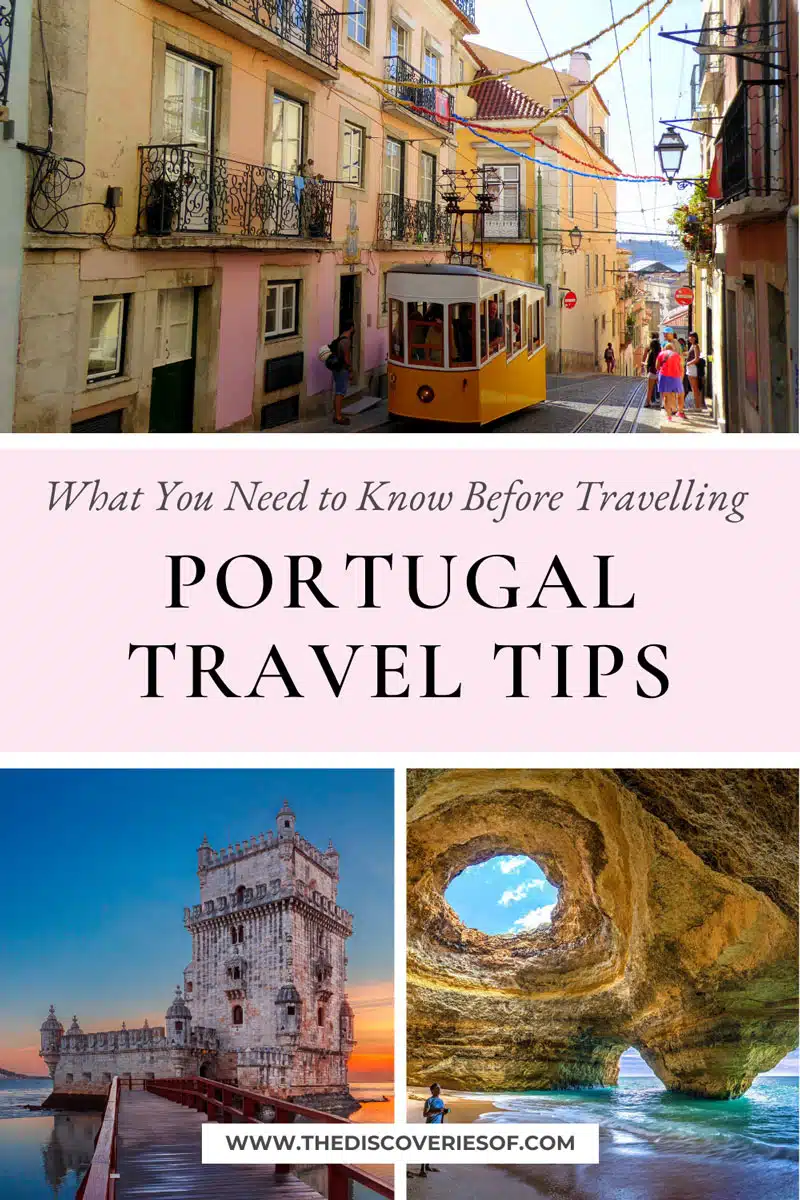
I’m Julianna Barnaby - a professional travel writer and geek extraordinaire. I started The Discoveries Of to help you to discover the best of new destinations from around the world.
Discovering new places is a thrill - whether it’s close to home, a new country or continent, I write to help you explore more and explore differently.
Related Posts
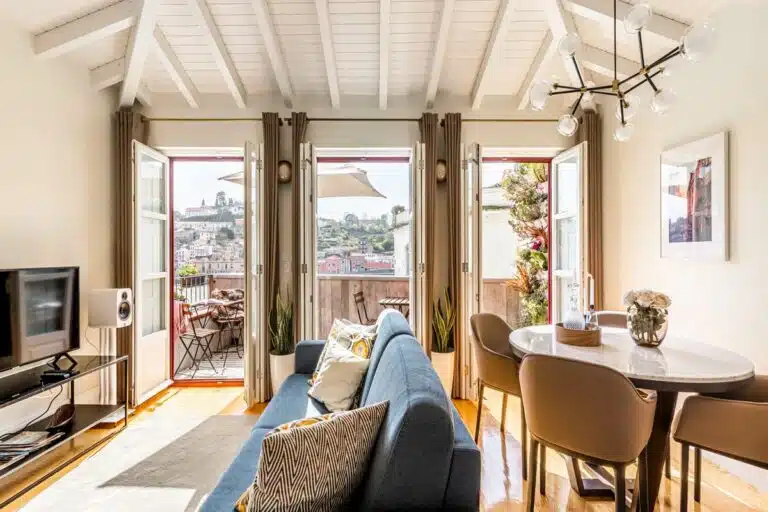
Best Airbnbs in Porto: Cool, Quirky & Stylish Accommodation in Porto

Best Airbnbs in the Algarve: Cool, Quirky & Stylish Accommodation in the Algarve
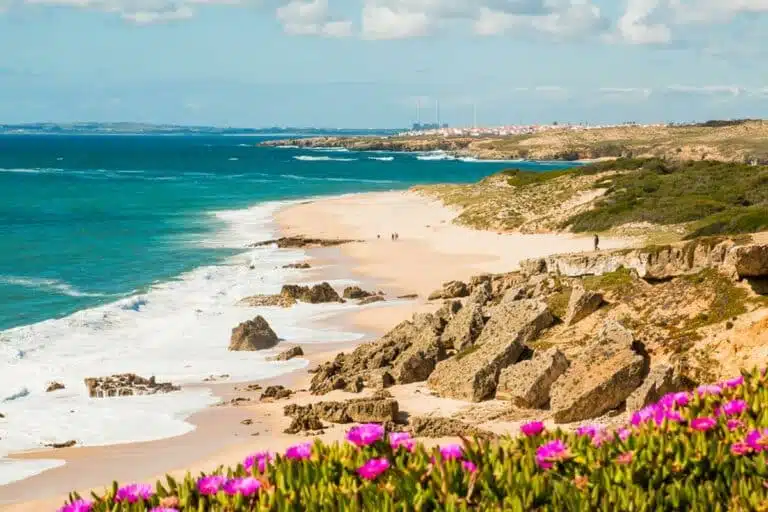
Best Beaches In & Around Porto, Portugal
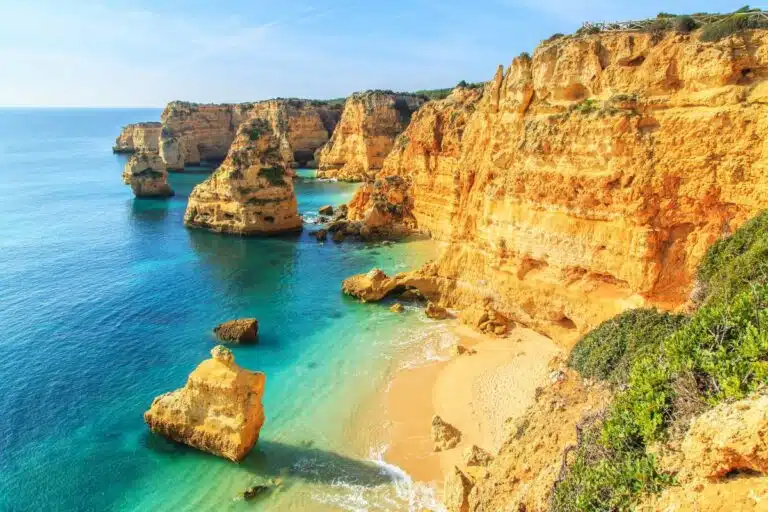
The Best Beaches in the Algarve, Portugal + How to Find Them

Follow me on Instagram for travel inspiration, tips, and guides.
Portugal Travel Guide
A stunning surfers’ coastline, timeworn cities full of yummy eateries, and hills dotted with vineyards – this is Portugal.
Best time to visit Portugal
Best places to visit in portugal, 9 bucket list things to do in algarve, portugal, monsanto: the stunning rock village of portugal, the castles and palaces of sintra, portugal, 14 best things to do in lisbon (3-day guide), map of portugal, weather in portugal.
The weather in Portugal is incredible! With a warm Mediterranean climate, you can expect lots of sunshine and good temperatures, making it the perfect destination for outdoor activities and beach days.
Great cities
10 great things to do in porto, portugal, evora, portugal: a travel guide to the historical treasure, 9 best things to do in albufeira, portugal.
Beautiful Portuguese villages
Ferragudo, portugal: the prettiest village in the algarve, 9 things to do in cascais, portugal, 8 most beautiful villages & towns in portugal, obidos: one of portugal’s most beautiful villages, douro valley: portugal’s stunning wine region, for your roadtrip, how to travel portugal by campervan + rental, renting a car in portugal in 2024: all you need to know, road trip portugal: the perfect 3-week itinerary, how to rent a car in portugal, best travel insurances, how to use google maps offline.
- Find Hotels via Booking.com
- Find Hostels via Hostelworld
- Find a Rental Car via Sunny Cars
- Find Flights to Portugal via Skyscanner
- Get a Travel Insurance via Heymondo
- Book Tours & Attractions via GetYourGuide
- Book a Bus/Train/Transfer via 12Go
- Get a Visa via iVisa
- How to pack light for your trip
- How to plan your trip our tips
Why is Portugal worth visiting?
Portugal is a captivating destination with a beautiful blend of historic charm and stunning landscapes. From its picturesque cities like Lisbon and Porto to the golden beaches of the Algarve, there’s something for everyone to explore and enjoy.
Is Portugal cheap to visit?
In Portugal, you can try delicious cuisine, stay in charming accommodations, and enjoy things to do without breaking the bank. The country offers great value for travelers. Bigger cities, like Lisbon, have slightly higher prices but still offer many reasonably-priced hotels and restaurants.
Can I drink tap water in Portugal?
In Portugal, you can confidently sip from the tap – the water is safe and refreshing to drink! Bring a reusable bottle to top up at one of the many fountains, and stay hydrated while reducing plastic waste.
Do I need a visa for traveling in Portugal?
Most travelers from the EU, the US, and many other countries can enter Portugal for up to 90 days without a visa. Check the requirements for your country, and get ready for your Portugal holiday.
What language do they speak in Portugal?
Often not easily placed when heard elsewhere, in Portugal, they speak Portuguese. Listen to the romantic rhythms as you journey through the diverse regions. However, English is also widely spoken, especially in more metropolitan areas like Lisbon.
Do I need travel insurance for Portugal?
Travel insurance is your safety net for all your adventures in Portugal, ensuring you have peace of mind while road-tripping the coastline in a camper or surfing the ocean. It protects you against unexpected events, whether it’s a canceled flight or an accident.
What power plug type does Portugal have?
Portugal uses Type F for its power plugs, so it’s a good idea to carry an adaptor to power up your devices when traveling to Portugal. Type F has two round pins that fit most European sockets.
Why do people love Portugal?
Portugal is one of the gems in southern Europe, a place where time weaves tales through cobbled streets and golden beaches touch the Atlantic Ocean. From its soulful fado music, delicious pastries, and the warmth of its people, it’s loved by many who journey here.
Travel to Portugal
Portugal is a country where the thrill of nature takes over and gives travelers a buzz like no other, from the wind in your hair as you drive down the rugged Algarve coast to the sun shining on salty skin after a good surf. Road tripping is a must here, with endless quiet roads that hug extraordinary cliffs, caves, and zig-zag right through stunning national parks like Sintra . All of this makes a vacation in Portugal perfect for adventure lovers.
How to Plan Your Trip to Portugal
Follow our Portugal travel guides to plan the perfect road trip! Whether you’re looking to soak up the sun on the southern coast, party in Albufeira , or dive into the rich history of Porto , we’ve got you covered with our informative guides. Explore all the best places in Portugal, or check out our 2-week Portugal itinerary .
If you want to see even more of the country, 3 weeks in Portugal is even better.
Best Time to Visit Portugal
Portugal’s good weather makes it a year-round destination. The sun reigns supreme in the southern Algarve region, with scorching summers drawing beach lovers to the golden shores. The central areas, including Lisbon and Porto, enjoy a mild Mediterranean climate with warm, dry summers. The islands, like Madeira and the Azores, boast a temperate maritime climate, keeping the scenery lush year-round.
Shoulder Seasons: Spring (March-May) and fall (Sept – Nov) is the best time to visit Portugal. During these shoulder seasons, temperatures are nice, and tourist crowds are low, making it a great time to go sightseeing, hiking, or enjoying wine tasting in the Douro Valley .
High Season: The summer months are the peak season when coastal regions bustle with visitors for the sun and sea. Spring and fall are more relaxed times to explore historic sites, like Lisbon’s iconic neighborhoods and Porto’s wine cellars.
Coastlines and Beaches
Portugal’s beaches and coastline are a sun-kissed paradise, with over 1790 kilometers of sparkling sand. From thrilling water sports near Ferragudo to leisurely beach hopping or simply basking in the summer sun, visiting the coastline is one of the best things to do in Portugal.
The Algarve: Along the Algarve’s rugged cliffs, discover hidden coves and dramatic grottoes that invite you to explore. The pristine Praia da Marinha, with its iconic limestone arches, makes you feel as if you’ve just stepped into a postcard.
Best places to surf: For surfers, the waves of Praia do Guicho near Lisbon make up the perfect playground. Catch a wave, feel the ocean’s energy, and soak up the incredible atmosphere on your vacation in Portugal. Meanwhile, the golden beaches of Praia da Comporta provide another serene escape with quiet rustling dunes.
The Azores Islands: In the Azores, the beaches are unlike any other, with black volcanic sands contrasting with the blue waters on São Miguel Island. It’s as if you’ve landed on another planet.
Food, Culture, and Religion in Portugal
Portugal is a land of captivating contrasts, noticeable in its food, culture, and religion.
Food: The cuisine is a delicious fusion of flavors and influences, boasting seafood along the coast and tasty custard tarts in the cities. Pair all of that with an iconic local wine, and you have great cuisine for your Portugal holiday.
Culture : Portugal’s cultural heritage is a testament to its rich history. From Lisbon’s historic Alfama district with narrow winding streets to Porto’s Ribeira, there’s much to marvel at in Portugal. Listen to the soulful music of Fado echoing through the streets as you sit down on one of the vibrant terraces, looking out over the historic towns and villages by the sea.
Religion : Portugal’s religious roots run deep, with many devotees worldwide still visiting the country on their pilgrimage. Its Catholic heritage is evident in ornate churches and religious festivals that bring communities from many neighborhoods together.
Why You Should Travel to Portugal
With its charismatic character and irresistible blend of old-world charm and sun-kissed coast, a vacation in Portugal is bound to leave every traveler in awe. In Lisbon , stroll through the labyrinth of streets covered in colorful tiles. Then, check out fairytale-like Sintra or historic Evora, where tall castles and old buildings peep between the lush forests. And don’t forget the postcard-worthy coastline, perfect for every type of beachgoer. Combine that with delicious cuisine and a great atmosphere, and you’ll soon feel like you belong.
Safety and Travel Advice in Portugal
Portugal is generally a safe and welcoming destination for travelers. However, staying informed about safety measures and travel tips is always recommended.
Natural disasters: Portugal experiences a relatively low occurrence of natural disasters. However, while rare, earthquakes and forest fires can happen. Download your local government app or register at an embassy for emergency updates.
Crime and safety in Portugal : Crime levels are generally low in Portugal. However, like in many tourist destinations, petty crime can occur in crowded areas or tourist hotspots like Lisbon and Porto. Pickpocketing is a risk, especially on public transport and crowded bus and tram stations. Try leaving your valuables at home and carry your bag in the front. Be particularly careful on the number 15 and 28 trams in Lisbon.
Beach time is one of the best things to do in Portugal, with many kilometers of beautiful golden sand. However, some locations aren’t safe for swimming with strong rip tides and undercurrents. Don’t swim at beaches without a lifeguard or those that have warning flags. A red flag indicates danger; don’t go into the water. A yellow flag means caution, meaning you can walk in the water but not swim.
Learn more about travel safety
Traffic: Depending on your destination and the time of year, traffic can be busy in Portugal. If you’re driving a rental car in Portugal, always watch for traffic signs and stick to the rules (even when locals don’t). Avoid driving in city centers or hilltop villages, known for traffic jams and narrow streets and use our Portugal travel guides for the best tips.
Car theft: Foreign-registered and rental cars in Portugal can be subject to car theft. Because of this, always be mindful of where you park, and don’t leave anything on display inside. Try to remove all valuables and luggage from your vehicle if you can.
Travel Insurance: One of the things we always recommend for your Portugal holiday is purchasing travel insurance. Whether it’s lost luggage or unforeseen accidents, travel insurance provides peace of mind, ensuring a smoother and worry-free experience. Check out these best travel insurances .

10+ Handy Portugal Travel Tips For Your Next Visit
By: Author Sophie Nadeau
Posted on Last updated: 12th April 2023
Categories Portugal
Last Updated on 12th April 2023 by Sophie Nadeau
Portugal is a stunning country in South West Europe that’s famed for its breathtaking beaches, colourful cities, and its fantastic foodie scene (including the oh-so-delicious pastel de nata and port wine) . Here are some of the best Portugal travel tips you need to know about before your next visit!

Consider visiting Portugal in the off-season
There is much more to portugal than lisbon and porto, don’t try and see all of portugal in one go, discover the best-kept secrets of portugal, be sure to taste some of the local food, you often have to pay for water and bread baskets, portugal has toll roads, check out your public transportation options from the airport if you’re not renting a car, get travel insurance, portuguese is the language spoken, don’t forget to bring a universal travel adapter along, the currency is the euro, be sure to make time for portugal’s nature.
The peak season for visiting Portugal is during the summer months (i.e. from June through to August, with late July and all of August being the most popular times to visit the European country on account of the summer holidays for children) .
A visit to Portugal in high season is also the most expensive time of the year to visit. As well as this, summer is the hottest time of the year to visit and so you may even find it too hot to do too many activities during the middle of the day at this time.
I personally recommend visiting Portugal in May or September as this is the best time to visit for good weather (October and November can be rainy). I have visited during several different months of the year and found that just before or just after peak season is ideal!

Of course, the cities of Lisbon and Porto are often top of traveller’s lists when it comes to visiting Portugal, and for good reason. They’re the two biggest cities in the South Western European country and are the easiest to reach internationally.
With this being said, there’s a world outside of these two cities that are worth checking out and so consider embarking on a Portuguese road trip if you want to discover more that the Portugal has to offer.

In order to truly maximise your trip and be able to see as much as possible without wasting time travelling around and actually instead seeing the destinations themselves, don’t try and see the entirety of Portugal in one go.
After all, Portugal is around the same size as Indiana in the US, meaning that it’s not tiny by any stretch of the imagination. As such, consider focusing on just one part of the country, such as the Algarve or Northern Portugal.
As an increasingly popular holiday destination, you’d think that Portugal has no hidden gems left to discover. However, this is most certainly not the case. There are plenty of hidden gems of Portugal worth visiting.
Some of my personal favourite hidden gems of Portugal include the medieval city of Silves , the bone chapel at Alcantarilha, and Quinta da Avelada , a botanical gardens and vineyard in Northern Portugal where you can go for wine tastings set against the backdrop of beautiful surroundings.

One of the top things to know before visiting Portugal is that the local food and drink is incredibly quality and is very affordable. If you’re in a major city, then you might consider booking a food tour in Lisbon like this one or a food tour in Porto like this one. If you prefer to bring foodie gifts home with you, then check out our suggestions for the best Portuguese souvenirs .
Unlike in some other European countries, most restaurants and cafés in Portugal will make you pay for water. Often times, unlike in some countries, such as France, you’ll also have to pay for bread if you want a bread basket to accompany your meal. Be sure to factor this in when heading out for a meal.

If you’re looking to travel around the country by car, then you should note that factoring in toll roads is a must. Most rental car companies allow you to purchase an additional toll road reader that will automatically add up how much you’ve spent during your road trip. Check car rental comparison prices here.
While I would personally rent a car to visit more remote areas of Portugal, renting a car is often much more expensive than taking public transportation and so this should be taken into consideration when planning your trip budget.
This is especially important to note if you’re just going to be visiting larger cities such as Lisbon or Porto, in which case you won’t need to rent a car at all.
One of the most important aspects to consider before booking any trip is to make sure that you purchase travel insurance in advance. This will give you peace of mind in case anything goes wrong and will help you out greatly in the unfortunate event that something does happen!
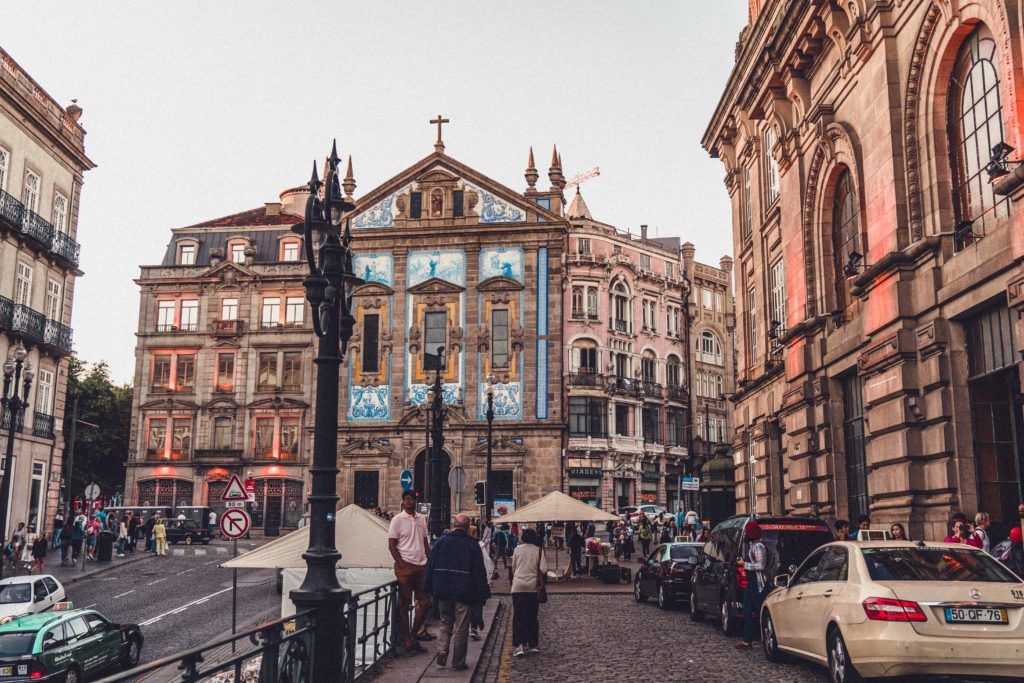
Portuguese is the language spoken in Portugal. With this being said, in most destinations (and particularly in tourist hotspots) people have a good level of English and so it’s easy enough to get by.
Of course, it’s always polite to learn a few words of the local language and so I recommend learning at least ‘hello’ ‘thank you’ and ‘please’ before travelling. Bring along a Portuguese phrase book like this one to help you get by.

If you’re visiting The Netherlands from the USA, UK, Canda, and a plethora of other countries, then you should know that you’ll need to bring along a travel adapter.
The plugs in Portugal are C and F. If you want to save money, then purchase this all-in-one travel adapter that will allow you to use your electronics in over 150 countries!
The currency used in Portugal is the Euro, which is also the currency used in many other major destinations such as France, Spain, Italy, and Germany. While using a card is often convenient, not all places will accept card and are cash only. Be sure to have some smaller notes cash on you to pay for various things.
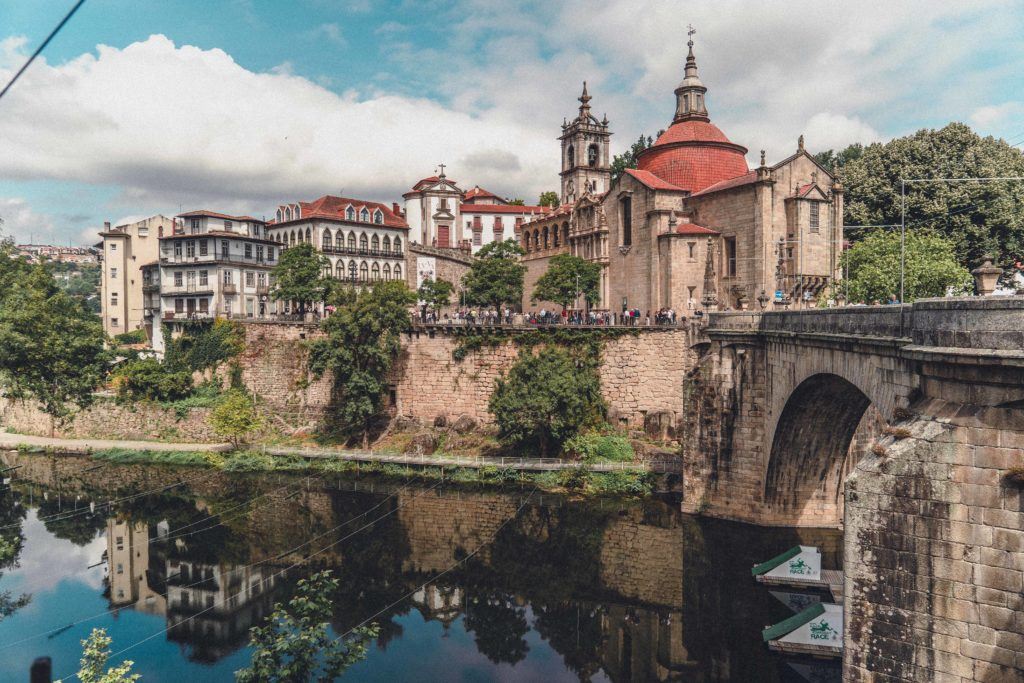
One of the most important things to note before visiting more rural regions of Portugal (including various towns and villages along the Algarve coastline) is that cash is still king in many places.
Indeed, there were even entire restaurants where we found that you could only pay by cash. With this being said, ATMs are widely available in all large towns and cities and so we soon found that it wasn’t necessary to carry lots of cash with us at any given moment.
As well as the major cities like Lisbon, Portugal, and Faro, Portugal has some of the most gorgeous nature landscapes in Europe. From wide open sweeping beaches, such as those found around Sagres to natural geological wonders such as Ponta da Piedade , there’s no shortage of amazing.
Enjoyed reading about the top Portugal travel tips to know before your first visit? Pin this article now, read it again later:

Sophie Nadeau loves dogs, books, travel, pizza, and history. A Francophile at heart, she runs solosophie.com when she’s not chasing after the next sunset shot or consuming something sweet. She splits her time between Paris and London and travels as much as she can! Subscribe to Sophie’s YouTube Channel.
This site uses Akismet to reduce spam. Learn how your comment data is processed .

The Ultimate 10 Days in Portugal Itinerary

Planning a trip to Portugal and don’t know where to start? I have my ultimate 10 days in Portugal itinerary that I’ve put together. After my fourth trip to Portugal, I’ve absolutely fallen in love with this country.
I’ve take the very best of all of my trips, all my travel tips for Portugal , and have put them in a single place. There is so much to do in Portugal, from the city to the countryside. I think one of the best ways to experience Portugal is to spend a few days in the city and then get out to visit the greater region.

Now, while I’ve done Lisbon three separate times, I always find myself wanting to spend a bit more time exploring. While I love the city, Portugal has a lot to discover that is under 2 hours drive from the city. That’s what I love most about this Portugal itinerary. You don’t have to travel long distances to see a wide variety of places.

So I’ve pulled together all of my Portugal trips into a single, condensed itinerary to help plan your trip. Read on to find where to stay, how to plan your time, and all the tips. This is my ultimate 10 days in Portugal itinerary.
Short on Time? Here is the Ultimate Portugal Itinerary for 10 Days:
Stop 1: lisbon and nearby day trips — 4 nights.
- Hotel Das Amoreiras or Memmo Principe Real , for the best Principal Real hotels
- The Lumiares or Lisboa Pessoa Hotel , for the best Bairro Alto hotels
- Memmo Alfama , for the best Alfama hotel
Stop 2: Evora — 2 nights
- Octant Evora , for the best overall hotel
Stop 3: Comporta — 3 nights
- Sublime Comporta , for the best overall hotel
What to Know Before Choosing Your Itinerary

How Much Time is Really Needed to Visit Portugal?
This is the top question always asked — how much is needed? I always recommend a minimum of a single week for Portugal. 10 days is not enough but will give you the right amount of time to visit a few things slowly. Lisbon alone takes three full days to properly see, and even a few more if you do day trips.
What is the Best Way to See Portugal?
When it comes to Lisbon and closeby places, by foot or public transport. To see the greater regions of Portugal, you will need a rental car. I’ve rented cars all over Europe, and by far, Portugal has been one of the cheapest yet. So ditch the car for cities like Lisbon or Porto, and take it to the beaches and countryside.
What Do I Need to Know About Renting a Car in Portugal?
You’re likely going to get a rental car in Portugal to do some portion of this itinerary. It’s easy to drive around, and recommended for ease. When deciding on a rental car:
- Do use Discover Cars to Book — They have the best rates and options for rentals, you can add full insurance at a reasonable rate, and more. This is my trusted site for booking.
- There are Toll Roads —Super simple solution: ask the rental car company to turn on the electronic transponder. You’ll get billed at the end and you don’t have to worry about having euros on you.
- Extra Drivers Cost More — If two of you drive, you’ll need to pay an additional driver fee by day. For Sixt, it was 10 euros daily.
- There is an Airport Surcharge — Each company has a different fee, but you’ll likely spend an additional 25 euros to pick up at the airport, which is no biggie since there is a major convenience in doing so.
What’s the Best Airport to Fly Into for Portugal?
If you’re coming international from the US, I always recommend Lisbon. You’re going to want to see the city anyways, and the flight options are the best. It also puts you at a great starting point for this itinerary.
How I Structured this 10 day Portugal itinerary
When I started honing on the best places and regions of Portugal to recommend, I had one thing in mind: slow, intentional travel. I wanted the logistics of the itinerary to make sense, cut down on travel time, and be practical.
This entire trip is essentially a loop beginning in Lisbon, and I’ve included a few extension ideas for places to visit. I’ve chosen destinations in Portugal that I feel aren’t always top of mind. They are incredible, beautiful, and often fewer in crowds (well, except Lisbon, but that’s a must see!).
The 10 Day Portugal Itinerary — Lisbon to Alentejo to Comporta
Stop 1: lisbon & nearby day trips.

Recommended Time: 4 nights
Getting into lisbon from the airport.
When it comes to getting into the city from Lisbon Airport, I always recommend either taking an Uber or pre-booking a transfer. I typically do an affordable pre-booked transfer for ease , and the drive time is around 20-30 minutes pending the time of day.
Where to Stay in Lisbon
I have a few favorite hotels in Lisbon, and neighborhoods. In Principe Real, I love Hotel Das Amoreiras or Memmo Principe Real . My go-to’s in Bairro Alto are The Lumiares or Lisboa Pessoa Hotel . In the Alfama, I love the Memmo Alfama for its location in the heart of the neighborhood.
For my full list of recommendations, read my guide on the best boutique hotels in Lisbon !
My Favorite Things to Do in Lisbon

- Soak in Views from the Miradouros — The city is full of them, and it’s one of the best way to get oriented. My personal favorite is Miradouro de São Pedro de Alcântara .
- Shop Local — The shopping is some of the best in Lisbon. I love shops like EmbaiXada , Claus Porto , Bernardo Atelier Lisboa , and A Vida Portuguesa .
- Stroll the Neighborhoods — Enjoy a quiet walk through the Alfama or even Bairro Alto, both have stunning views of the city. Stop into A Brasileira for the oldest coffee shop in town and cross the street to Livraria Bertrand – Chiado
- Take a Food Tour — These are such a great way to eat your way through Lisbon. I’d recommend this small group tour , this one with the reputable Eating Europe group , or this 17 tastings one.
- Visit the Belem Tower — It’s well worth pre-booking tickets and spending a chunk of time strolling around and taking in the views, and it’s right near Jeronimos Monastery . This walking tour is also a great way to experience both the Tower and the Monastery.
- Tour Jeronimos Monastery — Pre-book tickets to Jeronimos Monastery, the lines are usually for the chapel, which is beautiful but can also be viewed from above with a ticket to the conclaves (can’t be missed). I found myself loving an hour or two to stroll around.
- See MAAT Museum — One of my favorite museums in Lisbon to visit along the waterfront. Pre-book tickets here .
- Spend an Afternoon at LX Factory — They converted a ton of industrial factories into shops and restaurants, and there’s quite a few things to enjoy here. Find a rooftop bar, restaurants, and a wonderful book store too.
- Tour Ajuda National Palace — If you’re looking for grandeur and decorative art, come into the 19th-century palace where the royal residence once lived. Pre-book tickets here .
The Best Restaurants in Lisbon

- Time Out Market Lisboa — this food hall has everything you could want. If you want a good, no-res meal, come here.
- Magnolia — The it-girl right now of Lisbon, come in for any meal. The space is warm and inviting, and the food is it. *Reservation required
- Pica-Pau — This is where I’d go for traditional Portuguese food done highly well. Good spot to try bacalhau. *Reservation required
- Belcanto — Chef Jose Avillez runs the food scene in town and if you’re looking for fine dining, this is the one I’d book. *Reservation required
- Bairro Do Avillez — Several restaurants in one, this is where Chef Jose Avillez has several options for dining. I always love Minibar but wasn’t impressed last trip so I’d stick with Taberna in the front. *Reservation required
- Prado — for best farm to table cooking, this is where I’d come in for do big share plates with friends. *Reservation required
- A Cevicheria — One of the best ceviches in town, I go here every trip. *Reservation required
- Pasteis de Belem — If you want to skip the line, just past by the left and ask for a seat (much shorter than take away).
The Best Coffee Shops in Lisbon
- Hello, Kristof
- Copenhagen Coffee Lab & Bakery
Where to Take a Day Trip From Lisbon

There are so many wonderful day trips I have done over the years and I’ll share a few to consider for your trip. Any of these can typically be done by public transport, but a group tour may be good option too.
- Sintra — The most obvious day trip that one must do is Sintra. It’s home to magical castles and ancient times. Tour places like Castelo dos Mouros, Palacio Nacional da pena, Palacio Nacional de Sintra , and more (you need tickets in advance for all). And of course there is the traditional pastry house of Casa Piriquita which is well worth a visit. You can train there from Lisbon in 40 minutes on the Sintra Line or self-drive in 30 minutes. Some tours to consider are: a full day private tour , half day tour in classic car , or this complete tour full day tour.
- Cascais — Just south of Lisbon is my favorite seaside town of Cascais. Reach it in under 40 minutes by train and have the whole day at the beach and in town. I personally always do this one as I love the change of scenery.
- Ericeira — This is where to go for those who want to go surfing. You can reach it by direct bus in 40 minutes or by car. There is a lot in the small town from boutiques to shops, and the entire beach area.
Sample Itinerary for Lisbon ( My 4-Night Lisbon Itinerary here )
- Day 1 — Get settled in town. Walk your neighborhood. Get a coffee. Dinner at Timeout Market for ease.
- Day 2 — Explore Alfama and the city center. Get a coffee at A Brasilieira and ride a cable car. Have lunch at A Cevicheria. See the miradouros, shop local. Eat dinner at one of Chez Jose Avillez’ restaurants.
- Day 3 — Spend the morning to early afternoon out in Sintra or Cascais. Late afternoon at LX Factory and eat dinner at one of the restaurants there.
- Day 4 — Belem Tower in the morning, stop by Pasteis de Belem for breakfast. Tour the Jeronimos Monastery and then walk along the waterfront to the MAAT. Lunch at Magnolia. Cruise around Bairro Alto and the neighborhood. Dinner at Prado.
Stop 2: Evora

Recommended Time: 2 nights
Getting to evora from lisbon.
The best way to get to Evora from Lisbon to continue this itinerary is by rental car. I would transfer back to the airport and get your rental car there (or book in town with a drop-off at the airport at the end). I recommend booking with Discover Cars for the best rates and options for rentals. You can also add full insurance at a reasonable rate, and more.
Where to Stay in Evora

You have a few choices for accommodations in Evora, but I think the best it to be out in the countryside. I stayed at Octant Evora and enjoyed the natural setting. Some other hotels to consider as well are Imani Country House , Convento do Espinheiro , or L’AND Vineyards .
My Favorite Things to Do in Evora

- See the Historical Sights — You can spend all day walking on foot going from one historic sights to the next. Stop into the Roman Temple of Évora , see the Chapel of the Bones , and definitely go into the Cathedral of Evora (climb the stairs to the rooftop!)
- Do Some Local Shopping — There are several local boutiques in town like Oxalá , O Cesto Artesanato , and Livraria Fonte de Letras . Get things like olive oil, cork products, and more.
- Go Wine Tasting in The Valley — With several wineries within reach, I’d spend an afternoon at one of them like Fitapreta Vinhos or even L’AND Vineyards .
For more Evora recommendations, don’t miss my full guide to Evora, Portugal !
Where to Eat in Evora

- Botequim da Mouraria — One of the best meals of my last trip, line up early for open to get a seat at this 8-person bar. All dishes made by the owner and chef, this is where to come for the classics.
- Fialho — The spot to come for all the classics like roasted lamb and local cheeses. *Reservation required
- Dom Joaquim — Great local spot for elevated dining, it’s one of the most popular restaurants in town. *Reservation required
- Cavalariça Évora — Though there is one in Comporta, the Cavalariça Group opened doors in Evora. I’d pop in for a leisurely lunch here. *Reservation required

Things to Do Nearby Evora

- Visit the Village of Monsaraz — I would spend a full day exploring the valley, going all the way out to Monsaraz. The small hilltop village is so stunning, and well worth a couple of hours.
- Shop Ceramics in Corval — Known as one of the best ceramic towns in Portugal, I’d come here to shop at the “olarias” in the town. I loved Olaria Tavares .
- Stop at São Lourenço do Barrocal for Lunch — Out in the valley is the prestigious hotel , and well worth stopping for lunch at their tavern restaurant . Idyllic views, this was one of my favorite things I did.
- Visit the Village of Montemor-o-Novo — On your way from Lisbon, I’d pop into the historic town to stroll the streets and tour its ancient castle at the top.
Sample Itinerary for Evora
- Day 5 — Drive Lisbon to Evora, stop in Montemor-o-Novo along the way. Spend the whole day in Evora, see all the sights, eat lunch at Botequim da Mouraria or Cavalariça. Check into hotel, relax. Dinner at Dom Joaquim.
- Day 6 — Depart to tour the valley. Stop in Corval to shop pottery. Go to Monsaraz to tour village. Eat lunch at São Lourenço do Barrocal. Head out to the wineries like Fitapreta. Come back to Evora for a dinner at one of the local restaurants.
Stop 3: Comporta

Recommended Time: 3 nights
Getting to comporta from evora.
On your morning out of Evora, leave mid-morning to make the 1.5-2 hour drive out to the coast. It’s a leisurely drive, make sure your car is full on gas. The roads are easy to navigate, windy at times, but straightforward.
Where to Stay in Comporta

There is no more prestigious property than Sublime Comporta . It’s luxurious, super well done, has all of the amenities. So if you’re looking to splurge, I would book in there. I’d consider other properties like Spatia Comporta , Quinta da Comporta , and AlmaLusa Comporta .
My Favorite Things to Do in Comporta

- Spend time at the beach . There’s not a more better way than to just be at the beach in Comporta. The main ones are Praia da Comporta , Praia do Pego , Praia da Torre , and Praia do Carvalhal .
- Relax poolside. Book in a few hours to just stay at your property and enjoy.
- Shop town. Comporta town has a few small local shops for home and lifestyle goods. Stop into Rice – Marta Mantero , Lavanda , and Mercearia Gomes .
- Drive down to the village of Melides. This up-and-coming town has a lot to offer. From its main beach to the iconic Hotel Vermelho which was opened by Christian Louboutin, you could spend a half day here. I’d shop at Vida Dura , eat lunch at the hotel, and stroll the town.
- Go Horseback Riding. With Cavalos na Areia , you embark on a 1.5 hour horseback tour down to the beach with a guide.
For more Comporta recommendations, don’t miss my full guide to Comporta !
Where to Eat in Comporta

- Sublime Comporta Beach Club — This was my favorite spot for a beachside meal. Order the paella and enjoy the sunset views. *Reservation required
- Cavalariça — One of the best meals in town. I really loved how paired down yet elegant this meal was.
- ALMO Café — Stop in here for lunch at least one day, the outdoor patio is lovely. *Reservation required
- Sal — Another classic, I’ve been here several years ago and it was just as packed as last time. *Reservation required
Sample Itinerary for Comporta
- Day 7 — Drive from Evora to Comporta in the mid-morning. Stop in town for lunch at ALMO Café. Head to hotel and check in to enjoy for the night. Sunset dinner at Sal or Sublime Beach Club.
- Day 8 — Slow morning at the hotel. Stop into Mercearia Gomes to pick up things for a picnic. Spend day at the beach. Dinner at Cavalariça.
- Day 9 — Head down to Melides. Spend morning at beach. Lunch in town at the Hotel Vermelho, shop at Pura Vida. Afternoon at pool or horseback riding. Dinner at at Sal or Sublime Beach Club.
- Day 10 — Check out and head back to Lisbon for flight home — or continue on to another destination.
If You Have More Time
For more beaches & small towns.
If you have more time to spend in Portugal and want to make it a 2 week itinerary, you easily could. From Comporta, I would continue on to the Algarves. It’s the most obvious choice for ease and you can drive down the coast in a few hours. Towns like Faro, Albufeira, Lagos, and Sagres are popular. You will need car.
For Small City & Wine Region
If you wanted to head north for a small city and wineries, I would return you car to Lisbon Airport or Lisbon Train station and go to Porto. Porto is another lovely region to visit. From there a few nights in Porto is lovely with a visit to the Douro Valley. You can get there by direct train from Lisbon so you could skip the car.
Save This Post for Later on Pinterest

PS — Are You Booking a Trip Soon? Use My Booking Checklist!
These are the sites I use most to book my own trips. Using the links below is a great way to support Bon Traveler’s travel journalism at no extra cost to you . If you need help organizing your itinerary, get my free travel itinerary template here .
1. Book Your Flights
Use Skyscanner to find the best flights. It searches 100s of airlines and websites across the globe to ensure you’re not missing out on any route options or deals.
2. Book Your Accommodations
Use Booking.com for hotels and guest houses. They have the biggest inventory and consistently offer the best rates.
3. Book Your Tours & Experiences
Use Viator or Get Your Guide to find the best tours and experiences. They are my favorite tour search engines. I always check both as their inventory varies depending on the destination.
4. Book Your Car
Use Discover Cars or Rentalcars.com to find the best car rental deals. I recommend comparing rental agency reviews on Google to ensure you are booking with the best company in that destination, as the reviews are often more accurate than the car rental search engines.
5. Don’t Forget Airport Lounge Access
Get a Priority Pass membership to gain access to 1,400+ VIP lounges and airport experiences worldwide. The Priority Pass app is the first thing I check when I have a layover. I’ve been a member for over a decade, and having a comfortable place to relax before and between flights makes air travel so much more enjoyable.
6. Don’t Forget Travel Insurance
I never leave the country without travel insurance. It provides comprehensive protection in case anything goes wrong (ie. illness, injury, theft, and cancelations, etc.). I use it frequently for my travels to stay protected.
My favorite companies that offer the best coverage and rates are:
- World Nomads (best for all-around)
- Safety Wing (best for frequent travelers)
Xx, Jessica
Related Posts

The Best Comporta Hotels For 2024

Monsaraz, Portugal Guide: Alentejo’s Prettiest Medieval Village

Your Ultimate Travel Guide to Visiting Coronado Island
Write a comment cancel reply.
Save my name, email, and website in this browser for the next time I comment.
- Cayman Islands
- Dominican Republic
- Puerto Rico
- South Dakota
- Washington DC
- Czech Republic
- Netherlands
- Switzerland
- French Polynesia
- Travel Tips
- Family Travel
- Accommodations
- Packing Lists
- Photography Tips
- Northern California Guide
- San Francisco
- Lightroom Presets
- Fine Art Prints
- Rent Our Home For Photoshoots
- California Map
Type above and press Enter to search. Press Esc to cancel.

11 Portugal travel tips to know before you visit
Sometimes, the smallest countries can pack the biggest punch—and that is definitely the case when it comes to Portugal. This gem on the Iberian Peninsula has all the history, food, and views your travel-loving heart could desire, which makes it one of the top destinations to visit in the year ahead. (We’re not kidding—you should add one of our Portugal tours to your bucket list before everybody else catches on!)
To help you make the most of your trip, here are 11 Portugal travel tips to keep in mind before touching down on tour, straight from our expert staffers who have visited the country. Here’s one, just to kick us off: “Before I went to Portugal, I wish I knew it was going to be my favorite country out of the more than 20 countries I’ve visited in Europe!” said staffer Gustavo.
Sightseeing tips while visiting Portugal

Discover Portugal on tour

4.6 out of 5 stars

4.7 out of 5 stars

4.5 out of 5 stars

5 out of 5 stars

4.3 out of 5 stars

More Portugal travel inspiration

You will be redirected to your dashboard shortly. We will also call you back in 24 hrs .
- 14 Top Travel Tips For Portugal That’ll Help You Plan A Better & A More Hassle-Free Trip
23 Mar 2023
Portugal is a stunning travel destination for all the travel enthusiasts out there with its magnificent beaches, stunning cityscapes, welcoming locals, and the delicious European cuisine. If you are travelling to Portugal for the first time, you will definitely fall in love with the place. It has many beautiful destinations that are worth visiting and with these best travel tips for Portugal mentioned below, your trip to the country will surely be more enjoyable and convenient. Take a look at our list of travel tips to Portugal to make the most of your Portugal vacation!
14 Top Travel Tips To Portugal
These 14 best travel tips for Portugal will come in quite handy on your next EuroTrip. Take a look and do take notes for planning an impeccable vacation with your loved ones.
1. Travel out of peak season
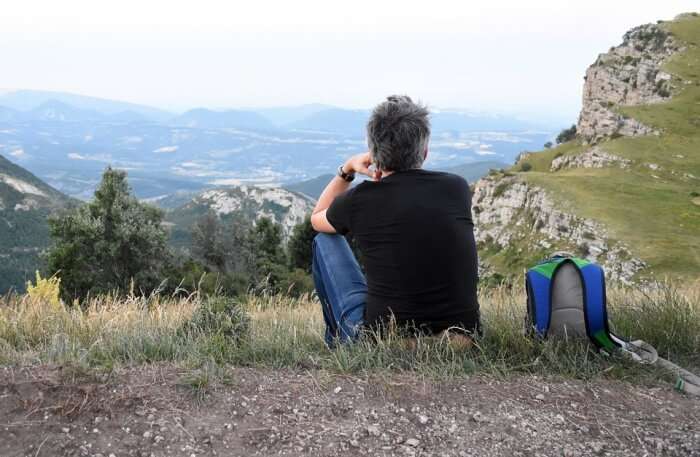
Image Source
Though June till September is the best time to visit Portugal, but the beautiful beaches and tourist attraction spots are usually overcrowded during this time of the year, so the best thing to do would be to visit Portugal during the shoulder season like autumn when the beaches are generally less crowded during these times and so you can enjoy a quiet time at the beaches and unwind yourself at peace.
Must Read: 9 Best Churches In Lisbon That’ll Make Your Portugal Holiday More Memorable
Europe Holiday Packages On TravelTriangle
Explore the most beautiful places to visit in Europe, from Paris to the Venice canals and from the Greek islands to the Swiss alps. Book customized packages by expert agents on TravelTriangle. Inclusive of airport transfers, cab, resort, sightseeing and meals. Best holiday experience Guaranteed. Book Now

Magnificent Switzerland Holiday 6D/5N Package @ Rs 69,999
Plan your trip today!

Magnificent Europe Tour 7D/6N Package @ Rs 70,975
Get quotes from multiple travel experts.

France & Switzerland Tour Package 8D/7N @ Rs 90,000
Compare & customize quotes before booking.

Scintillating Spain & Portugal Tour 11D/10N @ Rs 101,150
Have Questions? Talk to our travel experts today.
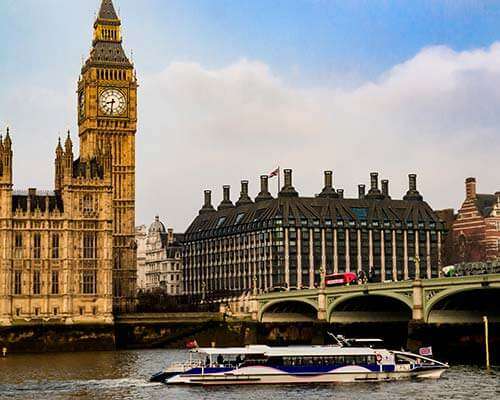
6 Country Europe Tour Package 12D/11N @ Rs 118,650
Best prices guaranteed. EMI option available.

See more at TRAVELTRIANGLE.COM
2. Keep important documents
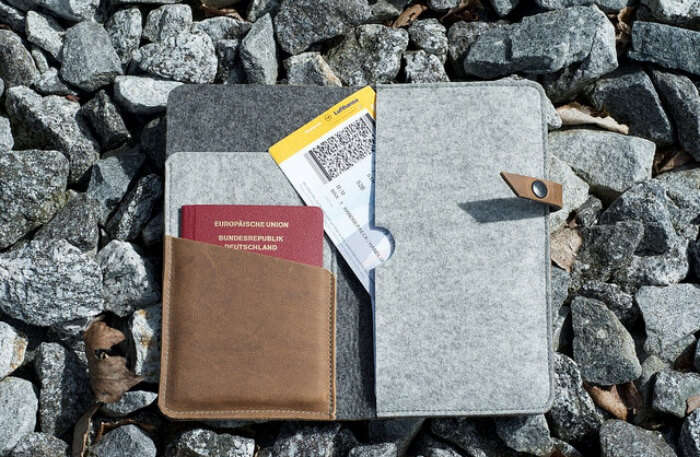
Before travelling to Portugal make sure that your passport is up to date and you might need at least six months if you are visiting from any part out of EU. Also by Portuguese law, you always have to carry a photo ID like driver’s license with you while on your trip to Portugal. If you are a resident of EU then you are required to bring your European Health Insurance Card.
Suggested Read: A 2022 Guide To Help You Plan Your Portugal Honeymoon
3. Be cautious at the beach

Towns in Portugal like Ericeira, Peniche and Nazare re famous surf destinations and that is not for nothing. The beaches in these locations are popular for producing gigantic waves and some of them could be detrimentally large so much that they can even knock adults over. So while on these beaches practice precaution and keep an eye on your kids and not let them go very near the water edge.
Suggested Read: Azores Islands: A Handy Guide To This Nature’s Gorgeous Marvel In Portugal
4. Travel light to Lisbon
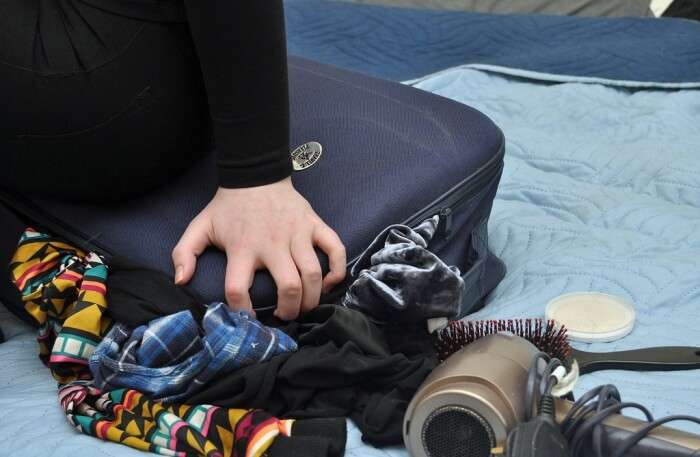
While travelling to the beautiful capital city of Lisbon, Portugal travel tips to remember would be to wear comfy footwear. Now, this might seem a bit absurd but especially if you are visiting the beautiful hilly city of Lisbon, the streets are cobblestone lined which might create an unstable footing and also makes the roads quite slippery. Also you need to carry on most of your outings on foot so be sure the most comfortable pair your shoes.
Another pro tip for travelling to a major destination like Lisbon, pack light. Carrying around a cumbersome luggage with you can be quite tiring. You can find pretty much anything you need in Lisbon, so the good idea is to carry only a travel backpack with the bare essentials.
Suggested Read: 10 Gorgeous Portuguese Islands That One Should Visit In 2022
5. Vegetarians – beware of the soups

Vegetarian options in Portugal restaurants are actually quite limited. You have to be prepared to eat a lot of salads. A very famous soup that you’ll find in many restaurant menu is ’Coldo Verde’ a very famous, tasty and traditional dish in the country. Although the soup is considered vegetarian and the waiters will also tell you the same but mostly there are a few chunks of sausage in the soup.
Suggested Read: Lisbon Nightlife: 10 Best Places To Enjoy Portugal Nights To The Fullest
6. Use sun protection

If you are visiting Portugal, you are definitely going to visit the beaches. Whether you are strolling around the sand or laying on the beach or simply wandering around the cities, don’t forget to use a sun block, especially between 12 P.M to 3 P.M. This is the hottest time of the day and you need to protect yourself from the heated rays of the sun.
7. Brush up your Portuguese
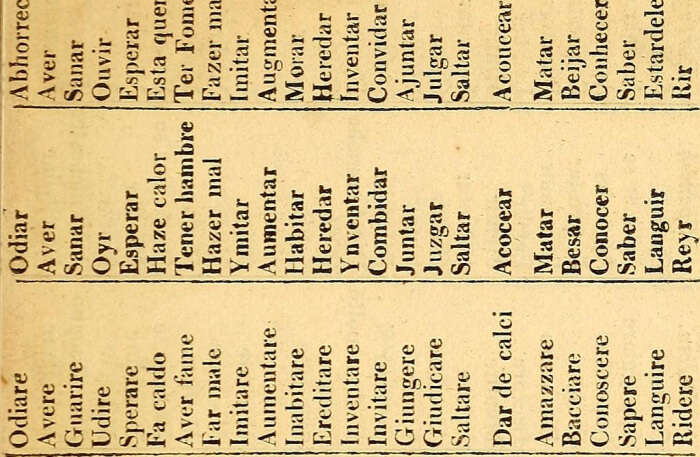
Although English is widely used in many regions of Portugal including Lisbon, Algarve and Porto, but it is not possible that every person that you come across in Portugal is versed in English and as you go outside from these major zones, you’ll fewer people speaking English. So, it is recommended that before you go travelling around Portugal, brush up on your Portuguese speaking skills.
Suggested Read: 5 Best Villas In Portugal That Will Add Stars To Your Holiday Experience
8. Check travel time duration between locations

If you are planning to visit more than one location it is necessary to check the travel time and distance between the locations that you visit. It doesn’t make sense to spend your entire holiday rushing between destinations due to improper knowledge of travel itinerary.
9. Portugal Money

Money matters in Portugal and it is a great destination for budget travelling. There are ATMs in all the international airports in Portugal that that you can directly withdraw euros from. Credit cards are accepted in majority part of the country but the smaller outlets prefer taking cash only. Also keep note of the fact that every purchase that you make from your debit card will be charged, so it is necessary that you keep a tab on your expenses.
Suggested Read: 11 Best Places To Visit In Portugal, The Hidden Gem Of Europe

Although Portugal is one of the safest place around the globe, but it doesn’t harm to take some precautions and know where to ask for help. If you are need of any emergency medical service or contact the police, dial 211. It is Portugal’s equivalent of 911 and this number is also toll free and does not incur any charges.
11. Make use of your G.P.S

Portugal is hands down a beautiful location to explore. But also you need to be prepared for getting lost in the midst of nowhere, especially people travelling from abroad countries, who are not used to driving on European roads and can easily be confused by the road signs and signals. G.P.S comes in handy in such situations as you can weave out of nowhere and find the road to your destination again.
Suggested Read: 14 Terrific Things To Do In Portugal To Soak In The Rich Portuguese Flavor
12. Choose transportation wisely

If you are on budget travelling, you have to make wise decisions while choosing the mode of transport for your travelling. While car rentals and other such transportation modes can be quite costly, you can opt for travelling via the rail routes that are relatively cheaper and save a lot of your money.
Suggested Read: 17 Spots For Snorkeling In Europe Every Underwater Enthusiast Must Visit In 2022
13. Dine like the locals

Portuguese cuisine is generally of very supreme quality and high value so you can without any doubt stick to and anything that is grown or made locally. Also the fish and seafood in Portugal are fresh and very fine. Not to mention the equally excellent local wine. So while in Portugal you can rely on the local Portuguese food and drinks to enjoy a good meal.
14. Plan at the best time
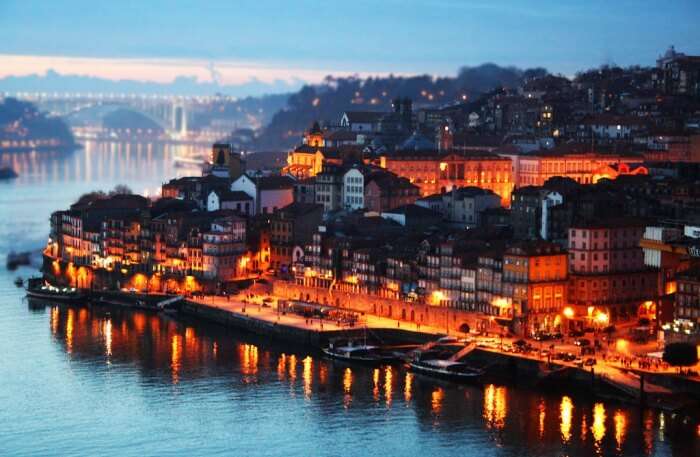
Although you can visit Portugal all throughout the year as per your preference but if you want to enjoy a lot of outdoor fun and hanging around the beaches then you should avoid visiting Portugal during the winter months. The best time to visit Portugal would be in the summer months between June to September when weather is warm and the ocean temperature is also relatively warm, so that you can enjoy your visit to Portugal to the fullest.
Further Read: 31 Festivals In Europe That Will Up The Fun Factor Of Your Euro Tour In 2022
Travelling to Portugal can turn out to be a very exciting and worthwhile experience. You can relax in the scenic beaches and roam around in the major cities exploring the beauty that the country is. So, make sure you take a note of these tips to plan a perfect Europe trip with TravelTriangle with your loved ones.
Disclaimer: TravelTriangle claims no credit for images featured on our blog site unless otherwise noted. All visual content is copyrighted to its respectful owners. We try to link back to original sources whenever possible. If you own the rights to any of the images, and do not wish them to appear on TravelTriangle, please contact us and they will be promptly removed. We believe in providing proper attribution to the original author, artist or photographer.
Please Note: Any information published by TravelTriangle in any form of content is not intended to be a substitute for any kind of medical advice, and one must not take any action before consulting a professional medical expert of their own choice.
Frequently Asked Questions About Travel Tips For Portugal
Which is the best time to visit Portugal?
The best time to visit Portugal is between March to June and September to November. During these times, you can enjoy warm weather, fewer crowds and great deals on flights and hotels.
Which are the best places to visit in Portugal?
Some of the popular places to visit in Portugal for an amazing vacation are: 1. Jeronimos Monastery 2. The Lisbon Oceanarium 3. News Museum 4. Porto Bridge 5. Cais da Ribeira
What should I know before traveling to Portugal?
A few useful things that you should know before traveling to Portugal are: 1. Don’t assume starters to be free 2. Prefer local food as they would be fresh, healthier and more inexpensive. 3. Prefer traveling during the shoulder season as you can get better deals on hotels and flights. 4. Not all vegetarian soups in Portugal are actually vegetarian and you can find small chunks of sausages in it.
Should you tip in Portugal?
You are under no obligation to tip in Portugal and is a matter of your choice. If you wish to tip the attending staff for the restaurant for their excellent service, a tip amount of 10% of the total bill is what would be expected as a tip.
Which are the places to avoid in Portugal?
Places such as Libson are where you can encounter drug dealers, and it’s advisable that you avoid any conversation or eye contact with them and if possible avoid visiting this place alone at night.
Is traveling in Portugal safe for solo female travelers?
Portugal is considered the safest place for solo travelers, and if you are planning to travel all alone, there you can be assured that you have nothing to worry as the crime rates in Portugal is petty low.
Looking To Book An International Holiday?
Book memorable holidays on TravelTriangle with 650+ verified travel agents for 65+ domestic and international destinations.

Trip to Sri Lanka at Rs 13,500/-
Plan Your Vacation Today!

Trip to Singapore at Rs 20,499/-
Get Quotes From Local Experts

Mauritius Holiday Starting at Rs 65,000/-
Talk to Our Experts Today

Maldives Honeymoon Trip at Rs 39,800/-
Pay with easy EMI Option

Europe Trip at Rs 89,999/-
All Inclusive Deals

Vacation in Dubai at Rs 27,499/-

Hong Kong Holiday at Rs 24,999/-
Money Safe Guarantee

Thailand Holiday at Rs 7,999/-
Flights Excluded
Recent Posts

10 Voyages les plus populaires en Europe pour planifier l’évasion ultime de 2024

Unfold The Fascinating Facts About Louvre Museum

Chase romance at the Tunnel of Love in Ukraine
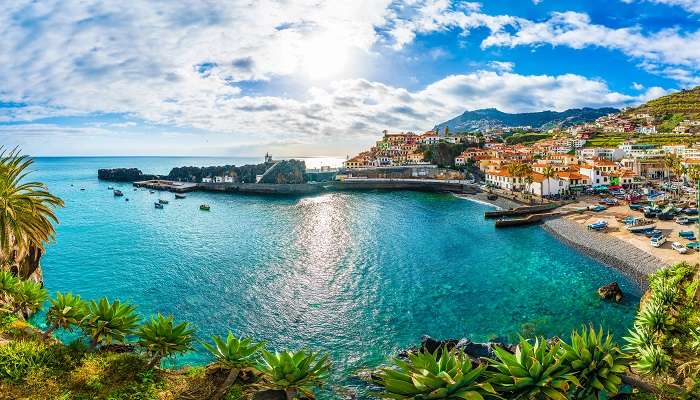
Explore 10 Hidden Gems In Portugal For An Offbeat Experience

11 Luxurious Resorts In Switzerland For A Laid-Back Excursion
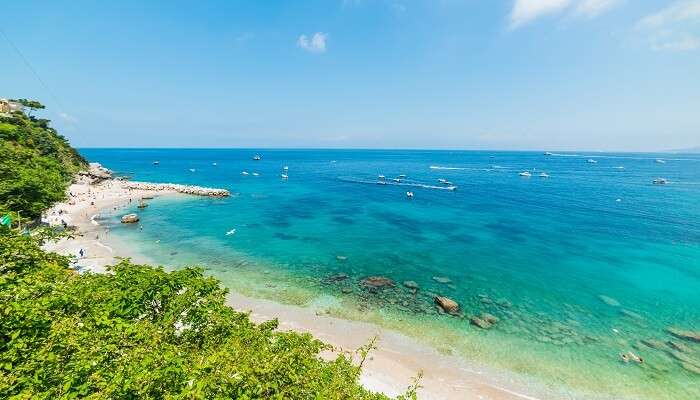
10 Plages près de Naples où vous adorerez sortir votre crème solaire en 2024
Trending Blogs

20 Mysterious Places In India To Visit In 2023 More Bizarre Than The Bermuda Triangle

10 Scariest Roads In India That Are A Driver’s Nightmare

101 Places To Visit In India Before You Turn 30 in 2024

35 Exotic Places To Visit In December In India 2024 To Enjoy A Surreal Vacation

60 Best Honeymoon Destinations In India In 2024

95 Best Honeymoon Destinations In The World In 2023 For A Romantic Escape!
Best Places To Visit In India By Month
Best places to visit outside india by month.
- TravelTriangle
- International
- Europe » Portugal »
- Tour Packages
- Honeymoon Packages
- Family Packages
- Budget Tour Packages
- Luxury Tour Packages
- Adventure Tour Packages
- Group Tour Packages
- Maldives Tour Packages
- Bali Tour Packages
- Dubai Tour Packages
- Singapore Tour Packages
- Thailand Tour Packages
- Europe Tour Packages
- Sri Lanka Tour Packages
- Tour Packages From Delhi
- Tour Packages From Mumbai
- Tour Packages From Bangalore
- Tour Packages From Chennai
- Tour Packages From Kolkata
- Tour Packages From Hyderabad
- Tour Packages From Ahmedabad
- Thailand Tourism
- Bali Tourism
- Singapore Tourism
- Maldives Tourism
- Mauritius Tourism
- Dubai Tourism
- Europe Tourism
- Hotels in Thailand
- Hotels in Maldives
- Hotels in Mauritius
- Hotels in Bali
- Hotels in Dubai
- Hotels in Singapore
- Hotels in Sri Lanka
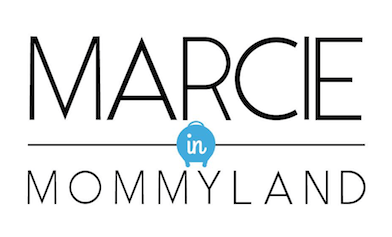
13 Perfect Portugal Travel Tips for First-Timers
Posted on Last updated: January 28, 2024
Home » Destinations » Europe » Portugal » 13 Perfect Portugal Travel Tips for First-Timers
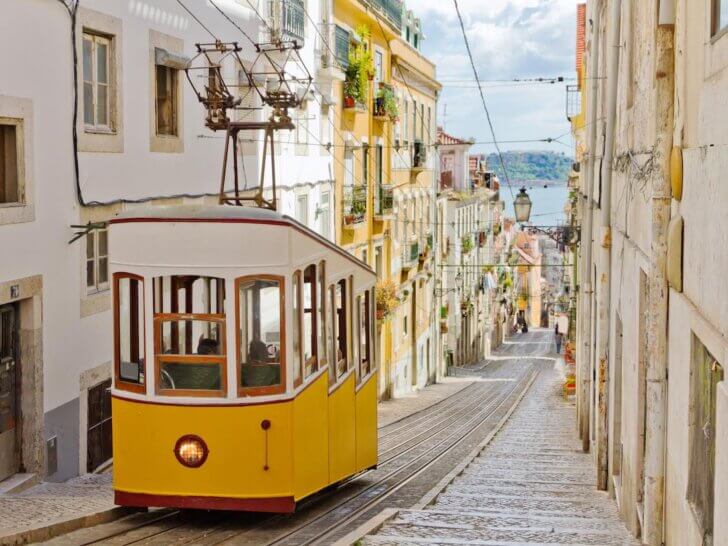
Sharing is caring!
Are you planning a trip to Portugal for the first time and don’t know what to expect? Keep scrolling to check out my top Portugal travel tips for tourists!
This list of portugal travel tips was written by family travel expert marcie cheung and contains affiliate links which means if you purchase something from one of my affiliate links, i may earn a small commission that goes back into maintaining this blog..
Visiting Portugal on your next European vacation above the alternatives could be the best decision you make this summer.
If you compare it to the huge popularity of Spain and Italy, Portugal almost seems like a hidden gem. Like other places on the Iberian peninsula and southern Europe, it also offers a fascinating and storied history, equally beautiful beaches, and plenty of vibrant cities.
Except Portugal is much cheaper with fewer crowds!
And with these essential Portugal travel tips, you’ll feel much more confident about planning a super fun Portugal trip that your whole family will enjoy.
You’ll avoid the common mistakes that others make when traveling in Portugal and will know the best cities to visit, how to get around, what to order at restaurants, and much more.
Dive into this travel guide to Portugal to learn everything you need to know.
Don’t have time to read a bunch of Portugal blog posts and reviews? Here are some of our top picks for visiting Portugal with kids.
Popular Portugal Tours/Activities
- Hop-On Hop-Off Bus Tour (this is an easy way to sightsee around Lisbon)
- Day Trip to Pena Palace, Sintra, Cabo da Roca, & Cascais (includes skip-the-line passes)
- Lisbon Card (great way to save money if you plan on doing multiple attractions)
- Lisbon Food Tour (a fun way to try Portuguese cuisine)
- Flytographer photo shoot (they are easy to book are really affordable)
Kid-Friendly Portugal Hotels
- Radisson Blu Hotel (they have family rooms that sleep up to 6 people)
- Blue Liberdade Hotel (it’s a great location plus they have family suites)
- PortoBay Marquês (they have family rooms plus a pool)
- Casas do Porto – Ribeira Apartments (in a great location and they have family rooms)
- Catalonia Porto (in a great location and it has bunk beds)
Perfect Portugal Travel Tips
Planning your portugal trip.
Before diving into specific travel tips for Portugal, you need to have an idea of which destinations you want to visit.
Let’s start with the cities. Lisbon is Portugal’s capital city and a great choice for a city break if it’s your first time in Portugal. There are tons of things to do in Lisbon for all types of travelers. You’ll want at least 3 days in Lisbon to see all the top sights.
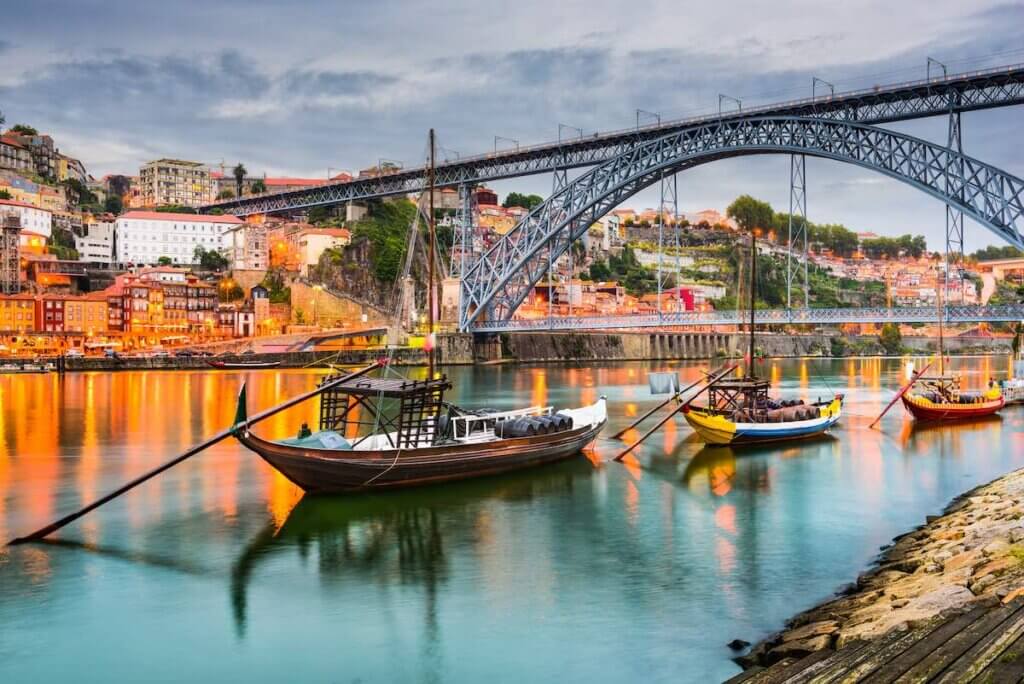
Porto is the second most popular city that visitors love and is similar to Lisbon in that they’re both colorful port cities.
If you’re an ‘off-the-beaten-path’ traveler then consider Coimbra , a cool university town. Braga is one of the oldest cities in Portugal so there are tons of historic buildings.
Like Spain’s Costa del Sol and Costa del Brava , Portugal also has a beach resort region and that’s The Algarve . Whitewashed villas, luxury high-rise resorts, and golf clubs litter this idyllic area between Lagos and Faro .
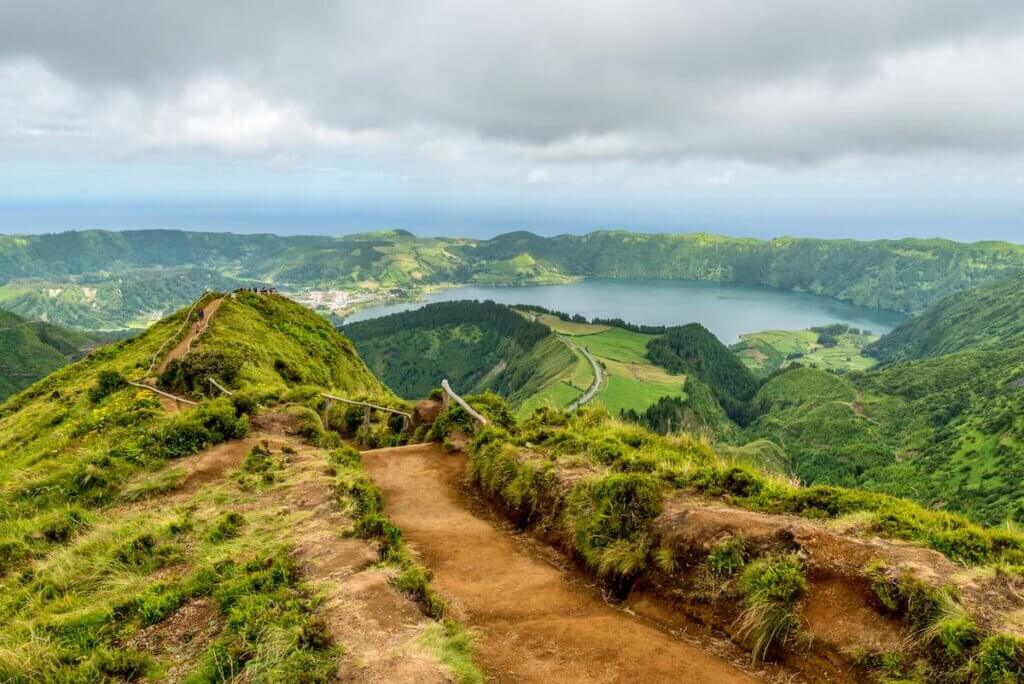
And third, Portugal has two island archipelagos: Madeira and the Azores . Both are in the Atlantic Ocean miles from the African coast and have lush green and mountainous landscapes. Whilst Madeira is more built up with lots of amenities for tourists, the Azores is more remote.
How Many Days in Portugal?
Once you know where you want to visit in Portugal, you’ll need traveling to Portugal tips that will help you figure out how many days to spend there.
For city breaks in either Lisbon or Porto , plan a minimum of three days in Portugal. You can always plan day trips to places like Sintra or Cascais if you have extra days.
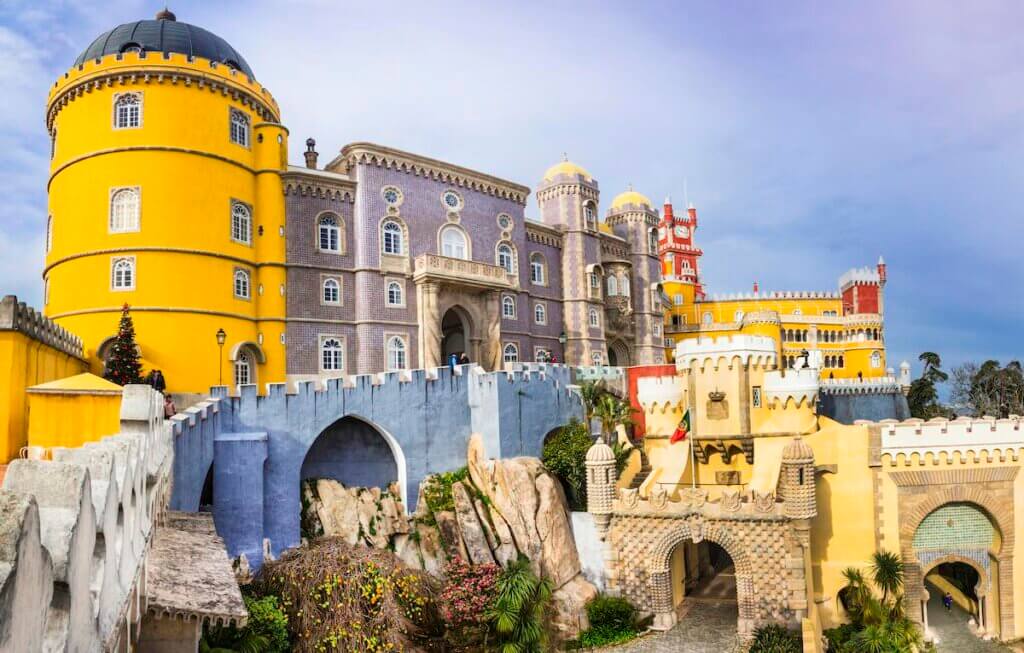
If you are visiting Portugal for a week, you could spend it soaking up some rays in the Algarve . Or, you could enjoy a more active vacation exploring the natural landscapes of either Madeira or the Azores . City lovers could easily spend one week exploring both Lisbon and Porto .
Want to spend two weeks or more in Portugal? You could do it all! Rent a car in Porto and drive south or hop on a train, hitting up Lisbon and Faro in the south and stopping at some smaller cities along the way.
It takes two to three hours to fly from Lisbon to either Madeira or the Azores so you can easily plan a side trip to the Portuguese islands.
Book a Family Photo Shoot
Whenever we travel, we almost always book a family photo shoot with Flytographer. They are super easy, affordable, AND guarantee that I’ll be in some photos. You can get $25 off if you book through this link or use the code HAWAIITRAVEL.
Public Transportation in Portugal
Figuring out how to travel in Portugal might be easier than you think as the country has lots of public transport options.
Regarding tips for traveling in Portugal between major cities like Lisbon , Porto , Coimbra , Faro , and Lagos , use the train. It’s old but cheap and you can book tickets through the official passenger train company, Comboios de Portugal .
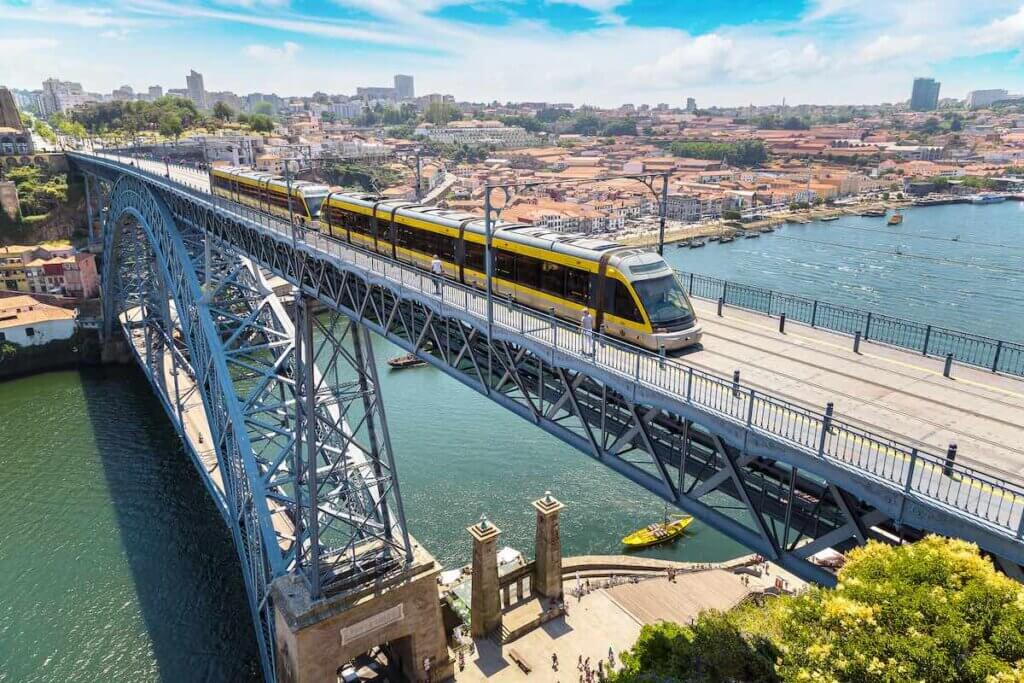
Portugal’s bus network connects everywhere else. Check out Rede Nacional de Expressos , the country’s national bus service, for tickets and timetables. FlixBus is another option for cheap bus travel around Europe.
Local city buses in Portugal can be quite old and confusing for tourists to use. However, most smaller cities and towns in Portugal are very walkable. Bigger cities like Lisbon and Porto have tram and metro networks.
Taxis, Ubers, and Car Rentals in Portugal
If you’re visiting Madeira or the Azores , public transport is scarce. It’s probably better if you rent a car in these two places if you’re planning an intrepid and jam-packed trip.

Uber is available in these places around Portugal: Lisbon , Porto , Braga , and The Algarve .
Taxis are quite cheap everywhere in Portugal, including Lisbon . Your taxi driver might not speak English and there are always surcharges for evening, public holiday, and weekend rides.
Money in Portugal
Portugal uses the Euro currency and, unlike the rest of Western Europe, cash is still king. Always carry a generous (but not unsafe) amount of cash on you to pay for small items and taxis and to leave a tip at restaurants.

Hotels, restaurants, and larger stores will definitely take credit cards so you should still bring a travel-friendly credit card. Be aware that many European countries don’t accept American Express so have a Mastercard or Visa as a backup.
You can exchange money before your trip (at your bank) or you can do it when you arrive in Portugal.
Dining in Portugal Tips
Portugal has 37 Michelin-starred restaurants, so you can eat really well in this country. If there are any restaurants you really want to try in one of the bigger cities, make reservations. Lisbon, in particular, can be very busy on weekends.
I highly recommend trying local food in Portugal.
You cannot visit Portugal without trying a pastel de nata , an egg custard pastry with cinnamon and vanilla. Grilled sardines and cod are also delicacies here. In fact, Bacalhau (dried or salted cod) is Portugal’s national dish.
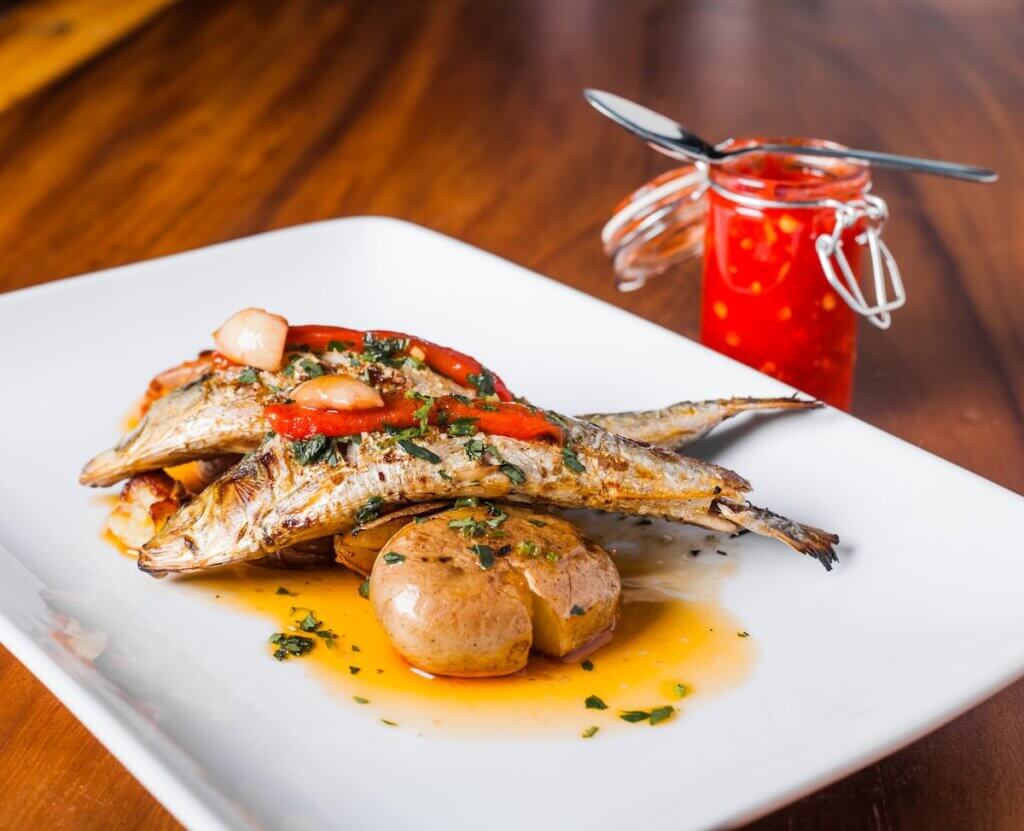
Look out for restaurants called Tascas as these are generally cheaper, more casual restaurants serving hearty meals and local wine in jugs.
Portugal is known for its port wine as well as Vinho Verde wine, so watch out for those on the menus.
Essential Lisbon Travel Tips
Some of the best insider Lisbon tips include buying a Lisboa card to save money on attractions and public transport. Visit as many panoramic viewpoints as you can and find a bar that plays Portuguese Fado music.
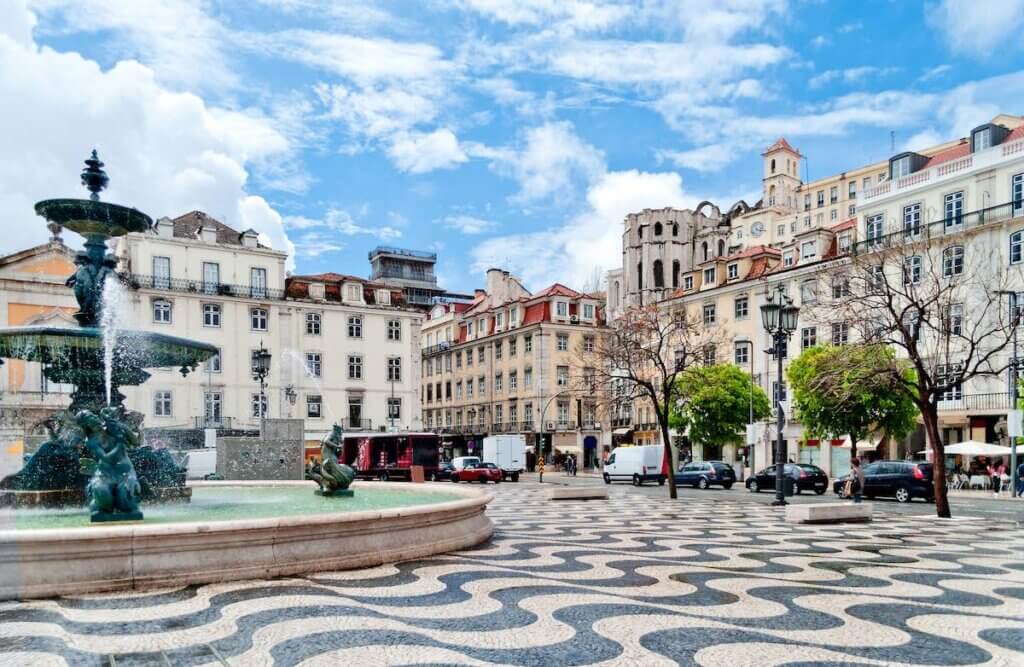
Another one of the best tips for visiting Lisbon is to wear comfortable shoes. It’s a city built on seven hills as well as cobblestone, so you don’t want to pack anything with a heel.
Essential Sintra Travel Tips
Sintra is a fantastic day trip from Lisbon as it’s only 20 miles/30 km away. Book your ticket to the Sintra castles in advance as you might arrive to find that the next timeslot isn’t for a few hours.
Take Tuk-Tuks to avoid climbing up the monumentally steep hills.
Essential Porto Travel Tips
As the birthplace of Port, you cannot visit Porto without sampling a few glasses. Take the Gaia Cable Car to see beautiful vistas across the city, or climb the Luís I Bridge.
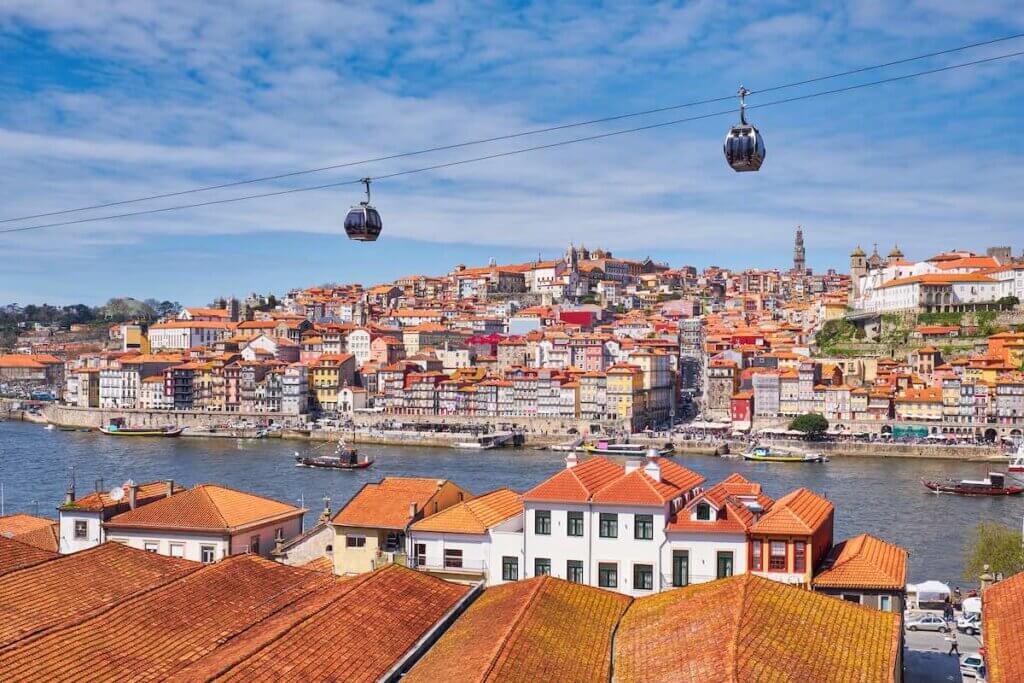
Many people like to visit the Livraria Lello Bookstore because of its connections to the Harry Potter author and it is wildly popular. You’ll need to pay an entrance fee and probably wait in line.
Essential Madeira Travel Tips
Madeira is one of the most challenging places in Europe for pilots to fly into so be prepared for a rocky landing. Base yourself in Funchal or Monte to be close to all the amenities you’ll need.
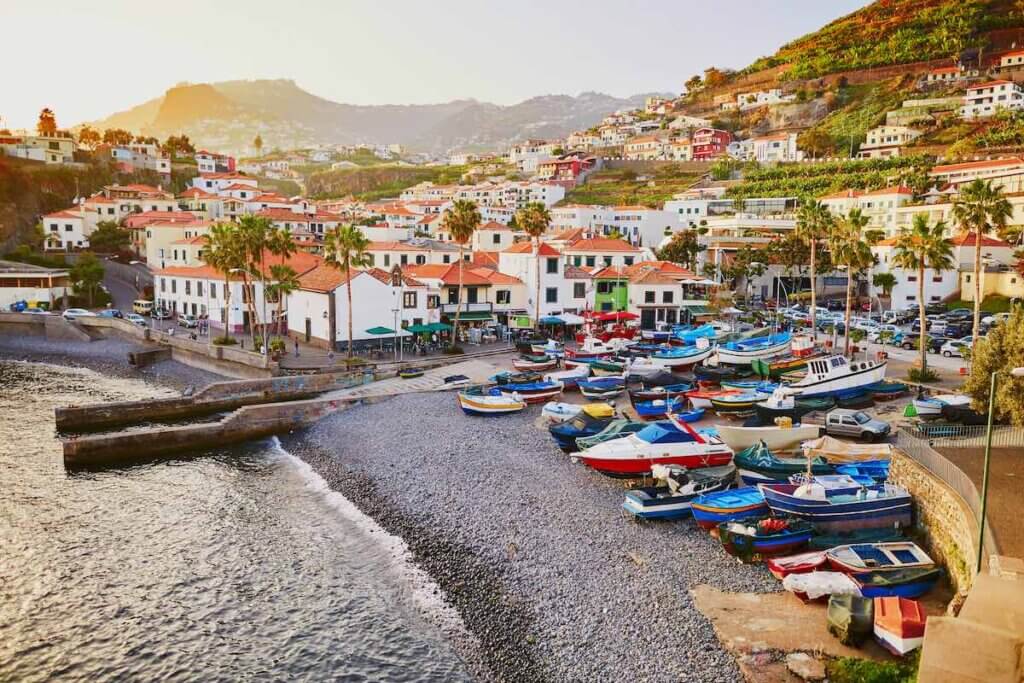
If you’re not planning on renting a car here, read the bus timetables carefully. There is only one bus a day on some routes.
Essential Azores Travel Tips
Visiting the Azores isn’t a good idea if you are a social or party person who likes to meet new people when they travel.
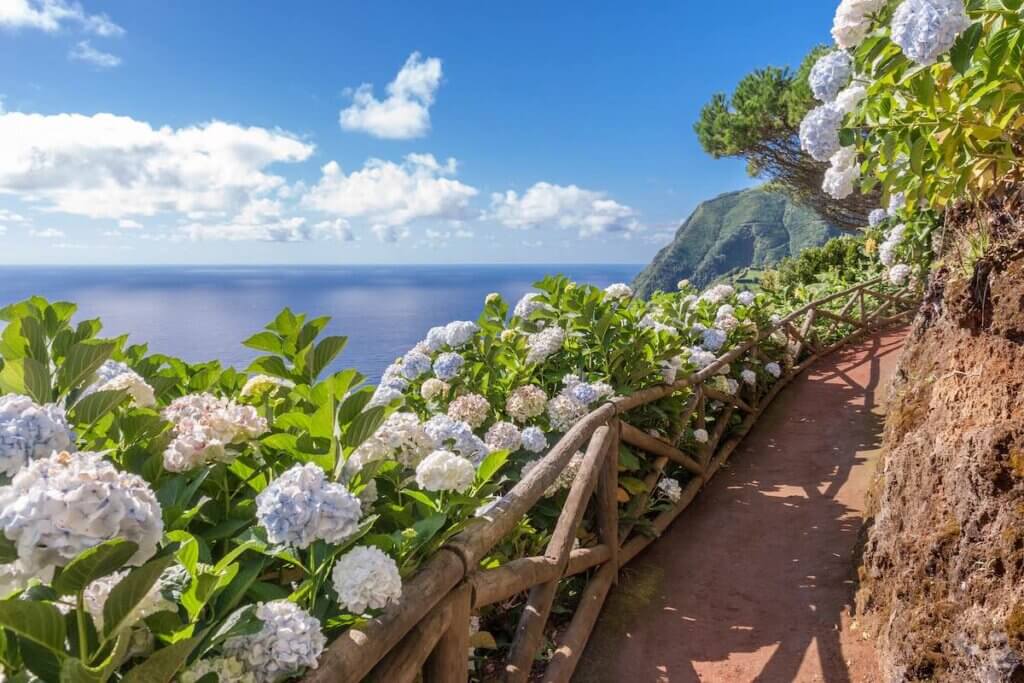
Due to the lack of amenities and infrastructure, the Azores isn’t a great place for spontaneous travel, so book everything in advance. The weather can also change on a dime here so even if the weather looks sunny, pack a raincoat.
Get a Travel Adapter
Portugal uses the type F electrical plug which has two rounded prongs and two earth clips. The vast majority of their outlets also fit type C and L plugs too. These three plugs are very standard in many European countries.
Electric sockets in Portugal have 230 volts whereas the US, if that’s where you’re traveling from, only has 110 volts. Buy a travel adapter with a built-in voltage converter to protect your electrical gear when you travel.
Safety and Awareness in Portugal
As of 2022, Portugal is in 6th place out of 163 on the Global Peace Index. It’s an incredibly safe country and there are few violent and dangerous crimes, particularly when compared to somewhere like the US.
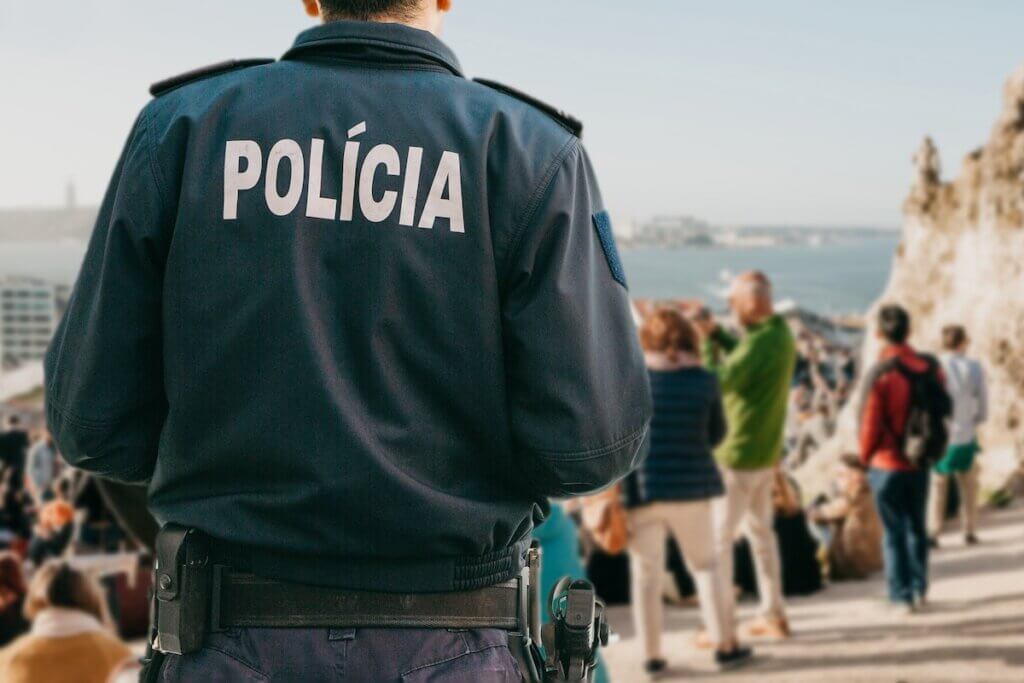
However, you should still remain vigilant to petty crime and travel scams when traveling in larger cities like Lisbon and Porto and hanging around near busy spots. Keep your money and valuables hidden away and out of reach.
Keep in mind that Portugal is a Catholic country (over 80% of the population identifies as such). Keep your chest, shoulders, and knees covered when visiting places of worship.
While the cities have a diverse and generally progressive population, this may not be the case in rural parts of Portugal. For example, if you are part of the LGBTQ+ community, you may find Lisbon more welcoming than the Azores .
Tips for Traveling to Portugal FAQs
When is the best time to visit portugal.
Portugal has a Mediterranean climate which means the summers are hot and dry and the winters are fairly mild and a little rainy.
January is the coldest month with average temperatures ranging from 50°F/10°C in the north to 54.5°F/12.5°C in the south. August is the hottest month with average temperatures ranging from 70°F/22°C in the north to 85°F/30°C in the south.
Portugal’s coast is often kept cool thanks to the breeze from the Atlantic, but heat waves in summer can mean that temperature climb as high as 94°F/36°C.
The best times to visit southern areas of Portugal like Lisbon and Faro are during the spring and fall shoulder seasons but the best time to visit Porto in the north is summer.
Easter and Holy Week in March or April are great times to visit Portugal as there are lots of parades and celebrations around the country.
Is Portugal cheap or expensive?
One of the best things to know before going to Portugal is that it’s probably less expensive than you think it is. Portugal is one of the cheapest countries in Western Europe and of all the countries using the Euro currency.
As long as you’re organized, you’ll have no problems finding cheap accommodations or activities. Food, public transport, private transport, and other expenses are generally lower than in nearby countries like Spain or France.
Can you use American dollars in Portugal?
No, you cannot use American dollars in Portugal. The official currency of Portugal is the Euro. While some places in Portugal (like hotels) may accept US dollars, be aware that they will set their own exchange rates between the Euro and the US dollar and it probably won’t be in your favor.
Do you need a visa to visit Portugal?
If you aren’t a U.S. citizen, you can check HERE to see if you need a Schengen Visa.
Should you tip at restaurants in Portugal?
Portugal doesn’t have a tipping culture and you don’t need to tip servers at restaurants, bars, cafes taxi drivers, or other hospitality workers.
However, locals are more likely to give servers in restaurants and taxi drivers in Portugal tips. You’ll also find that both locals and tourists are more likely to leave hospitality workers in Lisbon tips since it’s the capital city and the most expensive city in the country.
But you don’t have to worry about committing a tourist faux pas . You can round up your bill, leave €1 for every person at your table, or tip 10%. There’s no hard and fast rule.
Which Portuguese cities are worth visiting?
Some of the most popular Portuguese cities include Lisbon, Porto, Sintra, Faro, and Évora .
What are some popular Portuguese restaurants worth trying?
Adega da Cartuxa in Évora serves traditional Portuguese cuisine in a beautiful setting. Belcanto in Lisbon is a Michelin-starred restaurant that offers a modern take on Portuguese cuisine. Feitoria in Porto serves traditional Portuguese seafood dishes.
When is peak season in Portugal?
High season in Portugal is from June to August, when the weather is warm and sunny. This is also when most tourists visit Portugal, so expect crowds and higher prices.
If you want to avoid the crowds, consider visiting Portugal during the shoulder season (May and September) or the off-season of October to November or December to February.
Where can I hear traditional fado music?
Casa de Fado in Lisbon is a historic fado house that has been hosting performances since 1937. Páteo de Alfama in Lisbon is a small, intimate fado house located in the Alfama district. Clube de Fado in Lisbon is a popular fado house that hosts a variety of performers, including both established and up-and-coming artists.
What’s the local language in Portugal?
The locals speak Portuguese.
Is Portugal safe?
Yes, Portugal is relatively safe. It’s always smart to exercise caution and keep an eye on your belongings.
Do you need travel insurance to visit Portugal?
While it is not mandatory to have travel insurance to visit Portugal, it is highly recommended. Travel insurance can protect you in case of medical emergencies, flight cancellations, and other unforeseen events.
Best Portugal Travel Tips Wrap Up
Those are all the top Portugal travel tips that you need to plan a great vacation.
Although you might know less about Portugal than other European countries and think you need more Portugal travel advice, it’s really not that different.
And where there are differences (like money, public transportation, and destinations), this guide covers all the tips for visiting Portugal you need to have a fun and memorable trip!
Looking for more Portugal travel resources? Check out the best day trips from Lisbon , 11 Best Lisbon Hotels for Families Worth Booking , 11 Things to Do in Porto, Portugal for First-Time Visitors! , 15 Things to do in Lisbon with Toddlers , and Europe travel tips !
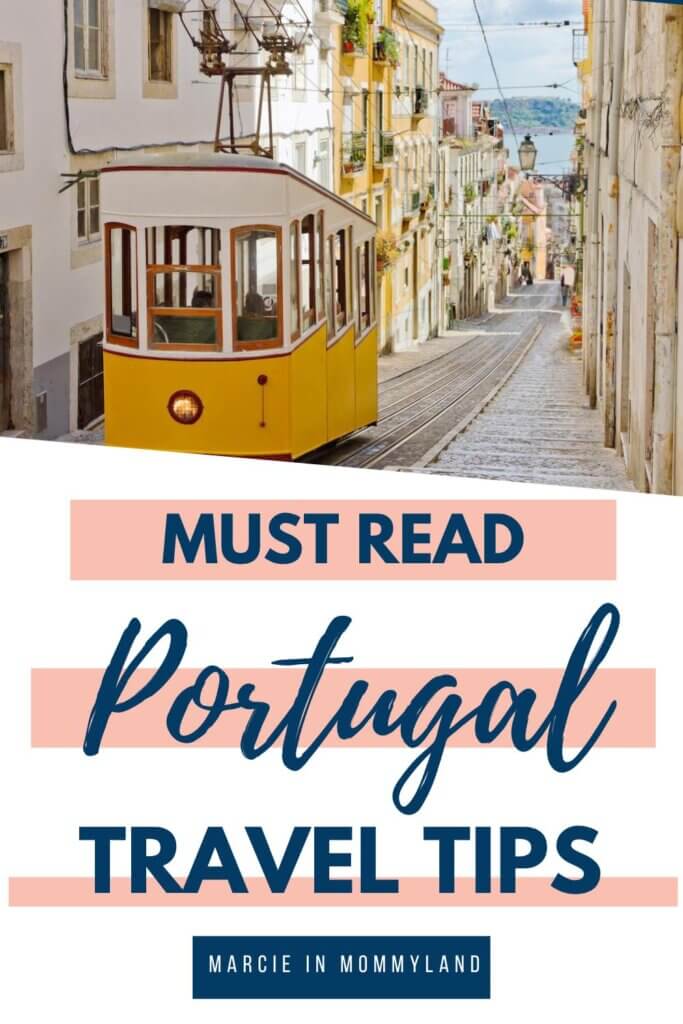
Unlock Your Free eBook
Our exclusive eBook, Top 10 Unforgettable Family Adventure Destinations , is your ticket to a world of wonder and excitement. Get your free copy today!
This site uses Akismet to reduce spam. Learn how your comment data is processed .
- Skip to primary navigation
- Skip to main content
- Skip to primary sidebar
- Skip to footer
TravelAwaits
Our mission is to serve the 50+ traveler who's ready to cross a few items off their bucket list.
5 Things I Wish I Had Known Before Visiting Portugal

- Destinations
Portugal is a very forgiving country in that the ambience of the people and culture is friendly and relaxed. People are open and willing to help, especially in hotels and shops, and there are plenty of tourist information centers in the larger cities. You will also find many people, especially in more metropolitan areas, who speak English.
The climate, although colder and rainier in the north, is basically Mediterranean, which means many days of sunshine and thus lots of opportunities to explore without sheltering under an umbrella or wearing a heavy coat. Dressing in layers is the best way to ensure that you are dressed for warm days and cooler nights.
In every city that we visited during our 5 weeks, we enjoyed the many restaurants and cafes with outdoor seating. It’s an enjoyable way to spend a couple of hours immersed in the scene around you. The Portuguese take their lunch hours seriously and do not rush through their meals. There are very few fast-food restaurants because most work environments include ample time for an afternoon break.
I have traveled extensively and there have been times that I wished that I had known certain things about where I was going ahead of time. Traveling with a little knowledge leaves one better prepared to deal with the unexpected and to plan ahead for the things to be expected. Using the internet and social media has made traveling easier, but it is always useful to hear some tips from a person who has travel experience in the place you plan to visit.
Here are five things I wish I had known about before we traveled to Portugal.

1. Car Rentals
Portugal is a country blessed with an excellent transportation system, especially within and between the larger cities. If you have specific destinations in your travel plans, the train and bus system is extensive and reasonably priced, and you may buy your tickets ahead of time online. However, there are many lovely spots in Portugal less accessible by public transport, and you may choose to rent a car. We rented a car in Lisbon, and it was relatively straightforward.
What I didn’t know ahead of time is that most rental cars have manual transmission. If you are not familiar with driving a manual car, then practicing before you go is a good idea, especially since the cities we visited use roundabouts as the method to get from one part of town to another, and sometimes you need to shift gears quickly. When you rent your car, ask for a transponder, which allows you to pay the highway tolls without stopping. Your credit card will be charged automatically. It makes getting from one place to another so much easier when you don’t have to deal with stopping in front of a gate and taking a ticket. Make sure that you get in the lanes painted green and marked “via verde.”
There is a basic car insurance in Portugal that is mandatory and will be included in the price of your rental.
Pro Tip: Make sure you take both a credit card and debit card if you plan to rent a car. You will pay more for a rental car if you pay with a debit card.

2. Getting Around In Cities
We spent time in Lisbon, Porto, Guimaraes, and Coimbra and we did a good deal of walking to various places we wanted to see, such as castles, museums, monasteries, Moorish neighborhoods, parks riverfronts, and churches.
The streets of many cities are a combination of different kinds of pavement, but many sidewalks, especially in Lisbon are made of small diamond-shaped tiles. They are often uneven and worn smooth, thus you should wear shoes that have good tread — the going can be slippery and a bit hazardous, especially after rain. If you need to get from one end of a city to another or want a guided tour, there are many “hop-on-hop-off” type buses, especially in Lisbon and Porto.
In the smaller towns such as Obidos, the narrow streets are lined with cobblestone, and often a few stones are loose, so be aware of where you step. Cars and taxis move very fast in cities, often even when a light has turned green for a go-ahead to walk, there are taxis coming through that ignore this. Don’t assume cars are going to stop.
It is easy to flag down a taxi, especially in Lisbon, Coimbra, and Porto because they are everywhere. The drivers signal that they are available with a green light on the roof of the cab. If you prefer, there are digital companies like Uber and Bolt as well.
3. Health And COVID
I would recommend a few things when it comes to medical issues that might arise in Portugal. First, make sure you have plenty of your necessary medications before you travel. Although there are plenty of pharmacies even in smaller towns, refilling a prescription is a bit of a hassle. I had to call my pharmacy in the states and have the pharmacist talk to the pharmacist in Portugal.
In addition to the above, I wish I had researched how the medical system in Portugal operates. My husband and I contracted COVID and had to stay for an extra 12 days in the country. I needed to see a doctor and was not sure how to go about this. I received help at a pharmacy and was able to make an appointment at a private hospital in Lisbon. Hotel managers in the larger cities may have helpful information as well. Do the research before you leave by accessing websites like this one .
Bring medical insurance and health records, especially if you have a chronic health condition. Expect to pay for services.
Pro Tip: Make certain about your own health insurance before you leave. Ask if they cover any medical expenses incurred on your trip. It’s a good idea to go to the State Department’s website for information on Portugal and medical issues.

The Portuguese love to eat and take their time when they do, so don’t expect speedy service when you dine out. In some of the more tourist-frequented parts of Lisbon, expect to be approached by waiters motioning for you to sit at the tables set out along narrow streets where cars are not allowed. Some outdoor cafes that cater to tourists have familiar foods such as pizza, hamburgers, and hot dogs, but the more traditional Portuguese menus feature dishes with fish and meat as the main part of the meal. The portions served in restaurants are large, so you may consider sharing dishes, and this way you get more variety in your meal.
If you are vegetarian or vegan, you may find it a bit challenging to enjoy a variety of foods, but almost every menu we perused during our 5-week stay had some vegetarian choices, especially in cities such as Porto, Coimbra, and Lisbon.
If you stay at an Airbnb and have a kitchen, there are small and large grocery stores and some specialty markets that carry produce, wine, fresh meat, and fish. There are plenty of pastry shops as well.

5. Airports
Portugal has three international airports: Lisbon, Faro, and Porto. My husband and I flew into Lisbon from Paris and thus did not have to go through customs again in Portugal. Lisbon’s airport is extremely busy, and it was difficult to find an airport map that named the terminals and check-in areas by airlines.
Expect long lines at the airport. I had a few quick questions that I wanted to ask at the tourist information center, but the line was extremely long. If you plan to get a taxi to your hotel from the Lisbon airport, you will find the place cabs park outside the terminal. People wait in line for taxis, which pull into designated parking spots. The taxi drivers will gesture to the next person in line.
If you plan to return to the U.S. from Lisbon, be aware that there is a passport checkpoint after a security check, and the queues are long. Also, the airport is arranged in such a manner that you are forced to go through duty-free shopping zones before security. We nearly missed our flight because there were far too few attendants checking people through.
When we left the country to return to the States, it took 90 minutes before we emerged from these areas to find our gate. I would strongly recommend arriving no less than 3 hours before your flight, perhaps even 4 if you plan to travel during the summer months. English is widely spoken in the airports, and most signs are in English as well as Portuguese, but Terminal 2 — where all passengers depart from — is a giant hangar and is confusing.
Pro Tip: Whichever airport you decide to fly into or from, I recommend studying the airport map online before you fly and plan to arrive 3 hours ahead of your flight.
For more on Portugal , check out these articles:
- 5 Reasons You’ll Fall In Love With This 300-Year-Old Vineyard Hotel In Portugal
- Our 9 Favorite Stops On A Road Trip Along Portugal’s Beautiful West Coast
- Living In Portugal, We’ve Tasted Cheeses We Never Knew Existed, Here Are Our 11 Favorites
- 10 Best Resorts in the Algarve Region

Although she enjoys cities with museums, culture, and food, her favorite adventures are found in the natural world. She has kayaked among bat rays and dolphins, encountered gray whales, hiked among bighorn sheep, and snorkeled with tropical fish. She is a volunteer naturalist at Elkhorn Slough National Estuarine Research Reserve and Anza-Borrego Desert State Park.

Portugal Travel Guide
Your ultimate portugal travel guide, with tips, and things to see and things to do in portugal. great for first-time and returning travelers..
Located on the tip of Europe, Portugal has been described from those who have been there as a dream vacation.
This Mediterranean country is known for its beautifully crafted architecture, sunny weather, great wine, and gorgeous beaches.
The locals are known to be friendly and warm.
Prices are also lower in Portugal than other European places, which makes this great for those on a budget.
There are many things to do and see here.
This Portugal travel guide will help you plan your next vacation.
Popular City Guides
Our highlight.
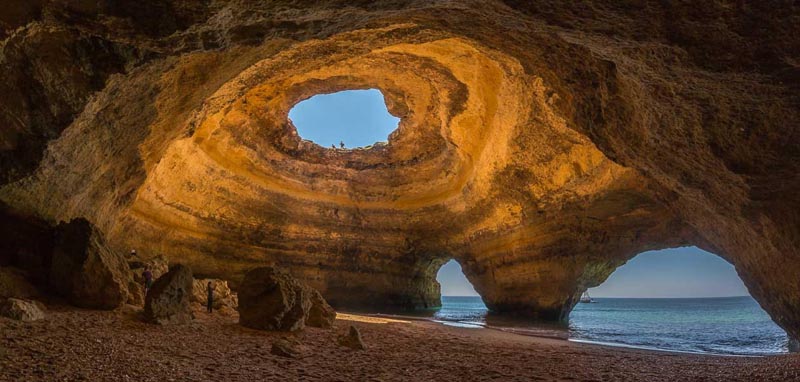
Table of contents
Table of Contents
Fast Facts about Portugal
- Power voltage is 230V at 50 Hz.
- Portugal’s currency is the euro (€) and 1 euro is equal to 1.13 USD.
- Traveling by bus is considered the best way to get around Portugal.
- You do not need a tourist visa as long as your visit is under 90 days.
- The most popular cellular networks in Portugal are Vodafone, Optimus, and TMN. You can purchase a prepaid SIM card from any of these networks.
- Portugal has a tax rate of 23% for common goods and services.
Things to See and Do in Portugal
- Go Surfing in Nazare.
- Rent a cute electric car in Sintra
- Visit the Medieval Town of Obidos
- Enjoy one of the many festivals around the country like The Santos Festival, Festa dos Tabuleiros or Carnival
- Jet off to see the Azores
- The Beautiful City of Lisbon
portugal Travel Guides
- Things to do in the Algarve – The Complete 3 Day Itinerary
- How to Spend a Layover in Lisbon, Portugal
- Top 10 Things to do in Sao Miguel, The Azores
- 16 Totally Unbiased Reasons You’ll Want to Visit Portugal
- 7 Fun Things to Do in Sintra, Portugal
- 7 Stunning Off The Beaten Track Places to Visit in Portugal
Accommodation
Budget – Portugal offers a variety of hostels with prices around €25 to €50 per night.
Mid Rang e – For mid-range hotels, expect to pay €90 to €150 per night. You may have access to a fitness center and complimentary breakfast.
High End – Upscale hotels will cost about €200 to €300 per night. These will often have high-end restaurants and lounges as well as spas.
Check out our favorite booking platforms Booking.com , Tripadvisor and Air B&B for the best deals on accommodation
Food : As locals typically eat their foods at a café and at their own pace, finding foods eaten on the go (or street food) isn’t a large part of the culture. However, there are a variety of street vendors that serve Portugal food.
Head to a festival or event to find some farturas (the Portugal version of a churro, with more of a lemon flavor) or dried octopus, which is more common in southern Portugal.
Of course, Portugal also has a variety of cafes and restaurants which serve authentic cuisine. In total, expect to pay around 30-50 euros per day on food.
The Best Ways to Get Around Portugal
Getting to portugal:.
Getting to Portugal: Lisbon Airport is the main international airport to enter Portugal and is just a 90-minute drive to the city center. Porto Airport is another alternative and is just 7 miles from the city center of Porto, but there are no direct US flights to the airport
Flights: You can check for the best flights to Portugal on Skyscanner .
Transportation:
Train: Trains are another great way to get around Portugal and offer plenty of scenic views. If in Lisbon, consider taking the tram, which goes by many tourist spots. It is advised to get the 24-hour public transport ticket, priced at “>
Buses : Buses are a cheap way to get around Portugal and usually faster than a train. Fares cost around €1.8 for a one-way trip.
Car Rental: To rent a car in Portugal, you need a valid US driver’s license that has been valid for a minimum of one year and be at least 18 years old. Prices start at around €40 per day
You can also compare prices here
Uber : Uber is available in many cities across Portugal.
Taxis : Taxis start at €3.25 and charge approximate .50 per km.
When to go To Portugal
- The two best times to visit Portugal are March through May or September through October.
- During these months, the temperatures are cooler (summer months can reach up to 104 degrees Fahrenheit) and beaches are less crowded with tourists.
- With there can be some rain, it is usually very little, and temperatures are around 60 to 70 degrees Fahrenheit.
- Hotel rates are also cheaper these times of the year.
Where to Stay in Portugal
- Brown’s Downtown Hotel : Located right in the city center of Lisbon, this three-star hotel keeps you right in the middle of everything. Just minutes from the metro station and shopping areas, the hotel has beautiful city and castle views. Chose from a variety of rooms and enjoy free Wi-Fi throughout the hotel and drinks at the bar.
- Mercure Porto Centro Hotel : Found in the Ribeira neighborhood of Porto, this is a four-star hotel that comes with its own restaurant and unique theater-themed bar. The historic Ribeira Square is just outside and offers beautiful views of the city and nearby riverside.
- Melia Braga Hotel & Spa : Experience high-quality without paying too much at this 5-star hotel and spa in Braga. This hotel comes with an indoor and outdoor pool, a restaurant, two bars, breakfast, and wireless access. During the day, walk to the famous Castel of Braga and the Garden of Santa Barbara.
Portugal Accommodations
What to pack for portugal.
- Sunscreen: The sun can be strong, especially during summer months, so bring some sunscreen to protect your skin.
- Sunglasses: Keep your eyes protected under the beautiful and sunny weather with a pair of sunglasses.
- Power adapters: As the voltage is much in Portugal than the US, a power adapter will make sure all of your electronics can be plugged in and charged.
See our packing tips: The Ultimate Packing List & Packing Tips for Europe
Portugal Travel Guide: Best Booking Resources
Whenever we travel to we make sure to start with these companies. We have tried a lot of different ones over the years and all of these have consistently proven to be the best when it comes to offering great prices.
We have used every one of these personally and continue to do so.
- Booking.com : This is our go site to when comparing prices for accommodation. It usually has the cheapest prices, especially in Europe and we love their interface. Not to mention you get free cancellation and you are guaranteed the best price.
- Trip Advisor : What we like about Trip Advisor is that we can look at all the reviews and then book our accommodation. TripAdvisor is where we go when we want to compare prices with multiple accommodation providers.
- VRBO : is the main search engine we use when we are looking for a home or apartment rental. It can sometimes be cheaper than hotels and it is the best way to stay in areas that offer a more local feel.
- Hostelworld : With one of the largest databases of hostels in the world, Hostelworld is the go-to site when you are looking for budget accommodation.
- Skyscanner : This is the first place we check for flights. It consistently comes back with the cheapest and best options. It allows us to compare a lot of airlines to get the best price.
- Rome 2 Rio : If you want to see how to get somewhere by plane, train, bus, ferry or car Rome2Rio lays it all out for you as well as related costs.I love how they show it all to you on a Google Map and it works offline.
- Get Your Guide: For all your day trip and city guide needs, we use Get Your Guide. It has the world’s largest collection of things to do with more than 30,000 activities in 7500 destinations.
- World Nomads Insurance: When traveling to Italy you should always have travel insurance. We have found the best bang for your buck is by far World Nomads.
Portugal Travel Guide: Related Articles Click Here
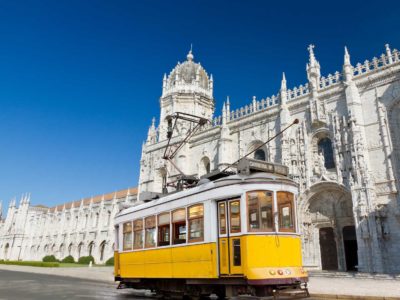
48 Hours in Lisbon, Itinerary
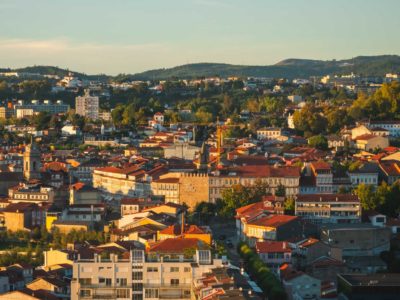
17 Best Things to Do in Guimarães, Portugal in 2024
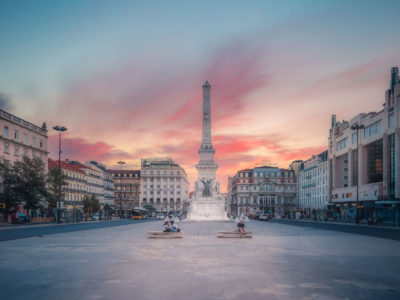
23 Best Things to Do in Lisbon, Portugal In 2024
Traveling to Portugal: 7 things to know before you go
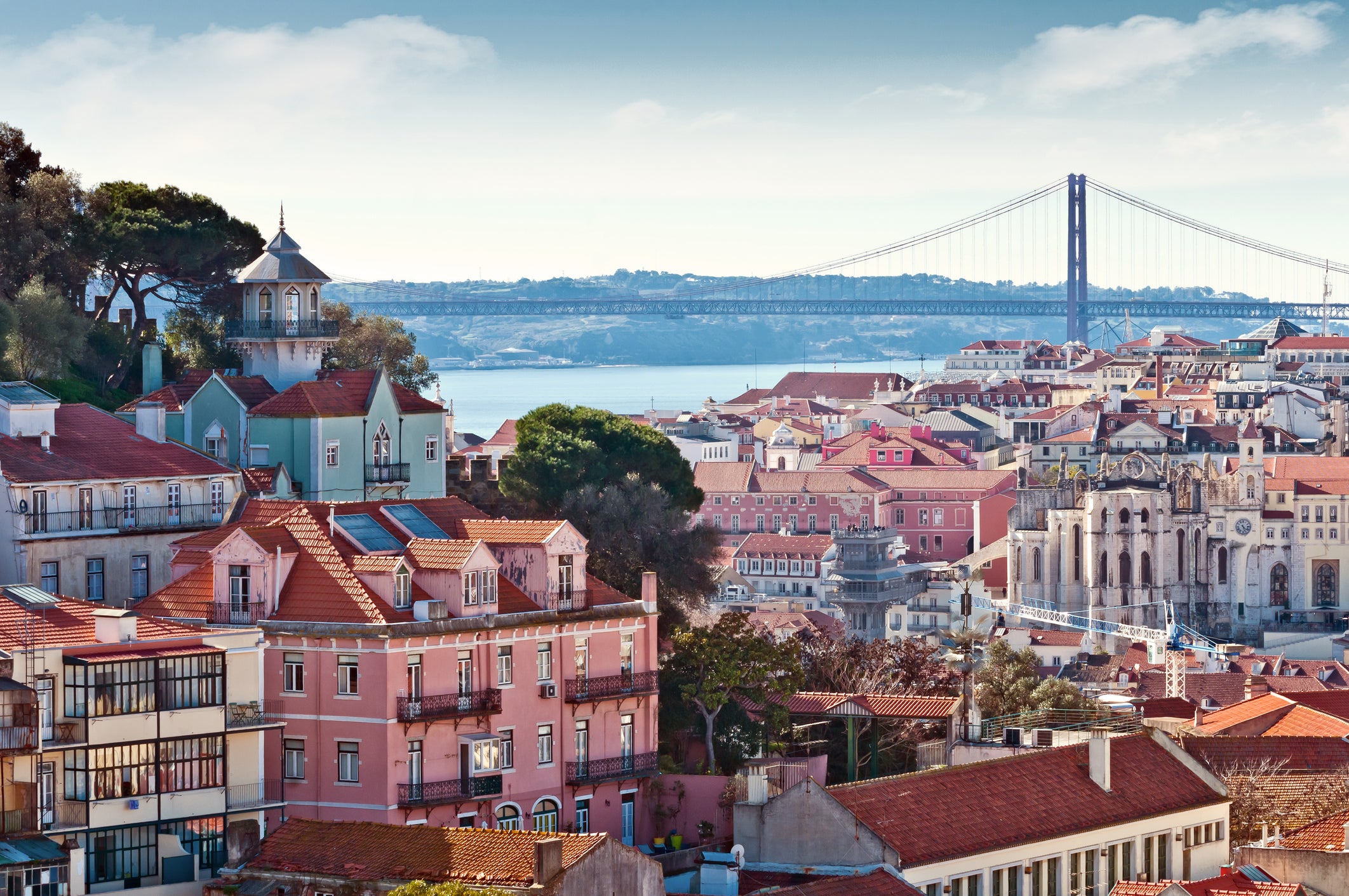
Editor's Note
Chances are you know someone who has traveled to Portugal and is raving about it. After spending two weeks exploring Portugal with my family pre-COVID, I wholeheartedly recommend the country as a great destination for kids when the time comes. But even the best places have pitfalls that come with the highlights, so here is what I encountered while visiting Portugal with kids in tow.
Related: The best credit cards for family travel
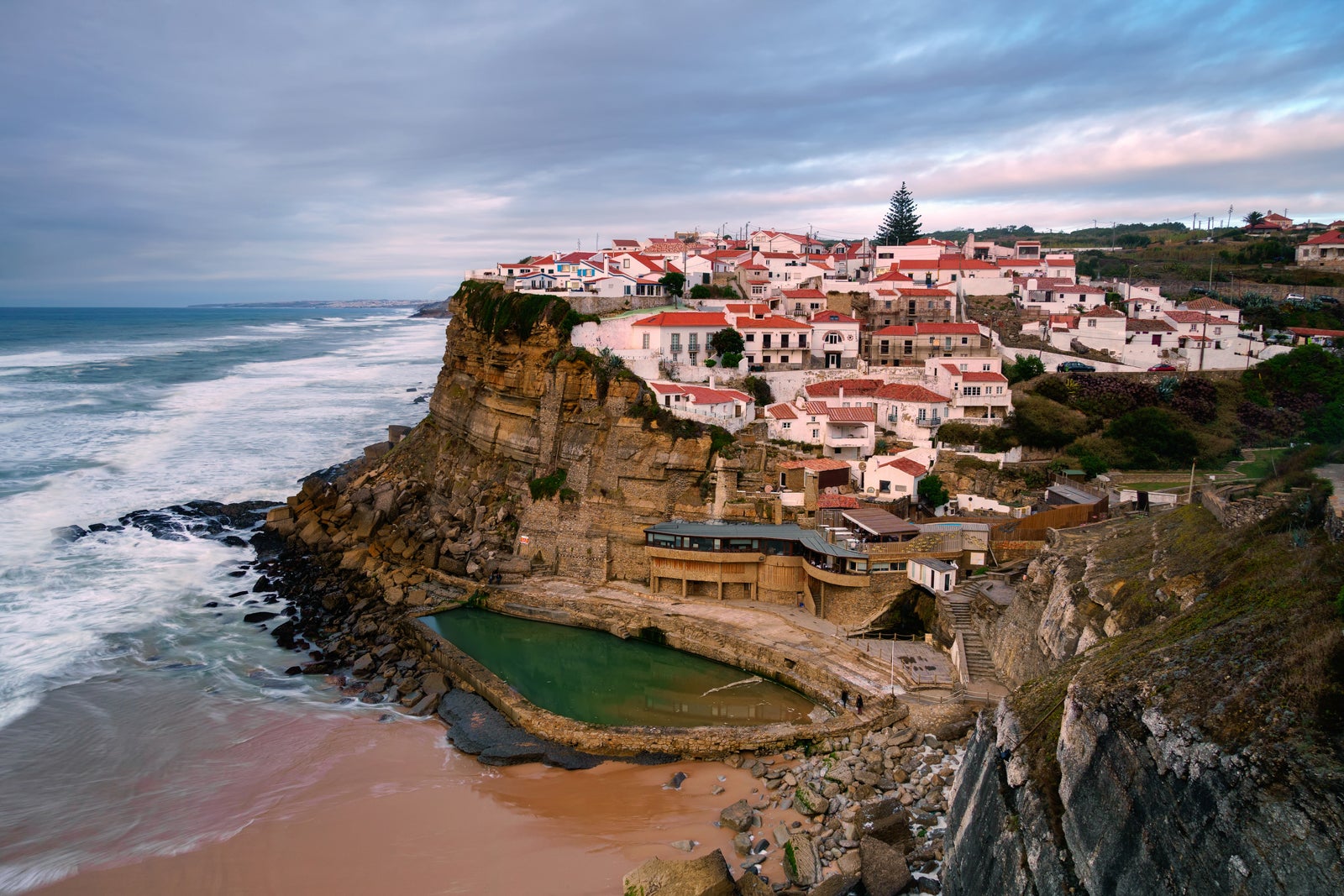
Lisbon is a no-go for strollers
There's a lot about Lisbon to love. It's clean, safe and fun to explore. However, its streets are paved with cobblestones and it is remarkably hilly. Young kids might have trouble keeping up. Consider that one of Lisbon's major neighborhoods is named "Bairro Alto," which literally means "high neighborhood."
This is from a two-hour walking tour of the city, and only records stairs, not hills:

Of course, you don't need to take a two-hour walking tour, but if you are visiting Portugal with an infant, I highly recommend a carrier over a stroller. With a toddler, you might want to limit your plans to neighborhoods that have public elevators and/or bring a stroller that is good with uneven terrain. On the upside, some of the elevators in Portugal, such as the Santa Justa Lift, are attractions in themselves.
Naturally, if an adult in your crew has limited physical abilities, some of these same terrain concerns would transfer to those situations -- so plan logistics accordingly.
We did discover that Ubers were cheap and plentiful. Most rides within the city were less than $7 for Uber X and many were under $12 for Uber Black.
Don't miss the Maritime Museum
A popular Instagram spot in the Belem District of Lisbon is the Monument of Discoveries. It's worth seeing for the view alone.
Read more: 11 best hotels for a beach holiday in Portugal

But our favorite spot was actually across the street at the Maritime Museum (Museu de Marinha). It appealed to our kids much more than other museums as it took visitors through the adventures of Vasco da Gama and other Portuguese explorers. It even had artifacts from da Gama's voyages among its extensive collection. As a traveler, I was obsessed with the historical maps and globes displayed throughout the museum.
Younger kids will especially love the Galliot Pavilion at the end of the museum. There's a huge exhibition hall that houses royal yachts and brigs, fishing vessels and Portuguese ships with lots of room to explore.
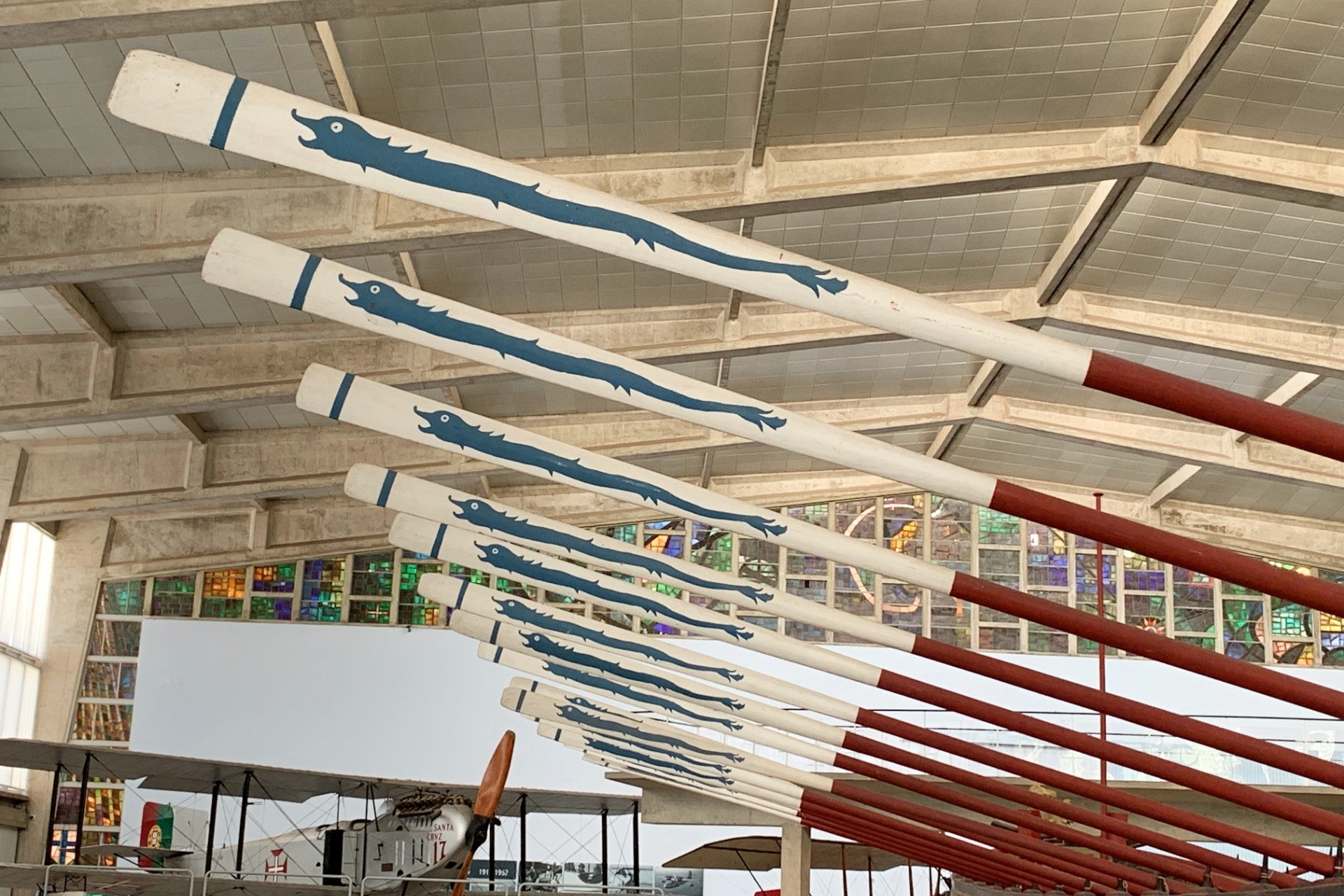
Admission to the Museu de Marinha is $6 for adults and $3 for kids 4–12. The museum is open daily, 10 am to 6 pm, in summer; 10 am to 5 pm in the winter.
Lisbon's famous trams can get crazy crowded
If you have seen photos of Lisbon, you probably know about the iconic yellow trams weaving through the city's distinctive neighborhoods. That's not what we encountered in the days before COVID-19.
Read more: 13 of the most beautiful villages in Portugal
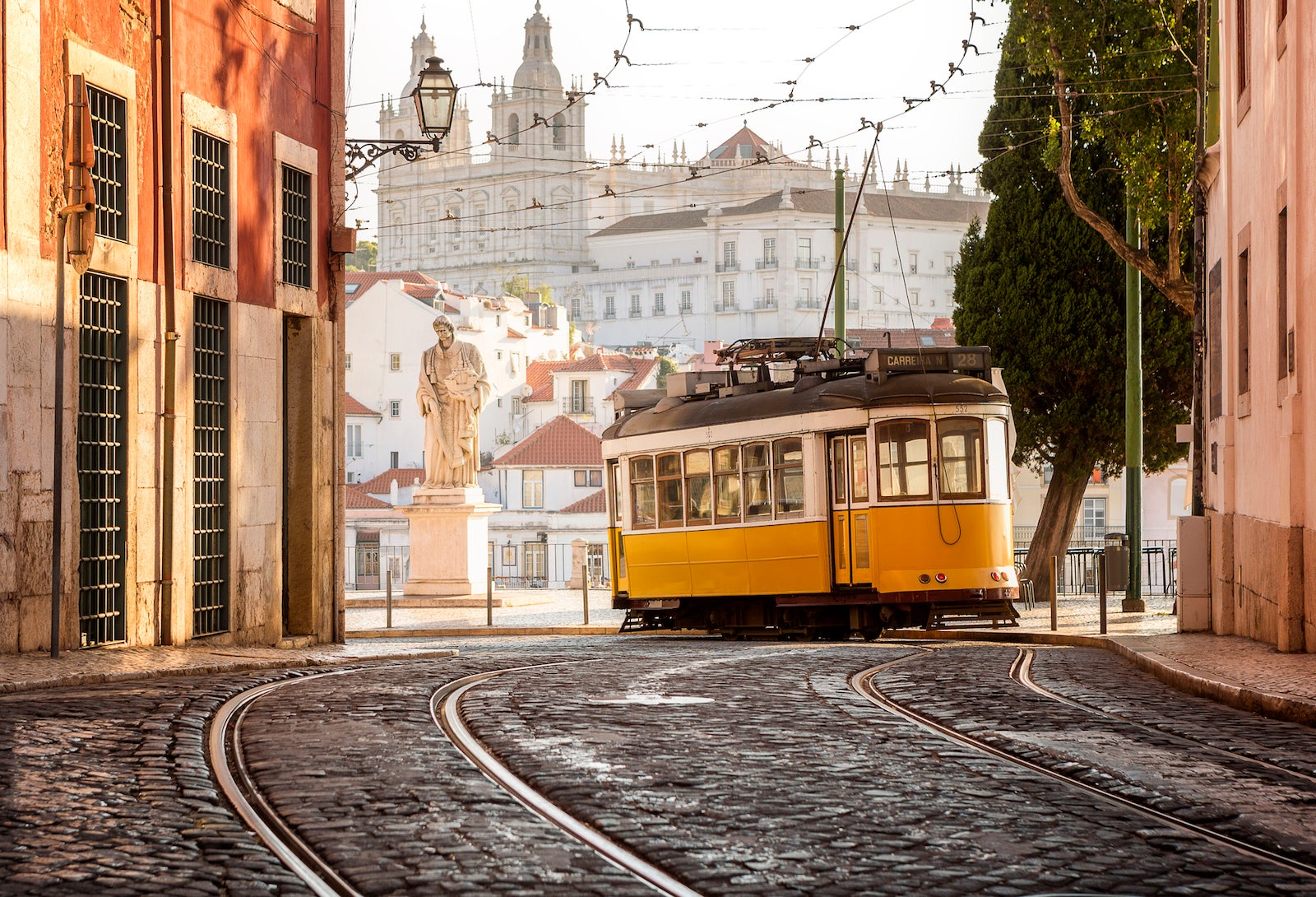
What we saw was a bit more crowded than the postcard image.

I'm not sure when the photos of empty trams are taken, but during an entire week, we never saw a tram that wasn't standing room only. If a future visit is in the cards for you and your family, consider whether or not you'll be able to comfortable social distance before jumping on.
Visit Sintra on a sunny day
Prior to visiting Portugal, everyone we asked told us that we must visit Sintra, mainly because of views like this:

This is another case where our reality was much different from our expectations. I mean, fog happens.

Our moderately cloudy day obscured the views as a misty fog bank enveloped Sintra. We couldn't see the ocean even when we drove just a few yards away. In retrospect, I should have paid more attention and realized that Sintra was a weather-dependent destination because of its location about 25 kilometers (15.5 miles) from Lisbon near the ocean.
The Algarve's water is colder than the Mediterranean
Something to keep in mind if you're an ocean swimmer: Average water temperatures in the Algarve in southern Portugal top out in the low 70s in mid-August. In late June, when we visited, the ocean was 67 degrees according to Sea Temperature , which felt too chilly for more than a toe-dip for us. Those degrees made a huge difference in our ability to swim in the ocean.
If your kids are into building sandcastles and chasing seagulls, the beaches along the Algarve are ideal -- sandy compared to the rocky ones in Mediterranean hot spots. Just keep in mind that you might have to descend a long flight of stairs to get to a spot for your beach towel. Here are some more tips for navigating the Algarve with kids along for the fun .
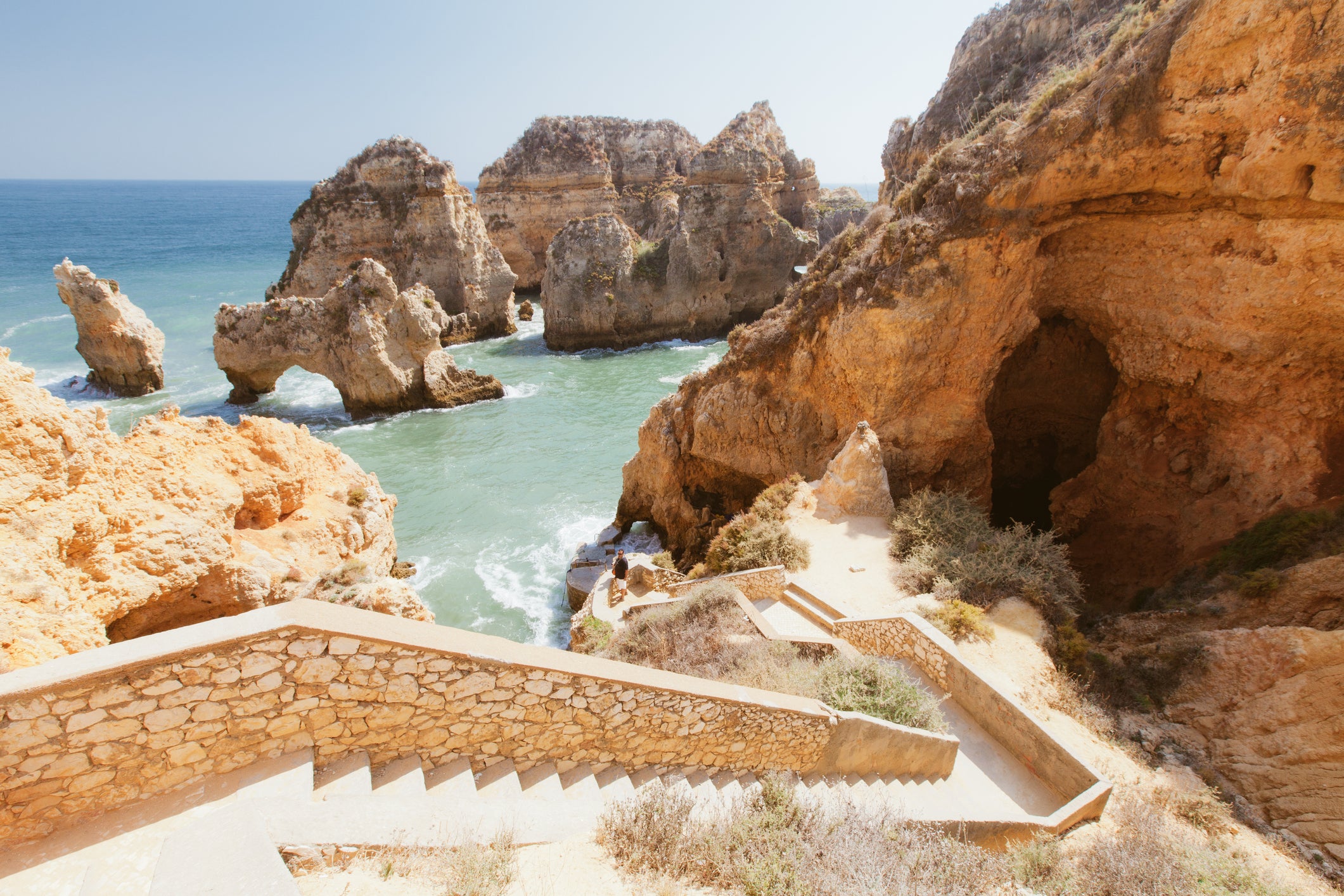
A house with a private pool is surprisingly affordable
TPG wrote about the Pine Cliffs Resort, a great hotel for families or groups of friends. Although it's definitely worth considering, so is renting a house with a private pool . We rented this one for 30% less than a room at Pine Cliffs for a week in June. With three bedrooms, including one in a turret, two patios overlooking the ocean and furnishings that look fresh out of an HGTV shoot, I'd say $254/night (before discounts) was a steal.

It's easier than ever to get to Portugal (in normal times)
Portugal is not currently open to most Americans due to COVID. And, as of Jan. 26, 2021, everyone age two and older traveling to the U.S. from Portugal must show a negative viral COVID-19 test result taken within 72 hours of departure before being allowed to board their flights; documented proof from a licensed healthcare provider of recovery from the virus within the past 90 days will also be accepted.
However, Portugal's pre-COVID popularity has not gone unnoticed by the airlines. TAP Air Portugal has a number of routes including nonstops from Washington, DC, Chicago and San Francisco. TAP is a member of Star Alliance and I've found great availability using United MileagePlus for 30k each way in coach or 70k each way in business class. United is a Chase transfer partner . Air Canada's Aeroplan is another good option if you want to transfer from American Express . TAP tickets include a free stopover in Lisbon or Porto , which can help maximize your travel budget.

Bottom line
Believe the hype: In normal times, Portugal presents tremendous opportunities for a great vacation, though that doesn't mean it is perfect for every single traveler. My teen, who is notoriously hard to please , listed Portugal among his favorite countries. When I asked why, his understated response was simply, "I liked the vibe there." I understood what he meant: Between the maritime history, the expansive vistas and the friendly people, I liked the vibe there, too -- though I'm sure having a private pool didn't hurt.
Read more about planning a vacation to Portugal:
- Tips for Exploring Portugal's Algarve Region With Kids
- Why Families Will Love Marriott's Pine Cliffs Resort in Portugal's Algarve Region
- Portugal Hotels on Points for Families of 4
- Go Here, Not There: European Cities Edition
- The Best Bucket List Points Trips to Beach Destinations
- Skip to primary navigation
- Skip to main content
- Skip to footer
Get fresh, hand-crafted updates and news from the Casual Travelist delivered straight to your email.

Casual Travelist
Travel and food, with a dash of adventure
25 Tips for Your First Trip to Lisbon, Portugal
By Brianna | April 18, 2018
Sharing is caring!
- Facebook 333
- Twitter 148
- Pinterest 5118
Lisbon, Portugal seems to be on everyone’s travel radar these days. Europe’s second oldest capital is equal parts grit and grandeur with both a timeless appeal and modern allure. Lisbon has centuries of history and tradition but is also fiercely independent with a creative streak which makes it one of the most captivating cities in Europe. With so much to see, do and eat planning to travel to Lisbon can be a little daunting, but armed with these tips you can make your first trip to Lisbon one to remember.

This post contains affiliate links, when you make a purchase or book a hotel through these links the Casual Travelist receives a small commission that helps support this site at no additional cost to you.
1.Arriving to Lisbon
The Lisbon Portela Airport is Portugal’s main international hub and is well serviced by over 30 airlines. For the most direct way to reach your hotel taxis and Uber are plentiful and costs apporoximately 15 Euro. The most affordable ways to get to Lisbon’s city center are the Metro ( a 25 minute trip on the red line connecting through Saldanha station) or by bus with multiple bus routes serving the city. Check Lisbon Airport’s site for the lastest route information. Visitors from the EU, Britain, Canada and the US do not need a visa, check Visit Portugal for the latest entry requirements.

2.Transportation in Lisbon
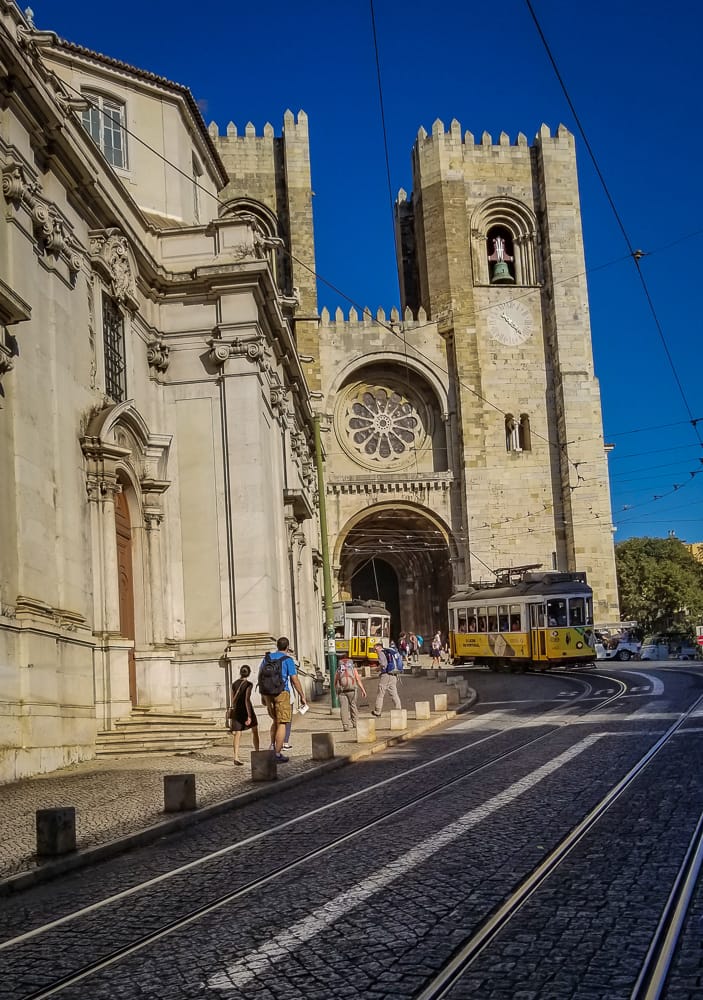
Public transportation in Lisbon is decent but not as good as other European capitals. The VivaViagem card is reusable (and offers discounted fares vs. single fare tickets) and can be used for trams, buses, trains and the metro. Taxis, tuk-tuks and Uber are also widely available.
3. Money in Portugal
As part of the EU Lisbon uses the Euro, but compared to other European capitals your money goes far here making Lisbon a great destination for the budget traveler. ATMs are plentiful and most businesses accept credit cards. Beer or a glass of wine can be had for as little as 2 Euro, a quick sandwich for less than 5 Euro, casual menu del dia for 8 Euro and sit down dinners from 15 Euro.
4.Weather in Lisbon
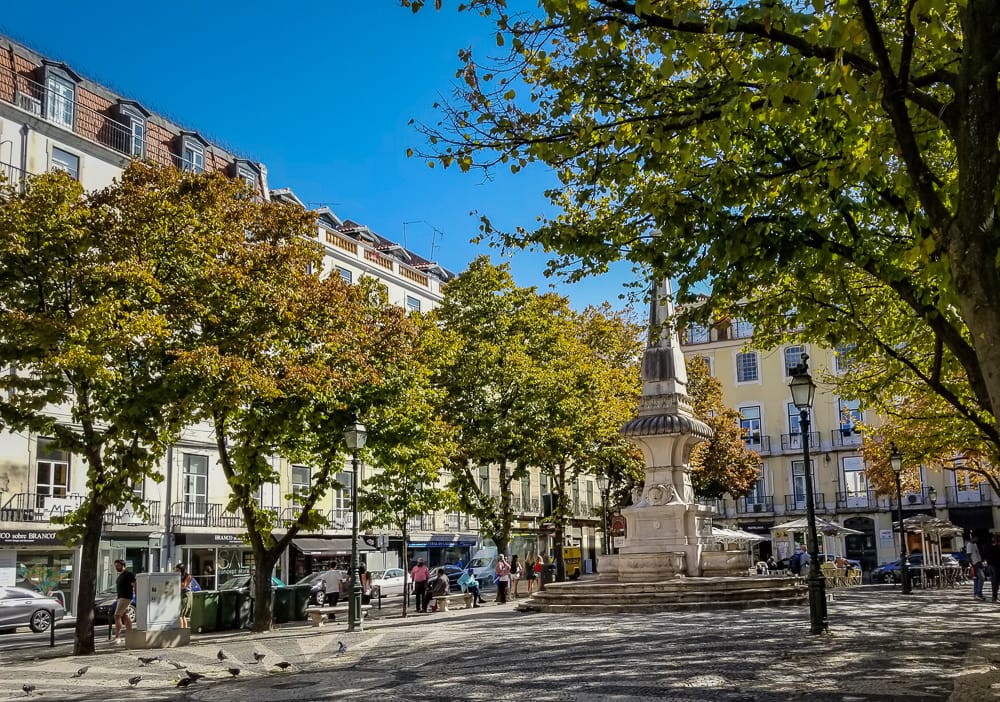
Weather in Lisbon is fairly moderate with warm summers and cooler,wetter winters. Average high temperatures from June-August range from 80-90 degrees F (25-30 degrees C) while daytime temps in December-February average around 55 degrees F ( 13 degrees C) but are typically wetter than other times of the year. Spring and autumns are glorious with sunny days and average temperatures in the 70s F (22-26 degrees C).
5. Accommodations in Lisbon
Lisbon has a wide range of accommodations from budget hostels to boutique inns and luxury hotels. Renting an apartment is an increasingly popular option but with the popularity of Lisbon as a travel destination many apartment owners are opting to rent through short term sites like Airbnb instead of the traditional long term rental. This unfortunately has priced a lot of locals out of the center of Lisbon.
>Hostels in Lisbon
>Boutique Hotels in Lisbon
>Luxury Hotels in Lisbon
6. Lisbon has hills. Seven of them.

Like Rome, Lisbon is a city of seven hills and no matter which direction you go it feels like you are always walking up. While I am more than happy to walk these hills (mainly so I can justify eating all the pastel de nata), the people of Lisbon have developed a few easier ways to traverse these steep hills including its famous trams and even an elevator in the middle of the city ( I’ll have more on these shortly).
Itinerary for Four Days in Lisbon
7. Make sure to wear good shoes

Lisbon’s sidewalk mosaic tiles are gorgeous but also quite slick. Be sure to wear shoes with good tread to avoid taking a spill.
8.Lisbon trams
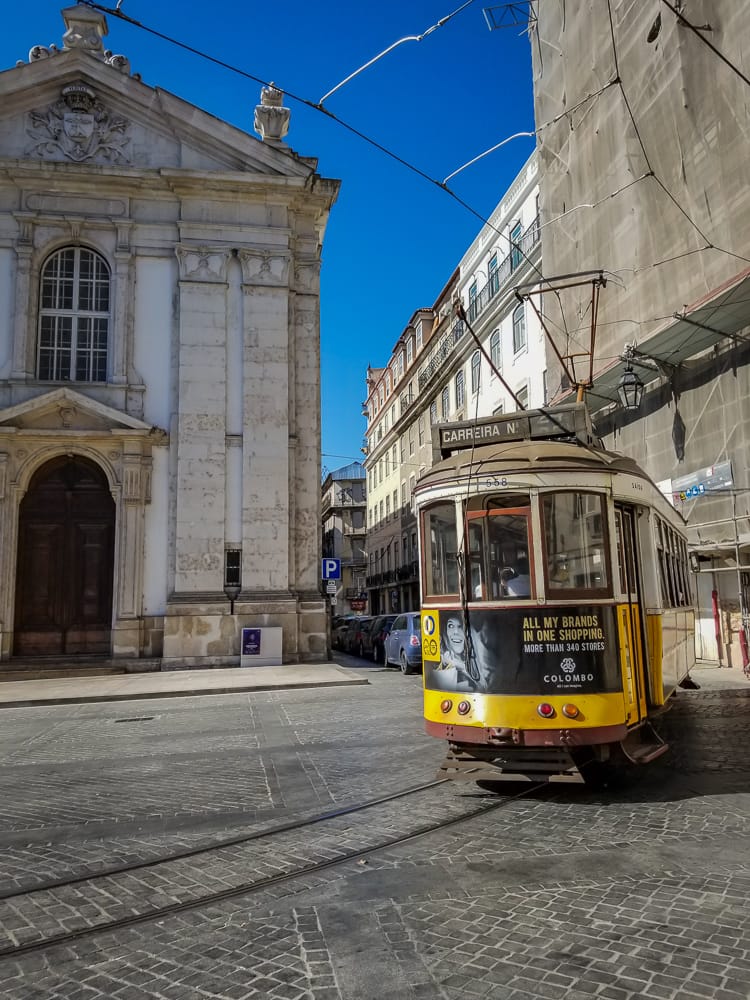
Perhaps no other image is more associated with Lisbon than a yellow tram climbing the cobblestoned hills past historic tiled buildings (I may or may not have taken over 100 pictures of trams during my visit). Trams are a part of Lisbon’s public transport and can be a great way to get from point A to point B. Tram #28 is especially popular with tourists as it goes pasts several of Lisbon’s most popular sights however it can be quite crowded with wait times to board at over an hour. Tram #28’s popularity with tourists has also made it quite popular with pickpockets as well.
9. For the best views in Lisbon follow signs for Miraduoros
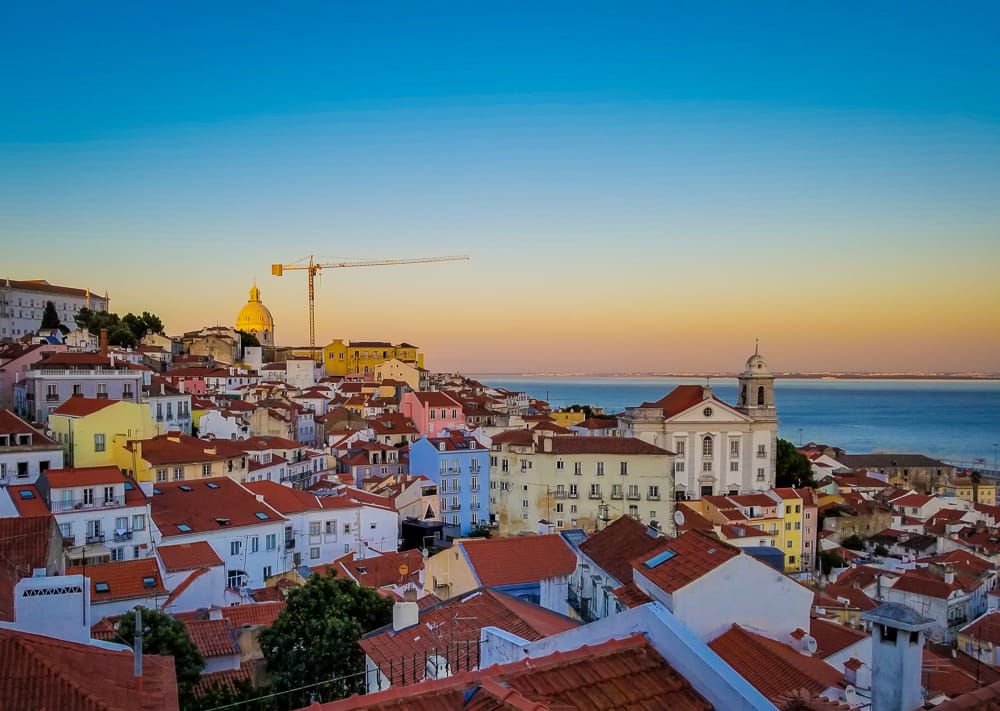
If you see a sign leading the way to a Miraduoro it would be a good idea to follow where it goes. These scenic overlooks can be found throughout Lisbon. For views overlooking the red tiled roofs of the Alfama district and the Tejo River head to Miraduoro Portas do Sol; or check out the Miraduoro de Sao Pedro de Alcantara near Barrio Alto for great views and people watching.
10. Take in Lisbon’s beautiful sunset views

More than any other city I’ve been to it seems like much of Lisbon was built solely for taking in amazing sunset views. Join the locals and end your day taking in some of the best sunsets in Europe.
Lisbon Neighborhoods
The Alfama district is a beautiful maze of cobblestone alleys, cozy squares, terracotta tiled roofs and surprises around every corner. Lisbon’s oldest and most traditional neighborhood was untouched by the earthquake of 1755 and today you’re still likely to the sounds of fado echoing through the alleys as you pass ladies hanging their laundry out to dry but you’ll also find Lisbon’s creative spirit on display in the form of colorful street art. The Alfama District is home to the 11th century Sao Jorge Castle and the Se Cathedral, which has been serving Lisbon’s catholic population since 1150.

12. Barrio Alto
A quiet residential neighborhood by day the Barrio Alto comes alive once the sun goes down. Bistros, bars and clubs keep the Barrio Alto buzzing late into the night.
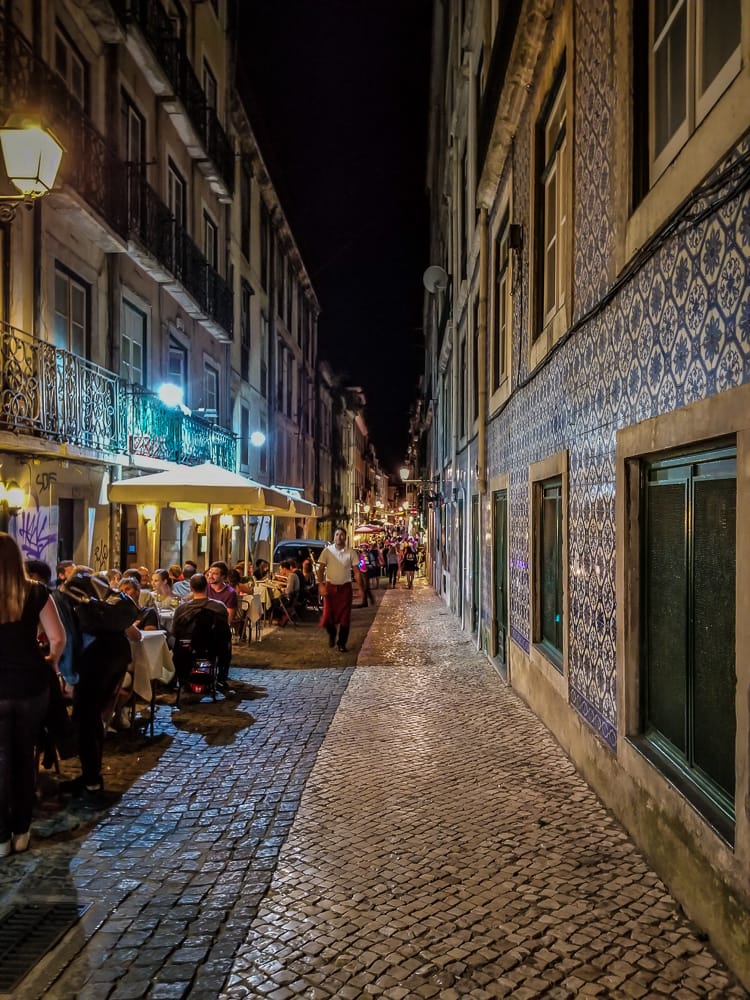
13. Cais do Sodre
Once a seedy area frequented by hard-drinking sailors Cais do Sodre is now home to trendy bars and cafes. Be sure to stop by the Time Out Market and the Mercado da Ribiera to taste the best of Lisbon’s contemporary and traditional flavors.
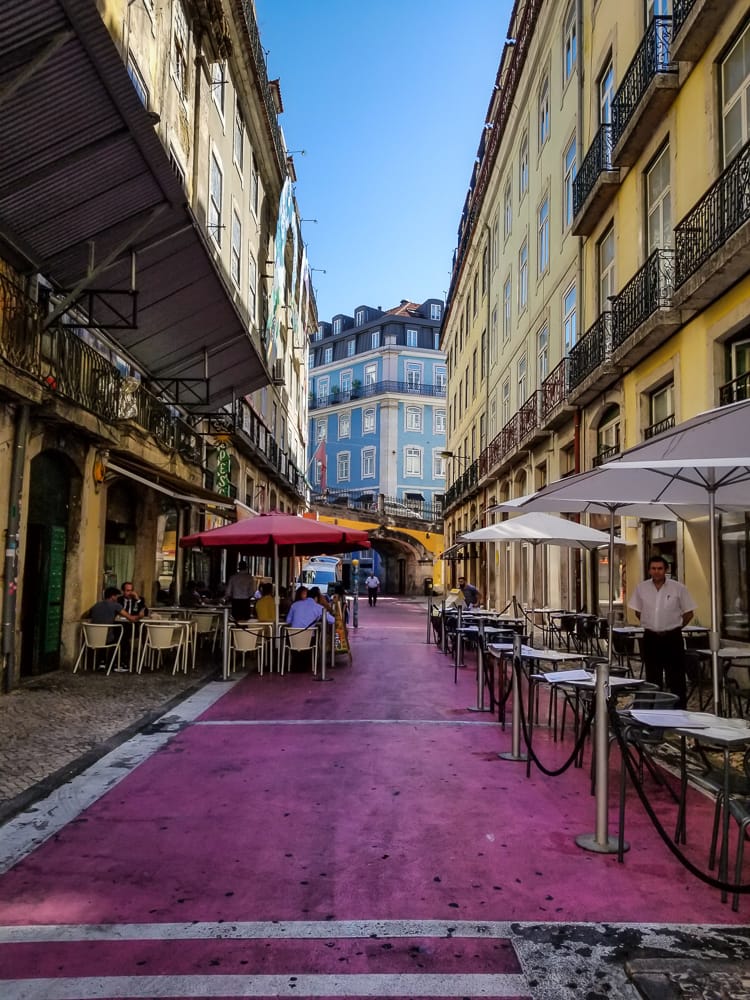
To the west of downtown Lisbon lies Belem, once the port area for Lisbon and departure point for Portuguese explorers during the Age of Exploration. A visit to Belem is one of the top things to do in Lisbon . The Tower of Belem (which in my opinion would make an excellent Game of Thrones filming location) has been seeing off explorers since the 16th century. Nearby the Mosteiro dos Jeronimos is an intricate Unesco World Heritage site with fantastical architecturl details. Belem is also home to Lisbon’s museum district including the contemporary MAAT ( Museum for Art, Architecture and Technology).
To reach Belem take the train or tram 15E from Cais do Sodre.

15.Chiado/Baixia
Located between Barrio Alto and Alfama the neighborhoods of Chiado and Baixia are Lisbon’s upscale neighborhoods. Chiado is artistic, with grand cafes, chic art galleries and a proud literary history. This is also where you’ll find some of Lisbon’s most beautiful architecture including the stunning Carmo Convent, a medieval convent that was destroyed in the earthquake of 1755 whose facade is beautiful and timeless. Baixia is home to wide leafy boulevards lined with tony boutiques and the Elevator de Santa Justa, a wrought iron lift that connects Chiado and Baixia. A popular tourist attraction, waits to ride the elevator can be over an hour. Snap a picture and go on your way.
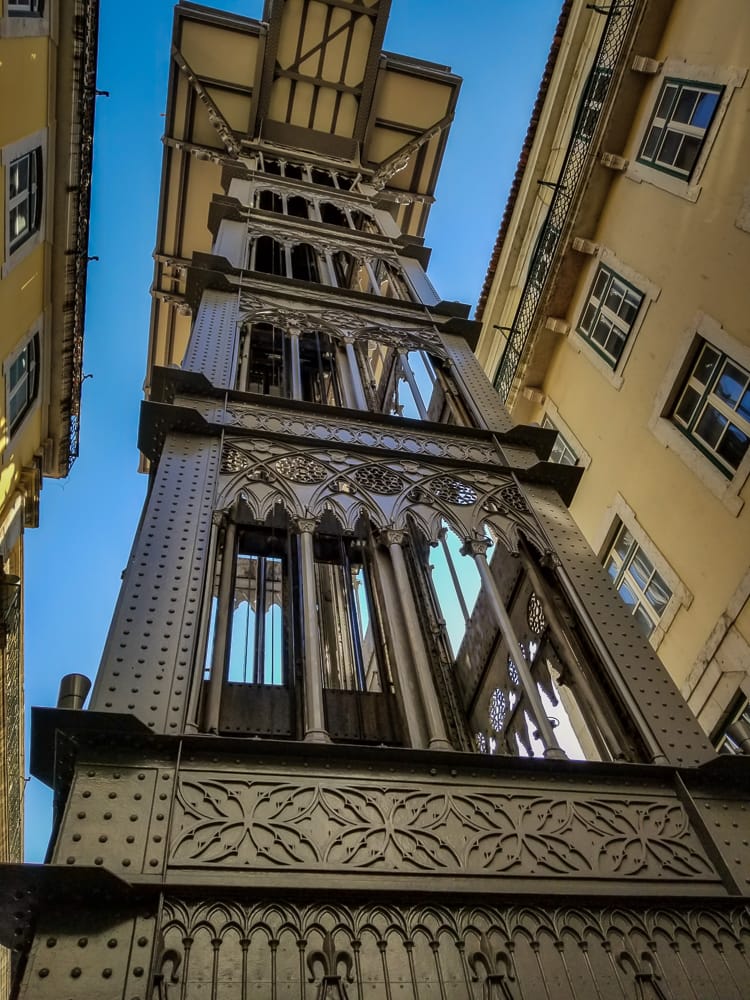
Food and Drink in Lisbon
16.food in lisbon.
With a focus on simple, fresh ingredients food in Lisbon may be the most underrated cuisine in Europe. With miles of coastline along the Atlantic Ocean Lisbon is a seafood lovers paradise (more on that below); but carnivores should be sure to sample porco preto , Portugal’s beloved black pork. These Iberian pigs eat a diet of acorns from the cork oak trees that thrive in the Alentejo countryside producing pork with a distinctly nutty taste. Also not to be missed is presunto , a silky dry-cured ham that in my opinion is better than Spain’s jamon iberico. Caldo Verde is a simple but comforting classic Portuguese kale soup. I believe a food tour is a great way to get to know a city and its cuisine in a short amount of time, join one of the culinary walking tours with Backstreet Eats.
What to eat in Lisbon
17. those appetizers aren’t free.
It’s common for waiters to bring out a little plate of nibbles (known as couvert ) at the beginning of the meal that usually includes olives, bread and cheese but be aware it’s not a freebie. To avoid being charged politely send the plate of goodies back untouched.

From simply grilled sardine and freshly fried octopus to hundreds of ways to prepare cod (bacalhau) Lisbon is without a doubt one of the best cities for seafood lovers. Lisbon also elevates canned seafood to an art form. Colorful tins contain oil packed sardines, tuna, mackerel and smoked eel that is worlds above that sad can of tuna sitting in your pantry and make for a great souvenir to get in Lisbon .
19. Eat all the pastel de nata (and other pastries)

When you’re in Lisbon you really need to make it your mission to eat as much pastel de nata as humanly possible. This creamy, egg yolk-based custard tart is ubiquitous throughout Lisbon. The guide books will tell you to go to Pasteis de Belem, which has been serving up flaky tarts since 1837 but can also have up to a two hour wait. Instead get your tart fix at Manteigaria, a cozy art deco pasteleria in the Barrio Alto neighborhood. Aside from pastel de nata you will find bakeries on every corner filled with a diverse variety of Portuguese pastries. Be sure to pair your sweet treat with a cup of coffee or bica (espresso), which is excellent thanks in part to Portugal’s close relationship with Brazil.
20. What to drink in Lisbon
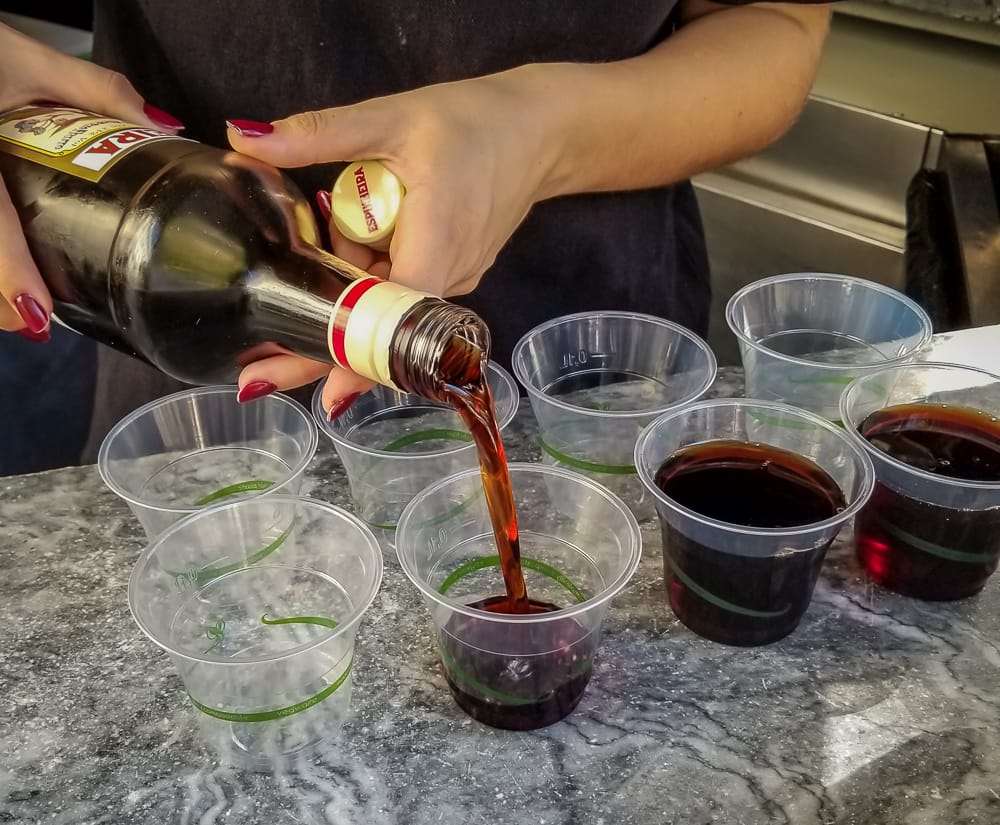
You’re likely familiar with port, the sweet fortified wine from the north of Portugal, but Lisbon has a wide variety of great wine thanks to its proximity to the Alentejo. Whether you enjoy a glass with lunch or head to one of Lisbon’s many wine bars after the sun goes down wine is Lisbon is plentiful, affordable and above all very good.
The other drink you must try in Lisbon is ginjinha, a sweet liqueur made from sour cherries. Served straight or in a chocolate cup (my favorite), ginjinha can be found in the many kiosks that dot Lisbon.
The soulful melodies of fado are Lisbon’s version of the blues. Songs full of meloncholy and heartache sung with the masterful strums of a 12-string guitar are the soundtrack to Lisbon. Head to a tasca for authenic fado, Povo Lisboa in Cais do Sodre and Tasca do Chico in Barrio Alto are local favorites.
22.Safety in Lisbon
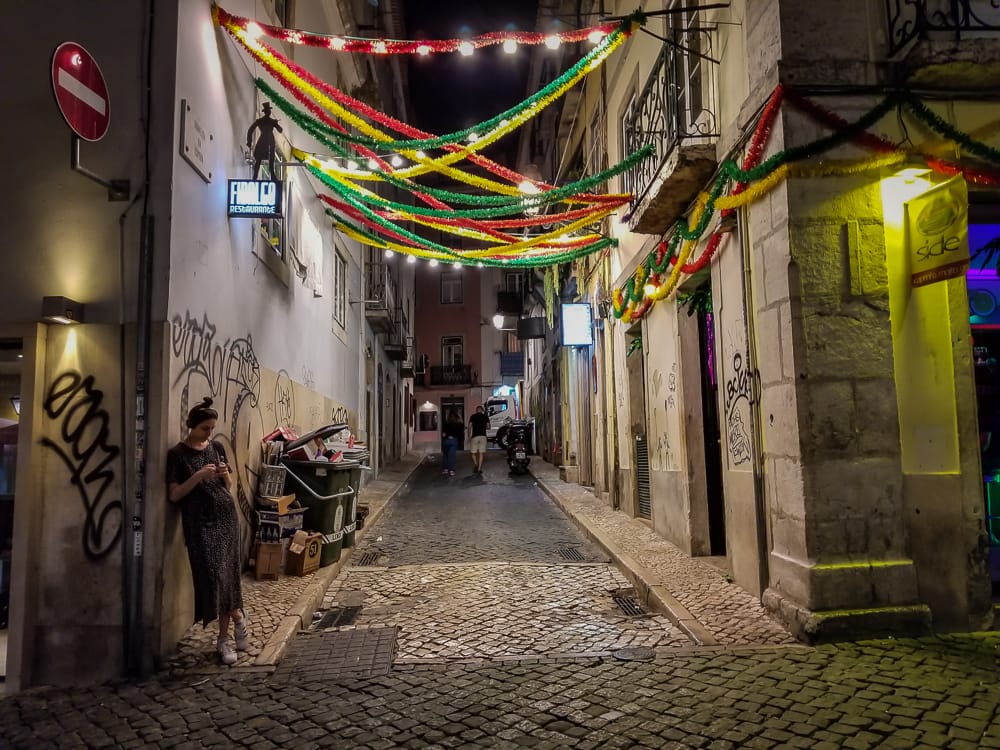
Portugal has a fairly low crime rate but it’s advised to take the usual precautions as you would in any big city. Pick-pocketing and petty theft can be common in trams, particularly the touristy tram #28.
Day trips from Lisbon

Cascais is the closest beach town to downtown Lisbon . A 30 minute train ride from the Cais do Sodre train station this charming town offers sun drenched beaches, dramatic cliffside views of the Atlantic Ocean, whitewashed homes and perpetual sunshine. I was contemplating a move here 10 minutes after arriving.
>Hotels in Cascais
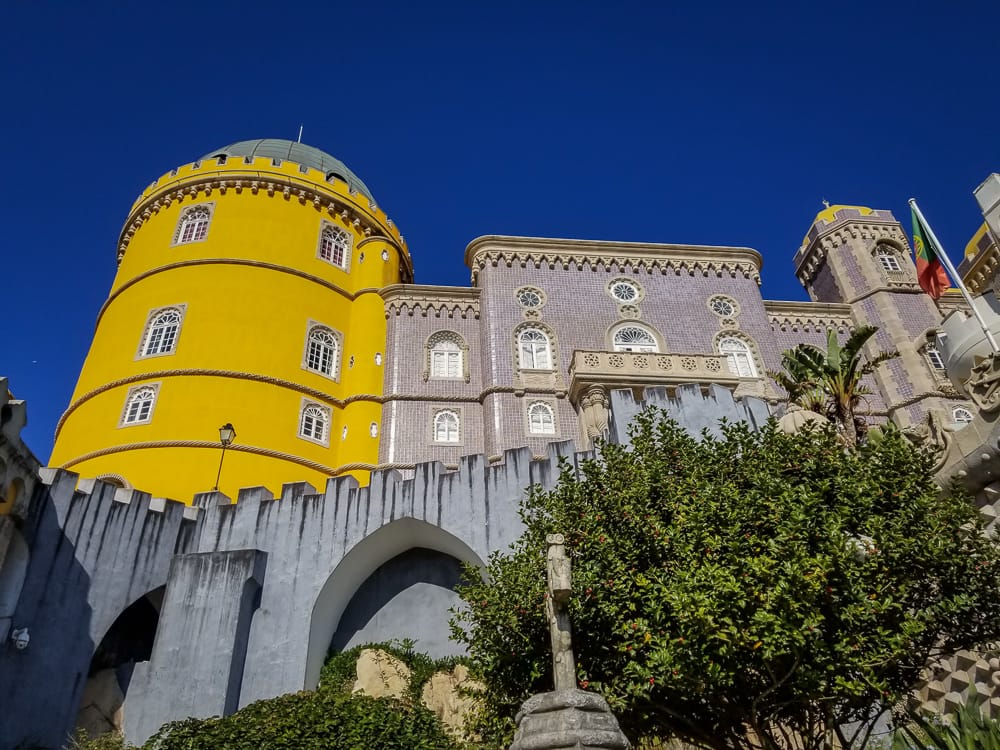
If you take only one day trip from Lisbon make it Sintra . The main draw in Sintra is the colorful fairytale castle of Pena Palace , but this Unesco World Heritage Site also boasts the medieval Moorish Castle and the whimsical home and gardens of Quinta de Regaliera .Trains to Sintra leave from Lisbon’s Rossio train station every half hour and the journey takes around 40 minutes.
>Hotels in Sintra
Evora is the heart of the Alentejo, Portugal’s largest wine and agricultural region. Explore Roman ruins and the Chapel of Bones (a church decorated with hundreds of bones from human skeletons) or taste your way through the nearby vineyards. Evora is about a 90 minute train or bus ride from Lisbon.
Hotels in Evora
More Lisbon and Portugal Inspiration
The Perfect Weekend in Lisbon
Amazing Scenic Lisbon Viewpoints
UNESCO World Heritage Sites in Portugal
What to See in Lisbon in Two Days
Planning a trip to Lisbon? Pin this post for later!
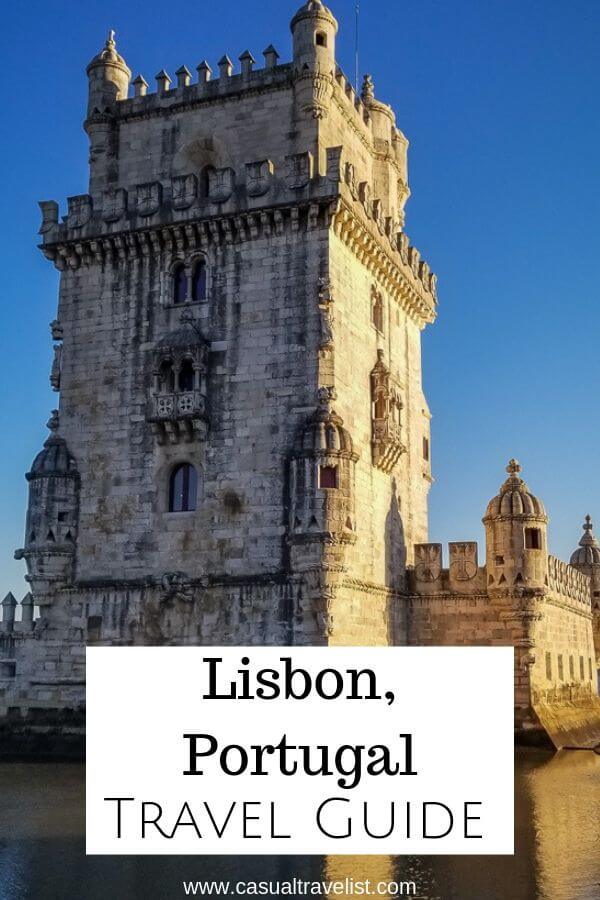
About the Author
Freelance travel writer and blogger who seeks out laid back luxury. Focus on culinary, adventure and nature travel. [READ ALL ARTICLES]

Everything You Need to Know About Visiting the Vatican

More than Zion-Hiking Snow Canyon State Park and Red Cliffs Desert Reserve
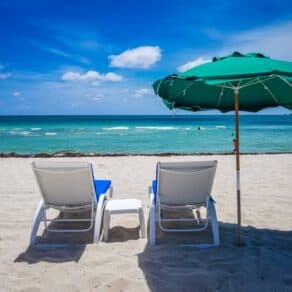
The Art of Relaxing in Miami Beach
Reader interactions, leave a comment cancel reply.
Helpful comments include feedback on the recipe or changes you made.
Get new posts and travel tips delivered right to your inbox!
This site uses Akismet to reduce spam. Learn how your comment data is processed .
Tamara says
April 19, 2018 at 8:09 am
Great tips, thank you! Perfect timing as I am headed there next week.
April 19, 2018 at 12:04 pm
#17 took us by surprise on our first trip! We learned quickly though! Great tips!
Esther says
April 20, 2018 at 12:41 pm
I agree with all of these! Visited Lisbon twice and couldn’t get enough. I also recommend Lux, an old textile factory now home to many independent shops and great restaurants and clubs. For a day on the beach I recommend Sesimbra over Cascais, it’s a lot less crowded and touristy. #WeekendWanderlust
April 20, 2018 at 1:47 pm
Amazing tips! I will definitely need them for when I go in the near future. Pinned.
Brianna says
April 27, 2018 at 9:41 pm
Goblinette says
April 20, 2018 at 5:37 pm
Great tips. Haven’t been in LIsbon yet, but it looks lovely.
April 27, 2018 at 9:42 pm
I loved Lisbon and can’t wait to go back!
April 20, 2018 at 5:42 pm
MMMM. Pastel de Nata is my favourite! Great resource!
April 27, 2018 at 9:43 pm
Pastel de nata is the best!
Obligatory Traveler says
April 20, 2018 at 9:37 pm
Great Post. Thanks for including so much great information, especially information about transportation. Since we usually don’t rent cars, it’s good to know the reliability of the public transportation. It’s also nice to know about the wait time for Tram #28 to meter expectations. The food and drinks look delicious. #WeekendWanderlust
April 27, 2018 at 9:45 pm
I hope you find this post helpful if you make it to Lisbon.
Sandi Kowalyshyn says
May 27, 2019 at 9:20 am
Hi Brianna! Can you tell me if it is safe to wear my diamond Jewelry in Lisbon?
Thanks! Sandi
Simone says
April 21, 2018 at 4:47 am
As I’ll be in Portugal during my van trip in September, I’ll definitely use all this infos once in Lisbon. Great pictures!
Can’t wait to see your adventures!
Rhonda Albom says
April 21, 2018 at 8:23 am
I skipped Lisbon when I travelled through Portugal years ago and have regretted it. You seem to have put all the basic travel information about Lisbon together in one spot. This is one resource that I will use when I return to see Lisbon.
Amanda Grace says
April 21, 2018 at 10:57 am
Yessss. This is exactly what I needed!!! Thank you for sharing.
April 27, 2018 at 9:48 pm
You will love Portugal!
Nicole says
April 21, 2018 at 11:24 am
This is a great post. I think that you cover many practical issues that travellers need to know in order arrive and move around the city easily. We spent days in Sintra a few years back and loved it there. We will definitely need to go back to Lisbon to explore more.
April 27, 2018 at 9:49 pm
Isn’t Sintra just magical?
Annie Soul says
April 21, 2018 at 1:16 pm
Great tips! I’m really looking forward to checking out some of the districts and food 🙂 thanks for the info!
April 27, 2018 at 9:50 pm
Any district or food pique your fancy?
Marcus and Mel says
April 21, 2018 at 1:19 pm
A great detailed and useful list. We were there last Spring and loved the place. You definitely need good shoes with all those hills and the pretty pavements are quite slippery, especially when wet. The Time Out Market offers a range of food suitable for all tastes. We really enjoyed our trip to Sintra, make sure you go early.
April 27, 2018 at 9:52 pm
Glad you enjoyed this post, I want to go back!
Lorial Roballo says
April 21, 2018 at 1:44 pm
Ugh I love Lisbon. I visited here in 2016 and it one of my op places to travel to in Europe. That view from the Miraduoro is absolute perfection and even though you get a GREAT instagram photo. It just isn’t the same from real life. Pastéis de Belém was hands down the best pastry that I’ve had during my time in Europe. And I wish I could find it here in St. Louis. Maybe I can I just haven’t checked. Great article and wonderful photos! 🙂
April 27, 2018 at 9:54 pm
Thank you! Perhaps it’s time for a return trip?
April 21, 2018 at 8:53 pm
Thank you very much for this post, I’m actually just starting to plan my trip to Portugal and this post is the first to be saved into my Portugal folder. I’m looking to go in July, flying into Porto and heading North before heading south and of course I will be spending quite some time in Lisbon. Friends of mine have told me i will fall in love with it, and from just reading through this post I can see why. It’s good to know that appetisers are not free, and good advice on the footwear for the slippery streets – I’ll be honest after reading through this I’m most looking forward to trying my first pastel de nata with a Bica 😀 – I can’t wait to get out there 😀 😀
April 27, 2018 at 9:55 pm
I can’t wait to see how your trip goes!
April 22, 2018 at 4:02 am
This is a really great list! Hoping I’ll get to go to Lisbon soon so definitely saving this 🙂 #WeekendWanderlust
April 27, 2018 at 9:57 pm
Thanks a bunch!
Fiona Maclean says
April 22, 2018 at 9:47 am
Although I’ve travelled around Portugal a lot, I haven’t been to Lisbon since I was 30. In fact, it was for my 30th birthday! I went with my boyfriend in search of fado and ended up drinking far too many tequila slammers…I definitely needed some of your tips to keep me focussed. I’m planning to go back this year so I’ll be bookmarking this and using some of your great tips on where to go (Belem for instance) and what to eat (black pork!)
April 27, 2018 at 9:59 pm
Stick to port and ginja this time;)
April 22, 2018 at 12:13 pm
I remember arriving in Lisbon and thinking we can walk all over— oh wait, we could but it is hilly so you are right— you need to wear comfy shoes. We bought the tram card and that kinda saved our lives. Lisbon is pretty but its a lot of exercise— well I guess we just eat and walk it off. We also enjoyed the day trips outside Lisbon.
April 27, 2018 at 10:01 pm
Like I said, I didn’t mind all the walking so I could eat more 🙂
Dorene says
April 22, 2018 at 5:34 pm
Could the sky have been more blue than during your visit to Lisbon? 🙂 I so look forward to getting there, and this is the perfect post for me – lots of great tips and navigation before arrival. I like your detail of the neighborhoods – good to know where to go. Alfama will definitely be on my list. Good to know about the friendly appetizer plates, I would have definitely fallen for that. Bookmarked for future visit.
April 27, 2018 at 10:02 pm
Alfama is absolutely beautiful, great choice!
Efthimis Kragaris says
April 23, 2018 at 7:52 am
Great guide. Hopefully I will visit Lisbon this year. Can’t wait to enjoy some great Portuguese wine while listening to fados and watch the sunset view from the various miradouros. The tiles and the trams are also so instagrammable!
Michelle says
April 23, 2018 at 12:20 pm
I haven’t been to Lisbon yet, so these tips will come in handy when we get there. I didn’t realize the city was so hilly!
Kathleen says
April 23, 2018 at 3:30 pm
Such great tips. I’ve just recently become interested in visiting Portugal, although I never would have turned it down before. Lisbon is so beautiful and picturesque. I really love the tiled walls and sidewalks. The little tarts look like some we had in China. I wonder if they are similar. The ones in China are a sweet egg tart, not tasting like egg at all.
April 27, 2018 at 10:04 pm
Portugal’s food culture spread around the world so I’m guessing the tarts would be very similar.
Siddhartha Joshi says
April 23, 2018 at 11:36 pm
Lisbon is such a dream destination for me, and sadly I haven’t been there at all despite going to Europe so often. Thanks to your lovely guide I am even more inspired 🙂
Thanks for including handy tips also like pick-pocketing in trams and so on…very useful for planning and being mindful 🙂
Indrani says
April 24, 2018 at 12:23 am
I agree with you on – the yellow trams are a symbol of Lisbon. The Elevator de Santa Justa surprised me. Seeing the queue I took just a pic 😛 🙂 Enjoyed reading the post, it was like revisiting.
Medha Verma says
April 24, 2018 at 6:43 am
What a beautifully detailed post! Thanks for the advice on wearing good shoes for those street walks and I am happy to know that it’s a budget destination. Also, it seems like the VivaViagem card is a good investment for those who want to travel in a budget way, using public transportation. Alfama district’s street art looks great!
Julie McCool says
April 25, 2018 at 8:49 am
Excellent round-up of tips. I love the mix of practical info and travel inspiration (those sunsets look amazing). I stayed in Sintra but only passed through Lisbon, so it’s time for another trip to Portugal.
Miranda| Migration Expert UK says
May 7, 2018 at 11:00 pm
Great blog post with lots of useful information about Lisbon! Thanks so much for sharing.
May 10, 2018 at 12:37 pm
Great tips Brianna, thanks very much! I am planning to visit Lisbon for the first time soon, these will come handy.
June 13, 2018 at 8:36 pm
Hopefully you get to Lisbon sooner rather than later!
Sarah Montgomery says
May 13, 2018 at 6:23 am
We’re heading over to Lisbon for the summer and your article was really insightful. It’s great to know that public transport would be easily available as we’re not looking to rent a car. I’m especially looking forward to watching over the stunning views and munching on pastel de nata. Loved the read.
June 13, 2018 at 8:39 pm
I’m glad you found it helpful!
Tina Wright says
May 14, 2018 at 6:05 am
Thanks for such an informative blog. Perfect for our 48 hours in Lisbon next month. So glad I found you, makes my planning easier.
June 13, 2018 at 8:40 pm
You will have a fantastic time in Lisbon!
Matthew Ali says
May 17, 2018 at 5:06 pm
Wonderful post – you covered almost every aspect for a trip to Lisbon. I’ve been there 2 years ago and it is one of the best places to visit in Portugal.
June 13, 2018 at 8:42 pm
I absolutely loved Lisbon and can’t wait to go back!
KB Burt says
November 1, 2018 at 8:24 pm
Ooh, it brings it all back! I haven’t been since 2010 but I loved it. I was quite ill and had to spend a good portion of my ten days on the hotel rooftop in Baixa and it could not have been a better place to recuperate (I’m a city girl and not good at beaches). The people were so nice and helpful, genuinely and I couldn’t agree more about the food! It’s a great place for dietary restrictions as well as you can get such simply cooked, delicious food. One piece of advice I got there was to be careful where there are signs warning against pickpockets – apparently lots of people check their wallet as soon as they see it and it’s a big help to pickpockets hanging around! 🙂
February 20, 2019 at 5:09 pm
Lisbon used to be a nice place to visit but it changed completely over the past 5 years. Now it’s just an artificial and stressful city packed with tourists everywhere. It became the perfect place to have coffee at Starbucks, have fast-food at international food chains or expensive dinners at the latest Butanese restaurant, cross thousands of useless souvenir shops full of made in China products, queue for anything slightly interesting while pickpockets do their job, squeeze and bump into other tourists in overcrowded side walks and not being able to meet and talk to a single Portuguese resident with a non-tourist job. It also became a very expensive city with dinner costing 40 euros/person and hotels averaging 100 euros/night. If you want to experience the Portuguese culture and gastronomy for 1/3 of those prices then run away from Lisbon as fast as you can. I hate to say this but overtourism killed Lisbon and its authenticity. I’d recommend other places in Portugal that are still not that popular such as Braga/Guimaraes/Geres/Coimbra/Aveiro in the North, Sintra/Guincho/Cascais/Evora/Sesimbra/Arrabida/Comporta close to Lisbon or Costa Vicentina/Algarve (Lagos, Tavira, Vilamoura) in the South.
Michela says
April 21, 2019 at 4:23 am
I have been to Lisbon a couple of times, and just realised that it’s a long time ago! This post is inspiring and very detailed, that make me want to go back to Portugal and Lisbon, hopefully soon again. Thanks for sharing!
September 6, 2020 at 2:49 am
This is a great list of tips, we totally agree with the amazing food in Lisbon, however we would recommend that you try to find the smaller cafes and restaurants, where you will here the locals, this will often mean that the food is made for local tastes and not for tourists. But yes, where ever you go to in Lisbon, try a pastel de Nata, like the Bacalhao, every baker, has a slight twist on the recipe, which means you never get the same one twice, which means that you have to try every one you see.
Sarah Patel says
January 15, 2024 at 6:57 am
Hey Brianna!
I really enjoyed reading your post, it is very complete!
I am planning a trip to Lisbon, and I really wanted to make a stop at Évora, since I am passionate about history, and I do enjoy drinking a glass of wine from time to time.
A friend of mine, who’s been there a few times, suggested I booked a guided tour , but I am still looking for more options, collecting as much of information as I can so I can make an informed decision.
Based on your experience, what would you recommend?
Thanks again for this great post!
Sarah Patel
[…] out the best tips for a trip to Lisbon […]
[…] RELATED: 25 tips for your first trip to Lisbon […]
[…] Seville, we flew to Lisbon to eat some […]
[…] Get 25 tips for your first trip to Lisbon from my friend Brianna […]
[…] And here’s a great resource for all you need to know about traveling to Lisbon for the first time. […]
[…] visitors head to the Algarve one of Portugal’s most charming beach towns is just minutes from downtown Lisbon. When I mentioned my plans to travel to Cascais to a Lisbon local a knowing smile lit his face as […]
[…] rainbow castle looks out over all the land. The palaces of Sintra are less than an hour away from Lisbon but feels worlds away. Portuguese and British nobility have long been swayed by Sintra’s […]
[…] 25 Tips for Your First Trip to Lisbon, Portugal […]
[…] Check out our recommendations for the best Portuguese food tours, cooking classes, and wine tours. With tours from Lisbon and Porto, these tours cover Alentejo, Minho, and everything in between. Or, for first-time visitors to Lisbon, check out these top Portugal travel tips. […]
[…] is really a great city and I would encourage you to read Brianna’s post on 25 tips for your first visit […]
[…] centuries of tradition and an independent creative spirit, Lisbon has become one of the world’s most fascinating cities. Europe’s second oldest capital […]
[…] Belem is home to the most famous attractions like Monastery of Jerónimos, Tower of Belem or even the contemporary art museum Coleção Berardo. And, obviously, you can’t miss the Pastel de Belem in its original pastry. But there’s so much more to Lisbon… […]
[…] For more tips on where Lisbon locals like to eat and drink, click here. See also: 25 Tips for Your First Trip to Lisbon […]
[…] is 640 km long all the way from the capital Lisbon and stretches 240 km from Porto, Portugal. This means that you need 23 to 25 days for the whole […]
[…] article from us here at Wyld Family Travel has you inspired to visit Portugal and stay in Lisbon. There are so many things to do in Lisbon that will have you entertained for your stay in the […]
- Privacy Policy

32 Lisbon Travel Tips To Make Your Trip So Much Better
L isbon, the capital city of Portugal, is one of the best places on Earth. This vibrant, colorful destination — a bit reminiscent of San Francisco in its better days — has so much to offer visitors!
From its rich history and laidback culture to its stunning architecture and delicious seaside cuisine, Lisbon is a city that is sure to captivate and inspire you to come back time and time again.
As with any travel destination, there are certain things to keep in mind when planning your trip to make the most of your experience.
In this post, I will share a handful of my lessons learned and travel tips for Lisbon to make your trip that much better. Whether you’re a first-time visitor or a seasoned traveler, these tips will help you navigate the city like a pro, help you save time and money, and ensure that you have an unforgettable experience in an even more unforgettable destination!
From where to eat and drink to how to get around and what to see, I’ve got you covered. Let’s dive into all the travel tip goodness.
This post may contain affiliate links. You won’t be paying a cent more, but in the event of a sale, the small affiliate commission I receive will help keep this blog running/pumping out useful and free content. Thanks a lot!
LISBON IN A NUTSHELL
Here’s a quick overview of all the useful info you need to plan an awesome trip!
- When To Go : March – May or September – October. During these shoulder season months, the weather is pleasant (cooler than in the summer), hotel rates are cheaper, and you’ll find far fewer crowds than during the summer.
- Goodnight Hostel ($) – the best hostel in Lisbon! Comes with super spacious rooms and free breakfast as well.
- Palácio das Especiarias ($$)- modern boutique hotel in an old palace
- Solar dos Poetas ($$) – best for a cozy yet luxurious guesthouse experience
- Nearest Airport : Humberto Delgado Airport (LIS)
- How to Get Around : Public transportation or rideshare — both are super affordable compared to other European countries.
- Must-Do’s : visit the historic Jeronimos Monastery , explore the charming Alfama neighborhood, day trip to Sintra , and try the local cuisine such as pastel de nata, bacalhau, bifana sandwich, and seafood!
- Before You Go : Lisbon has so much good food. Make a list of all the restaurants you want to dine at — and try to make reservations for them so you can guarantee your seat!
- ‘Hello’ and ‘Thank You’ in Portuguese : “olá” (hello) and “obrigado” (thank you) when addressing a man or “obrigada” (thank you) when addressing a woman
- Currency : the euro (€) – click for current conversion rates
32 LISBON TRAVEL TIPS TO MAKE YOUR TRIP SO MUCH BETTER
1. everything airport-related takes longer, especially if you’re used to using tsa precheck. .
Be prepared for longer lines and wait times at Lisbon airport. This airport gets BUSY. We arrived into LIS on a Sunday, and throngs of people were everywhere — it was truly shocking how many people were walking around the airport.
Sure, it’s a Sunday, one of the busiest days of any airport. But when we left on a Wednesday, we were faced with not crowds, but long and slow security check lines! If you’re someone who’s used to getting through a security check line in under 10 minutes, this will NOT be your experience in Lisbon.
Just to me safe, I’d allocate at least an hour to get through security. Make sure you arrive early for your flight and have all your documents and boarding passes ready!
If you need some time to buy or swap out the SIM card in your phone, allocate some time to do that by showing up 10-15 minutes earlier than you intended.
2. Expect cobblestones, so be prepared with your footwear and luggage.
Lisbon is known for its charming cobblestone streets, but they can be challenging to navigate with heavy luggage or inadequate footwear. Expect uneven tiles with gaps between them… if that sounds like a rolling suitcase nightmare, it is.
After about 3 minutes of rolling your suitcase on Lisbon’s cobblestoned roads, you’re going to regret your choice of luggage and telling yourself “RIP suitcase wheels”!
If you’re getting picked up and dropped off door-to-door from the airport to the hotel and vice versa, then feel free to use whatever luggage you choose! But if you’re going to be taking public transportation and have some long distances to walk with your suitcase, then I hope you have strong arms!
After about 30 seconds of rolling my luggage on the cobblestones, I decided to just carry my carry-on the whole way to the hotel. Never making that mistake again!
Be sure to wear comfortable shoes with good traction and consider packing a travel backpack or rolling suitcase with extra sturdy wheels (or at least a good warranty!).
Read more: 10 Best Carry-On Travel Bags For Your Next Trip
3. The currency of Portugal is the Euro (€).
While most establishments take credit cards, it’s best to carry along with you a little cash for those smaller vendors who don’t take card.
4. Portuguese is the official language of Portugal but you should have no problem getting by with just English.
You’ll find that most people speak at least a little English.
5. Traveling during the winter/shoulder season? Bring the right shoes for rain.
When packing footwear, you should pack a pair of comfortable shoes to walk around in, as well as a pair of boots in case there is rain in the forecast.
The one pair of shoes that kills two birds with one stone for me? For both guys and gals, I’d highly recommend getting a pair of Blundstone boots !
These shoes are so comfortable — I find that I can wear them walking around town on a sunny day, on light hiking trails, and even in the rainiest conditions. They’re so, so, so versatile! Don’t forget to pack a thick pair of socks to pair with your boots!
If snow and rain are not in the forecast, then you can go with regular walking shoes.
My all-time favorite travel shoes these days are the tried and true Ecco Soft 7 (they’re stylish, comfortable, and have been raved about for decades since they were first created)! The best part is that they have them for both men and women .
The sole support on these is great for Europe travel — you’re not going to be feeling each and every rock under your foot if you happen to be walking on cobblestoned streets!
6. Be prepared for some steep hills and stairs when exploring Lisbon.
But don’t worry as there are plenty of lookout points to take in the view and catch your breath! Chances are, everyone else around you is probably also out of breath.
7. Tram #28 is especially popular with tourists, so it can be quite crowded.
On certain days in the high season, there can even be wait times to board at over an hour. If you want to try out the tram, aim to hop on board one of the earlier trams of the day. The early bird gets the worm!
Not only will you get the figurative worm, aka a seat on the tram, but you’ll also have a much more peaceful experience with fewer people chattering on board!
8. Portugal has a fairly low crime rate but you should still be vigilant.
Portugal, including Lisbon, has a relatively low crime rate compared to other European cities. However, as with any big city, it is important to take precautions to protect yourself and your belongings.
One of the most common types of crime in Lisbon is pickpocketing, especially in crowded areas such as tourist attractions, public transportation, and busy shopping streets. To avoid becoming a victim of pickpocketing, keep your valuables (credit cards, ID, money, and phone), in a secure location such as a money belt or a cross-body bag.
Avoid carrying large amounts of cash and be aware of your surroundings at all times. Pickpocketing can be common in trams, particularly on Tram 28.
Read More: 10 Best Anti-Theft Travel Bags For Your Next Vacation
9. Many tourist attractions are closed on Mondays.
This is a common practice throughout Portugal, with many museums, monuments, and other attractions choosing to close on Mondays for maintenance and cleaning.
Some of the popular tourist sites that are closed on Mondays in Lisbon include the National Museum of Ancient Art, the National Coach Museum, and the Berardo Collection Museum. Other attractions, such as the Belem Tower and the Jeronimos Monastery, are open on Mondays but may have reduced hours or limited access.
With this in mind, plan your itinerary accordingly! Consider visiting attractions that are open on Mondays, such as the Lisbon Oceanarium or the Calouste Gulbenkian Museum.
10. Take elevators to Alfama instead of walking up the hills.
Alfama is a historic neighborhood in Lisbon known for its steep hills and narrow streets. Tourists who aren’t in the know will probably end up walking up alllll the steep inclines to get there.
To save yourself from a strenuous climb, take the free public elevators that are available in the area. Taking the right elevators can help you skip what feels like 7+ flights of stairs!
How to get up to Alfama by elevator : At the Baixa-Chiado metro station, walk straight across Baixa (toward Alfama, away from Chiado) until you can’t go further. Go inside the blue building that houses a set of public elevators. When you get off at the top, cross the street and turn left.
Head for Pingo Doce (the grocery store). Inside the Pingo Doce building, you will see elevators. Take them as far up as they go. From there, you’re pretty close to Alfama!
11. Buy a Viva Viagem card and load it with the carris to save money on rides.
Lisbon’s metro, buses and trams are among the cheapest in Europe, making them affordable ways to help you explore the city.
To use any means of public transportation, you’ll need to buy a Viva Viagem card. The Viva Viagem card is a quick and easy way to pay for rides on public transportation in Lisbon. It’s basically a reloadable card that contains all your tickets or transportation funds on there.
By opting for the 10-ticket carris instead of just loading your card with 1 ticket, your ticket price goes from €2 per ride to €1.65 per ride.
12. Rideshare like Bolt, Uber, and Freenow are super affordable.
The bus and metro are great, but sometimes you just want to get somewhere without having to do any walking or making a ton of extra stops. That’s where the convenience of rideshare comes in!
Rideshare services are a convenient and affordable way to get around Lisbon, especially if you’re traveling in a group or want to get somewhere quickly.
To give you a sense of how affordable it is, our ride from town to the LIS airport via Bolt came out to €4 (about $5 USD). Our rides around town were also never really more than €3 either. What. A. Steal!
Especially since we were a group of 4 — each ride was basically €1 each, which is cheaper than what it would have cost us all to ride the metro.
For reference, the metro/bus cost to get from the airport to our hotel was €1.65. An extra couple of euros spent to save time and effort of lugging your suitcases to the bus/metro stop? 100% worth it!
13. If you’re planning to get by with public transportation, do note bus end times.
Buses don’t run all night long and there is such a thing as “the last bus of the night” here. If you’re going to be out and about late at night, then you’ll want to pay attention to bus end times.
If anything, you can always rely on the metro to get you closer to where you want to go. However, if your destination is not covered by the metro, then taking rideshare is a great option as well because it’s super cheap!
14. Buy a Lisboa Card to save money on attractions.
The Lisboa Card is a great way to save money and make the most of your time in Lisbon. This card offers free admission to over 37 museums and attractions in the city, as well as free public transportation on buses, trams, and metro trains.
The Lisboa Card is available in different durations, ranging from 24 hours to 72 hours, and can be purchased online or at various locations throughout the city. The card also comes with a guidebook and map, which can be helpful for planning your itinerary and navigating the city!
Some of the top attractions included with the Lisboa Card are the Belem Tower, the Jeronimos Monastery, the National Tile Museum, the Lisbon Zoo, and the Lisbon Oceanarium. The card also offers discounts on tours, restaurants, and other activities, making it a great value for travelers who plan on doing a lot of sightseeing.
In addition to the cost savings, the Lisboa Card can also save you time by allowing you to skip the ticket lines at many popular attractions. This can be especially helpful during peak tourist season when lines can be long.
During our last trip, we had only one day planned for sightseeing at paid attractions, while the other remaining days were reserved for walking around, sampling foods, and taking day trips out of Lisbon.
With our 24-hour Lisboa Card , we did the following:
- National Coach Museum
- Jerónimos Monastery
- Belém Tower
- ride around town with the Lisboa card – unlimited for 24 hours!
- Museu Nacional do Azulejo (National Tile Museum) the next morning before the 24 hours were up!
We definitely got our money’s worth with the 24-hour pass!
15. Get your timed entry Pena Palace tickets ahead of time.
If you wait until the day-of to buy your ticket there, you might have a LONG wait ahead of you. That’s because admission at Pena Palace is now time-based. This means if all the time slots for your arrival time have already been sold out, you’ll be given the next available time slot, which could be 1-2 hours after you’ve already arrived.
This actually happened to me on my second visit to Pena Palace! My friends had decided last-minute that they wanted to visit. (Last-minute is never a good idea!)
Online reservations were sold out that morning, so our only option was to show up physically at the ticket office to buy tickets. Luckily, they had availability for in-person ticket purchases.
BUT, we had to wait 2 whole hours before they would let us in! We had walked all the way up the hill to get to the Palace, so there was no way we were walking back down to kill time. So we mostly just sat around for the whole two hours before getting in line to enter. It was a total waste of time, to be honest!
To avoid long lines and stupid wait times, purchase your tickets for Pena Palace online ahead of time . This will mean no wasted time — you’ll get to enter the palace at your desired time slot. Easy in, easy out!
16. If you’re traveling outside of the summer season, bring warm clothes to Sintra.
Sintra can be significantly cooler than Lisbon, especially during the off-season. Be sure to bring warm clothing and dress in layers to stay comfortable. If the clouds and the fog are rolling through, it’ll feel a lot colder when the sun isn’t shining directly on you.
17. For nightlife, go to Barrio Alto or Pink Street.
For night owls or people looking for a lively nightlife scene in Lisbon, two popular neighborhoods to grab drinks, party, and dance are Barrio Alto and Pink Street (or Rua Nova do Carvalho) .
Barrio Alto is home to a wide range of bars, restaurants, and nightclubs, catering to all tastes and budgets. Visitors can enjoy live music, DJ sets, and dancing until the early hours of the morning. Some popular bars in Barrio Alto include Pavilhão Chinês, Foxtrot, and A Capela. Round out the night with a gyro sandwich!
Rua Nova do Carvalho, is another nightlife destination located in the Cais do Sodré neighborhood. The street is known for its pink-colored pavement and is home to several bars and nightclubs. If you can, try to enjoy live music, dancing, and drinks at venues such as Pensão Amor, Musicbox, and Tokyo Bar.
Note: These areas can get quite crowded and noisy, especially on weekends and holidays! Be prepared to be chest-to-chest with people in some venues!
18. Make time to eat at a tasca and try local Portuguese food.
Tasca is a Portuguese word for a small, casual restaurant that serves traditional food. These restaurants are a great way to try local cuisine and get a taste of the local culture.
There are lots of options within the city of Lisbon, but by far my favorite restaurant is Tasca Do Teimoso . This little restaurant is run by a duo comprised of a son and a mom. The son does all the cooking while his mother is doing all the serving and hosting!
They only take a set number of reservations per day, and when that quota is met, they turn everyone else away! Be sure to make reservations ahead of time if you want the chance to dine in here! The food was so good. I’m still dreaming about their beef cheek dish…
19. Bring cash if you plan on eating at tascas.
Not all of them accept card, so be prepared with some cash money on hand to pay for your meal.
20. Make reservations for sit-down restaurants ahead of time.
This goes for any big city with a thriving food scene! Making reservations at restaurants you actually have on your travel itinerary will save you so much time and guarantee you get to eat at all the spots on your list.
I’ve seen my fair share of people getting turned away at smaller, more intimate tascas due to capacity constraints!
21. Be aware of the couvert charge.
In many restaurants in Lisbon, it is common to be served a small appetizer called “couvert” before your meal. This may include items such as bread, olives, and cheese. While couvert is not usually expensive, it can add up if you are charged for it at every meal.
If you don’t want to be charged for couvert, one practice is to move it to the side of your table and not touch it during your meal. This signals to the server that you do not want to be charged for it. It is important to note that this practice may not be well-known or accepted in all restaurants, so it is always a good idea to ask your server if you are unsure.
Another option is to simply decline the couvert when it is offered. You can politely tell your server that you do not want it, and they will usually remove it from your table without charging you.
It is also worth noting that some restaurants in Lisbon may include couvert in the price of your meal, especially if it is a traditional or upscale dining experience. In these cases, it is unlikely that you will be able to avoid the charge.
22. Tipping is not mandatory in Portugal, but it is appreciated.
Tipping is not mandatory in Portugal, but it is considered a polite gesture to show appreciation for good service. While it is not expected, leaving a tip is a common practice in many restaurants, cafes, and bars throughout Lisbon.
In general, the amount of the tip is up to the customer and depends on the level of service received. A typical tip in Lisbon is around 5-10% of the total bill, but some people may leave more or less depending on the situation. It is also common to round up the bill to the nearest euro or leave small change as a tip.
It is important to note that some restaurants in Lisbon may include a service charge, or “serviço,” in the bill. This is usually around 10%, and it is not necessary to leave an additional tip in these cases.
If you do choose to leave a tip, it is best to do so in cash rather than adding it to the credit card payment. This ensures that the tip goes directly to the server and is not subject to any additional fees or processing time.
23. If you’re in a car, don’t speed and wear your seatbelts.
If you plan to rent a car or take a tour that involves traveling by car in Lisbon, it is important to follow all traffic laws and regulations. This includes wearing your seatbelt at all times and not exceeding the speed limit.
The Portuguese National Republican Guard, or GNR, is responsible for enforcing traffic laws and ensuring the safety of drivers and passengers on the road. They may conduct random checks of vehicles to ensure that all passengers are wearing seatbelts and that the driver is not exceeding the speed limit.
In fact, this is exactly what happened to our group when we were on a full-day tour outside of Lisbon. All of the members of my group were wearing seatbelts when the GNR pulled us over, but the rest of the tour members were not so lucky! All four of them ended up getting ticketed and find €120 per person!
What a steep price for not being vigilant and wearing a seatbelt in a car!
If you are pulled over by the GNR, it is important to remain calm and cooperative. They may ask to see your driver’s license, vehicle registration, and proof of insurance. If you are found to be in violation of any traffic laws, you may be subject to fines or other penalties.
To avoid getting pulled over by the GNR, it is important to obey all traffic laws and regulations. This includes staying within the speed limit, using turn signals when changing lanes or turning, and yielding to pedestrians and other vehicles when necessary.
24. Bring a bottle of water with you while out and about.
Bottled water can be expensive in Lisbon, so consider bringing a reusable water bottle with you to refill throughout the day.
Like most of Europe, bottles of water cost nearly as much as beer!
25. Wandering around on foot is the best way to see art all over Lisbon.
The city is home to a vibrant art scene, with street art, galleries, museums, and installations scattered throughout its neighborhoods.
You’ll honestly find artwork all over the place (including all kinds of tile artwork unique to Portugal), so be sure to stop and enjoy these free sights!
One of the best places to start your art walk is in the Alfama neighborhood. You can explore the neighborhood’s many art galleries, including the Galeria de Arte Urbana and the Underdogs Gallery, which showcase some of the city’s best street art and contemporary art.
Another great neighborhood to explore on foot is the Chiado district. This trendy area is home to several art galleries, including the Bertrand Gallery and the Chiado 8 Contemporary Art Museum.
For those interested in public art, the Parque das Nações neighborhood is a must-visit. This modern area is home to several large-scale installations, including the Vasco da Gama Bridge and the Gare do Oriente train station.
26. If you have the time, take a day trip out of Lisbon.
Taking a day trip out of Lisbon is a great way to see more of Portugal and experience different parts of the country. There are several destinations that are easily accessible from Lisbon and make for great day trips.
One popular day trip destination is Sintra , a charming town located about 30 minutes from Lisbon by train. Sintra is known for its beautiful palaces and castles, including the stunning Pena Palace and the Moorish Castle. Visitors can also explore the town’s historic center and enjoy the local cuisine.
Another popular day trip destination is Cascais , a coastal town located about 40 minutes from Lisbon by train. Cascais is known for its beautiful beaches, charming marina, and historic center. Visitors can stroll along the promenade, explore the town’s museums and galleries, or simply relax on the beach.
Other day trip destinations from Lisbon include the historic city of Évora , the fishing village of Setúbal , and the medieval town of Óbidos . Évora and Óbidos are some of my favorite destinations in Portugal!
27. Try the local ginjinha at least once.
Ginjinha is a traditional Portuguese liqueur made from sour cherries, sugar, and alcohol. It is a popular drink in Lisbon and can be found in bars and cafes throughout the city! When in Lisbon, you have to try at least one!
Ginjinha is typically served at room temperature or slightly chilled, and it has a sweet and slightly tart flavor. It is often served as a digestif after a meal, but it can also be enjoyed as an aperitif or as a refreshing drink on a hot day.
One of the best places to try ginjinha in Lisbon is at A Ginjinha, a historic bar located in the Rossio neighborhood. This bar has been serving ginjinha since 1840 and is a popular spot for locals and tourists alike. You’ll also find a ton of locals selling ginja in the Alfama area.
Don’t forget to say YES to the chocolate cup that it comes in!
28. Visit the local markets.
Visiting the local markets and food halls in Lisbon is a great way to experience the city’s vibrant food culture and sample some of its best local products.
One of the most popular food halls in Lisbon is the Mercado da Ribeira , also known as the Time Out Market . This historic market has been transformed into a trendy food hall, featuring some of Lisbon’s best restaurants and food vendors.
You can find anything from handmade pastas, seafood dishes, local Portuguese entrees, and even pasteis de nata from Manteigaria . Even if you don’t plan on eating here, it’s worth a quick stroll through.
Another popular market is the Mercado de Campo de Ourique , located in the Campo de Ourique neighborhood. This refurbished market features a mix of food stalls and artisanal shops, selling everything from fresh produce to handmade crafts. Enjoy a meal at one of the market’s many restaurants or take a cooking class to learn how to make traditional Portuguese dishes.
The Mercado de Alvalade is another popular market located in the Alvalade neighborhood. It was featured by the late Anthony Bourdain in his show No Reservations . This market specializes in fresh produce, with vendors selling everything from fruits and vegetables to flowers and herbs. You can also find local products to snack on, including cheese, wine, and olive oil!
Other markets worth visiting in Lisbon include the Mercado de Santa Clara , known for its antiques and vintage goods, and the Feira da Ladra , a popular flea market held on Tuesdays and Saturdays.
29. Soak in the views at the miradouros.
Because of how hilly the city is, Lisbon is known for its stunning viewpoints, or miradouros , which offer panoramic views of the city. Some popular ones include Miradouro de Santa Luzia and Miradouro da Senhora do Monte.
The Miradouro da Senhora do Monte is hands-down the best place in Lisbon to catch a sunset. During sunset, it gets pretty lively as other locals and tourists gather to enjoy the views. You can even expect drink vendors and live music on occasion.
From the Miradouro de São Pedro de Alcántara (vista point), you’ll enjoy postcard-perfect views of Baixa, the Tagus River, and the São Jorge Castle on a hill.
30. Food and coffee are so much more affordable than in the USA / other parts of Western Europe.
One of the great things about traveling to Lisbon is that food and drink are much more affordable than in the USA. Whether you’re looking for a quick snack, a sit-down meal, or a cup of coffee, you’ll find that prices in Lisbon are generally lower than what you might be used to back home.
For example, a traditional Portuguese pastry called pastel de nata, which is a must-try when visiting Lisbon, typically costs around 1.25 euro (or less) at a local bakery. A sandwich or a salad at a casual cafe or bakery can cost between 3 to 5 euros. A sit-down meal at a mid-range restaurant can cost between 10 to 20 euros per person, depending on the type of cuisine and location.
In terms of coffee, a single espresso shot at a local cafe can cost as little as 0.60 euros. A cappuccino or latte typically costs between 1.20 to 2.50 euros, depending on the location.
This definitely beats the $6 cappuccinos of California or New York!
31. Skip the ride up the Santa Justa lift.
The ride up the elevator is like… 30 seconds long, while the wait is usually over an HOUR. Does that sound like a good payoff to you?
Instead of taking the lift, just walk to the top where the lift drops you off! You get to appreciate the same views as you would’ve had you taken the elevator, except you’ll have saved about an hour’s worth of time from NOT waiting in line.
To get to the top on foot, just GPS to Casa Portuguesa do Pastel de Bacalhau – Elevador Sta. Justa . Once you get there, you’ll find the elevator just a few steps away!
32. If you love seafood, try to eat as much as you can in Lisbon.
Whenever I find myself planning a trip to Lisbon, the first thing that always comes to mind is the amount of seafood I plan to eat. The dish that I look forward to the most? Caldeirada!
I first tried caldeirada (I think it was called fisherman’s rice on the English menu) at a restaurant called Versus in Nazare, while I was on a day trip from Lisbon.
This dish took forever to cook, but when it finally appeared on the table, it was filled with this thick orange broth, rice, crab, mussels, squid, and more. It was one of the BEST things I’ve ever eaten — even better than San Francisco’s cioppino!
You won’t have to go that far to get it because there are lots of seafood restaurants in Lisbon that serve it too.
Here are some other must-try seafood dishes for those of you eager to savor Lisbon’s seafood delights:
- Grilled Sardines (Sardinhas Assadas): A quintessential Portuguese dish! Enjoy them with a slice of crusty bread and a glass of Vinho Verde for the ultimate Portuguese experience.
- Seafood Rice (Arroz de Marisco): A medley of fresh seafood cooked with rice in a rich and fragrant broth. From succulent shrimp to tender clams and mussels, seafood rice offers a taste of the ocean in every bite.
- Grilled Octopus (Polvo à Lagareiro): Tender and charred octopus, often drizzled with olive oil and garlic, served with potatoes.
- Amêijoas à Bulhão Pato: Named after a renowned Portuguese poet, this classic dish features succulent clams cooked in a savory broth of garlic, olive oil, coriander, and white wine.
- Gambas com alho : This simple appetizer is exactly what it sounds like: shrimp with garlic. But it’s soooo flavorful and delicious.
- and of course, bacalhau (cod) and tiger prawns!
LISBON TRAVEL INSURANCE
This is a no-brainer. When traveling internationally, be sure to get yourself some travel insurance.
I’ve heard of too many unfortunate experiences where friends and family have had baggage lost/stolen, hotels canceled, or have had unexpected medical emergencies while traveling where they’ve had to cut their trips short.
True story alert — in 2022, my partner even had his shoulder completely dislocated while surfing in Mexico, resulting in a $950 USD emergency room bill that we had to pay out of pocket for! Not fun… and most definitely not cheap.
Without travel insurance, you would have to pay out of pocket for these mishaps. This is why I get travel insurance for all my international trips now!
One of the best budget-friendly travel insurances for those traveling outside their home country is SafetyWing .
SafetyWing Insurance provides coverage for unexpected illness or injury, including eligible expenses for hospital, doctor or prescription drugs. This means that if you get ill or injured, THEY will cover the medical expenses.
In addition, it provides emergency travel-related benefits such as:
- emergency medical evacuation – very much needed if you like to go hiking or backpacking in the wild .
- travel delay
- lost checked luggage
- adventure sports coverage (add-on) – so you can rappel down waterfalls, cave dive, mountain bike, scuba dive, etc. with peace of mind.
- electronics theft (add-on) – get reimbursed if your laptop, phone, camera or other electronics get stolen.
Click here to price out how much travel insurance would be for your trip .
FREQUENTLY ASKED QUESTIONS: LISBON TRAVEL
Is lisbon safe.
The short answer is yes; Lisbon is considered to be an exceptionally safe city, especially when compared to other popular European destinations.
The crime rate in Lisbon is low compared to other major cities and most visitors report feeling safe while they are there. I’ve been to Lisbon twice and I’ve never encountered anything sketchy, other than the peddlers who try to sell you friendship bracelets by trying to tie them on your wrist as you pass them by!
Having said that, you should still take standard travel safety precautions such as being aware of your surroundings, not walking alone at night, and avoiding secluded areas.
And as with any major metropolitan city, pickpocketing can occur in tourist hotspots like on public transportation or near monuments. To avoid this potential issue, it’s best to keep your belongings in an anti-theft travel bag , keep them close by, and always remain vigilant when out exploring the city.
With that in mind, you should have an enjoyable and safe experience while visiting Lisbon!
IS LISBON EXPENSIVE?
When compared with other major cities in Europe, Lisbon is definitely not expensive. I’d say Lisbon is cheaper than cities like Paris, Milan, and Rome, but more expensive than cities like Prague, Budapest, and Krakow.
A cup of coffee rarely costs more than 1 euro, and wine/beer is not too much more expensive. And on the food side, local Portuguese food is very high quality and inexpensive.
While you can certainly rack up some hefty expenses in Lisbon, such as accommodation costs and dining out at higher-end restaurants, there are also plenty of ways to explore this vibrant city without breaking the bank.
In fact, many activities can be done for free or very low cost – walking around the streets of Alfama, taking free walking tours around the city, exploring Parque das Nações, or enjoying free admission to paid attractions with a Lisboa Card !
If you’re trying to do Lisbon on a budget, shopping at local markets, staying at hostels, and eating at cafés or casual counter-service restaurants can also help keep your costs down.
IS LISBON HILLY?
The answer is both yes and no, depending on where in Lisbon you are.
Lisbon does contain several hills, including many steep cobbled streets in its old quarter. However, for the most part, the streets are quite flat. This makes it easy to explore on foot or by bike without having to worry about tiring yourself out too quickly with all the inclines!
In some parts of Lisbon, you may come across quite hilly climbs, but this isn’t true for every area as there are plenty of parks and waterfront districts which offer great views without too much effort.
If you plan on taking public transport then don’t worry either; many buses and trams can make their way up steep hills with ease!
Looking for more Lisbon travel tips? You may also like:
- 50 Fun Things To Do In Lisbon, Portugal
- Where To Stay In Lisbon: 5 Best Areas To Consider
- 3 Days In Lisbon: A Detailed Itinerary For What To See, Do, and Eat
- The Ultimate Guide To Getting Around Lisbon By Public Transportation
- How I Traveled Europe For 3 Months For Under $8,000
- 50 Brilliant Ways To Travel Europe On A Budget
My Favorite Travel Booking Resources
These are my favorite companies to use when planning out a new trip itinerary. The sites/companies listed here typically have the best overall value, offer deals, beat out other competitors, and offer great customer service when needed.
- DEAL ALERT! Use code ‘travelswithelle’ for 10% off WayAway Plus.
- Booking.com | Honestly, this is my go-to accommodation booking site. This site has free cancellation and no prepayment required on reservations which is huge for me. It also has amazing abilities to filter accommodation options by rating and price. Honestly, it’s shaved off so many hours of endless research for me and has made booking hotels and other accommodations a breeze.
- Viator | Viator is a huge online marketplace for all things tours and excursions. They have tons of tour options available in cities all around the world, including everything from cooking classes, ATV tours, sailing trips, walking tours, hot air ballooning, and more.
- Go City | Go City offers great value-for-the-money attraction passes in various destinations around the world. Whenever I want to play tourist in a city, I always check to see if Go City operates in that city. The money you can save with this pass is unreal (as opposed to buying admission tickets for various attractions separately).
- SafetyWing | SafetyWing is by far one of the best travel medical insurance for travelers as they’ve got a large network and offer both short-term and long-term coverage. They have cheap monthly plans, great customer service, and an easy-to-use claims process that makes it perfect for those heading abroad.
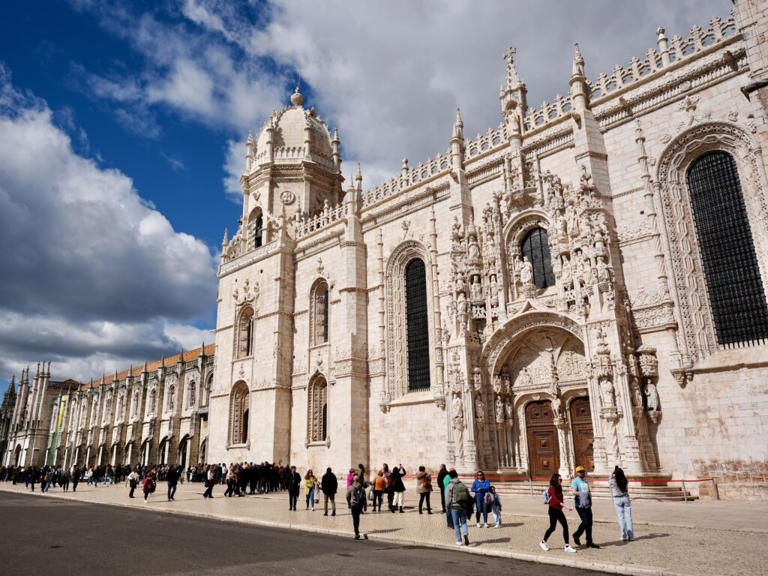
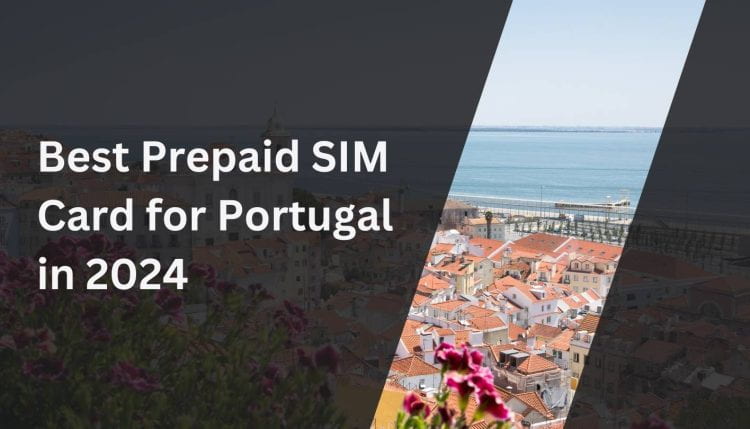
Best Prepaid SIM Card for Portugal in 2024
So you’re heading to Portugal? Nice! You’re in for a real treat. Portugal is easily one of my favorite countries in Europe. The food, the wine, the beaches…what’s not to love?
Now, one thing you’ll want to sort out before your trip is a Portugal SIM card. That way, you’ll have mobile data wherever you roam in the country.
In this mammoth guide, I’ll cover everything you need to know about getting a prepaid Portugal SIM card, including:
- The best places to buy a Portuguese SIM card
- How to register your new SIM card
- Detail pricing and data packages for all major Portugal carriers
- Tips for saving money on your Portugal SIM card
- Answers to common questions tourists have about SIM cards in Portugal
So whether you just landed in Lisbon or you’re still planning your trip, this guide has you covered. Let’s dive in!
Why You Need a Portugal SIM Card
Here are the biggest reasons to get a local prepaid SIM card in Portugal:
Use Maps and Transportation Apps
The winding, narrow streets of Lisbon or Porto are no joke to navigate. With mobile data and Google Maps, you can easily find your destination.
Public transportation like trains, trams, and buses also have helpful apps to find schedules and buy tickets.
Book Restaurants, Tours, and More On the Fly
Instead of everything pre-planned, a data plan allows you to book amazing travel experiences anytime. If the weather’s nice during your trip, search for nearby beaches and available tours on the fly.
Or if it’s unexpectedly raining out, easily make indoor dinner reservations while you take cover.
Stay Connected with Friends and Family via Text/Calls
A local Portugal SIM means you can easily meet up with any friends also traveling Europe. No need to rely solely on hotel WiFi.
Plus you can share photos from your trip or call your family back home with apps like WhatsApp, Facebook Messenger, or FaceTime Audio.
Access Portugal SIM Card Deals Not Available to Tourists
Sometimes local prepaid SIM card providers have deals just for Portuguese residents that aren’t publicly advertised to tourists.
With the help of this Portugal SIM card guide, you’ll discover how to access exclusive discounts and the best data packages available.
Where to Buy Your Portugal SIM Card
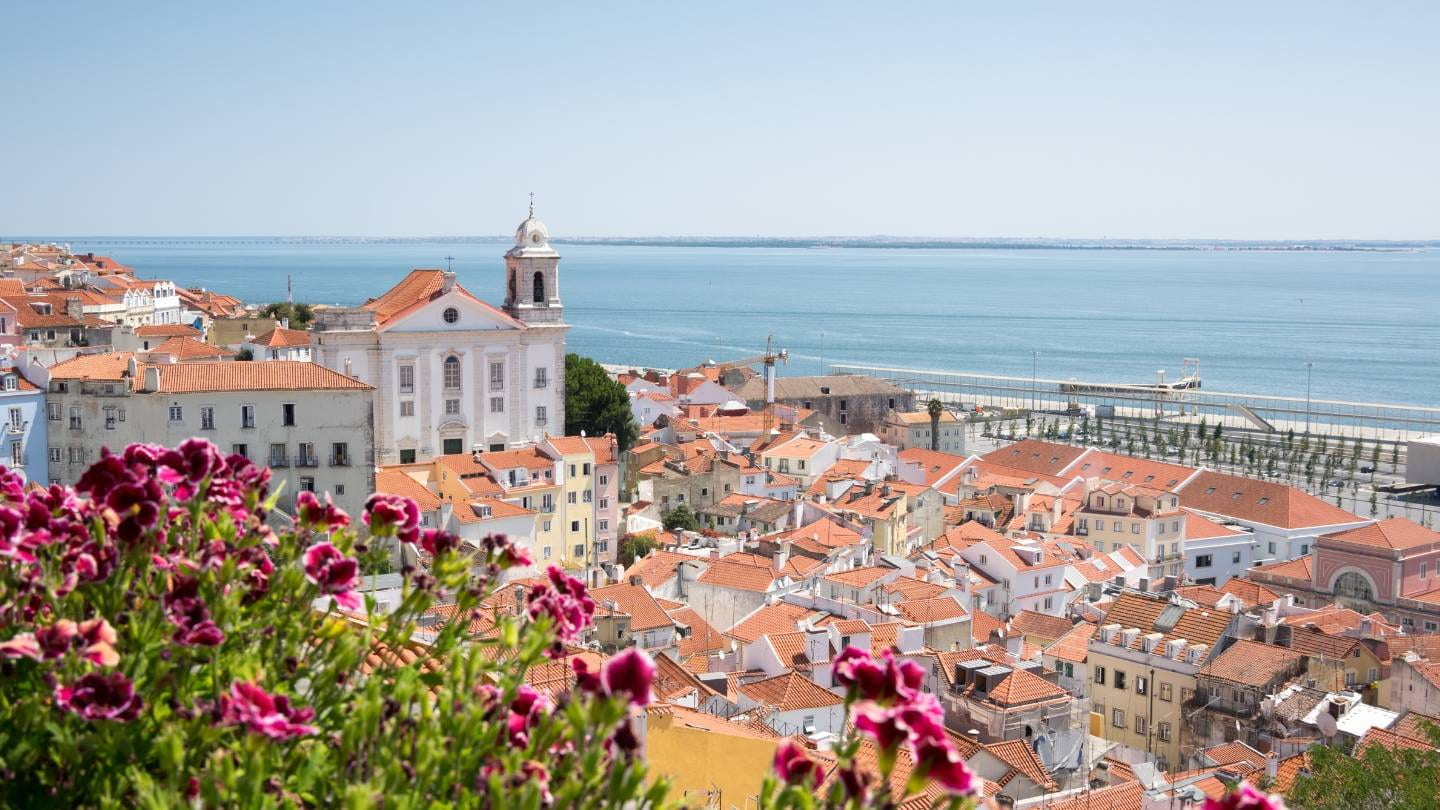
Unlike buying a SIM card in the USA, it’s super quick and easy to get a pay-as-you-go SIM in Portugal.
Here are the best places to purchase your prepaid Portuguese SIM card:
Portugal SIM Card at the Airport
After you land at airports like Lisbon Portela Airport, there are typically SIM card vending machines and shops right as you exit customs.
For example, PortugalTelecom has booths set up at arrivals where they sell SIM cards. Prices are fair and the convenience factor is nice after a long flight.
Keep in mind that smaller regional airports may not have SIM card kiosks though. So best practice is to compare airport options as you research places to get a Portuguese SIM card.
Vodafone, MEO, and NOS Retail Stores
The three major carriers in Portugal are Vodafone, MEO, and NOS. Each has retail shops located in most cities.
I recommend you locate their stores via Google Maps ahead of arriving at your destination. Then you simply walk to the nearest one based on where you are.
Retail stores are reliable, have English-speaking staff, and you can see all available SIM card promotions. The biggest downside, compared to the airport, is that it takes more time and effort on your end to get to a store.
Local Convenience Shops and Newsstands
If you’re unable to get to a main mobile carrier’s official store, another good option is smaller phone shops and newsstands.
These types of convenience stores sell prepaid SIM cards from the major Portugal providers already activated and ready to use.
They’re located everywhere in cities like Lisbon or Porto, usually recognizable thanks to cell company branding outside. Prices might have a small markup compared to the airport or official retailer, but convenience is king.
Order Online and Get Delivery to Your Hotel
If convenience and saving time is your priority, consider ordering a prepaid SIM card for Portugal online ahead of your trip.
Companies will deliver to your hotel, Airbnb or wherever you’re staying. Usually costs a bit more and takes a business day or two. But can be worth it after a long flight or road trip across Europe.
Make sure to verify delivery/arrival date so your SIM card is ready to use ASAP.
How to Register Your Portugal SIM Card
While getting your initial Portuguese SIM is fast and simple, you will need to take a couple quick steps to register it in your name:
Bring Your Passport!
The most important thing is to have your passport ready when purchasing a pay-as-you-go SIM in Portugal or signing up for a data plan.
Your passport is required by law for properly registering and activating SIM cards bought as a tourist. Thankfully the process only takes a few minutes.
Submit Your Personal Information
After selecting your SIM card, the shop staff will collect necessary info like your full name, passport number and nationality.
This verified data gets submitted along with your new cell phone number to satisfy Prepaid SIM card registration laws.
Provide a Local Address (Your Hotel)
Part of the mandatory registration includes submitting a Portugal address.
Don’t worry if you don’t have an official address being a tourist. Just share wherever you’re staying at, whether it’s a hotel or short-term rental property.
Activation is Complete!
That’s it! With passport verification, name, number and local address you’re all set. Now you can insert your fresh new nano or micro SIM card into your unlocked phone and connect to a mobile network.
Portugal SIM Card Pricing, Data & Minutes
Now let’s explore everything you need to know regarding available data bundles, talk/text bundles, SIM pricing, and hidden extras to watch out for:
Vodafone Portugal SIM Card Deals
Data Packages
- 2 GB data + 100 minutes: €5
- 5 GB data + 500 minutes: €10
- 10 GB data + 500 minutes: €15
- Unlimited data (throttled after 25 GB): €20
SIM Card Cost: €5 one-time fee
- Large data allotments and minutes bundles
- Unlimited data option available
- Wide coverage around Portugal
- Speed capped at 225 Mbps (no 5G access)
- Must use data allotment within 30 days
MEO Portugal SIM Card Plans
- 500 MB data: €5
- 2 GB data: €10
- 5 GB data: €15
- 10 GB data: €20
SIM Card Cost: Free
- Free SIM card
- Packages include some minutes
- 5G access available
- No unlimited data option
- Smaller data packages overall
NOS Portugal Prepaid SIM Details
- 1.5 GB data: €8
- 5 GB data: €12
- 15 GB data: €20
SIM Card Cost: €10 one-time fee
- Low cost SIM card fee
- Unlimited calls to NOS numbers
- 5G connectivity
- 15 GB is max data amount
As you can see, Portugal prepaid SIM pricing is very affordable with most tourist plans costing €10-20 per month. Data allotments are generous too for the low costs.
Now let’s recap the key details to remember:
- Prices listed are for 30 days of service
- Multi-month long term SIM deals can save you money
- Calling bundled only valid within Portugal
- Receiving calls/texts while traveling in Portugal is free
- Be sure to compare 5G access if that’s important
I’ll cover tips to save money with a Portugal SIM card in a moment. But those are the basics you need to know regarding prepaid SIM pricing.
Portugal SIM Card Savings Tips
If you want to maximize value from your Portuguese SIM card, here are my top 5 money-saving hacks:
1. Buy a SIM Card at the Airport to Save Time
I know I said convenience stores are everywhere. However, nothing beats the airport for combining savings with efficiency.
You’ll likely need data immediately upon landing to help navigate to your hotel. Rather than spending time researching the best value SIM, just grab one at the airport kiosk and save yourself the hassle.
2. Choose Prepaid Over Postpaid Contract Plans
Prepaid SIM cards are almost always cheaper than monthly billed contract plans. Plus they’re made for people visiting Portugal short term.
With prepaid SIMs you’re in total control. Once your allotted data or minutes runs out, you can reload yourself instead of getting slammed by overage fees.
3. Take Advantage of Retailer Sales
It never hurts to ask shops if there are any current sales or special promotions going on for SIM card rates.
Sometimes carrier stores run secret flash sales that aren’t advertised to typical tourists. See what kind of discounted Portugal SIM card deals might be available during your travel dates.
4. Buy Longer Term SIM Card Plans
If you’ll be vacationing or road tripping through Portugal for multiple weeks, consider longer duration SIM plans.
For example, a 30 day SIM card could cost €15. But a 90 day SIM might only be €20 total. Triple the length at only 25% higher cost equals serious savings.
5. Use Mobile Data Selectively
To conserve your data allowance, only use bandwidth heavy apps like YouTube, Netflix, or Spotify when connected via free public WiFi.
Also turn off background auto-updates for apps and switch your camera roll to sync only when on WiFi. Simple tricks like this stretch data limits much further.
And if you plan day trips outside Portugal, make sure to turn off roaming in your phone’s cellular settings. Otherwise accidental app usage in other countries can rapidly drain through data.
Follow those 5 tips for getting the most bang for your buck with a Portuguese prepaid SIM card while visiting.
Common Portugal SIM Card Questions
Here are answers to the most frequently asked questions I get about SIM cards to use during travel in Portugal:
Can I Get a SIM Card Without Showing Passport in Portugal?
Technically yes there are shops that don’t require ID to buy a SIM. However, keep in mind that NOT properly registering your SIM card is illegal.
Fines in Portugal for non-compliance are up to €2500! Definitely not worth trying to dodge showing your passport when purchasing your Portuguese SIM.
How Long Does a Portugal SIM Card Last?
Standard validity for most pay-as-you-go SIM cards from major carriers like Vodafone and NOS is 30 days. Of course data and minutes expire quicker depending usage.
However, you can also find longer durations like 60-day and even unlimited validity SIM (must top up every 6 months to keep it active). Ask the shop what validity timeframes are available.
Can I Use a SIM Card in Portugal and Spain?
If your travel itinerary includes visiting Spain after Portugal, search for SIM card packages that have both Spain and Portugal roaming bundled. Especially helpful for long road trips.
Otherwise basic roaming outside your registered country typically incurs expensive international data fees. Manage this by manually disabling cellular data roaming under phone settings while traveling internationally.
Are Portugal eSIM Cards Available for Tourists?
E-SIM technology allows your phone number and plan to be remotely downloaded using a QR code – no physical card required. Availability is currently limited but expanding quickly.
Vodafone Portugal was first provider with tourist eSIM in summer 2022. But don’t be surprised if MEO and NOS also offer eSIM options very soon for prepaid cellular plans.
Can I Use a SIM Card from Another European Country?
Yes that’s definitely possible. However coverage and speeds tend to be better with local SIM providers. If visiting multiple areas in Europe for longer periods, then makes sense.
Many find the simplicity of swapping SIM cards fun during extended Europe adventures. But relying on a Portugal SIM is advised for shorter trips focused in Portugal.
Wrap Up on Finding the Best Portugal SIM Card
And there you have it…everything you could possibly need to know about getting connected with a prepaid Portugal SIM card!
To recap, start your search at the Lisbon, Porto or Faro airport SIM shop. Prices are fair, data bundles are generous across carriers, and the convenience factor is clutch right after landing.
If you have extra time, scout discounts and promotions available only at official Portugal telecom retail stores. Some special deals might be unadvertised to average tourists.
And no matter what, DON’T forget your passport! While showing ID for SIM registration takes only a few minutes, getting fined up to €2,500 for non-compliance definitely dampens the vacation vibe.
With your shiny new Portuguese SIM card ready to rock, you’re all set to explore vibrant cities like Porto, relax on picturesque Algarve beaches, and feast on the amazing food. Have an incredible trip in Portugal!
Share this:
↞ Previous Post
Next Post ↠
Important: Read our blog and commenting guidelines before using the USF Blogs network.
Your last-minute guide to Monday's total solar eclipse

A total solar eclipse will cross North America on Monday , offering millions a rare opportunity to see afternoon skies temporarily darken as the moon blocks the face of the sun.
Tune into NBC News NOW as Lester Holt hosts a two-hour special at 2 p.m. ET Monday from Indianapolis Motor Speedway.
The eclipse's path fortuitously cuts across Mexico, 15 U.S. states and a small part of eastern Canada. In all other states in the continental U.S., viewers will be treated to a partial solar eclipse, with the moon appearing to take a bite out of the sun and obscuring part of its light.
Here’s everything you need to know about the rare celestial event.
What is a solar eclipse?
Solar eclipses occur when the sun, moon and Earth align. The moon passes between Earth and sun, temporarily blocking the sun’s light and casting a shadow on Earth.
A total solar eclipse is when the moon fully obscures the sun, whereas a partial solar eclipse means it blocks just a portion of the sun’s face.
Solar eclipses occur only with the new moon. Because the moon’s orbit around Earth is tilted, the three bodies don’t always line up in a way that creates an eclipse.
“Imagine if the moon’s orbit were in the plane of Earth’s orbit around the sun — if that were the case, then every new moon, you’d have a total solar eclipse and every full moon, you’d have a lunar eclipse,” Neil DeGrasse Tyson, director of the Hayden Planetarium at the American Museum of Natural History, told NBC News. “So, because things don’t always align, it lends to the rarity of the event and the specialness of the event.”
Where and when will the eclipse be visible?
This year’s eclipse will follow a slightly wider path over more populated areas of the continental U.S. than other total solar eclipses have in the recent past.
NASA estimates that 31.6 million people live within what’s known as the path of totality, where the total solar eclipse will be visible. An additional 150 million people live within 200 miles of the path, according to the agency.
The path travels through Texas, Oklahoma, Arkansas, Missouri, Illinois, Kentucky, Indiana, Ohio, Pennsylvania, New York, Vermont, New Hampshire and Maine. Tiny parts of Michigan and Tennessee will also be able to witness totality if conditions are clear.
After the eclipse crosses into Canada, it will pass over southern Ontario, Quebec, New Brunswick, Prince Edward Island and Cape Breton, at the eastern end of Nova Scotia.
Those outside the path of totality can still take part in the astronomical event by viewing a partial solar eclipse — visible throughout all 48 states of the contiguous U.S. — or a NASA livestream.
The timing, including how long totality lasts, depends on the location, but some spots will see the moon fully cover the sun for up to 4 minutes and 28 seconds.
Below is a list of timings for some cities along the path of totality, as provided by NASA . A number of other resources, including NationalEclipse.com and TimeandDate.com , can also help people plan.
- Dallas: Partial eclipse begins at 12:23 p.m. CT and totality at 1:40 p.m.
- Little Rock, Arkansas: Partial eclipse begins at 12:33 p.m. CT and totality at 1:51 p.m.
- Cleveland: Partial eclipse begins at 1:59 p.m. ET and totality at 3:13 p.m.
- Buffalo, New York: Partial eclipse begins at 2:04 p.m. ET and totality at 3:18 p.m.
- Lancaster, New Hampshire: Partial eclipse begins at 2:16 p.m. ET and totality at 3:27 p.m.

How to safely view a solar eclipse
It is never safe to gaze directly at the sun, even when it is partly or mostly covered by the moon. Special eclipse glasses or pinhole projectors are required to safely view solar eclipses and prevent eye damage. Failing to take the proper precautions can result in severe eye injury, according to NASA .
Eclipse glasses are thousands of times darker than normal sunglasses and specially made to enable wearers to look at the sun during these kinds of celestial events.
Sky-watchers should also never view any part of the sun through binoculars, telescopes or camera lenses unless they have specific solar filters attached. Eclipse glasses should not be used with these devices, as they will not provide adequate protection.
However, during the few minutes of totality, when the moon is fully blocking the sun, it is safe to look with the naked eye.

Beware of fake eclipse glasses. On legitimate pairs, the lenses should have a silver appearance on the front and be black on the inside. The manufacturer’s name and address should be clearly labeled, and they should not be torn or punctured. Check, as well, for the ISO logo and the code “IS 12312-2” printed on the inside.
If you don’t have eclipse glasses, you can make a homemade pinhole projector, which lets sunlight in through a small hole, focuses it and projects it onto a piece of paper, wall or other surface to create an image of the sun that is safe to look at.
All you need is two pieces of white cardboard or plain white paper, aluminum foil and a pin or thumbtack. Cut a 1- to 2-inch square or rectangle out of the center of a piece of white paper or cardboard. Tape aluminum foil over that cut-out shape, then use a pin or thumbtack to poke a tiny hole in the foil.
During the eclipse, place a second piece of white paper or cardboard on the ground as a screen and hold the projector with the foil facing up and your back to the sun. Adjusting how far you hold the projector from the second piece of paper will alter the size of the image on the makeshift screen.
What to look for while viewing the total solar eclipse
For people along the path of totality, there are some fun milestones to keep track of as the total solar eclipse unfolds.
As the eclipse progresses and the sun gets thinner in the sky, it will start to get eerily dark, according to Tyson.

When the last beams of sunlight are about to become obscured, look out for the “diamond ring effect”: The sun’s atmosphere will appear as an illuminated halo, and the last light still visible will look like the diamond of a giant ring.
As the sunlight decreases even further, an effect known as Baily’s beads will be created by the moon’s rugged terrain. Tiny “beads” of light will be visible for only a few seconds around the dark moon, as the last bits of sunlight peer through the moon’s mountains and valleys.
When the moon is fully blocking the sun, it is safe to remove eclipse glasses and look at the total solar eclipse with the naked eye.

Some lucky sky-watchers may even catch a glimpse of a comet .
Comet 12P/Pons-Brooks — nicknamed the “ devil comet ” because an eruption last year left it with two distinct trails of gas and ice in the shape of devil horns — is currently visible from the Northern Hemisphere as it swings through the inner solar system.
The comet can be seen in the early evenings by gazing toward the west-northwest horizon. During the eclipse, when skies darken during totality, it may be possible to see the comet near Jupiter, but its visibility will depend on whether it’s in the middle of an outburst and thus brighter than normal.
Most likely, all eyes will be on the alignment of the moon and sun.
“Most people won’t even notice,” Tyson said. “But if you know to look, it’s there.”
When is the next solar eclipse?
The next total solar eclipse will be in 2026, but it will mostly pass over the Arctic Ocean, with some visibility in Greenland, Iceland, Portugal and northern Spain. In 2027, a total solar eclipse will be visible in Spain and a swath of northern Africa.
The next total solar eclipse visible from North America will be in 2033, but only over Alaska. Then in 2044, a total solar eclipse will cross Montana, North Dakota, South Dakota, parts of Canada and Greenland.
The next total solar eclipse to cross the continental U.S. coast-to-coast in will occur in 2045. The path of totality for that eclipse will cut through California, Nevada, Utah, Colorado, New Mexico, Oklahoma, Kansas, Texas, Arkansas, Missouri, Mississippi, Louisiana, Alabama, Georgia and Florida.
Denise Chow is a reporter for NBC News Science focused on general science and climate change.
Lucas Thompson is a content producer for the NBC News Climate Unit.

IMAGES
VIDEO
COMMENTS
20. Make sure you try Vinho Verde. Moving onto Portugal tips for food and drink - AKA the most delicious and valuable section. My first recommendation is to try Vinho Verde or green wine. I know it sounds weird, but the 'green' part of the wine has less to do with the wine's colour, and more with its age.
Top 20 Portugal travel tips. When and where to go 1. Avoid July and August. Due to Portugal's mild climate and proximity to the ocean, the summer vacation season is by far the most popular among travellers. You can clearly witness this in July and August, especially in Lisbon and in the Algarve, as the city centres get packed to the point ...
Portugal is generally a safe country to visit with a low overall crime rate - violent crime is extremely rare. Pickpocketing and bag-snatching are the main concerns to keep in mind, especially when traveling on the trams and metro in Lisbon or Porto. Avoid moving around during the crowded peak times, and don't zone out on your phone.
12. If you exchange money before travelling to Portugal, try to avoid bringing large bills, i.e. bigger than 50 euros. If your currency exchange provider has given you a stack of 100, 200 or worse, 500 euro notes, take them into a local bank when you arrive to get a stash of smaller notes.
AC isn't as common in Portugal as it is in other parts of the world, like North America and Asia. This means that if you rent an Airbnb or stay in a hotel, you should check that it has AC if this is a priority for you. Summer temperatures can get close to 40°C (around 104°F), particularly in the south of the country.
Public transportation - Larger cities like Porto and Lisbon have comprehensive public transit, including trains, trams, and buses. Tickets generally cost 1.20-1.50 EUR. Train - Portugal has a great rail system. Tickets are affordable, with a ride from Porto to Lisbon costing around 25 EUR.
Avoid the crowds and get more for your euros. The information in this article is taken from The Rough Guide to Portugal, your travel guide for Portugal. 1. Think about visiting Portugal off-season. 2. Get off the beaten track in Portugal. 3. Portugal travel tips for eating and drinking like locals. 4.
Portugal is part of the Schengen Zone, and therefore, anyone who needs a Schengen Visa to visit the area will need one to visit Portugal. In the future, the ETIAS system-essentially an e-visa procured by filling out paperwork online before traveling-will come into effect for the Schengen Area. After multiple delays, is currently slated to begin sometime in 2025.
PORTUGAL TRAVEL GUIDE Traveling to Porto. Further north in Portugal is Porto, Portugal's second-largest city.Famous for its wine and codfish, the city has much more to offer.. Driving from Lisbon to Porto makes an amazing 10 days cultural road trip itinerary with many interesting stops along the way.. The Ribeira is a major attraction in the city. There you can see the typical old Portugal ...
When you arrive on your Portugal trip by aeroplane, train, or cruise, you may be wondering the best way to safely get to your hotel, especially if you're travelling alone. Portugal is generally a safe country to visit and travel around via taxi, private transfer, and rideshare. While taxis are perfectly fine and generally safe, I prefer using ...
Day 3: Lisbon (sleep in Lisbon) Day 4: Lisbon, or side-trip to Sintra by train (sleep in Lisbon) Day 5: Morning in Lisbon; in the afternoon, pick up car and drive 3 hours to the Algarve (sleep in Salema) Day 6: Beach day in Salema (sleep in Salema) Day 7: Side trip to Cape Sagres and more beach time (sleep in Salema) Day 8: Drive 30 minutes to ...
A Travel Guide to Portugal with ️ Travel Itineraries, ️ Top places to visit in 2024, ️ Best beaches, and more! ... staying informed about safety measures and travel tips is always recommended. Natural disasters: Portugal experiences a relatively low occurrence of natural disasters. However, while rare, earthquakes and forest fires can ...
Last Updated on 12th April 2023 by Sophie Nadeau. Portugal is a stunning country in South West Europe that's famed for its breathtaking beaches, colourful cities, and its fantastic foodie scene (including the oh-so-delicious pastel de nata and port wine).Here are some of the best Portugal travel tips you need to know about before your next visit!
Planning a trip to Portugal and don't know where to start? I have my ultimate 10 days in Portugal itinerary that I've put together. After my fourth trip to Portugal, I've absolutely fallen in love with this country. I've take the very best of all of my trips, all my travel tips for Portugal, and have put them in a single place. There is ...
Money tips while traveling in Portugal. 3. Opt for cash in most cases. One of our top travel tips is to be sure you have your money situation squared away—and when it comes to making purchases while visiting Portugal, cash is king. "Portugal is not as credit card friendly as other places, so make sure to bring an ATM card and withdraw euros ...
Take a look at our list of travel tips to Portugal to make the most of your Portugal vacation! 14 Top Travel Tips To Portugal. These 14 best travel tips for Portugal will come in quite handy on your next EuroTrip. Take a look and do take notes for planning an impeccable vacation with your loved ones. 1. Travel out of peak season
Best Time To Visit. The most idyllic time to visit Portugal is in either the spring (March to June) or fall (September to mid-October) when there are fewer crowds, prices are lower, and the temperatures are warm. Fall is also a great time if you're looking to experience some of Portugal's famous wines. The summer months are considered to be ...
Check out the best day trips from Lisbon, 11 Best Lisbon Hotels for Families Worth Booking, 11 Things to Do in Porto, Portugal for First-Time Visitors!, 15 Things to do in Lisbon with Toddlers, and Europe travel tips!
3. Health And COVID. I would recommend a few things when it comes to medical issues that might arise in Portugal. First, make sure you have plenty of your necessary medications before you travel. Although there are plenty of pharmacies even in smaller towns, refilling a prescription is a bit of a hassle.
Explore the best of Portugal with insider tips! Find hidden gems & must-see spots to create your perfect trip. Read more for exclusive travel advice! ... Travel Tips for Visiting Portugal. Being in Portugal is dining at the banquet of cultural hedonism. A realm where ancient cobbled paths make way to ultramodern cities, where rock-hard cliffs ...
Fast Facts about Portugal. Power voltage is 230V at 50 Hz. Portugal's currency is the euro (€) and 1 euro is equal to 1.13 USD. Traveling by bus is considered the best way to get around Portugal. You do not need a tourist visa as long as your visit is under 90 days.
After spending two weeks exploring Portugal with my family pre-COVID, I wholeheartedly recommend the country as a great destination for kids when the time comes. But even the best places have pitfalls that come with the highlights, so here is what I encountered while visiting Portugal with kids in tow. Related: The best credit cards for family ...
Pena Palace, Sintra, Cabo da Roca, & Cascais Daytrip. 4.5 (8100) Looking for a travel guide for Lisbon, Portugal? Check out these tips to help you plan your first trip to Lisbon. There has never been a better time to visit Lisbon, Portugal and planning to travel to Lisbon is half the fun.
Lisbon, the capital city of Portugal, is one of the best places on Earth. This vibrant, colorful destination — a bit reminiscent of San Francisco in its better days — has so much to offer ...
Portugal Travel Tips: Skip the line, and see the best of Portugal Portugal has come on the scene as a premier travel destination, consistently breaking records in terms of tourism year after year.
960 likes, 14 comments - portugal.exploresApril 4, 2024 on : "This viewpoint has the best sunset in Portugal! Tag someone you wish to travel explore Portugal with soon! ️ @dnzh..." Portugal 🇵🇹 Travel | Hotels | Food | Tips | This viewpoint has the best sunset in Portugal! 🫶 Tag someone you wish to travel explore Portugal with ...
I'll cover tips to save money with a Portugal SIM card in a moment. But those are the basics you need to know regarding prepaid SIM pricing. Portugal SIM Card Savings Tips. If you want to maximize value from your Portuguese SIM card, here are my top 5 money-saving hacks: 1. Buy a SIM Card at the Airport to Save Time
The eclipse's path fortuitously cuts across Mexico, 15 U.S. states and a small part of eastern Canada. In all other states in the continental U.S., viewers will be treated to a partial solar ...